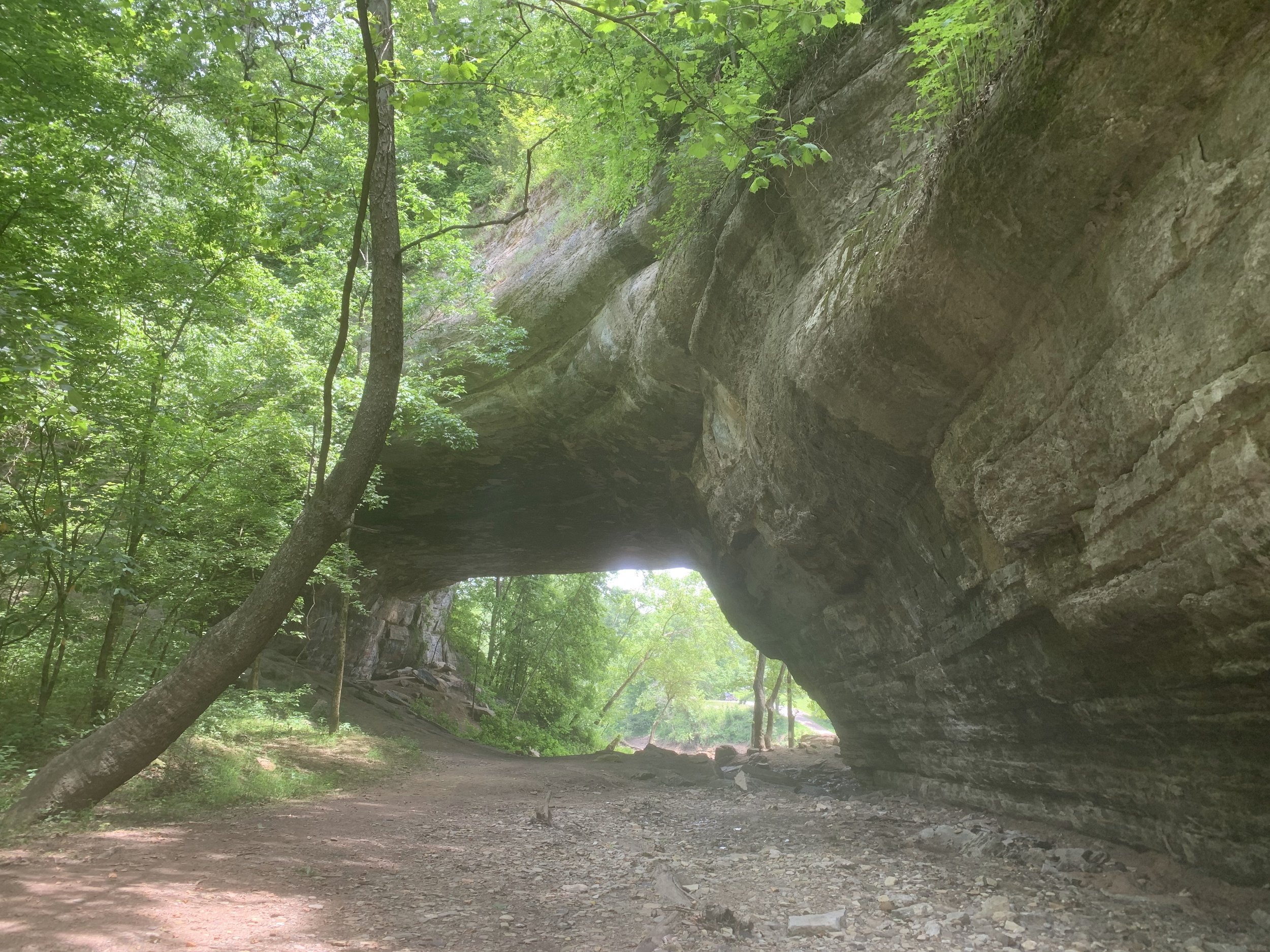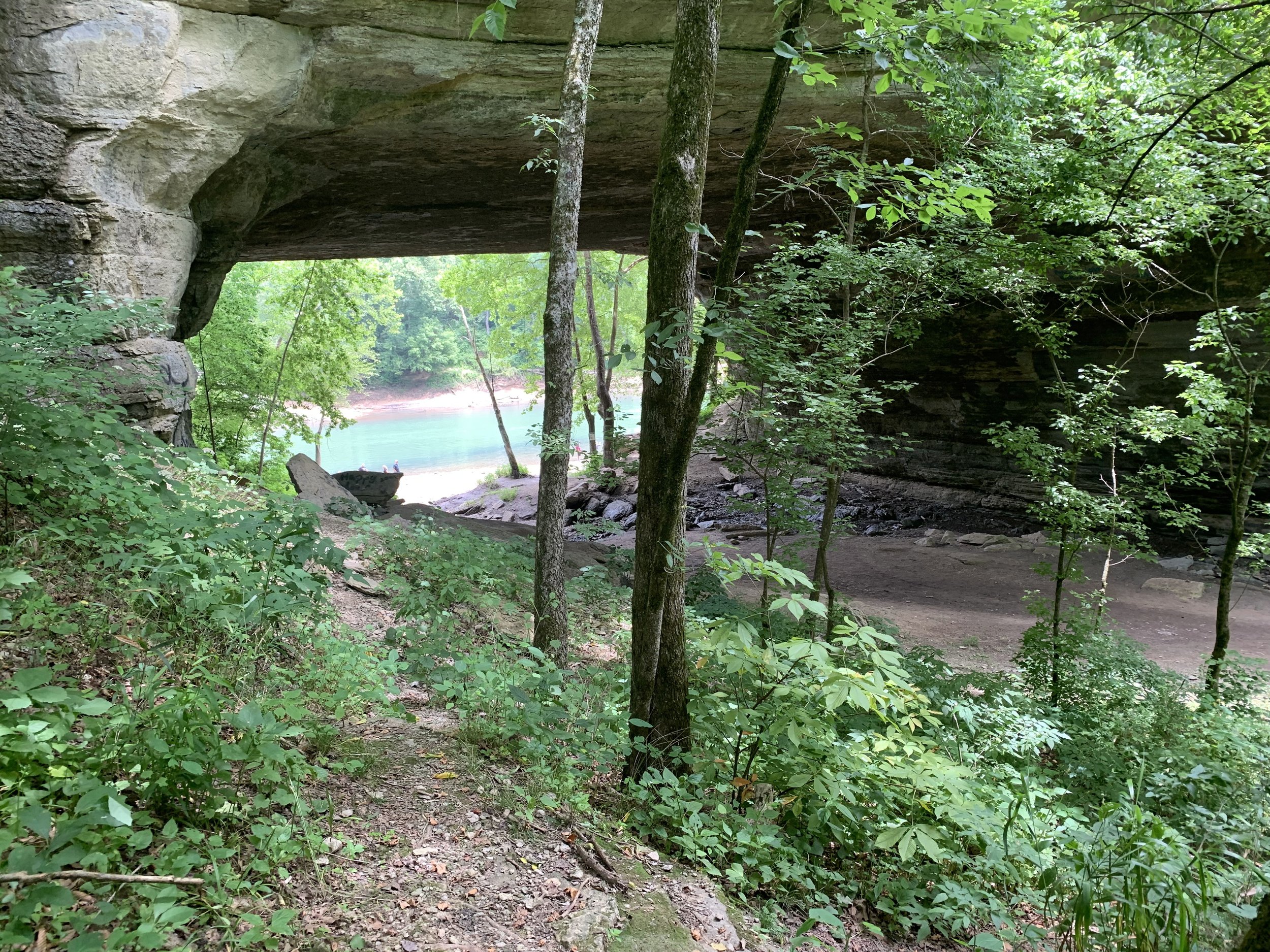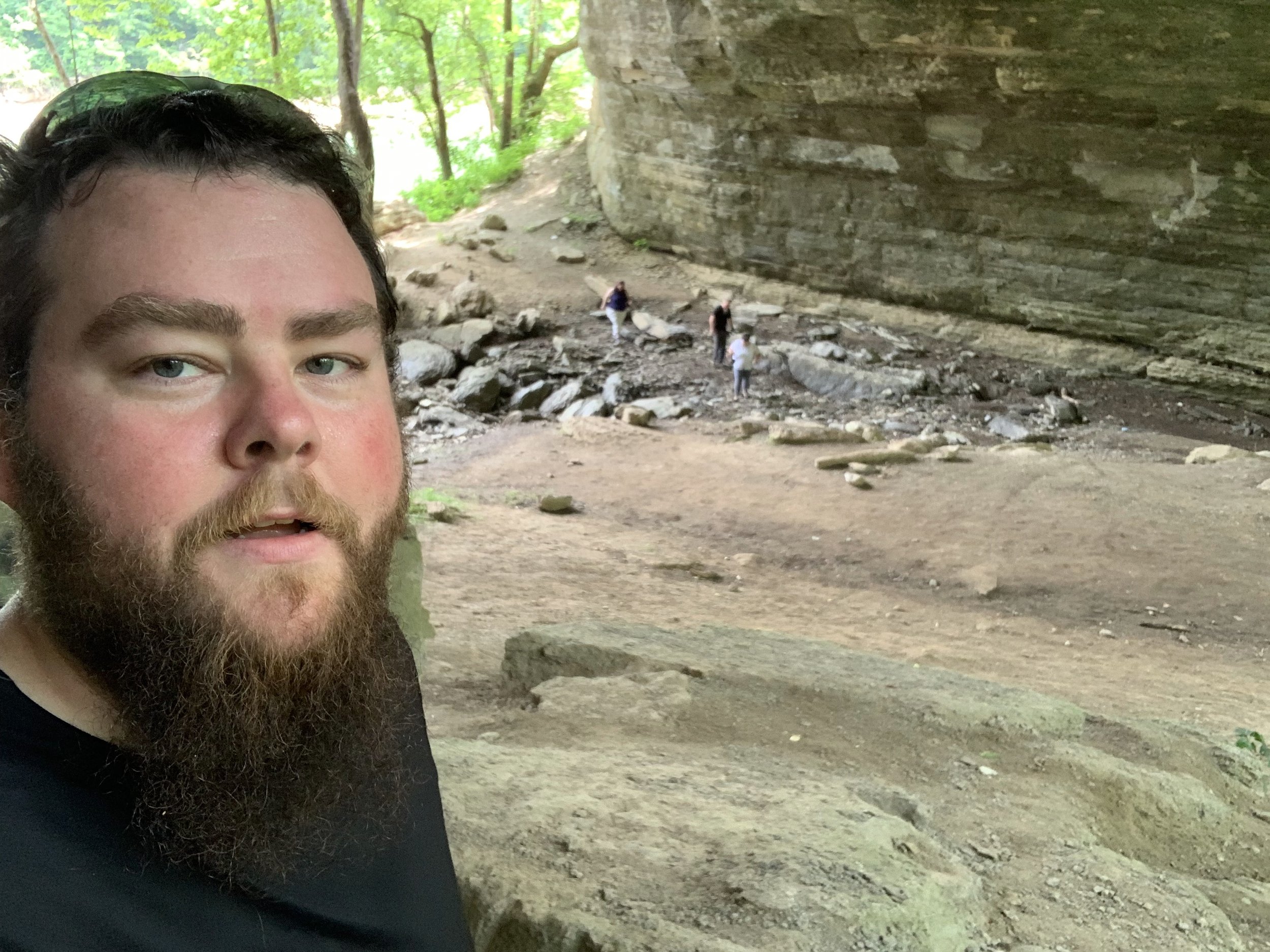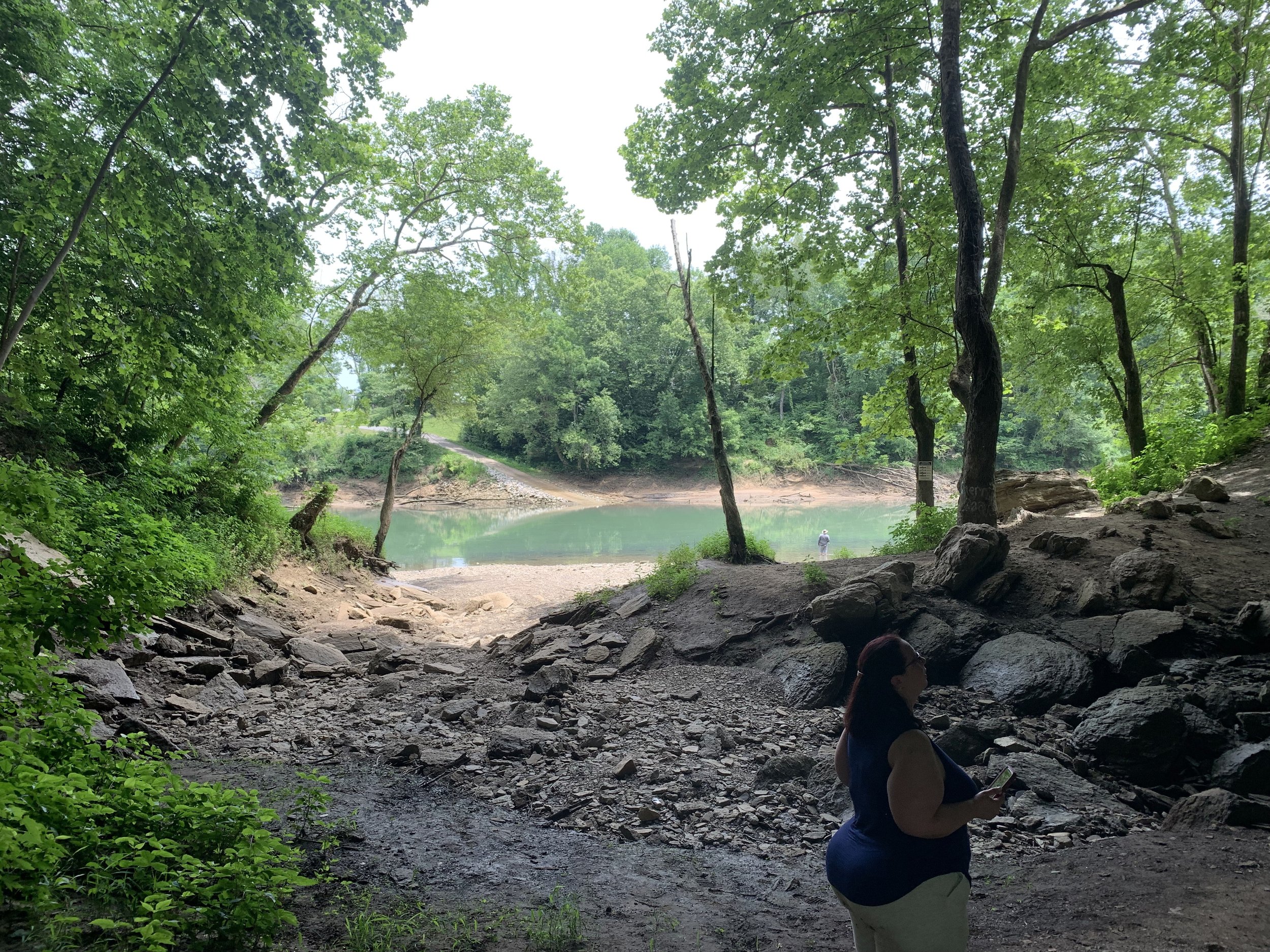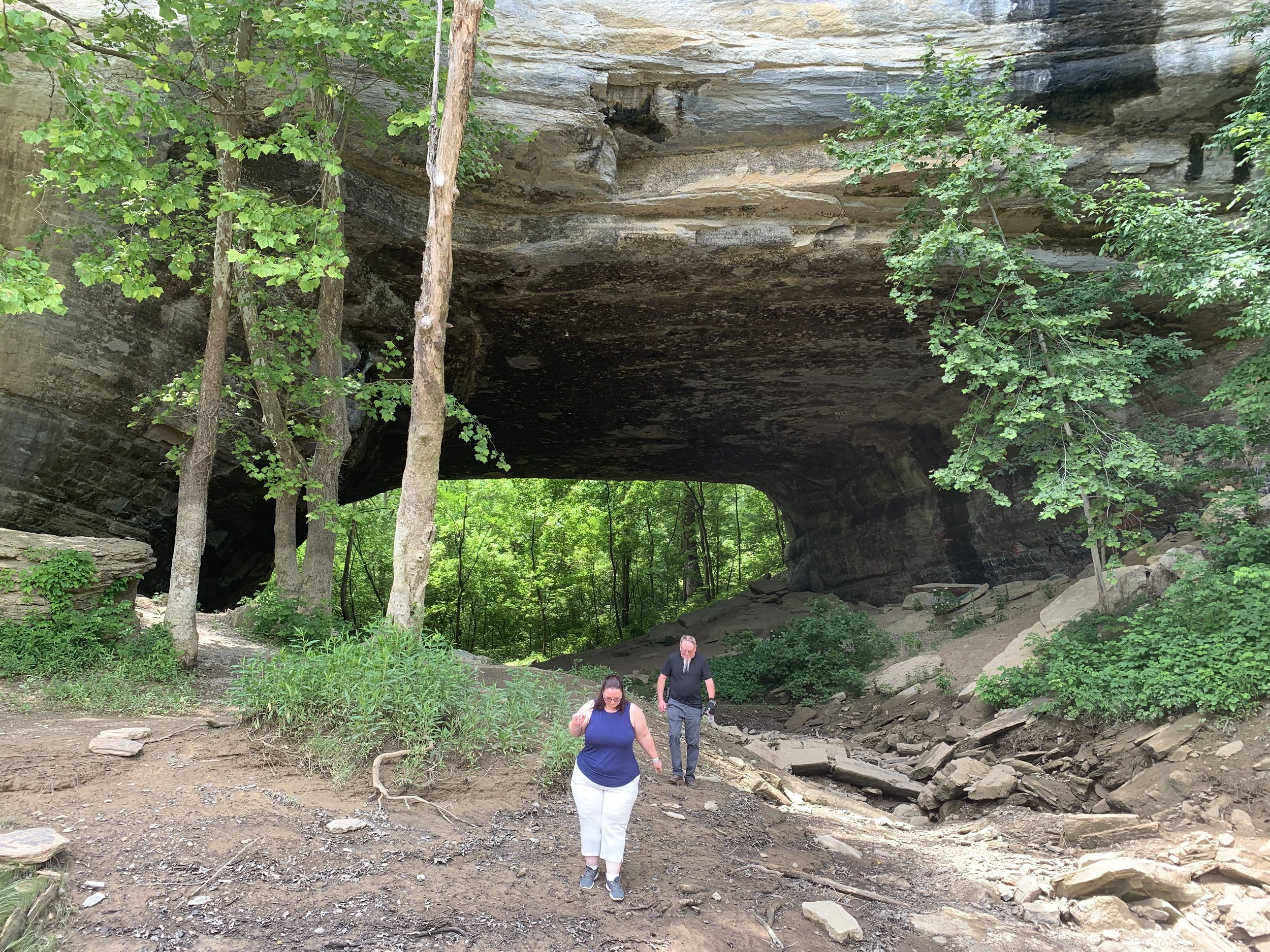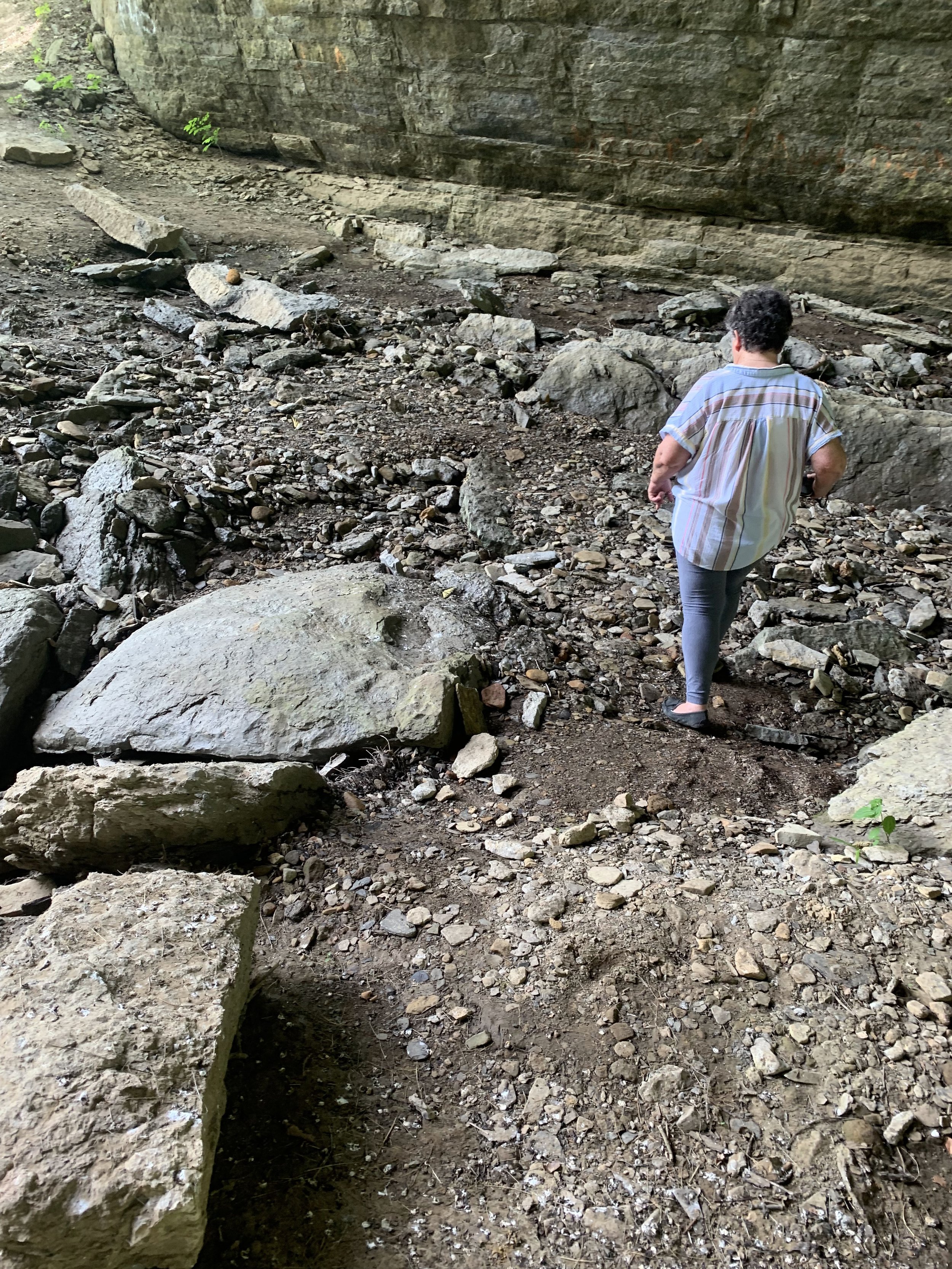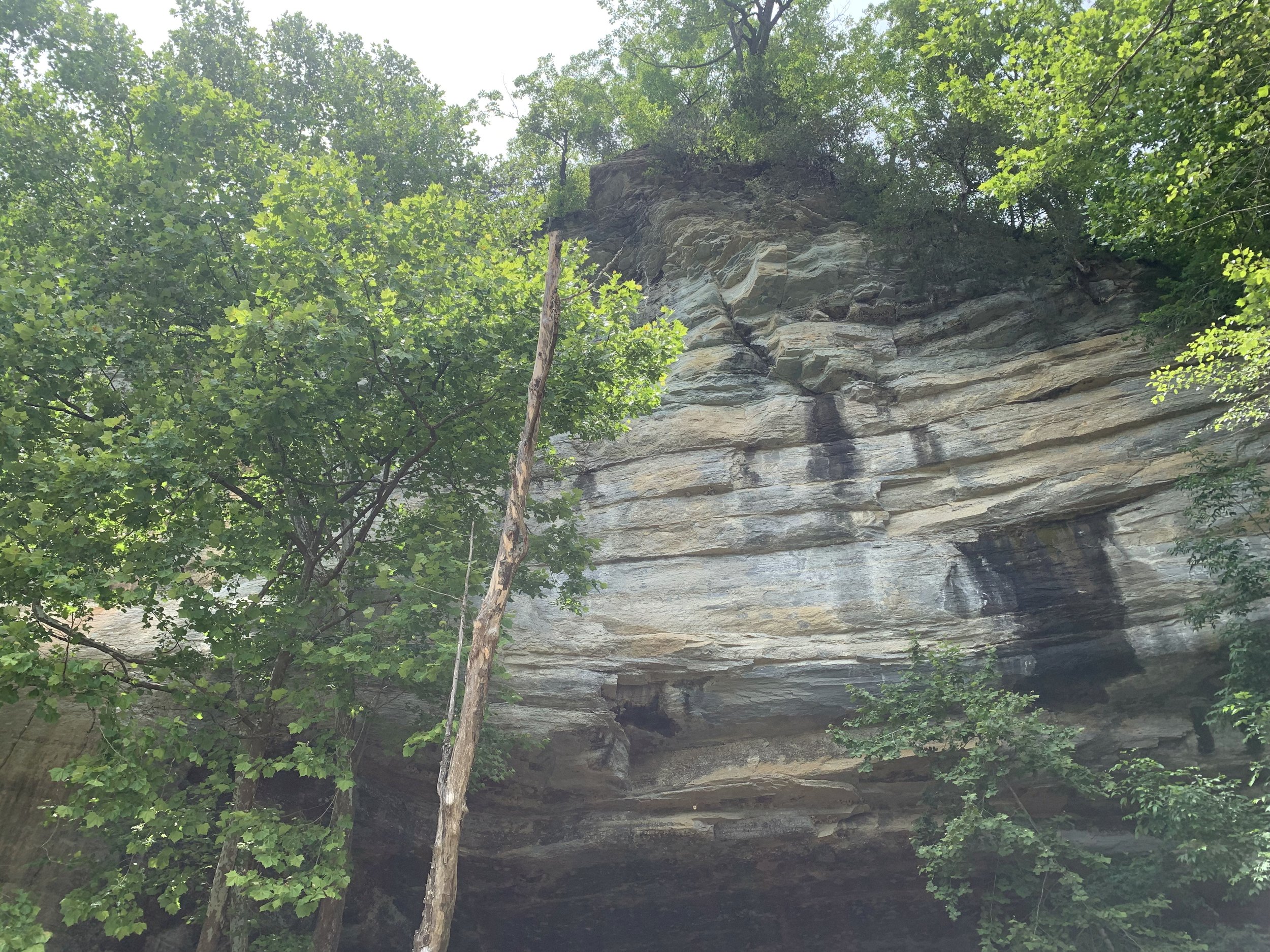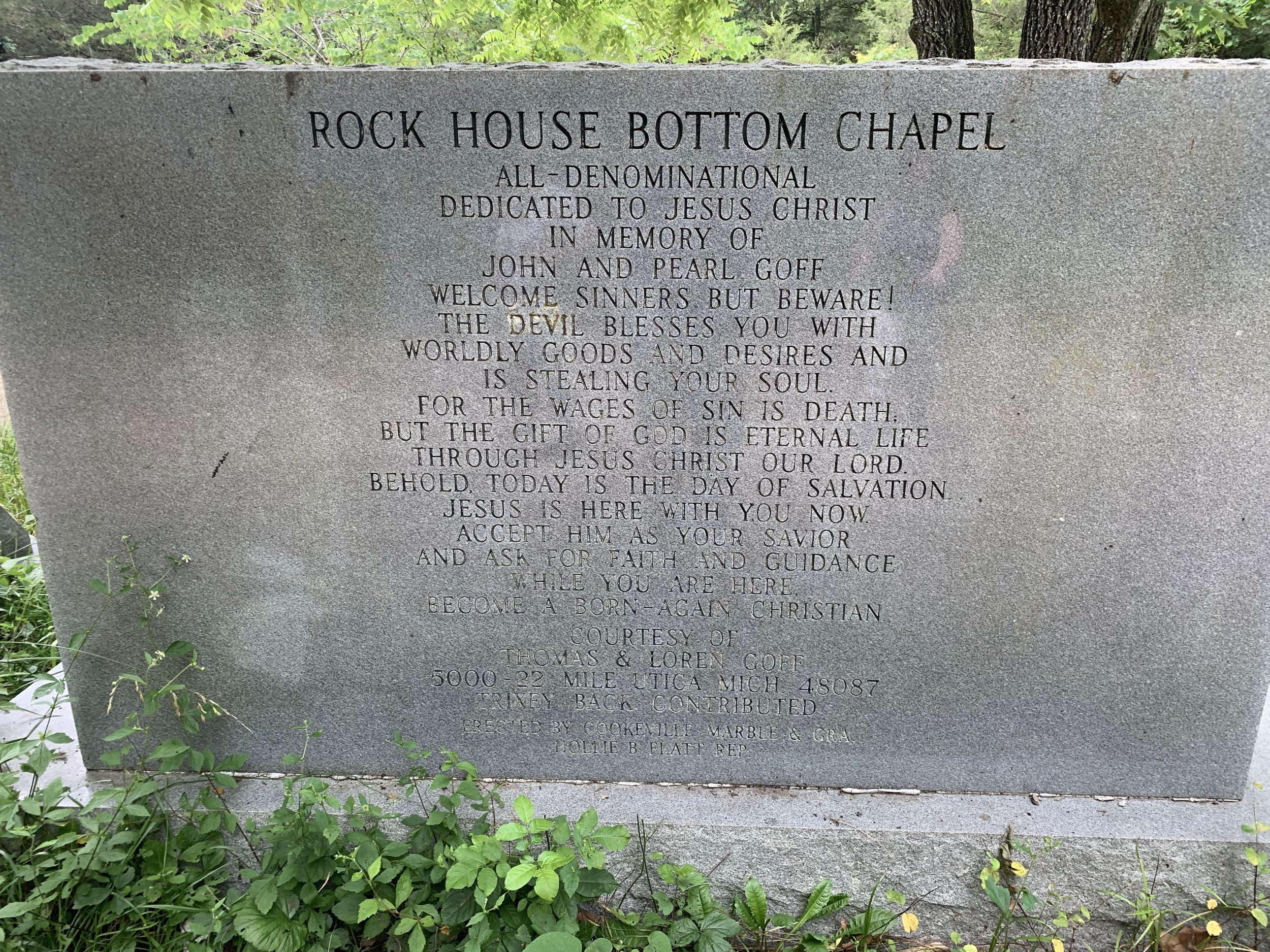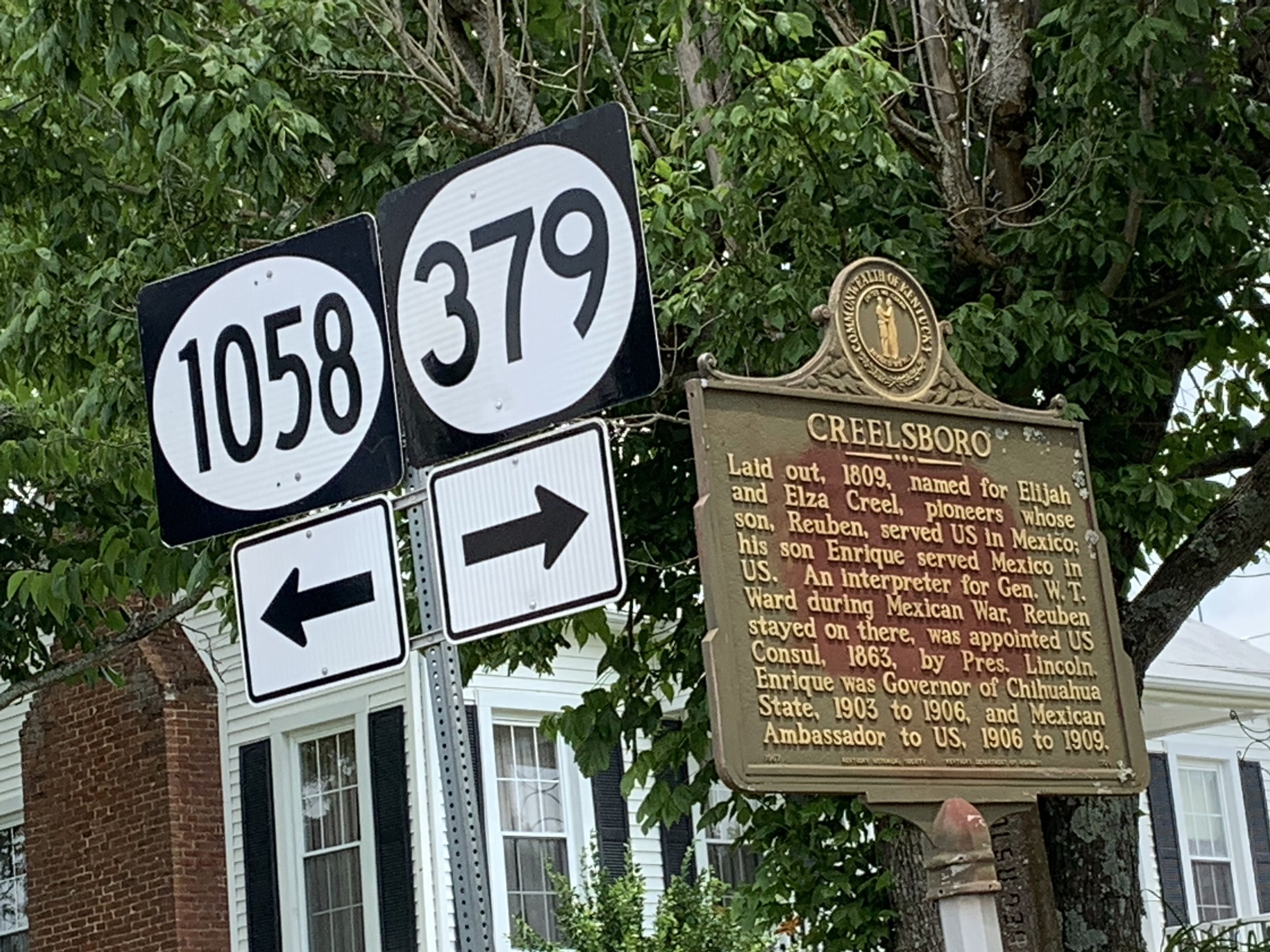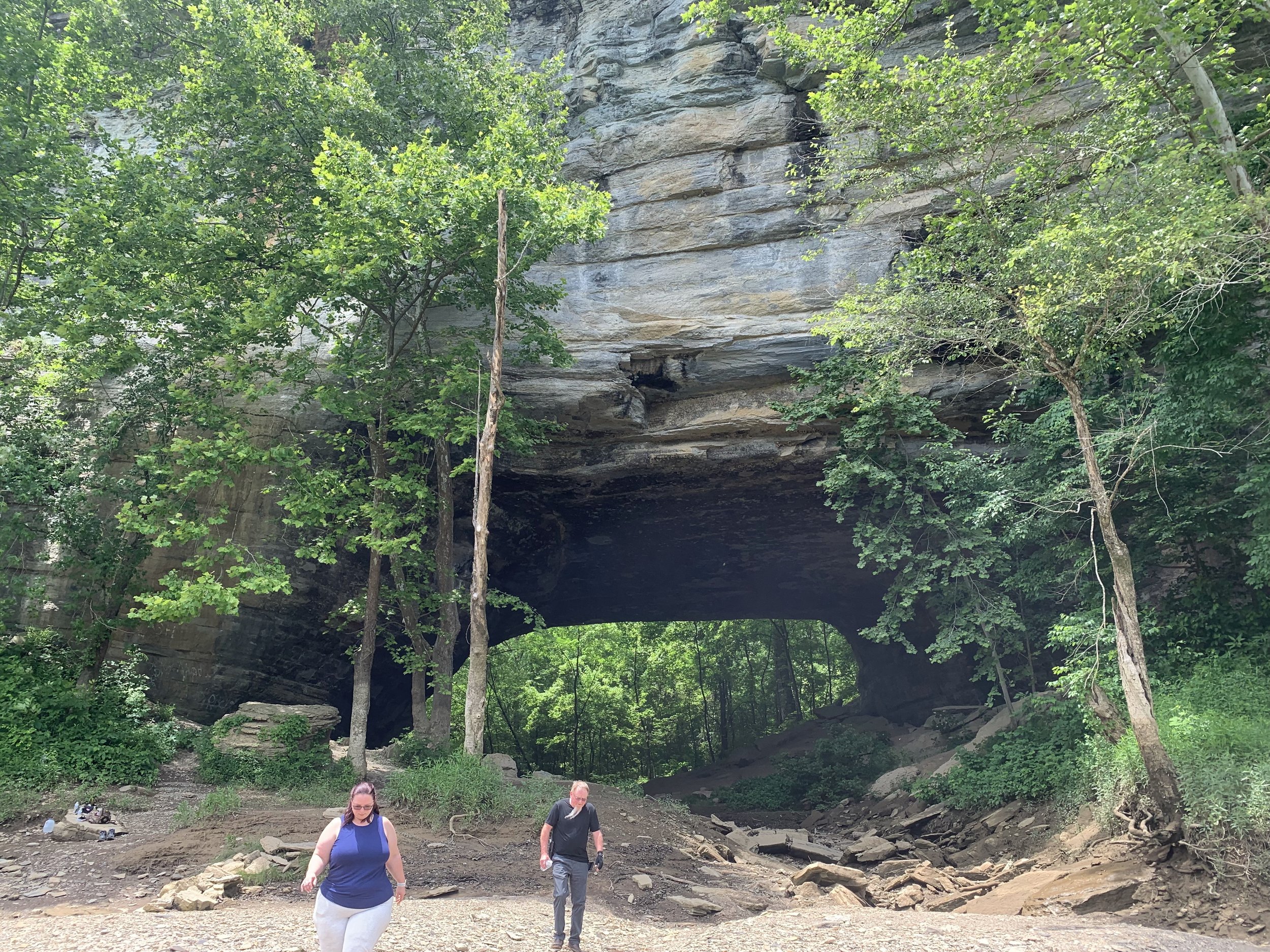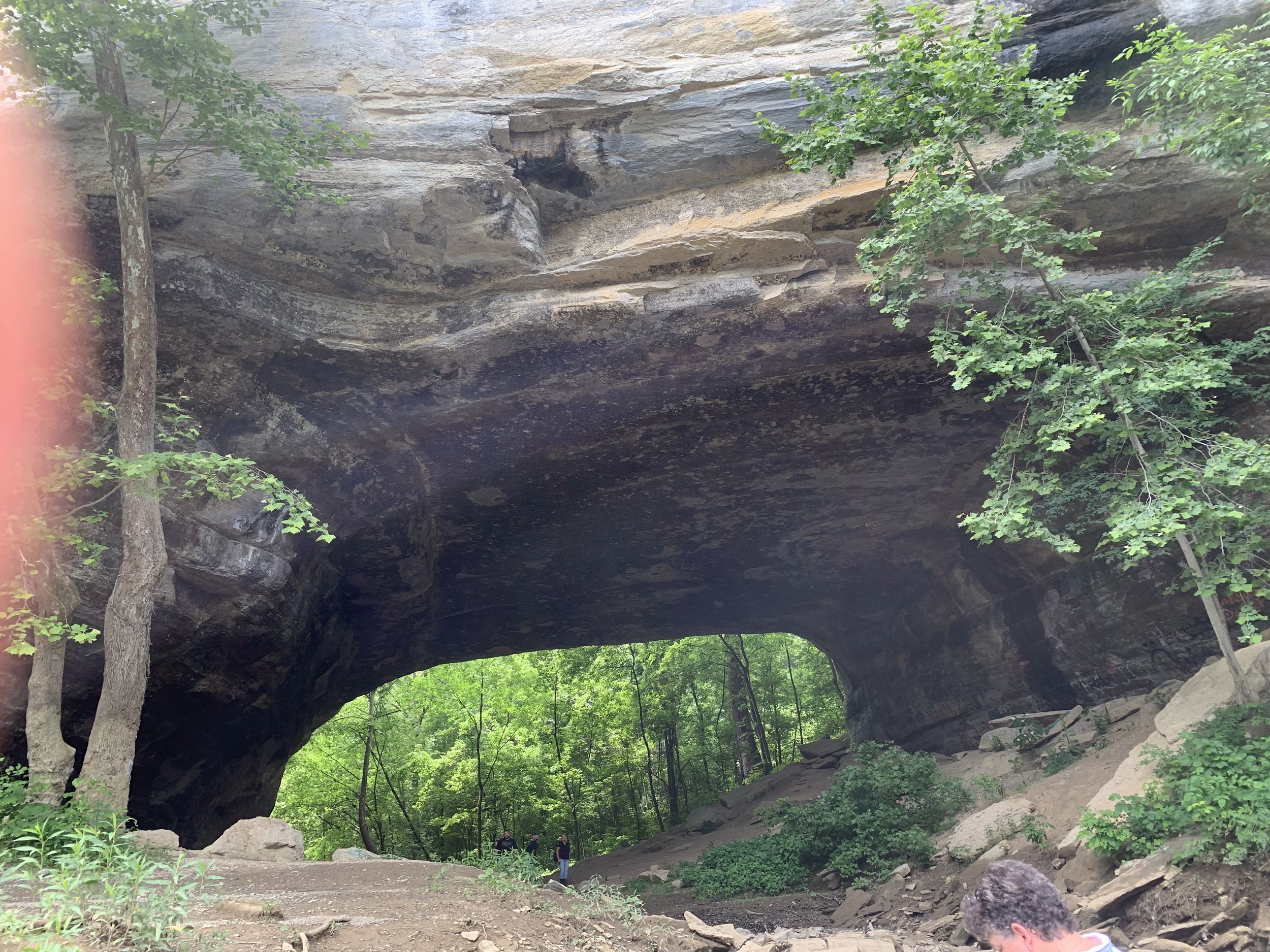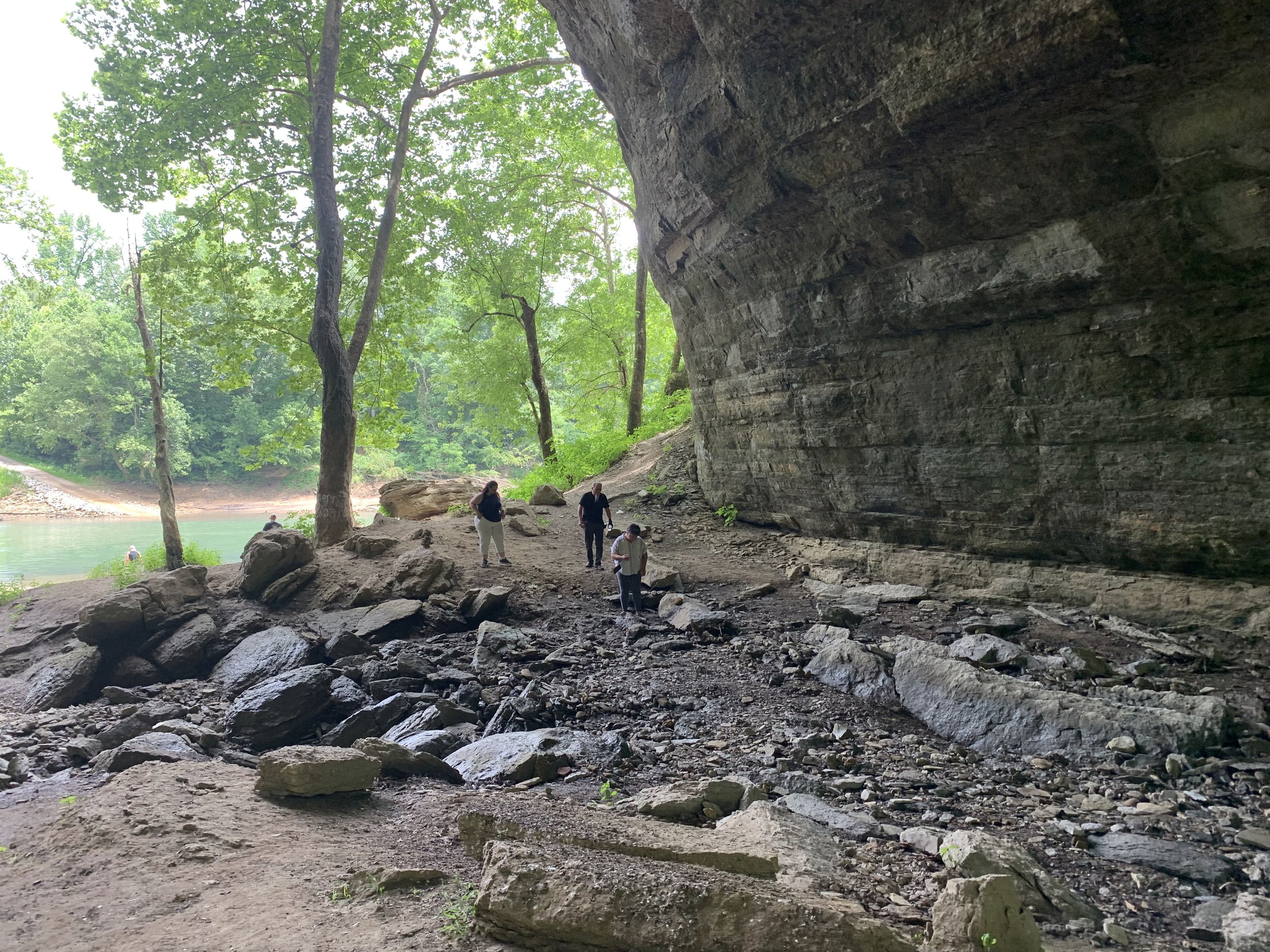The Rockhouse (Creelsboro Natural Arch)
At the intersection of state routes 379 and 1058 in Russell County Kentucky sits the sleepy remains of the community of Creelsboro. Formed in 1809, it was once the busiest river port between Nashville Tennessee and Burnside Kentucky. The development of the state highway system in the 1930’s made river travel irrelevant to commerce, and the town quickly dried up as a result. Today it consists of a small country store, a few houses, and some grand abandoned buildings that stand as a testament to the town’s former glory.
The town itself is a neat little slice of history, but 5 miles further down route 379 is a unique natural wonder that is well worth the drive to this “off the beaten path” destination. The Creelsboro Natural Arch, or “Rockhouse” as locals call it, is a truly massive natural stone arch that cuts through a ridgeline and opens up onto the shores of the Cumberland River.
Finding this one can be a bit of a challenge. If you follow the map coordinates I’ve provided, just watch the road to your left as you near the destination and you’ll see a small gravel off to pull off on. You’ll travel down hill a bit, and eventually come to a decent sized parking area, with a large stone dedicated to a church that once set in the area. From there it’s just a short hike, and a brief scramble into a creek bed, and you’ll find yourself staring right into the arch.
The scale of this thing is simply breathtaking. If you’re familiar with other “natural arch” attractions like Natural Bridge, or the many found in the Red River Gorge, the Rockhouse is on a completely different level. It feels more like something a multilane highway should be running through. It’s also DEEP. Rather than walking under a natural bridge, it feels like making your way through a tunnel.
If you’re feeling adventurous you can walk to the far side of the tunnel entrance (without going through it), and there is a small but steep path to the top. Supposedly native Americans used that upper area as a burial ground. Walking through the tunnel you’ll naturally want to look up and take in the full scale of the arch’s grandeur, but be careful. A species of small bird makes its home in small crevices in the roof, and in certain areas there’s almost a constant rain of bird droppings. There is a fair bit of ground inside the tunnel to cover, with large boulders to scramble up, and several excellent vantage points.
Emerging from the other side of the arch you’ll find yourself standing on the banks of the Cumberland river. You’ll now have access to a thin strand of shoreline that runs quite ways along the ridge, and during my visit there were several fishermen there taking advantage of this uniquely gorgeous fishing hole.
The Creelsboro Rockhouse is a textbook example of an “off the beaten path” attraction. If you enjoy the outdoors, or especially fishing, it is definitely worth the trip by itself though. If you’re not quite sold on the arch alone though, it is very close to the massive Wolfcreek Dam, which holds back Lake Cumberland. It’s also only about 40 miles from the Kentucky/Tennessee border, and could easily be paired with a number of other attractions to make a great little day trip.
Want to Experience This Adventure for Yourself?:
https://goo.gl/maps/6QKd9Rb9JDYFj4mQ9
Buchenwald Concentration Camp Uniform
The Museum of the Airforce in Dayton Ohio is home to some of the the coolest, and most historically significant airplanes in the world. For today’s adventure though we’ll look at one of it’s rarest artifacts, from one of the darkest moments in human history. Fair warning to my readers, this one is not going to be a fun read. As a lover of history though, I am a firm believer that if we don’t learn from the past we are doomed to repeat it. I don’t want to make this political, but we are living in a time where some people seem very eager to help us forget about certain ugly parts of our past. It is with that in mind, that I’m choosing to share this.
The artifact of our focus today is a simple black & grey stripped coat. It features on it’s left-breast a patch bearing a serial number. It is instantly recognizable as a prison uniform, but it’s true nature is so much darker.
Moritz Bomstein was born in Poland in 1904. After the Nazi’s rise to power he and his family were relocated to the Piotrkow Ghetto. Shortly after his wife and daughters were sent to a Treblinka (a Nazi death camp) and were never heard from again. Moritz and his son Jack were sent to Czestochowa and then the Buchenwald Concentration Camp. It was here that Moritz was issued and wore this uniform.
Towards the end of the war they were moved to the Dachau concentration camp, and were being transported by train to yet another camp (and likely their deaths) when it was stopped and liberated by American soldiers.
After 5 years in a “Displaced Persons” camp Moritz and young Jack immigrated to Cincinnati. Moritz would pass in 1954 at age 49 of a heart attack. After his death Jack, who had moved to Dayton, donated this most unusual artifact to the museum in honor of his father, and so that the horrors his family endured would never be forgotten.
I’m not gonna lie, this “adventure” is a hard one to process. Standing in front of this simple garment one cannot help but be overwhelmed by the enormity of human suffering that was the holocaust. The Nazi’s carried out a systematic slaughter of human beings with an industrial efficiency that is simply unthinkable. Over 6 million human beings were murdered simply due to their ethnic/religious background.
If you get the chance to see this one in person, it’s not an exaggeration to say that it’s a life changing experience. Even just looking at the picture as I write this article, I feel the crushing weight of that pain and suffering. I ask that you spend a few minutes here today just looking at this garment, and reflect on what exactly it represents. In a time filled with so much anger and strife, we can all use a reminder of just how far hating your fellow man can go.
Want to Experience This Adventure for Yourself?:
The Museum of the Airforce
1100 Spaatz St, Dayton, OH 45431
Daniel Boone’s Final Kentucky Home
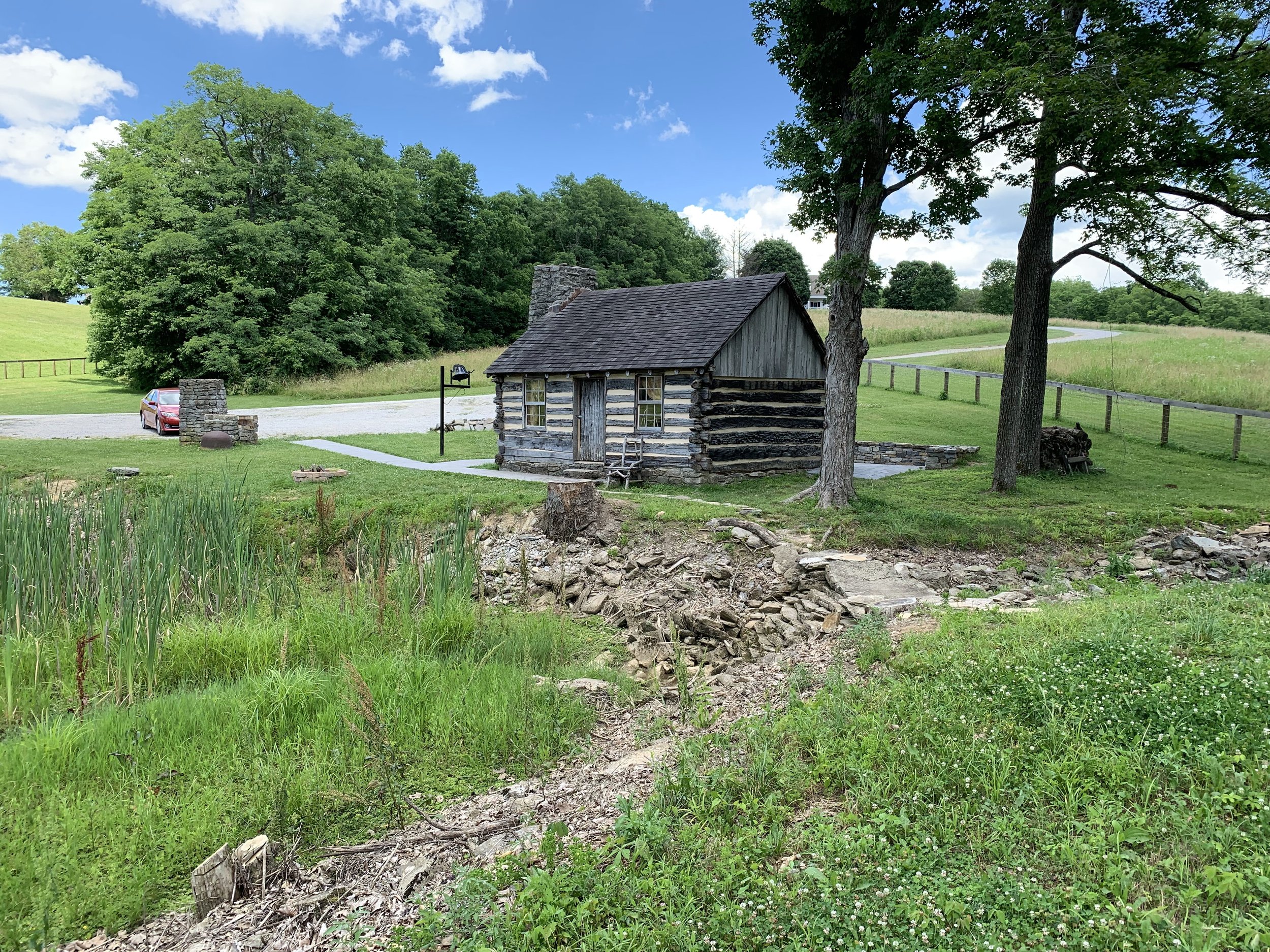
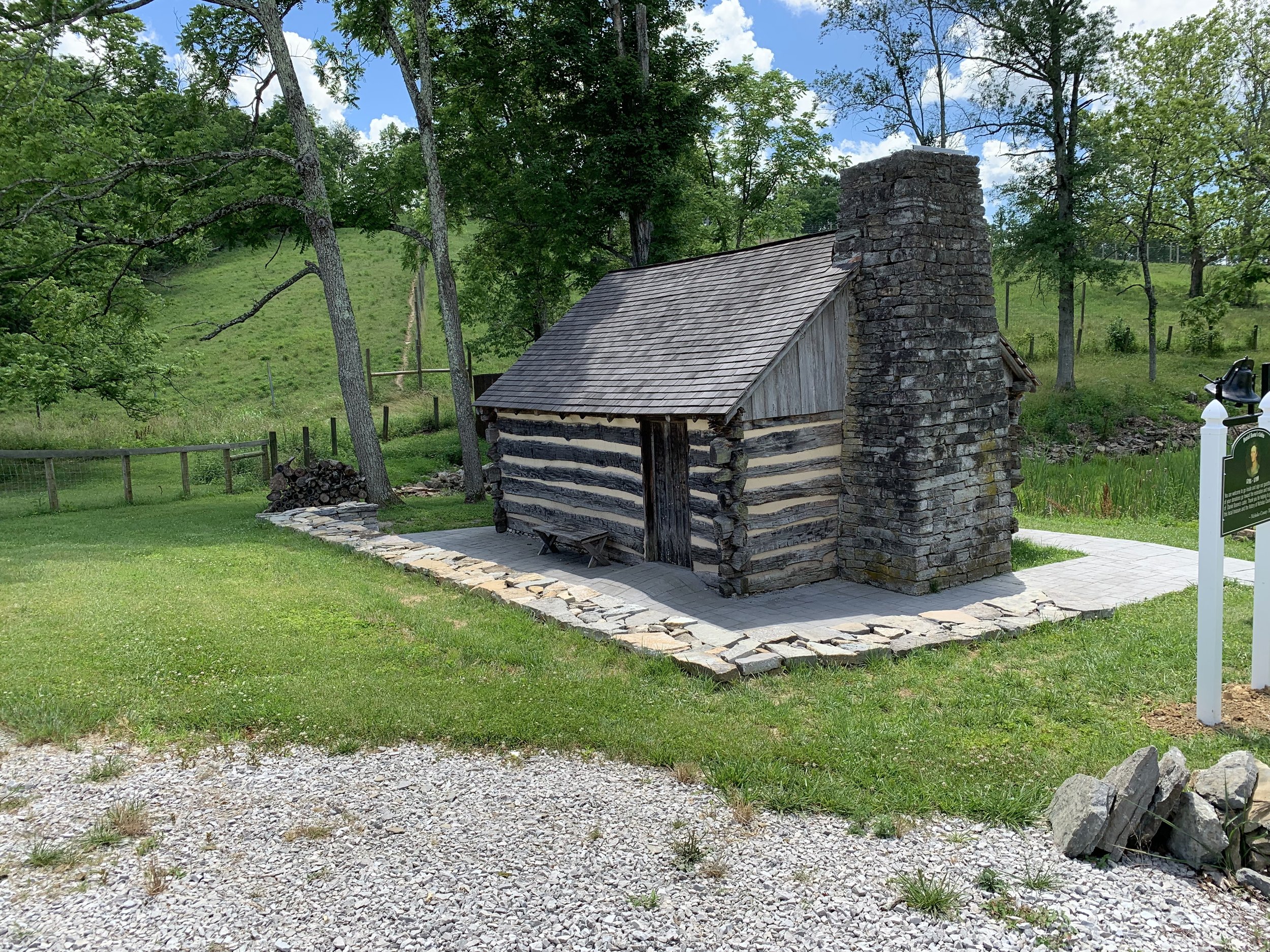

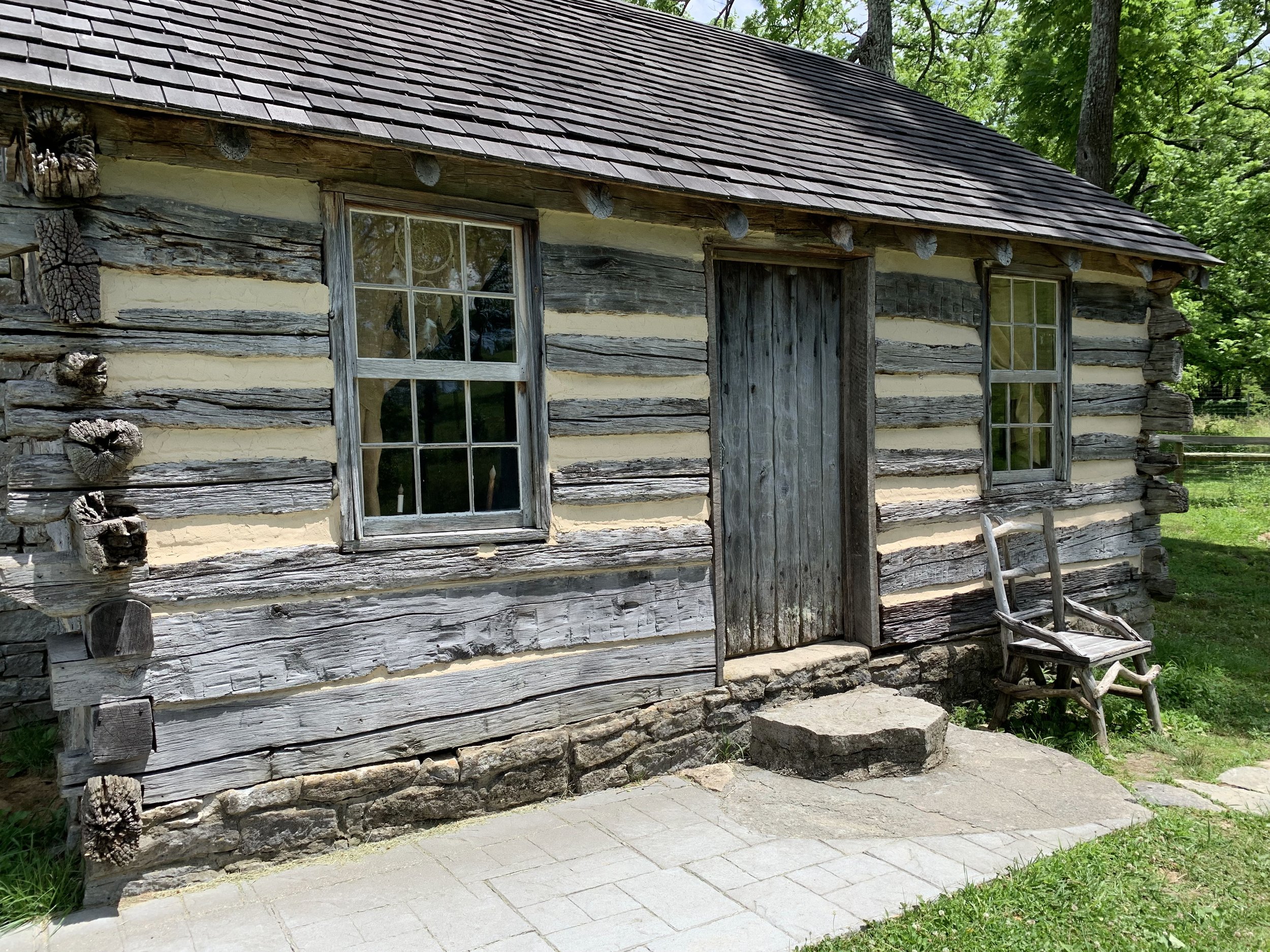
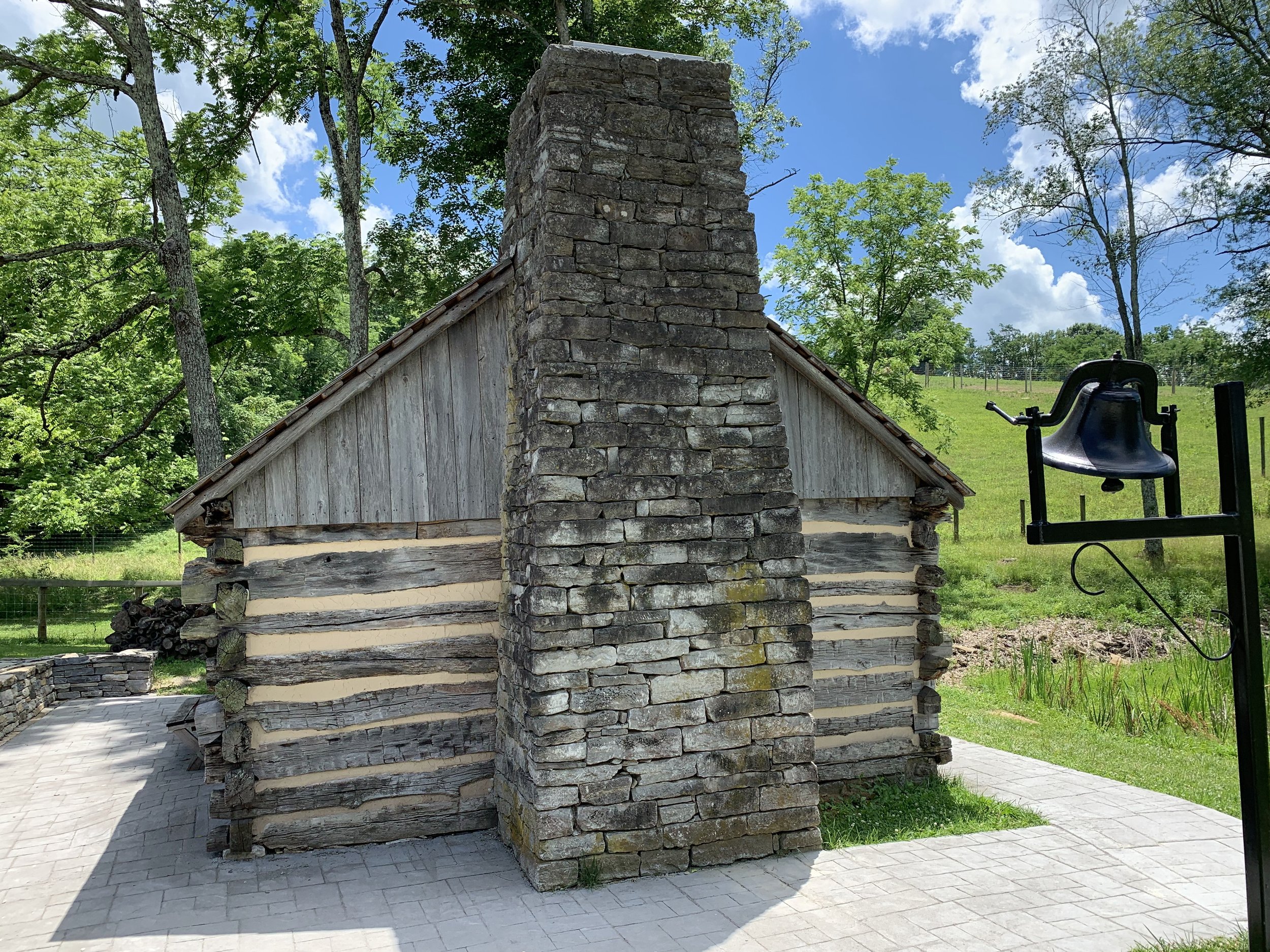
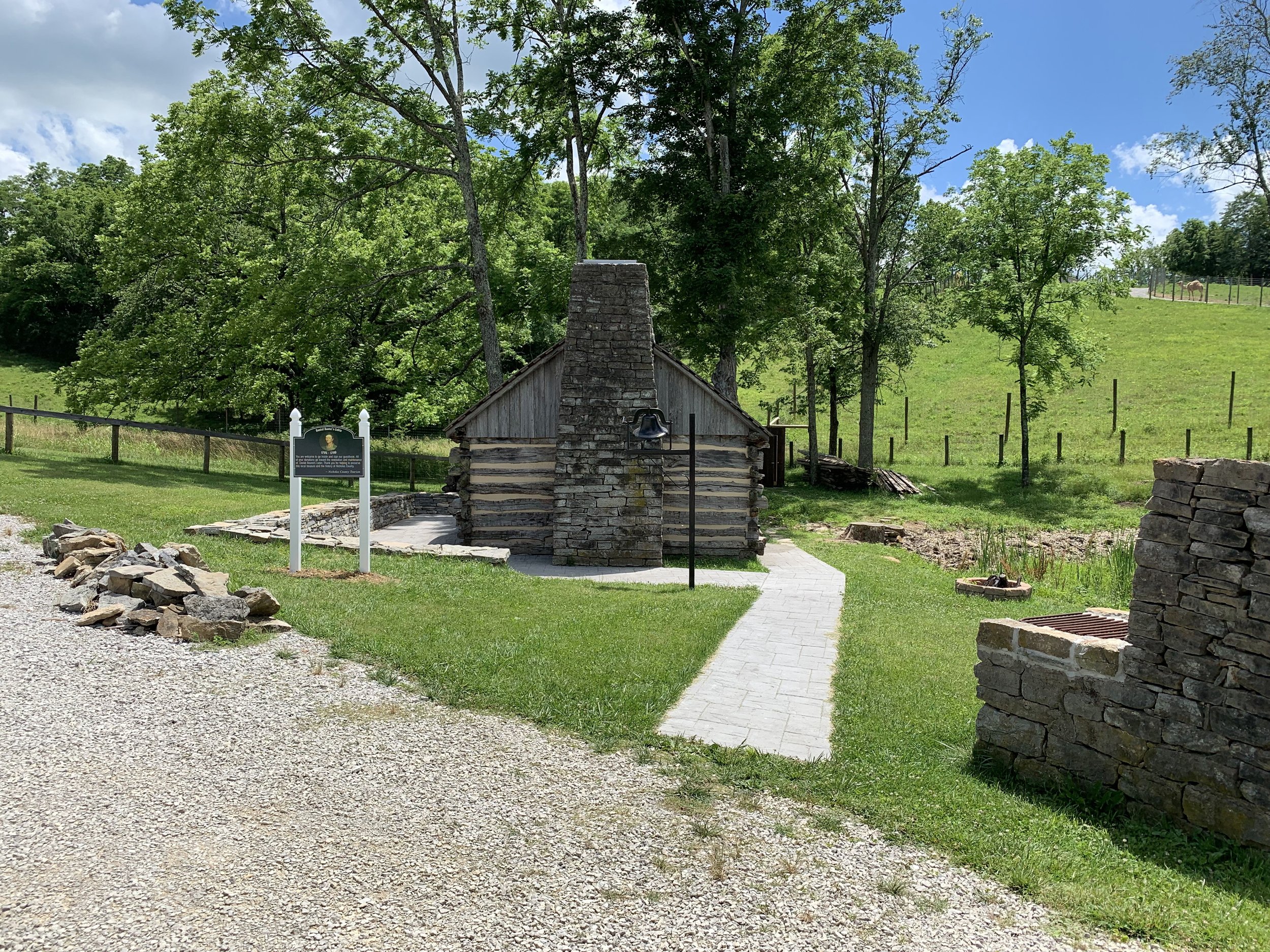
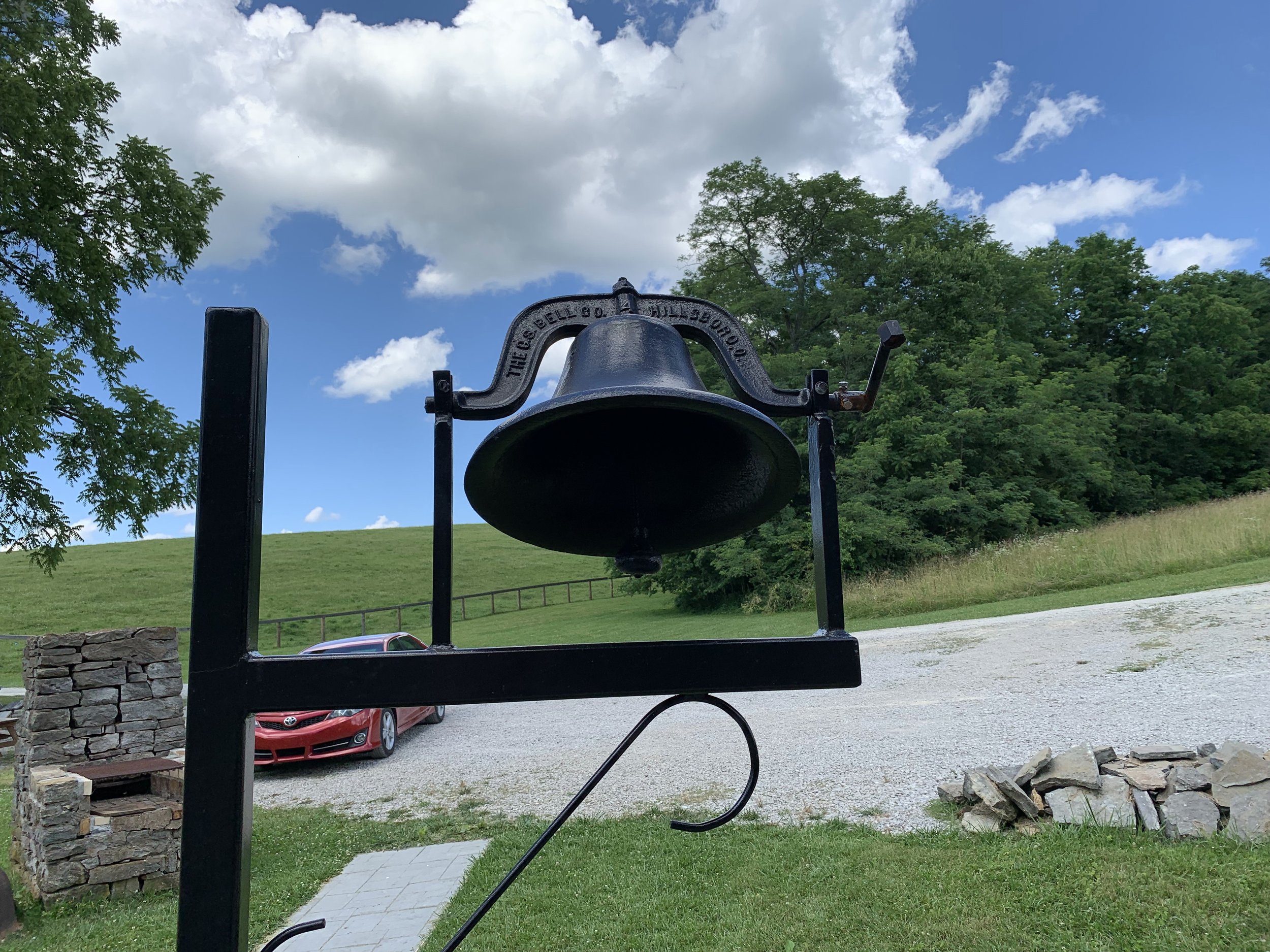
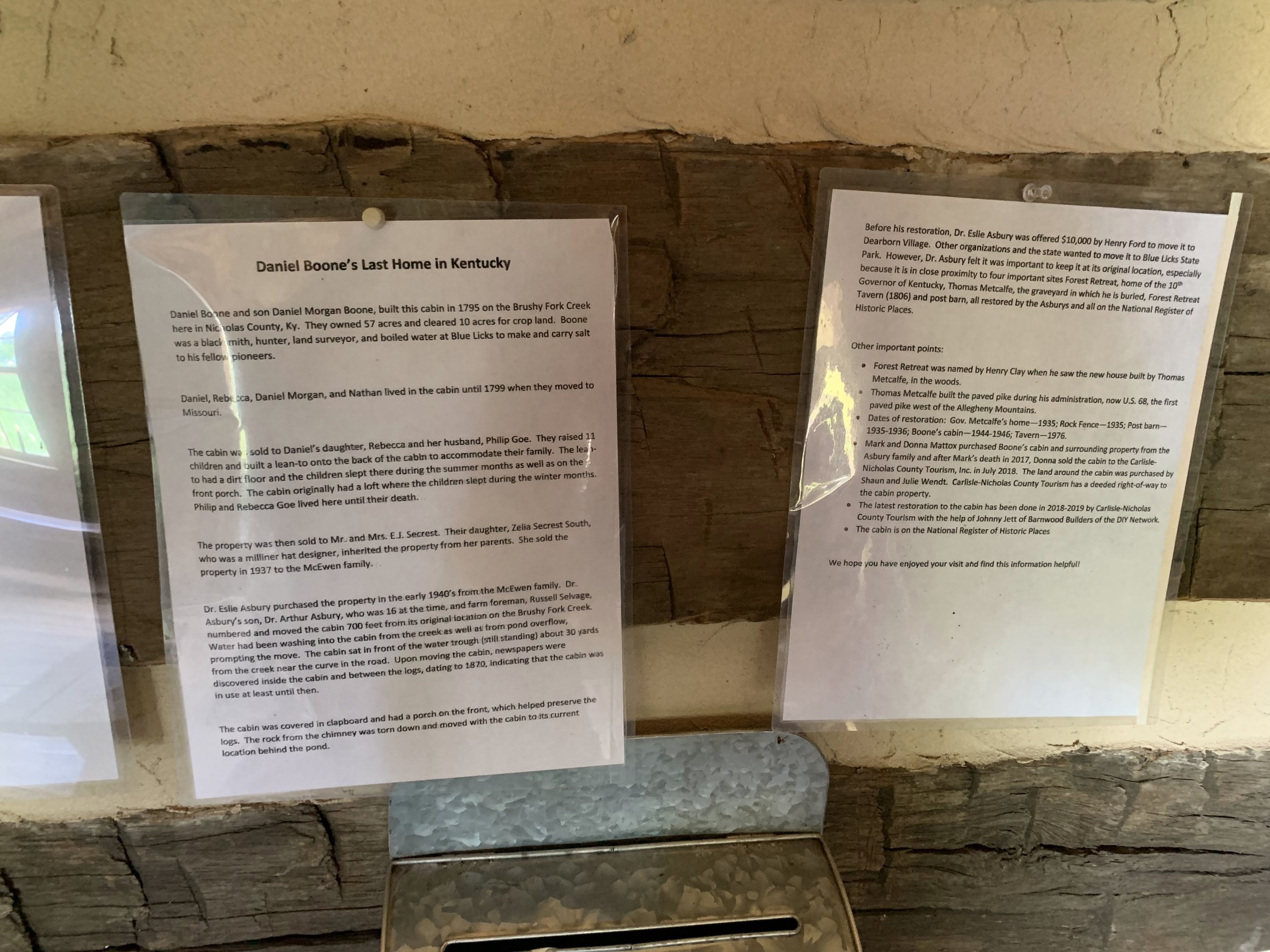
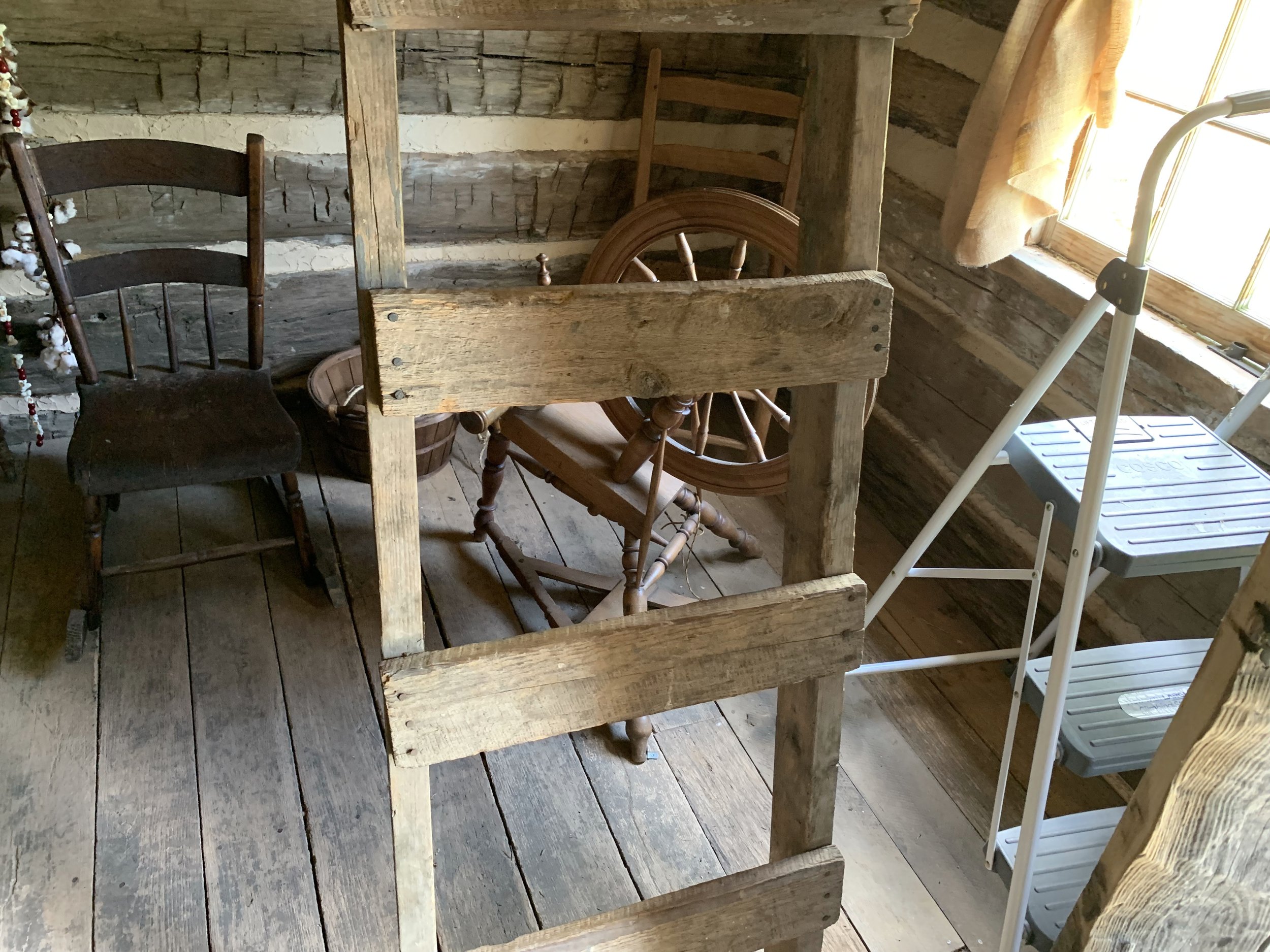
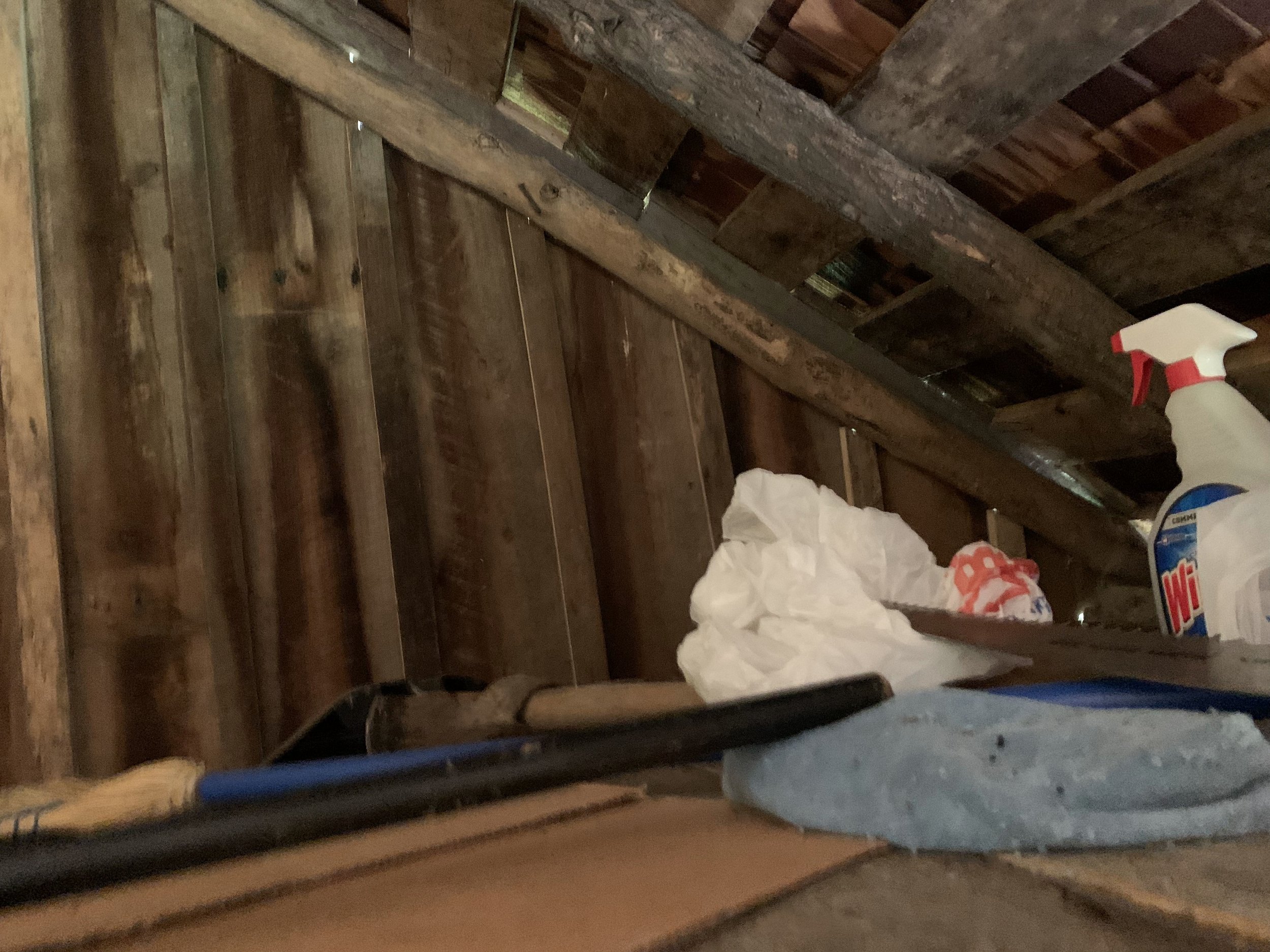
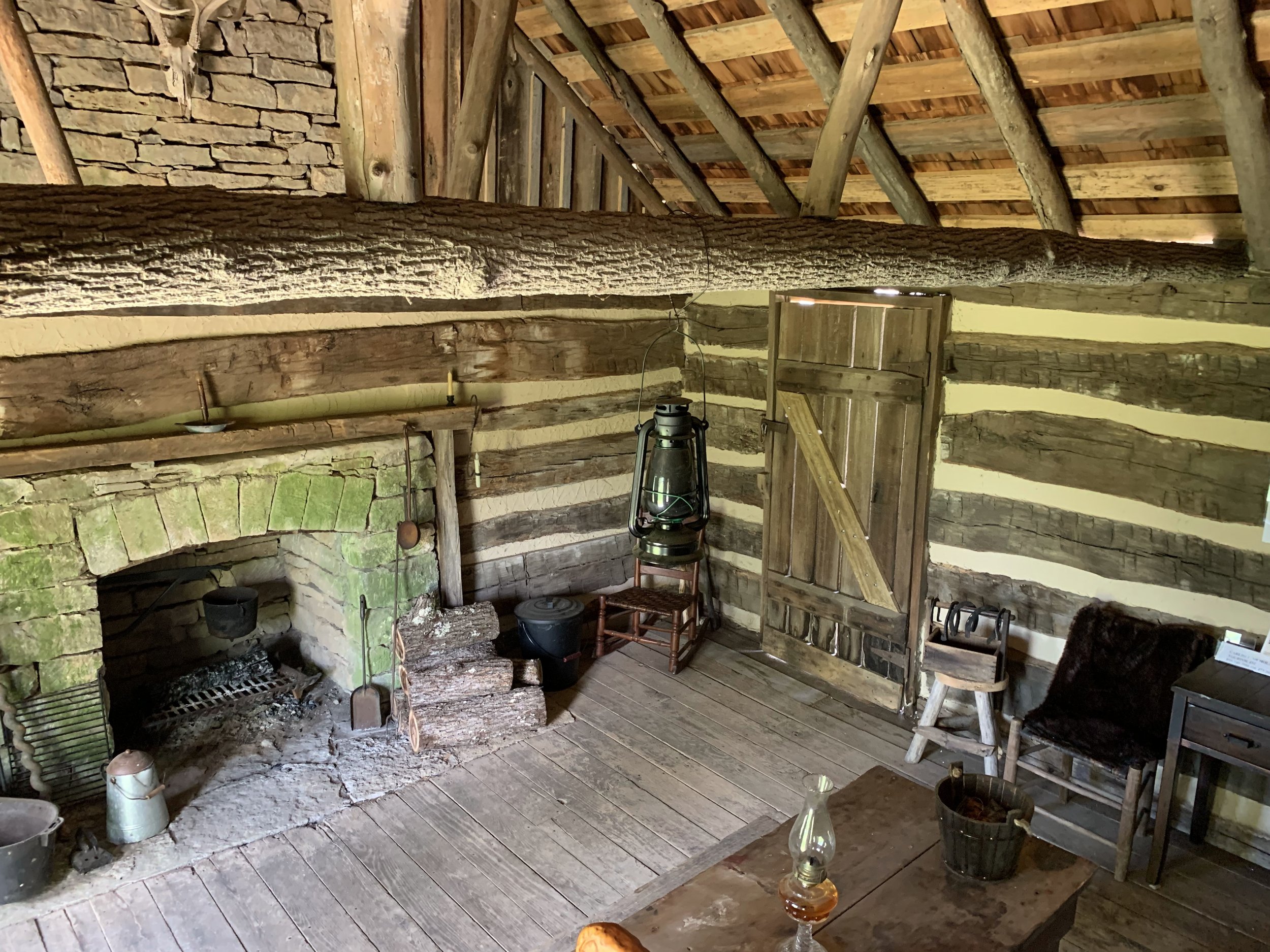
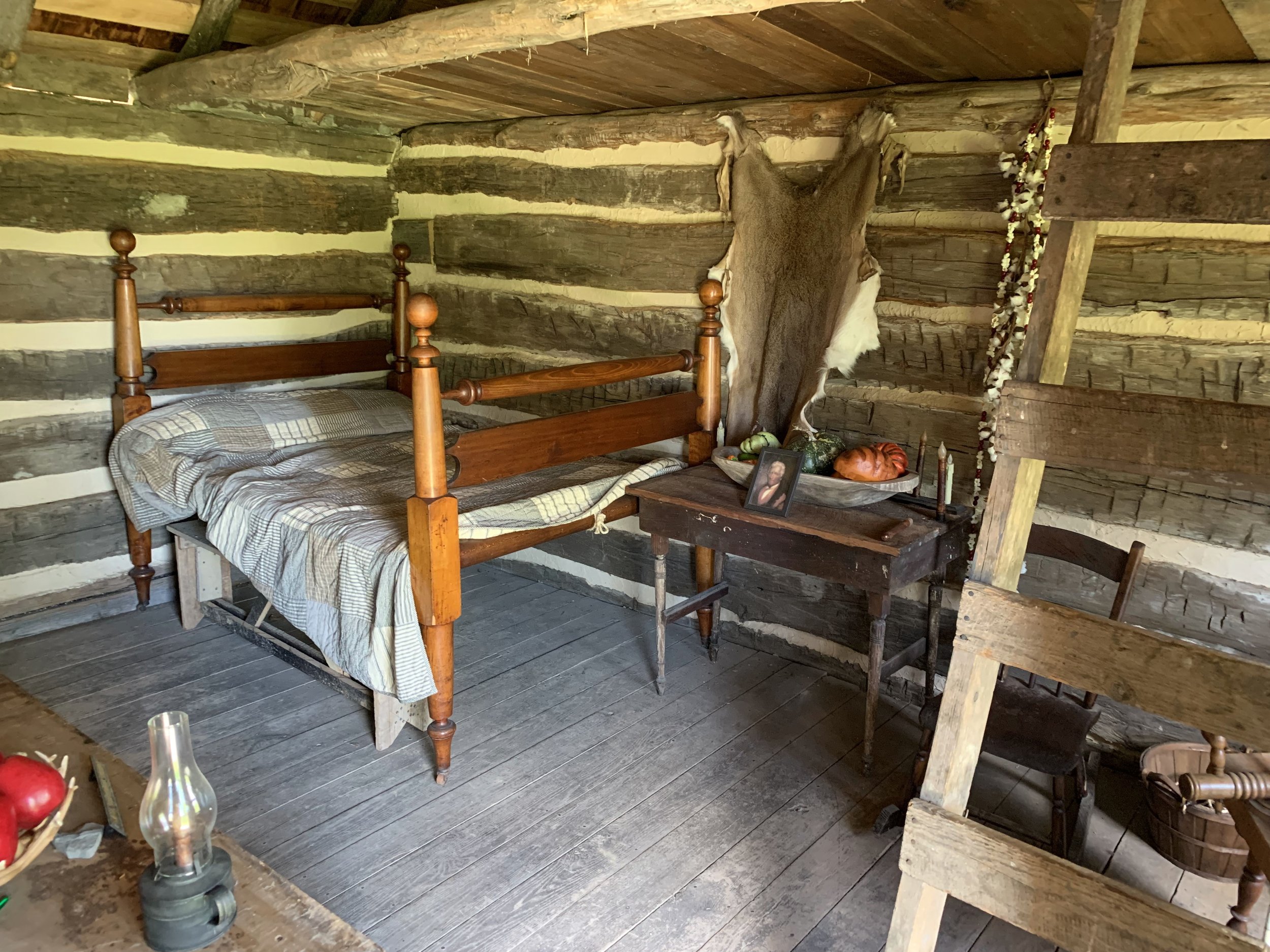
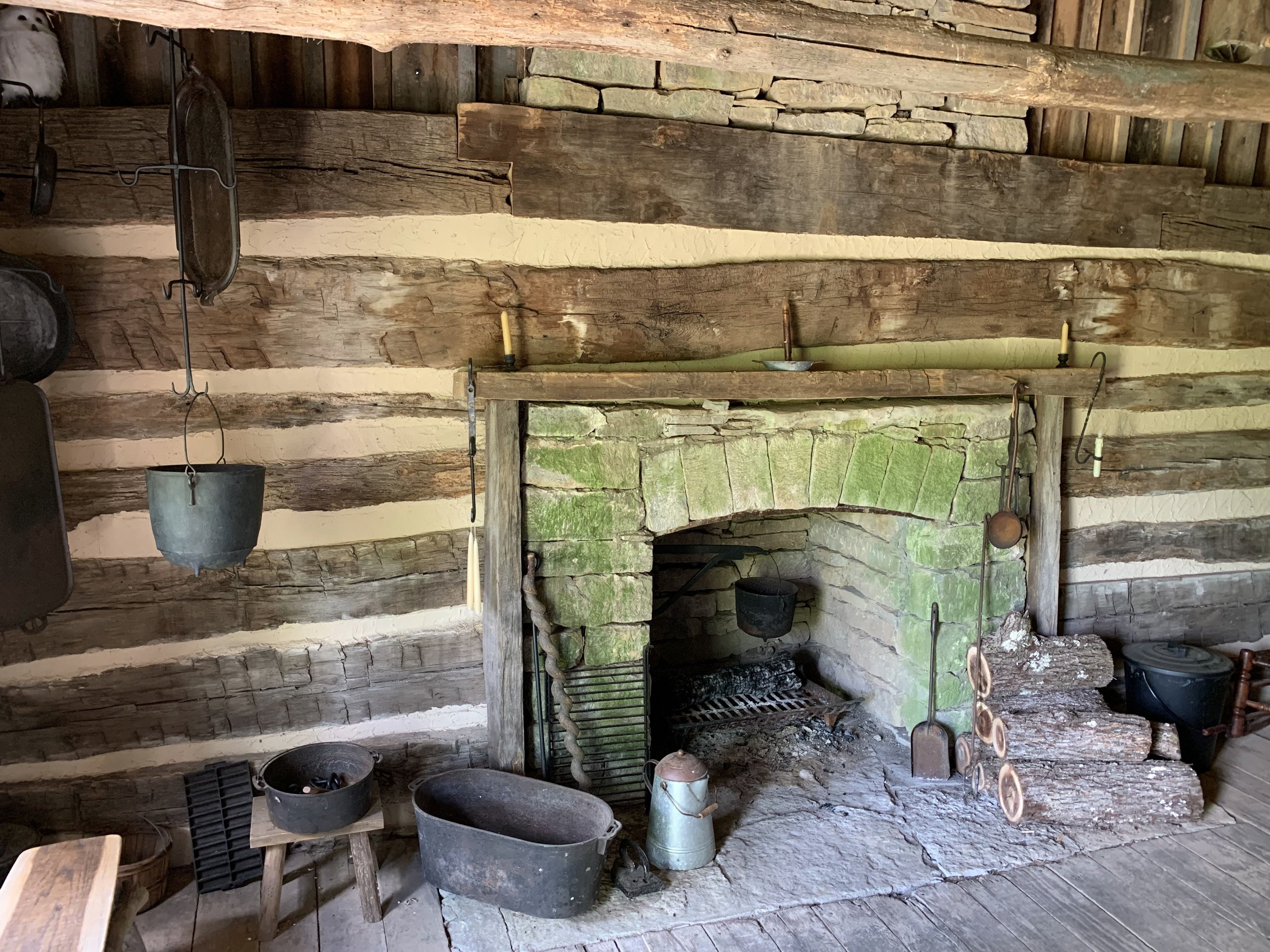
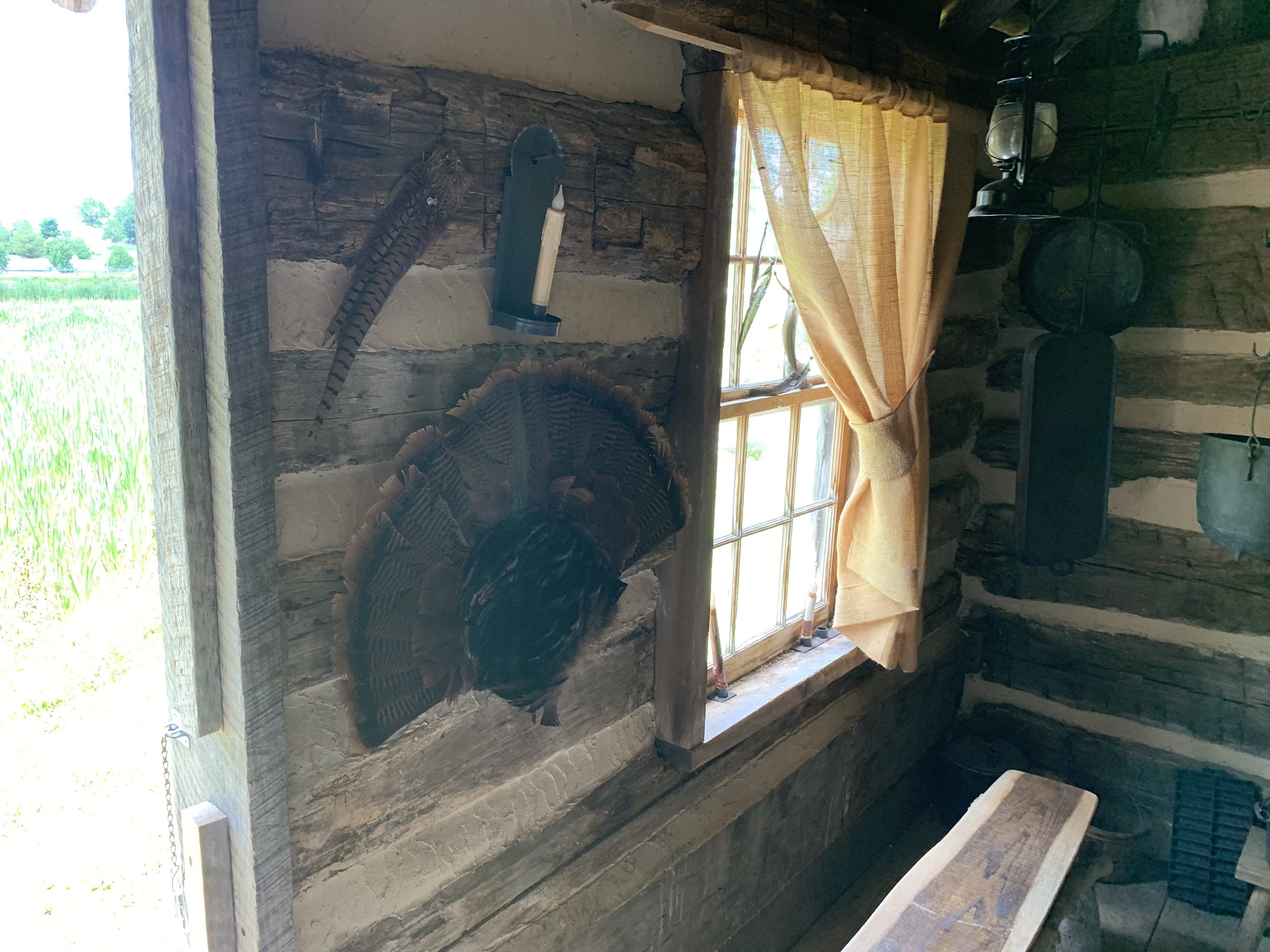
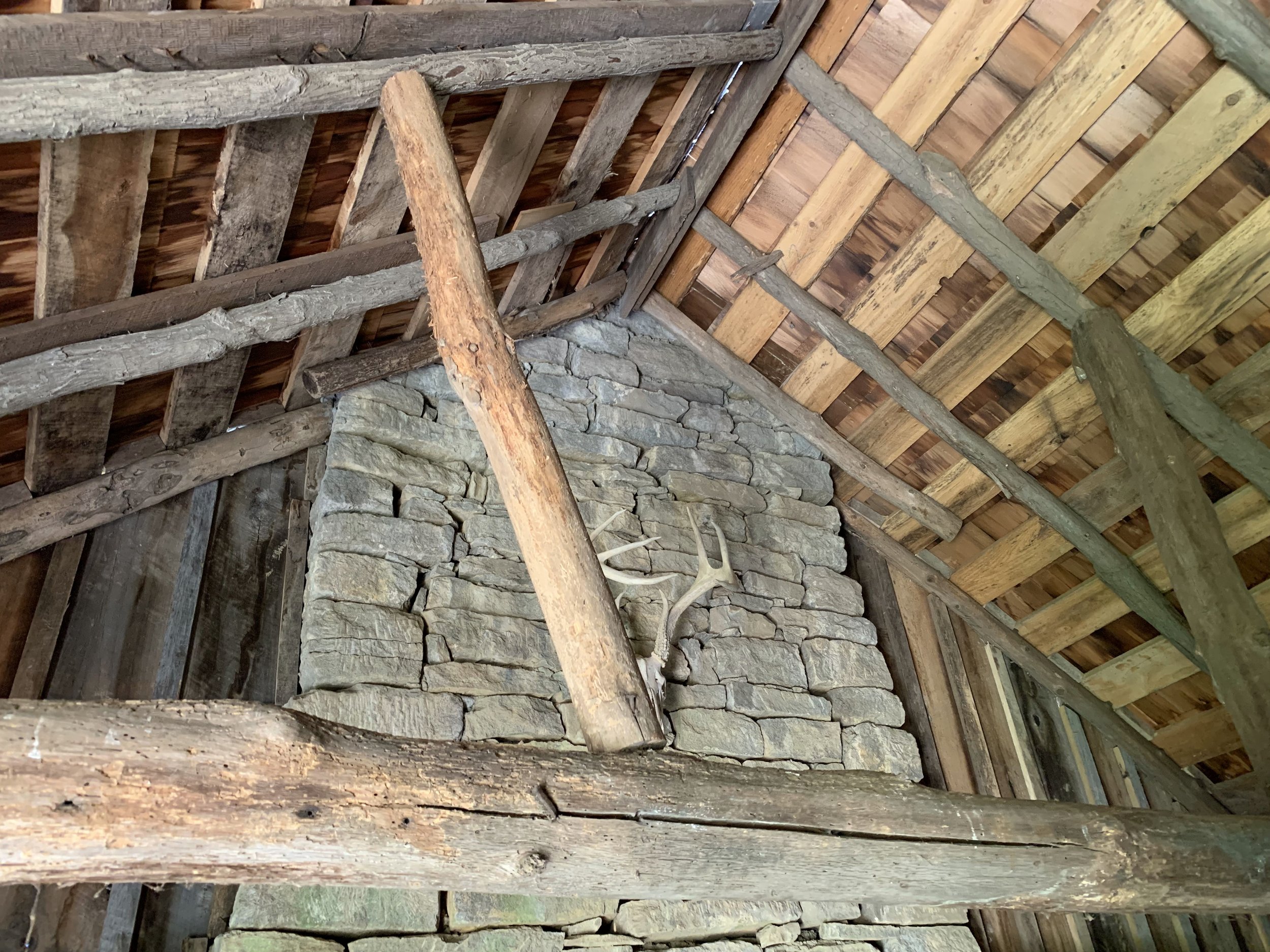
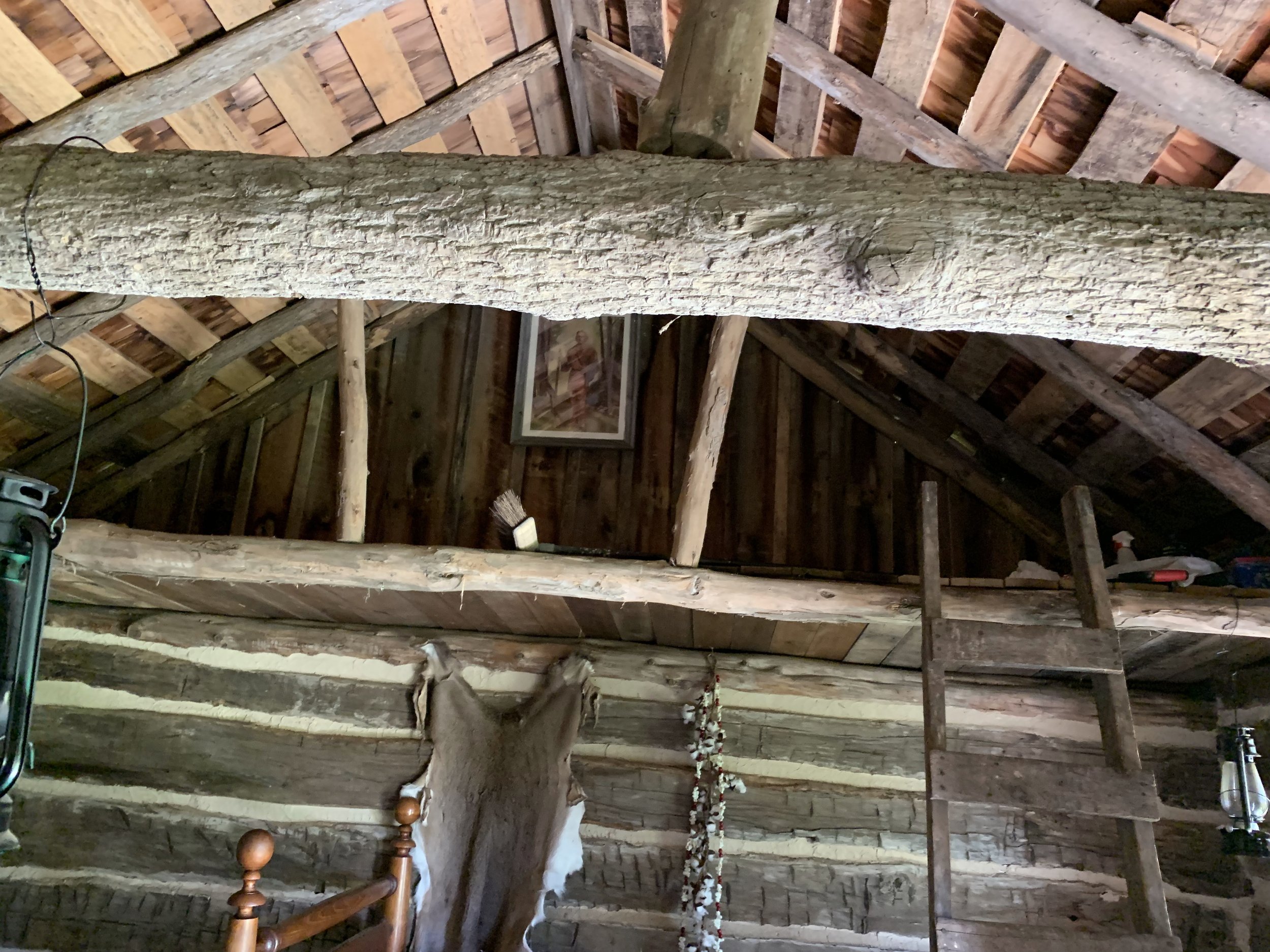
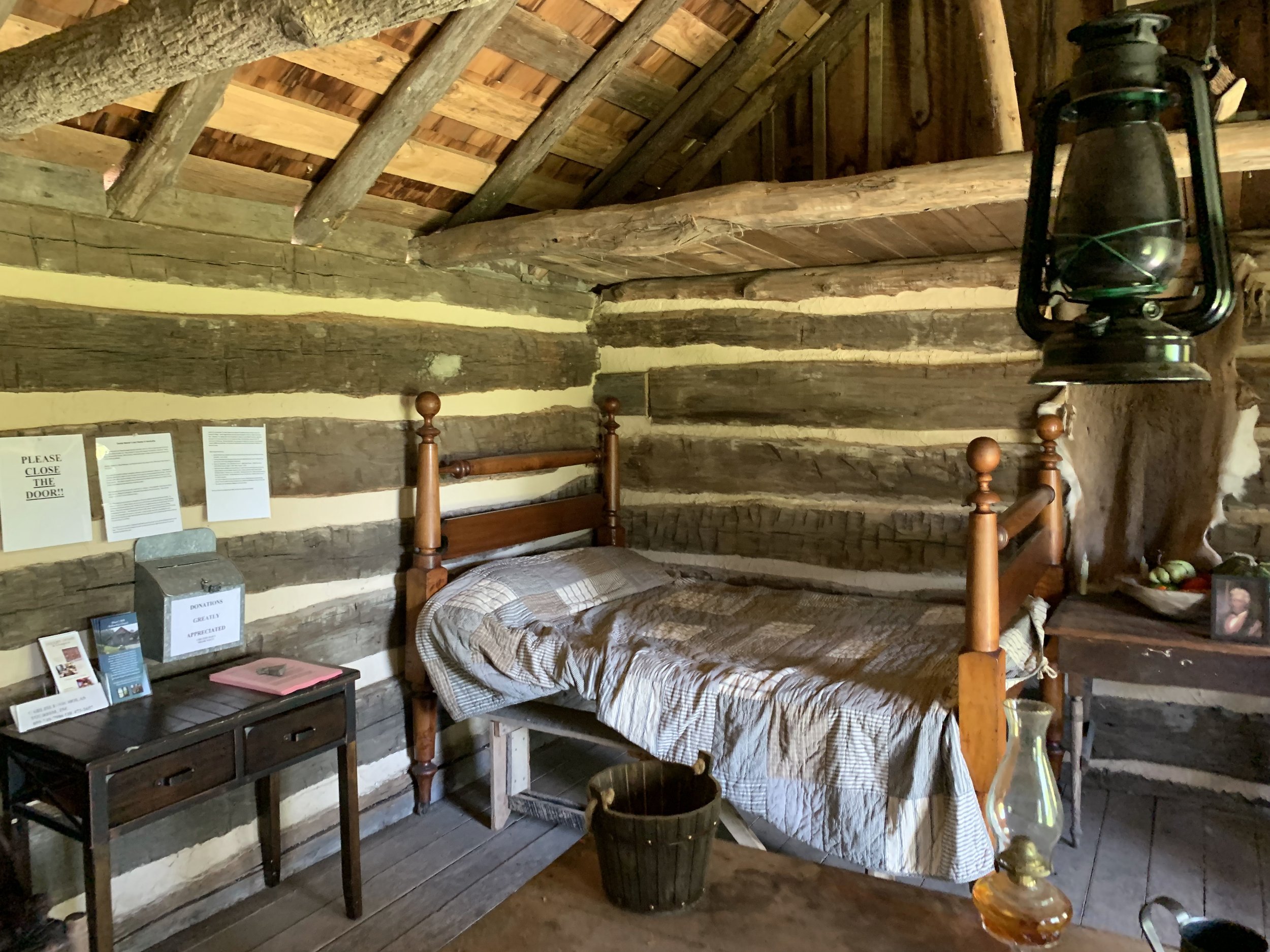
The name Daniel Boone is almost as synonymous with the Bluegrass State as horses, bourbon, or basketball. He was among the first pioneers to truly explore the state, and lead some of it’s earliest settlers through the Cumberland Gap into these bountiful new lands.
Although Daniel spent nearly 25 years blazing trails and helping establish Kentucky as a new frontier for America, a series of bad land deals and resulting legal troubles prevented him from truly profiting from his efforts. Ultimately defeated, Boone turned his back on Kentucky and migrated to Missouri in 1799 where he would spend the remaining 20 years of his life.
Although Madison County’s Boonesborough can lay claim to the title of Kentucky’s first settlement, it is a simple cabin in Nicholas County which holds the quiet distinction of being Boone’s last home in the state so closely associated with his legend.
Located just off of Maysville Road near the town of Carlisle, this simple cabin was once the home of Boone’s son Daniel Morgan. It was here that Boone and his wife briefly lived, while making one last attempt to turn a profit in Kentucky by pursuing a state contract to widen the Wilderness Road that he had previously pioneered to bring in settlers. After losing his bid, Boone then fled the state with a warrant out for his arrest for failing to appear in one of his many land-dispute court cases.
Today this simple one-room cabin has been restored and is maintained by the city of Carlisle. The cabin is open during daylight hours, is furnished appropriately for Boone’s era, and is a fully self-guided tour. Visitors can unlatch the door, explore the cabin fully, and see themselves out. There is however a locked donation box in the cabin, with all proceeds being used to help with maintenance on this great little piece of history.
In addition to the cabin there is a small stone grill/fire pit, and it’s all situation along nice little spring. The access road to the cabin is gravel, but is easily traversable in car, with ample parking along side the cabin. The drive-way is shared with a neighboring farm though, so please be respectful and allow room for the farmer to get by.
Boone left his cabin a truly defeated man, and abandoned the state which had consumed nearly a third of his life. He would later pass in Missouri in 1820, having never again set foot in the Bluegrass. His remains were interred in his new home state, but would eventually be returned (at least partially) to Kentucky. But that story is well worth it’s own adventure.
Want to Experience This Adventure for Yourself?:
https://goo.gl/maps/Qna88n3zZdwp3Zhi6
The Bourbon Iron Works
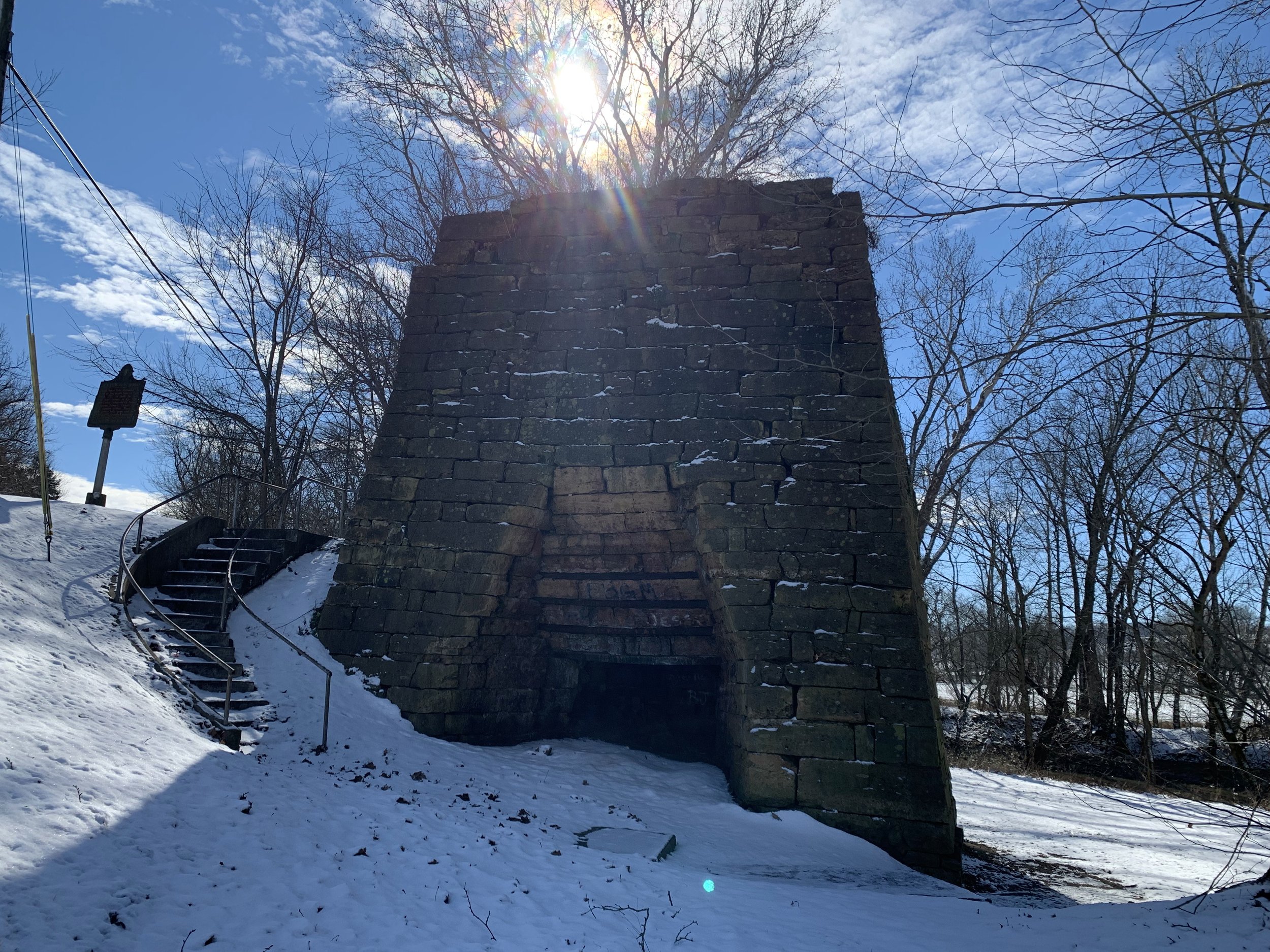
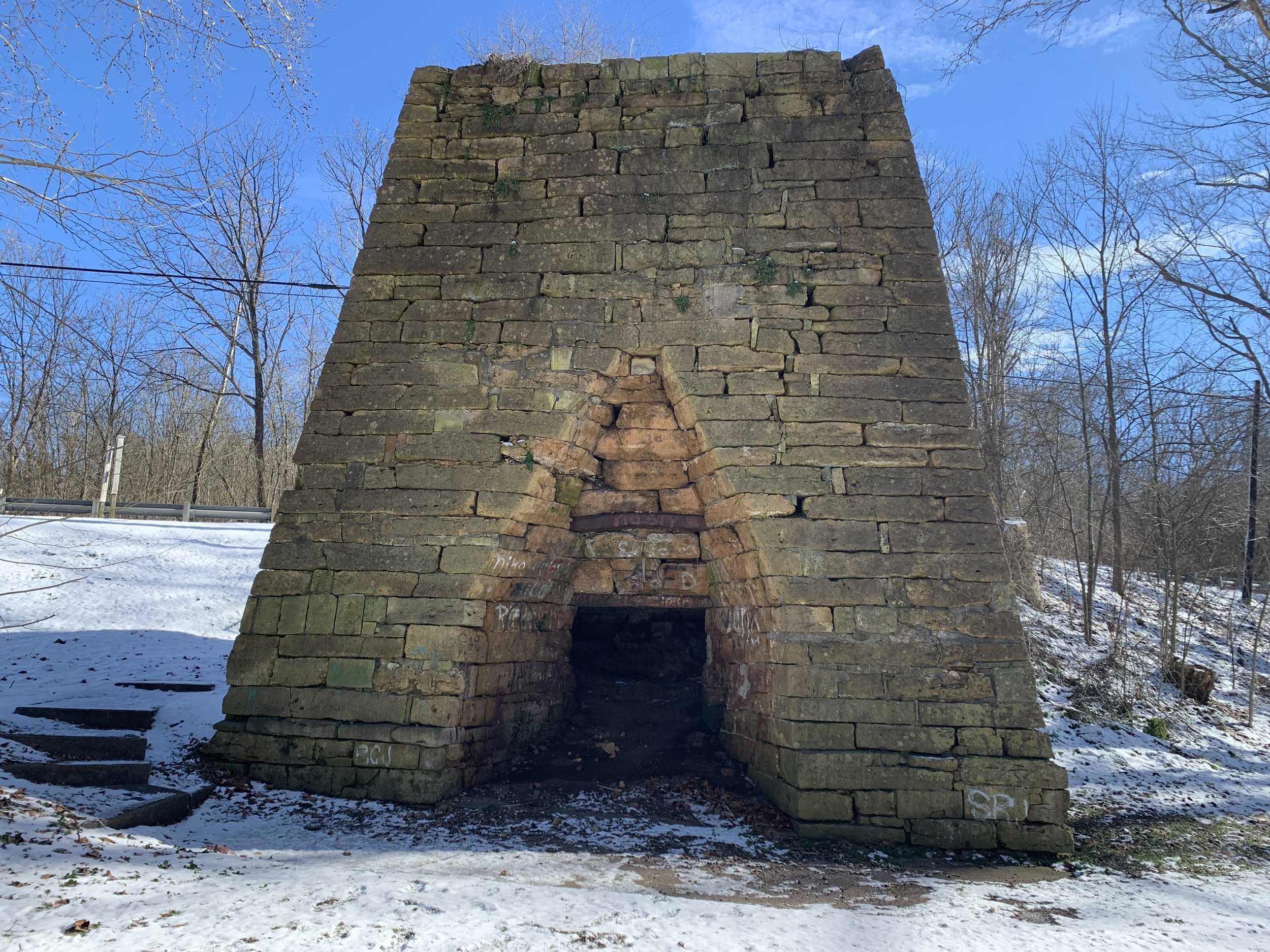

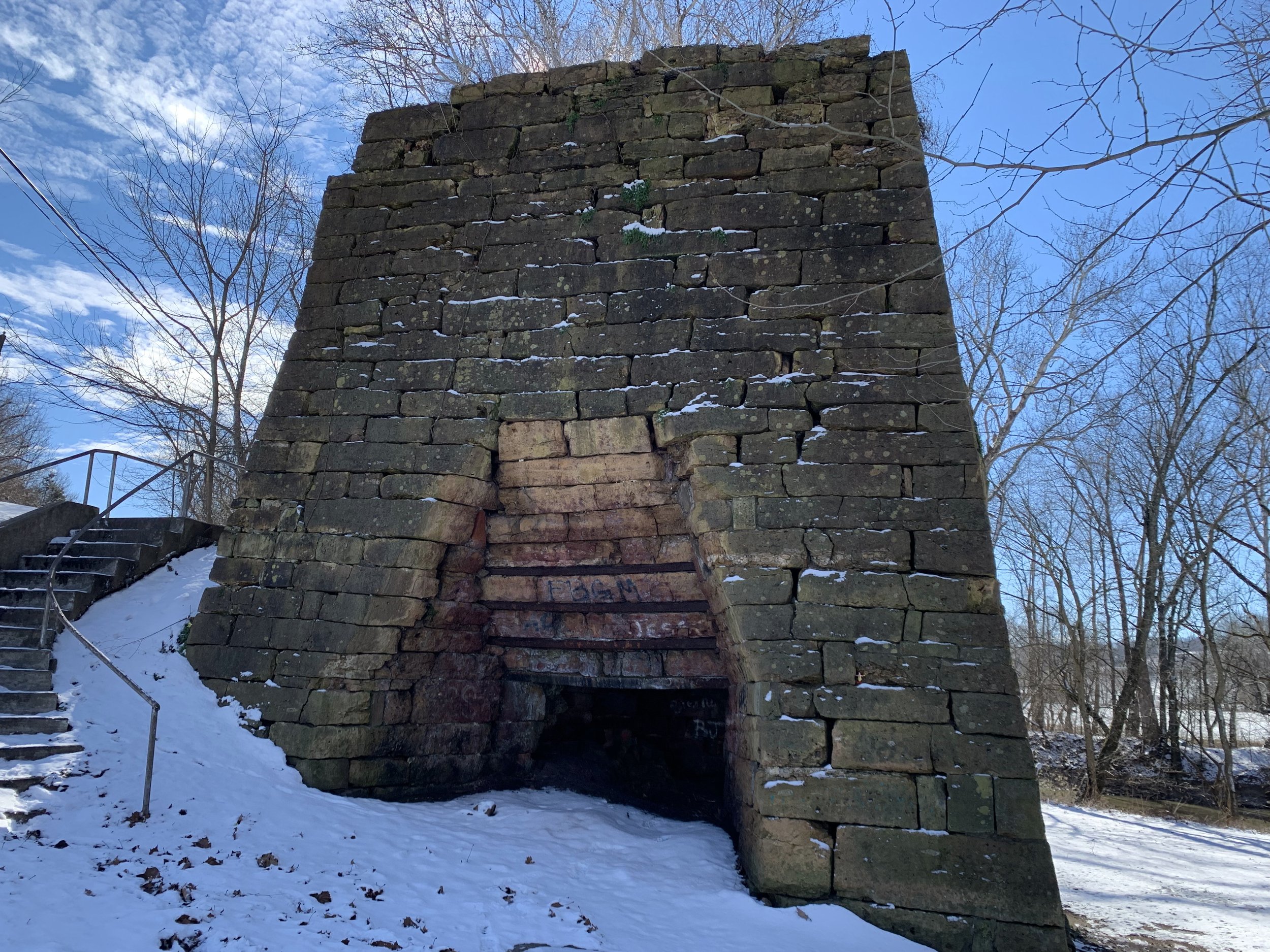

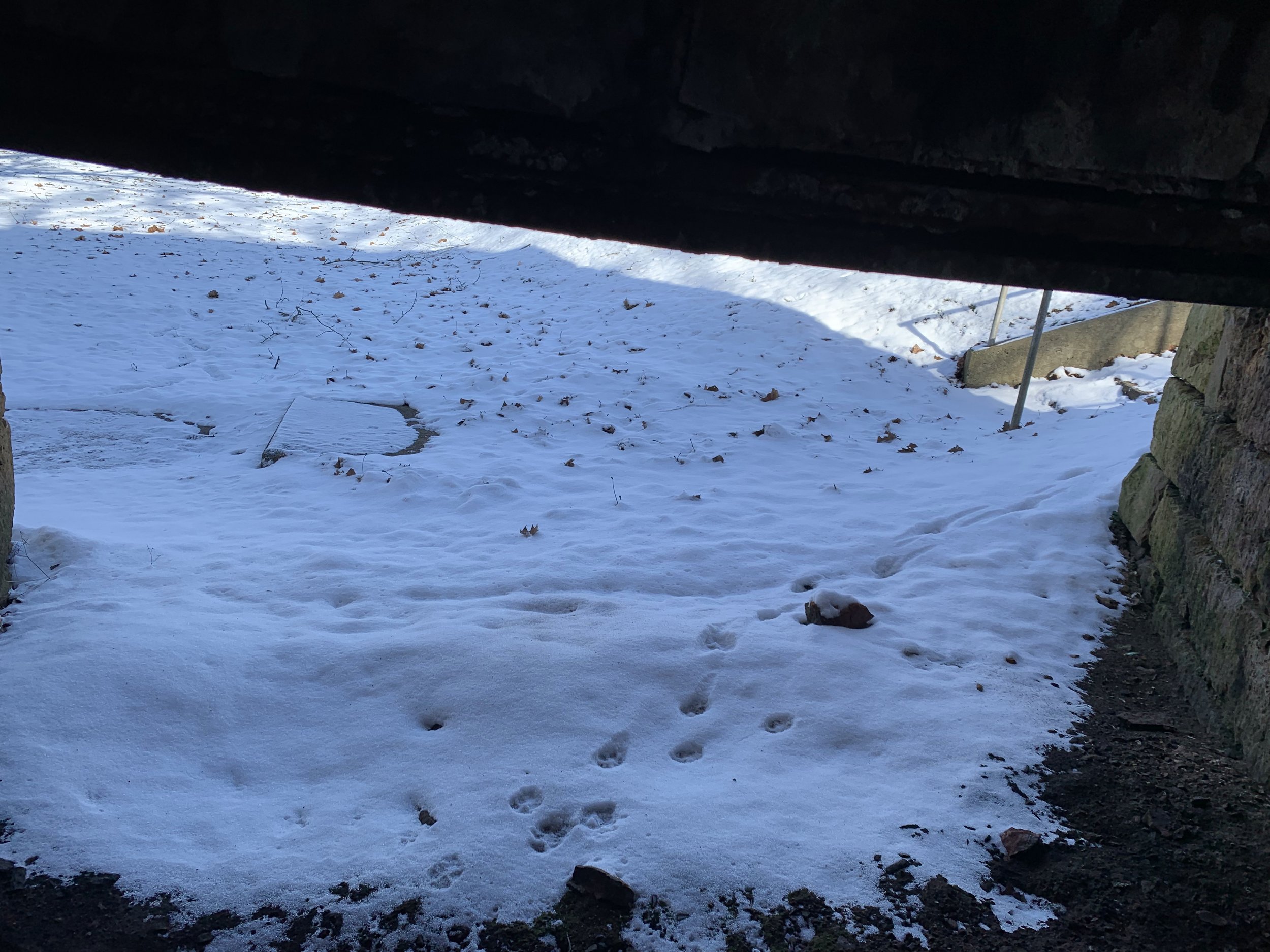
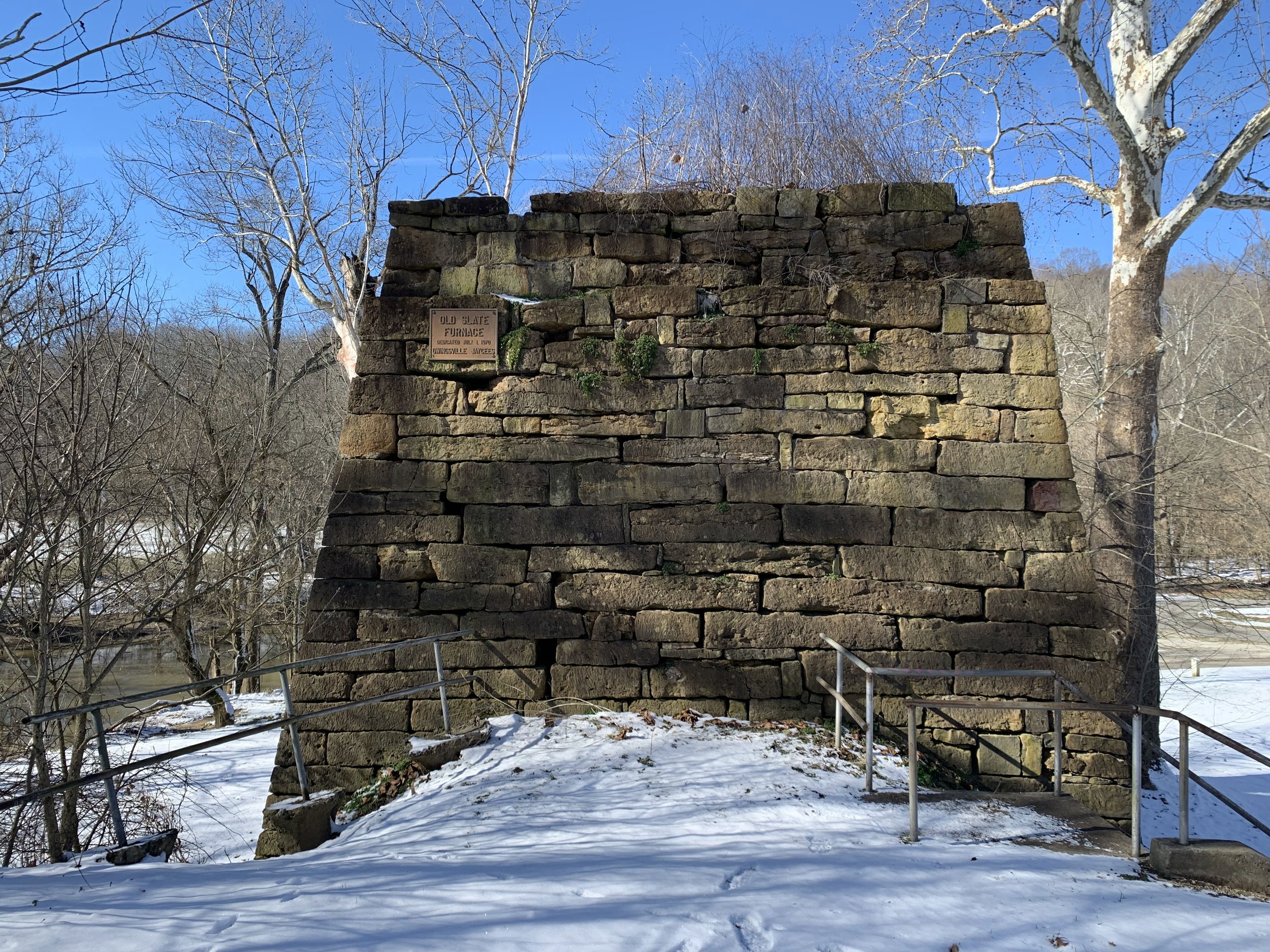
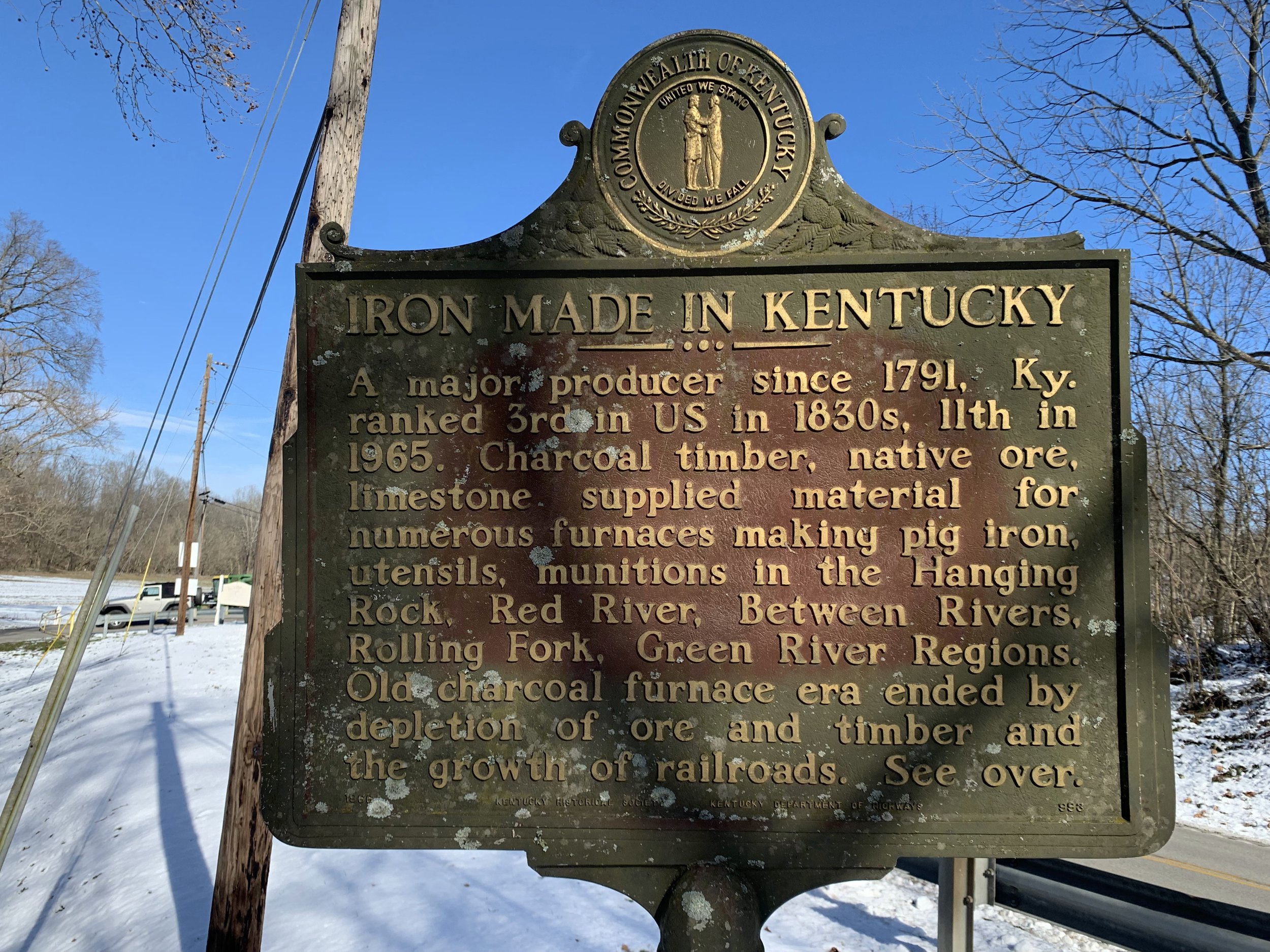
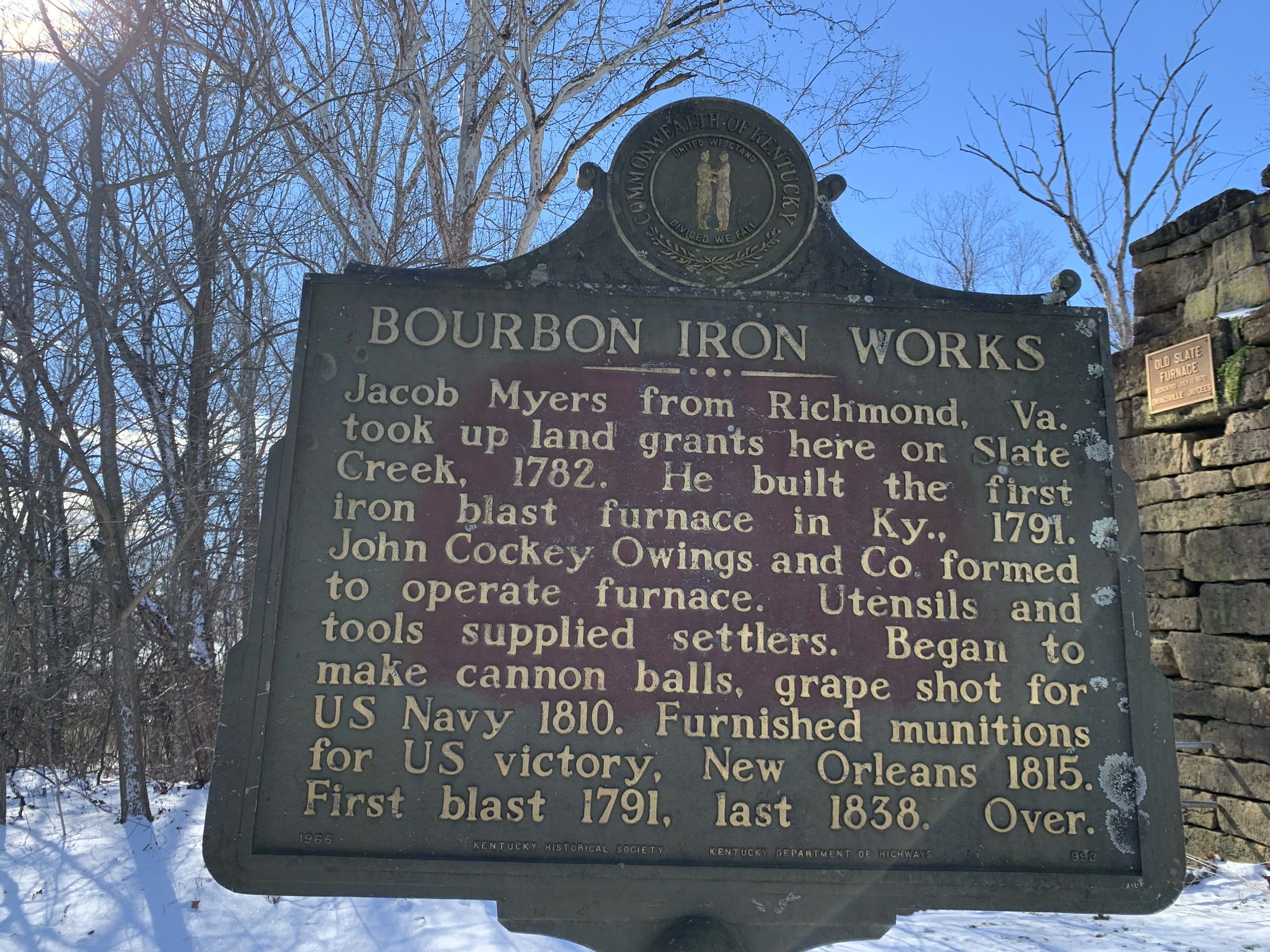
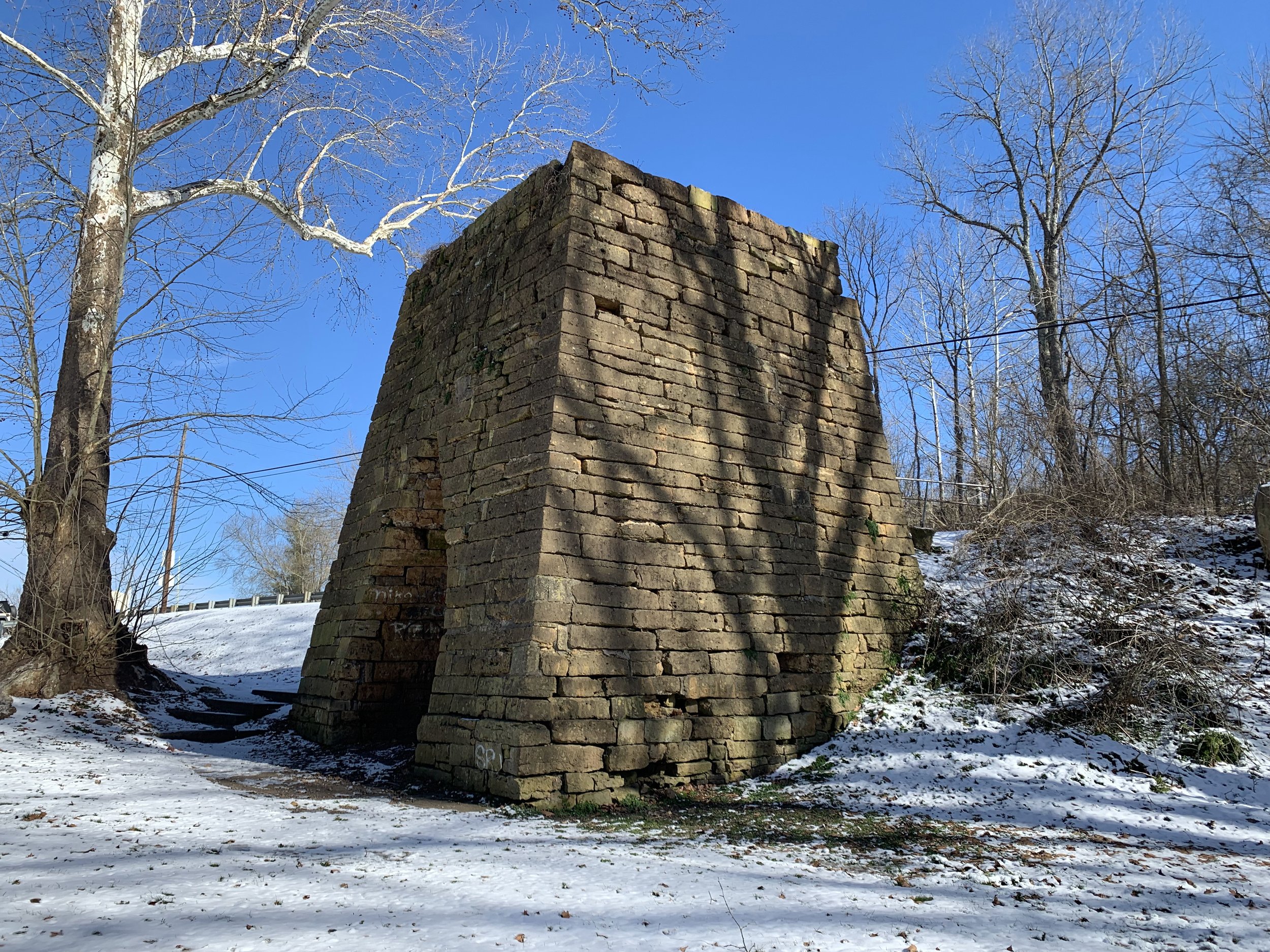
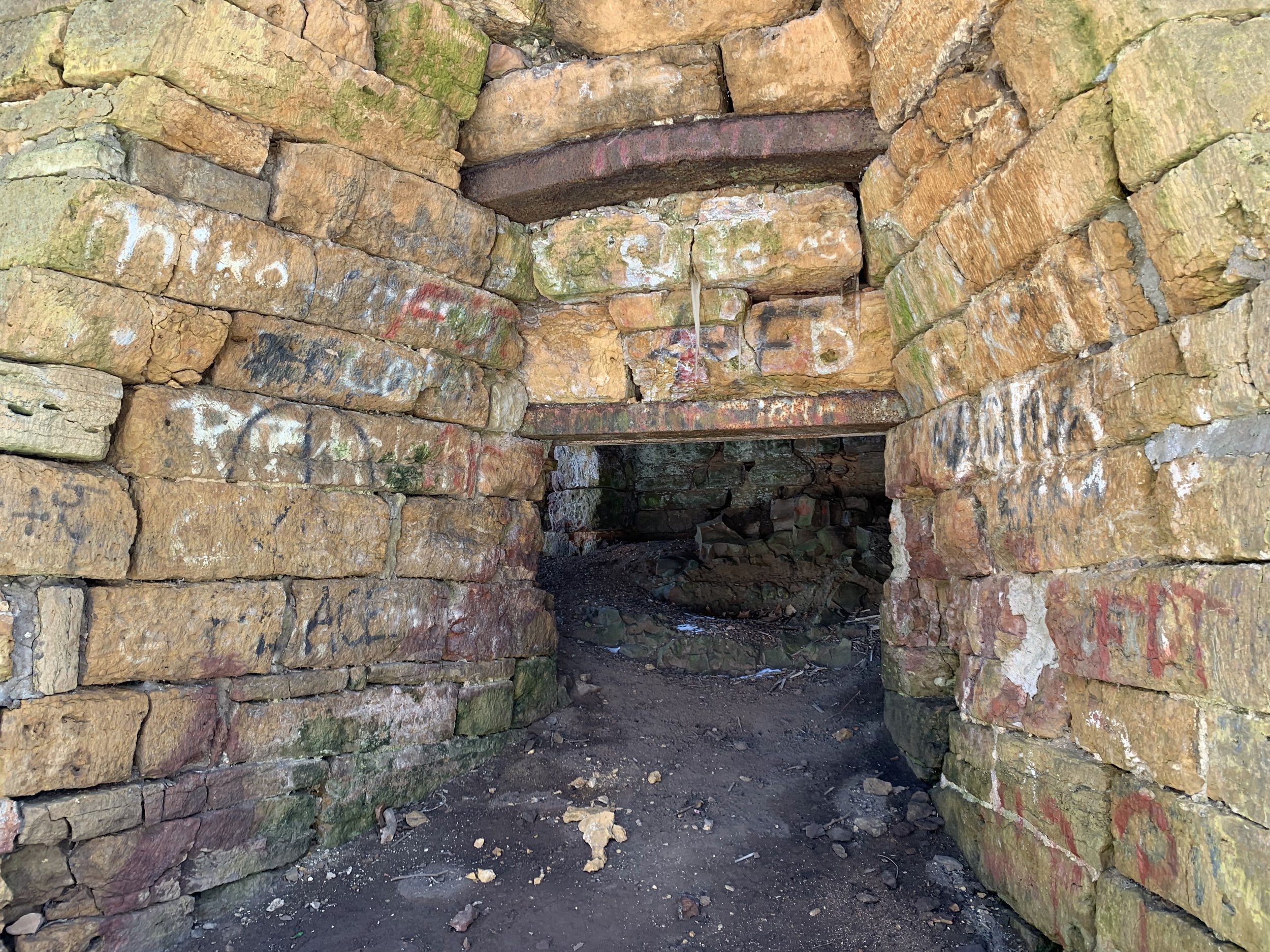
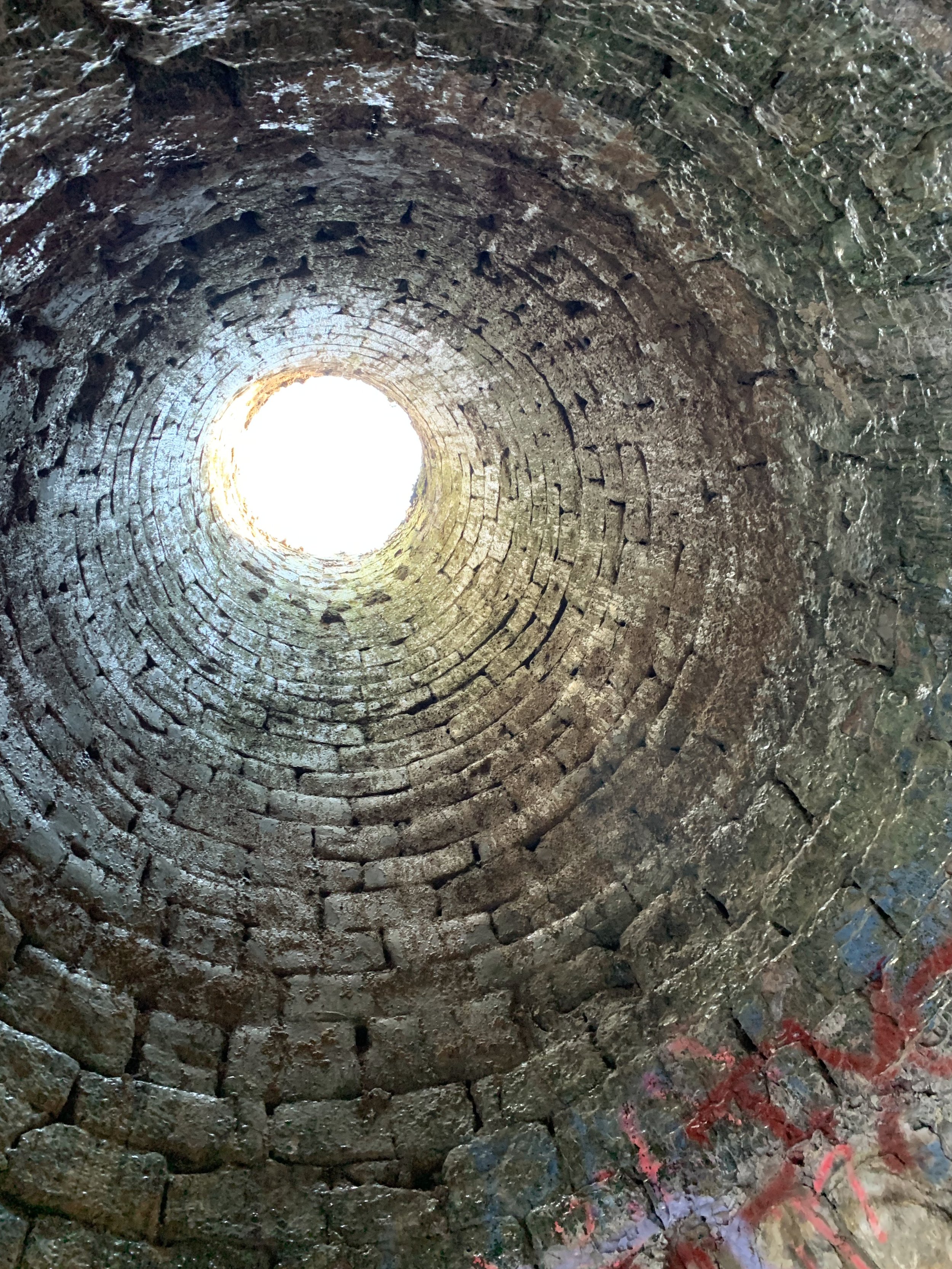
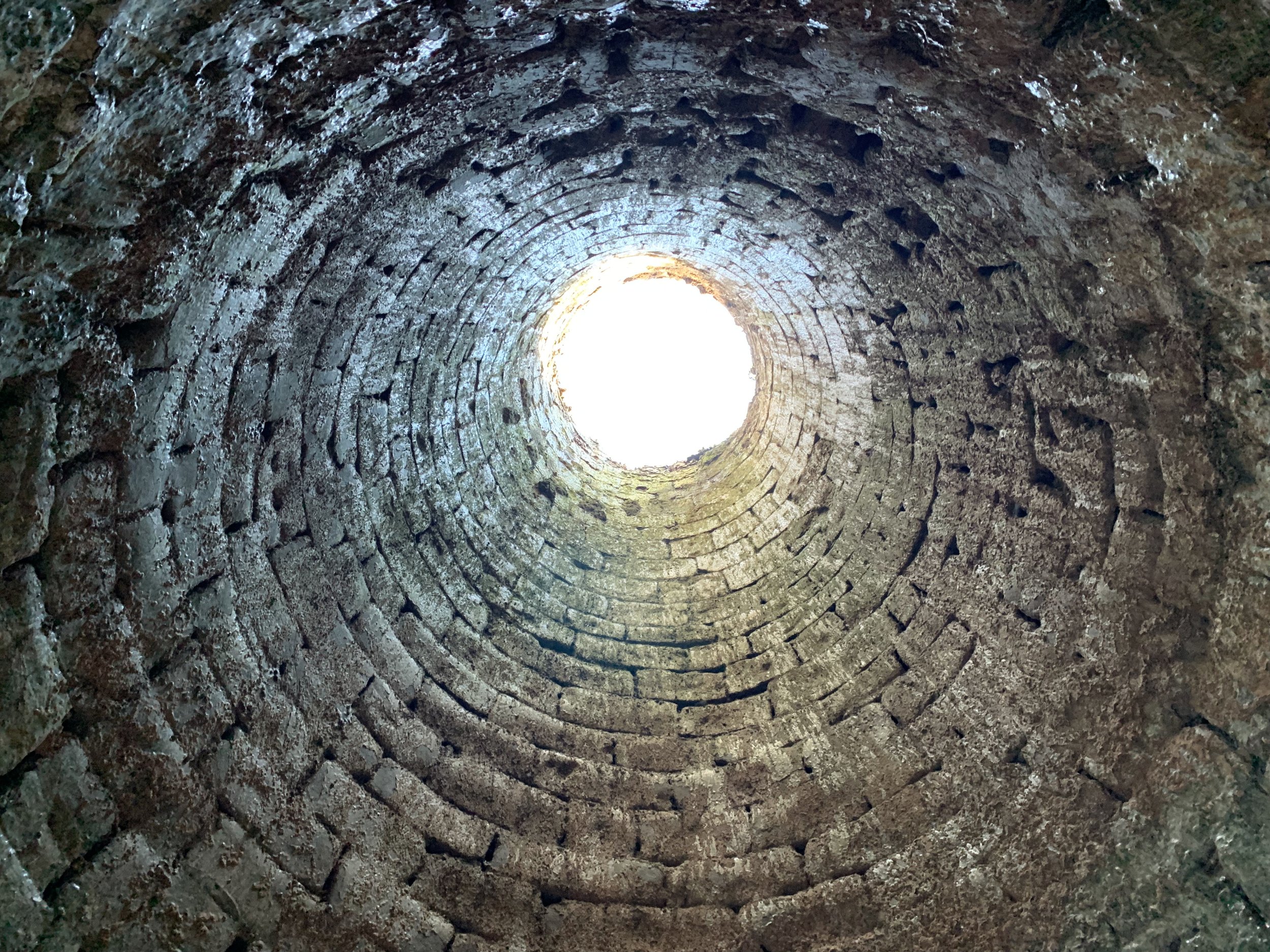
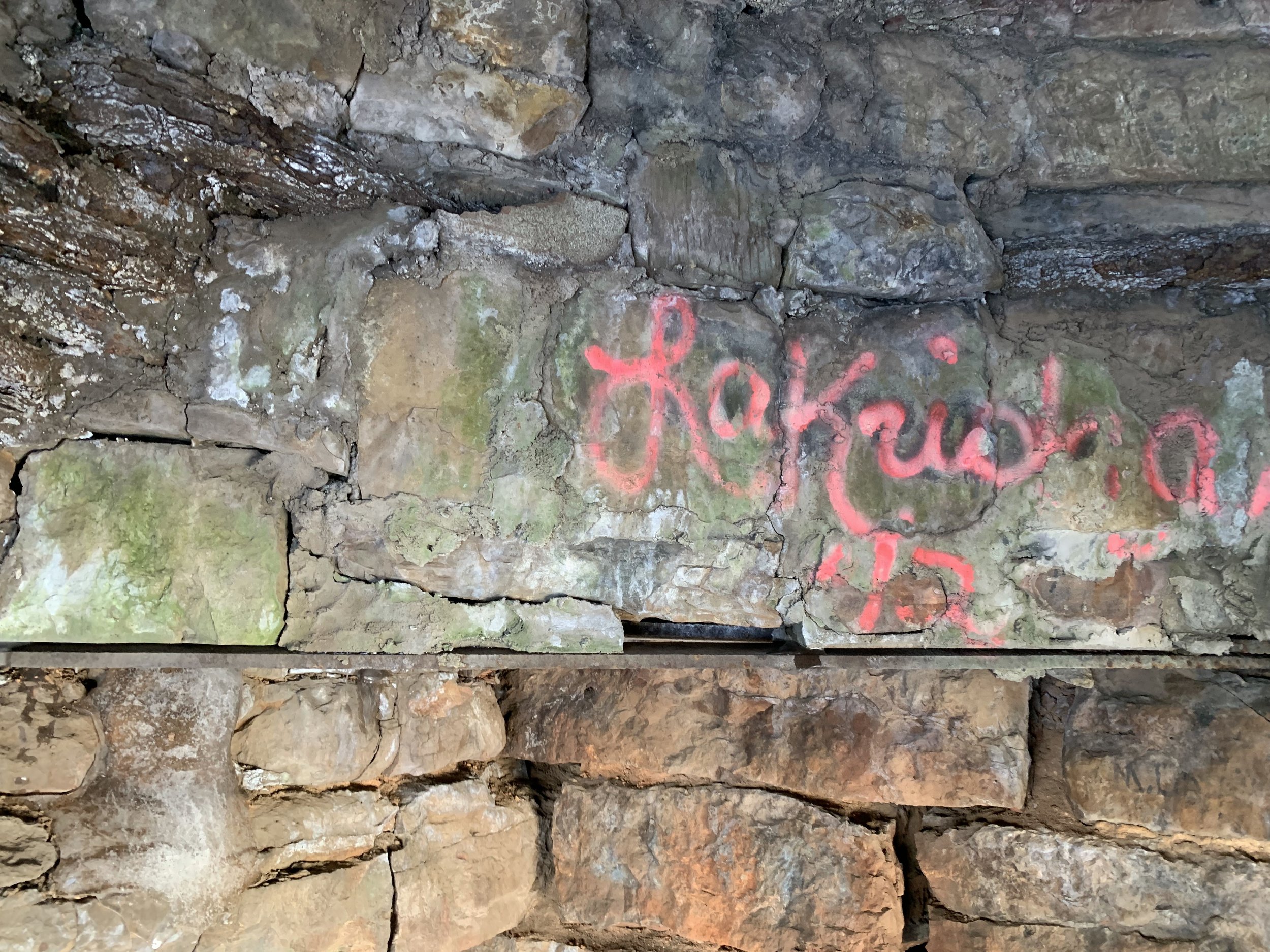
Throughout central Kentucky it is extremely common to find roads named either “Iron Works” or “Old Iron Works” road. Montgomery, Estill, Clark, Bourbon, and Fayette counties all feature such a road. Given that iron blast furnaces were very common to the region this certainly isn’t surprising, but remarkably in each of these instances the roads all refer to the same location. The “Bourbon Iron Furnace” in what is now Bath County Kentucky.
In 1782 Jacob Myers of Richmond Virginia received land grants along Slate Creek in Bourbon County Virginia (the land that would become Kentucky a decade later). Due to the presence of iron ore in the area he would ultimately build the Bourbon Iron Works in 1791, which was the first iron blast furnace in the region. In very short order the furnace was producing iron which was used to make a variety of tools for Kentucky’s early settlers.
As the iron industry in the area underwent explosive growth, a number of roads were built specifically to bring iron ore to the furnace, and carry the finished product away to the Kentucky River for transportation. In 1810 the furnace began producing cannon projectiles for the US Navy, and even supplied munitions used to help win the battle of New Orleans in 1815. . Although Kentucky had become the 3rd largest producer of iron by the early 1830’s, the Slate Creek area had exhausted it’s resources ultimately leading to the closure of the iron works in 1838.
The central and eastern regions of Kentucky are absolutely littered with the remains of these stone behemoths. These former iron furnaces stand as a testament to Kentucky’s first great industry, and remind us of the hard lives lived by the men and women who chose to tame the wild and beautiful Bluegrass State. Each furnace is a site to behold, but as the first in the region, the Bourbon Iron Works holds a truly special place in Kentucky history.
Although it’s set abandoned for almost two centuries, the Bourbon Iron Works is in remarkably good condition. It consists of a well-fitted collection of massive stones reinforced with steel, and has thus withstood the ages. Today it is the centerpiece of a small park sitting right off of state route 36 roughly 1 mile from Interstate 64. Both of it’s entrances are open, allowing visitors to enter the furnace and look up through it’s former smoke stack. There is also a staircase that will allow you to reach the upper level of the furnace. The park features ample parking, several picnic tables, and sits right up against the Licking River. Due to its proximity to Interstate 64 this is easily one of the most accessible iron furnaces in the state. It is well worth the trip for its historical significance, and offers a beautiful little park to spend a few hours at.
Want to Experience This Adventure for Yourself?:
https://goo.gl/maps/DAVzRmXdkRvR6TUB8
The Wolcott Covered Bridge
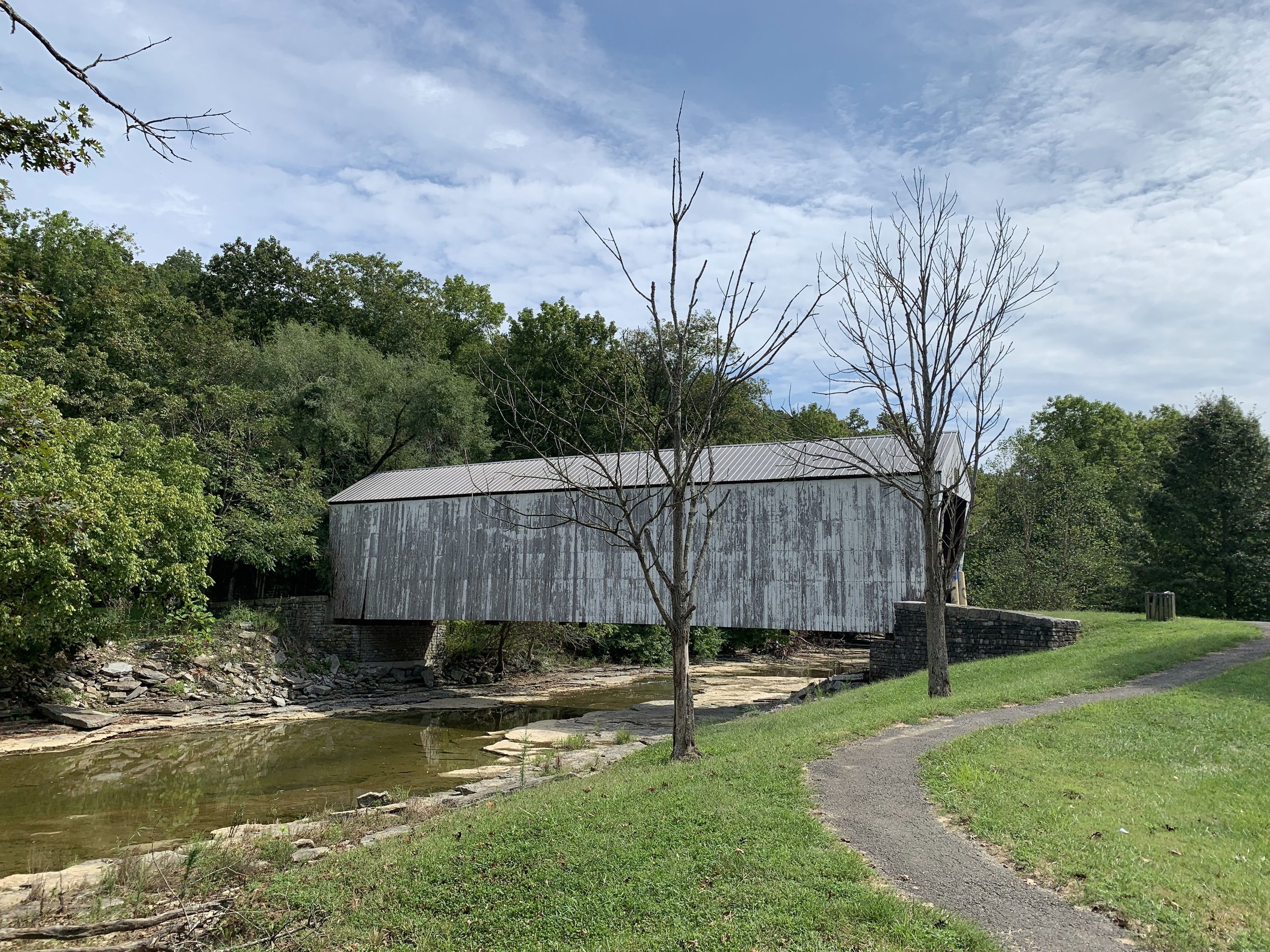
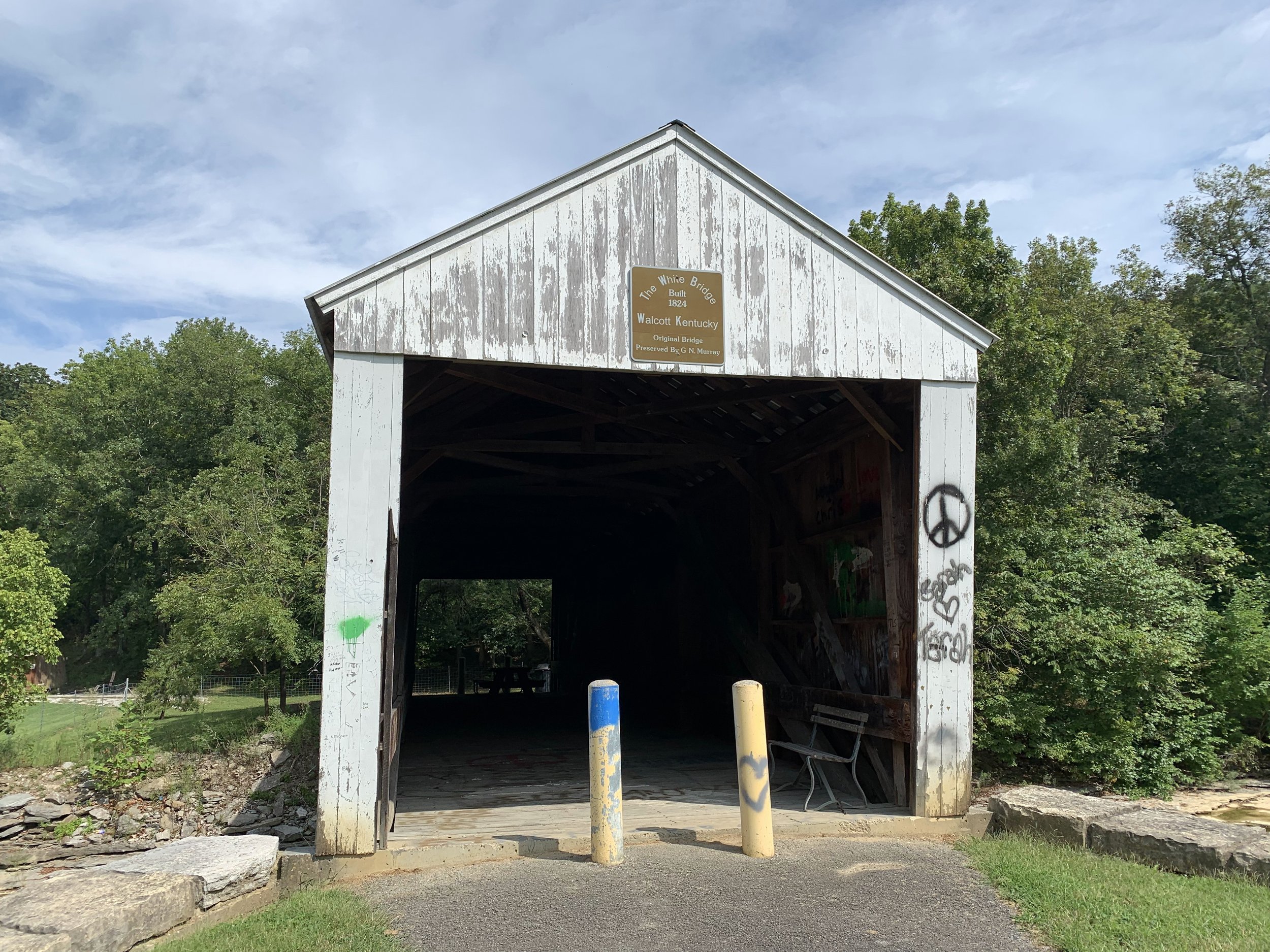
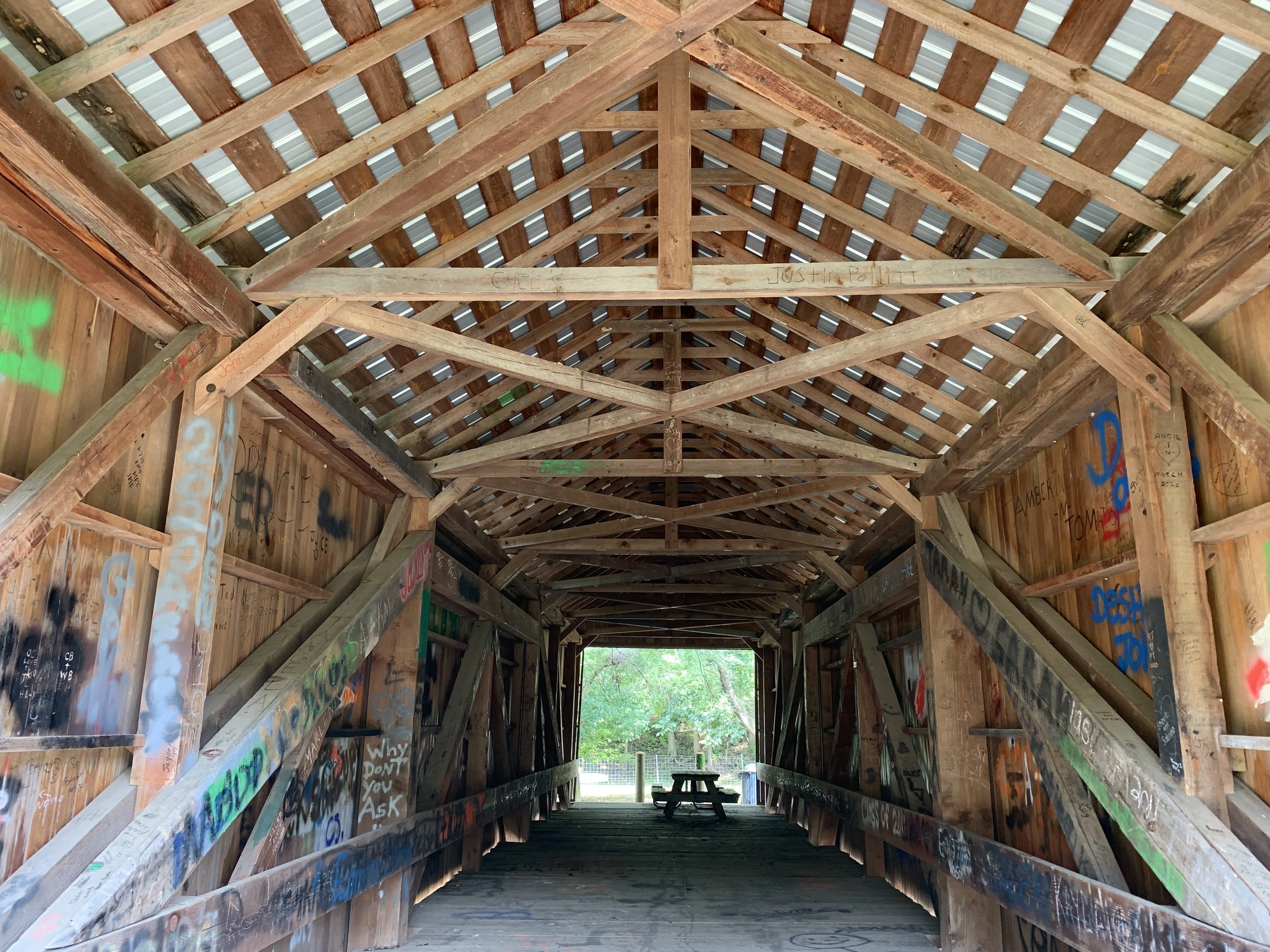
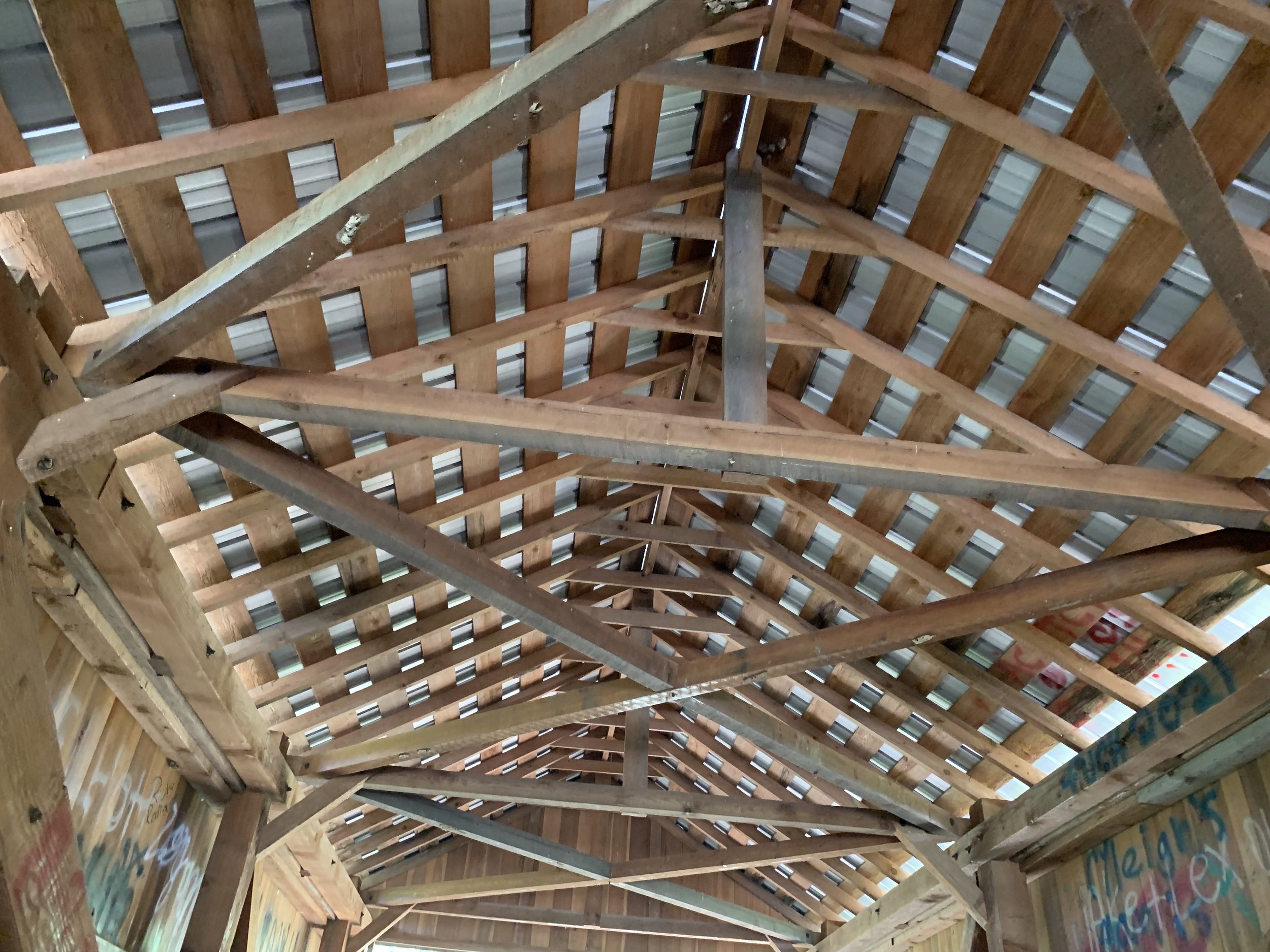
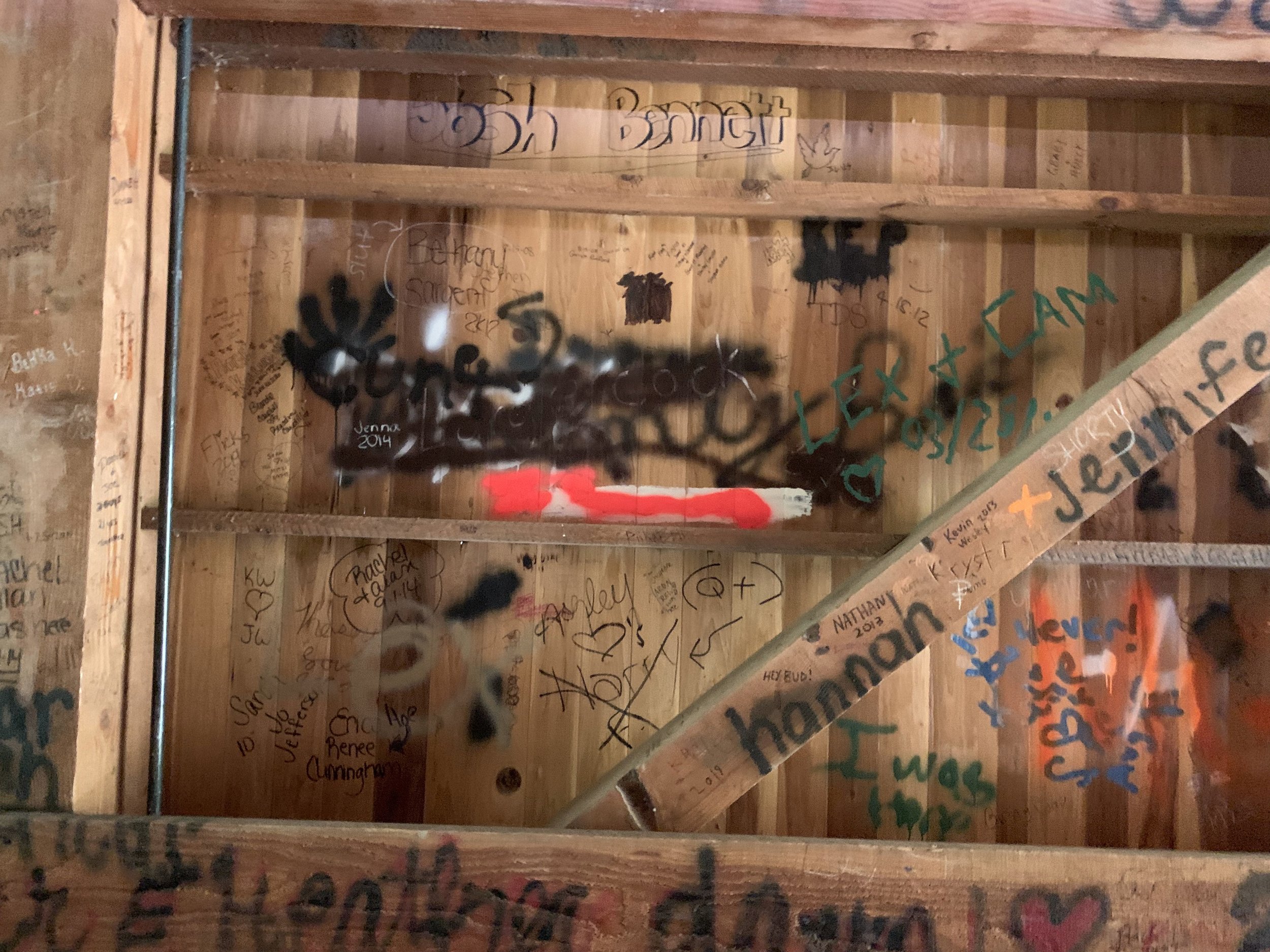
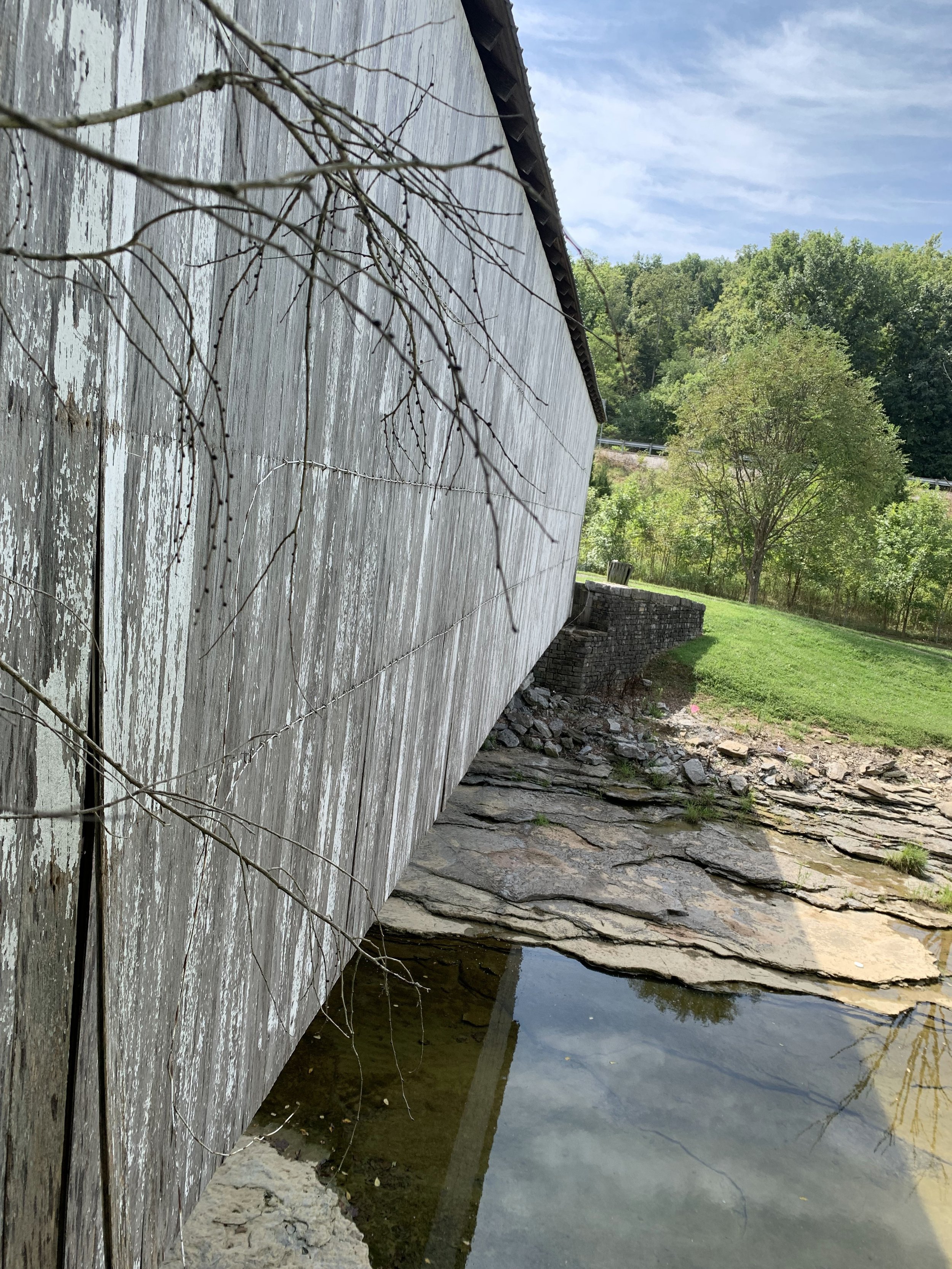
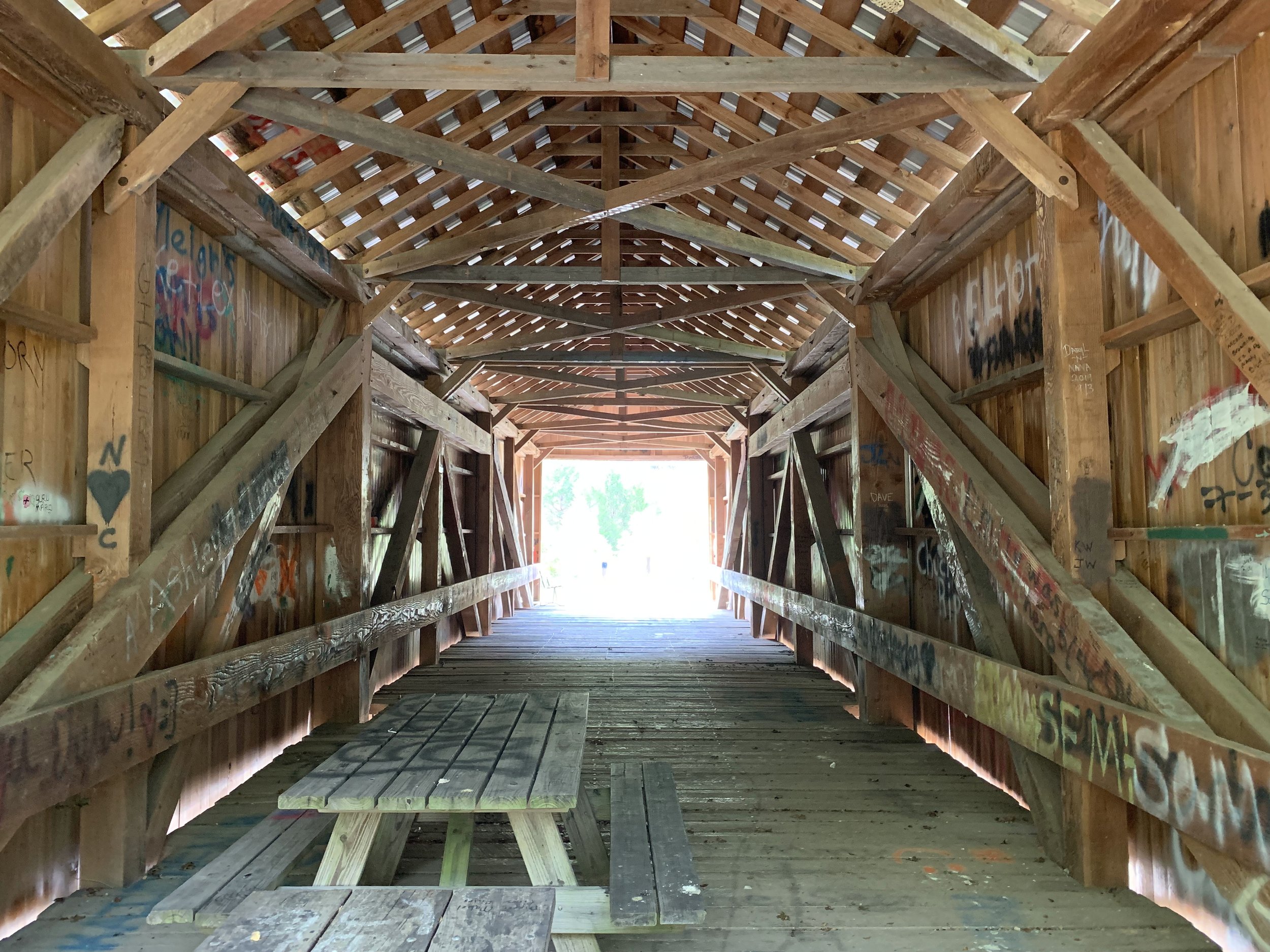
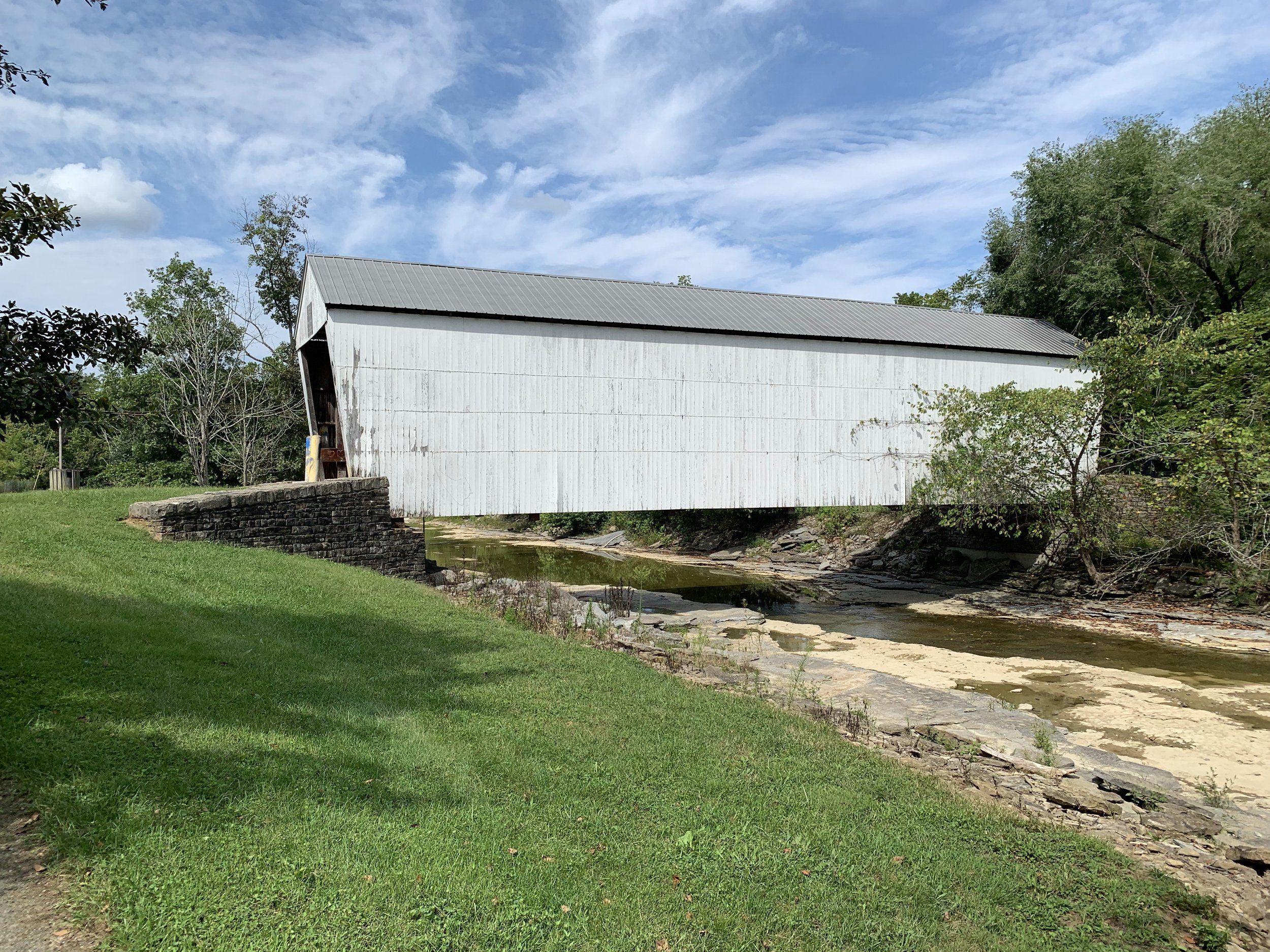
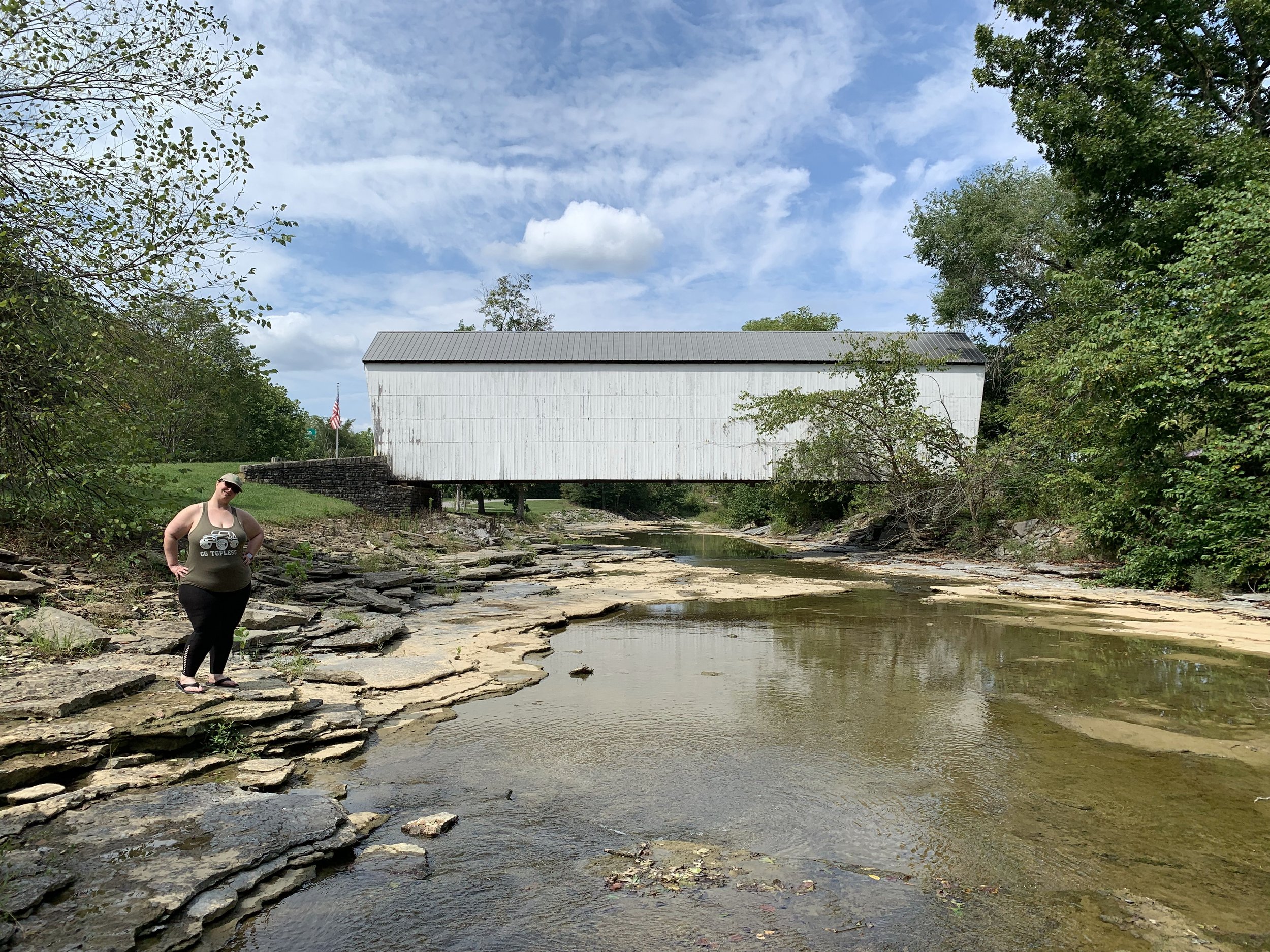
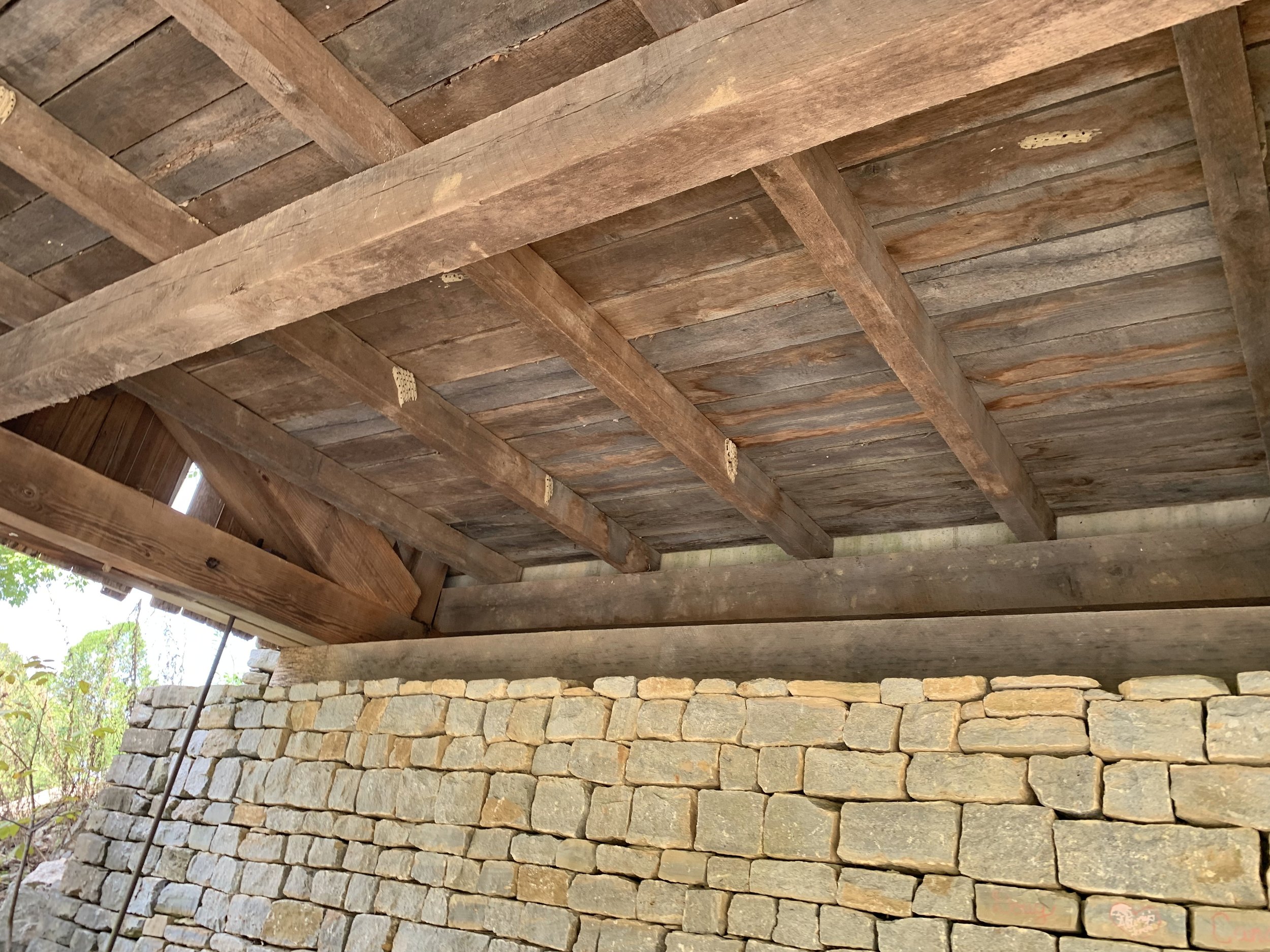
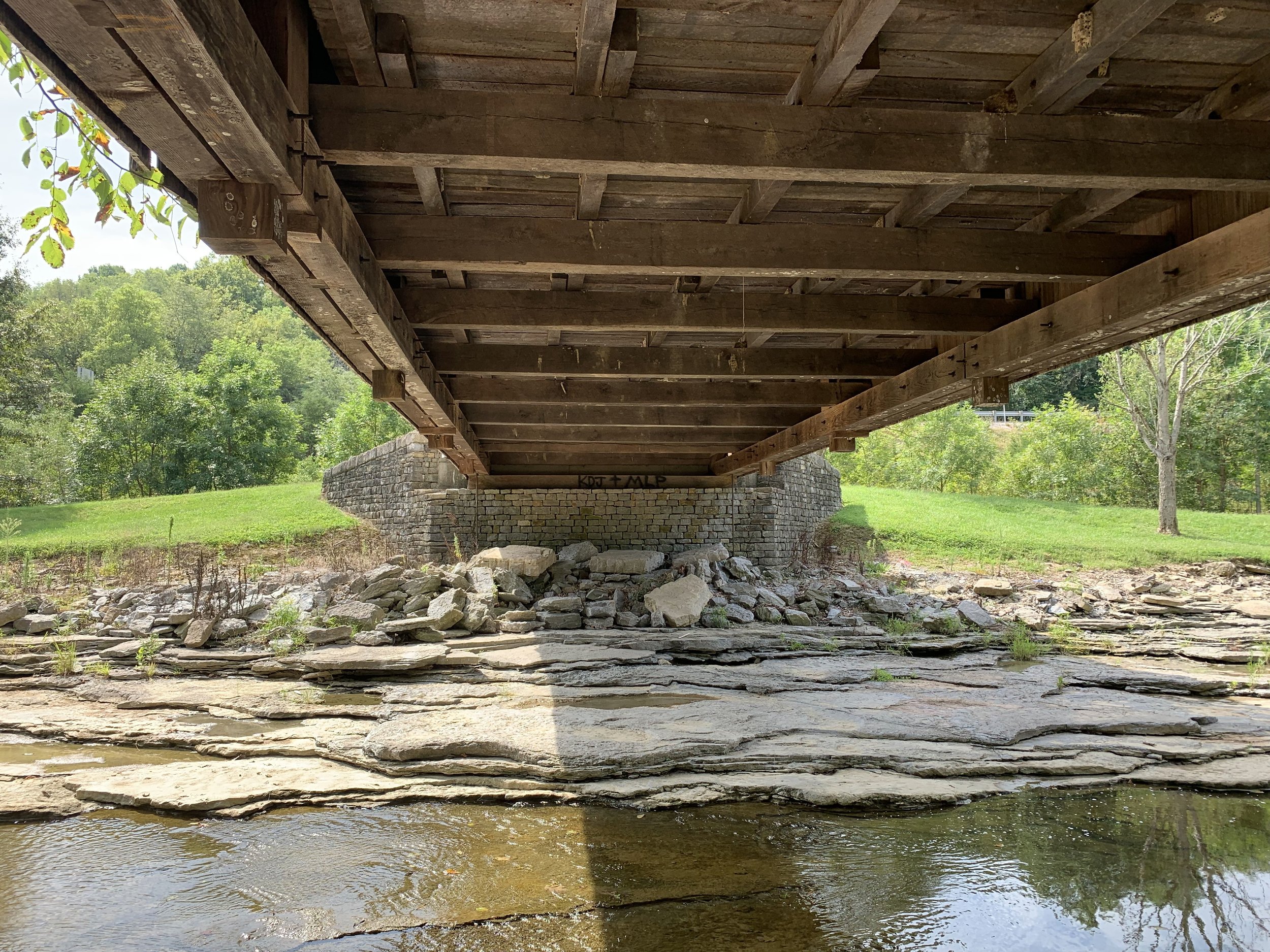
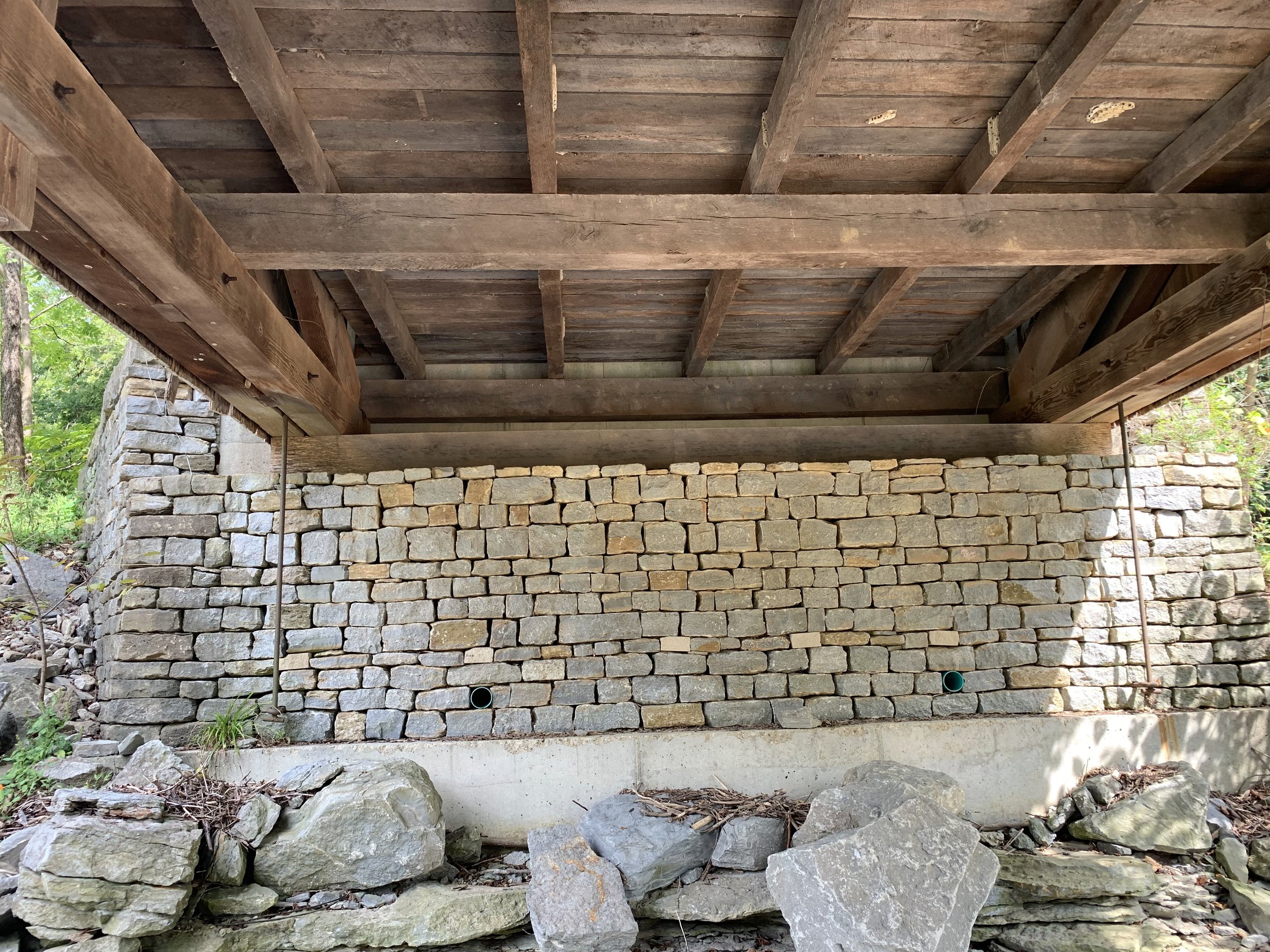
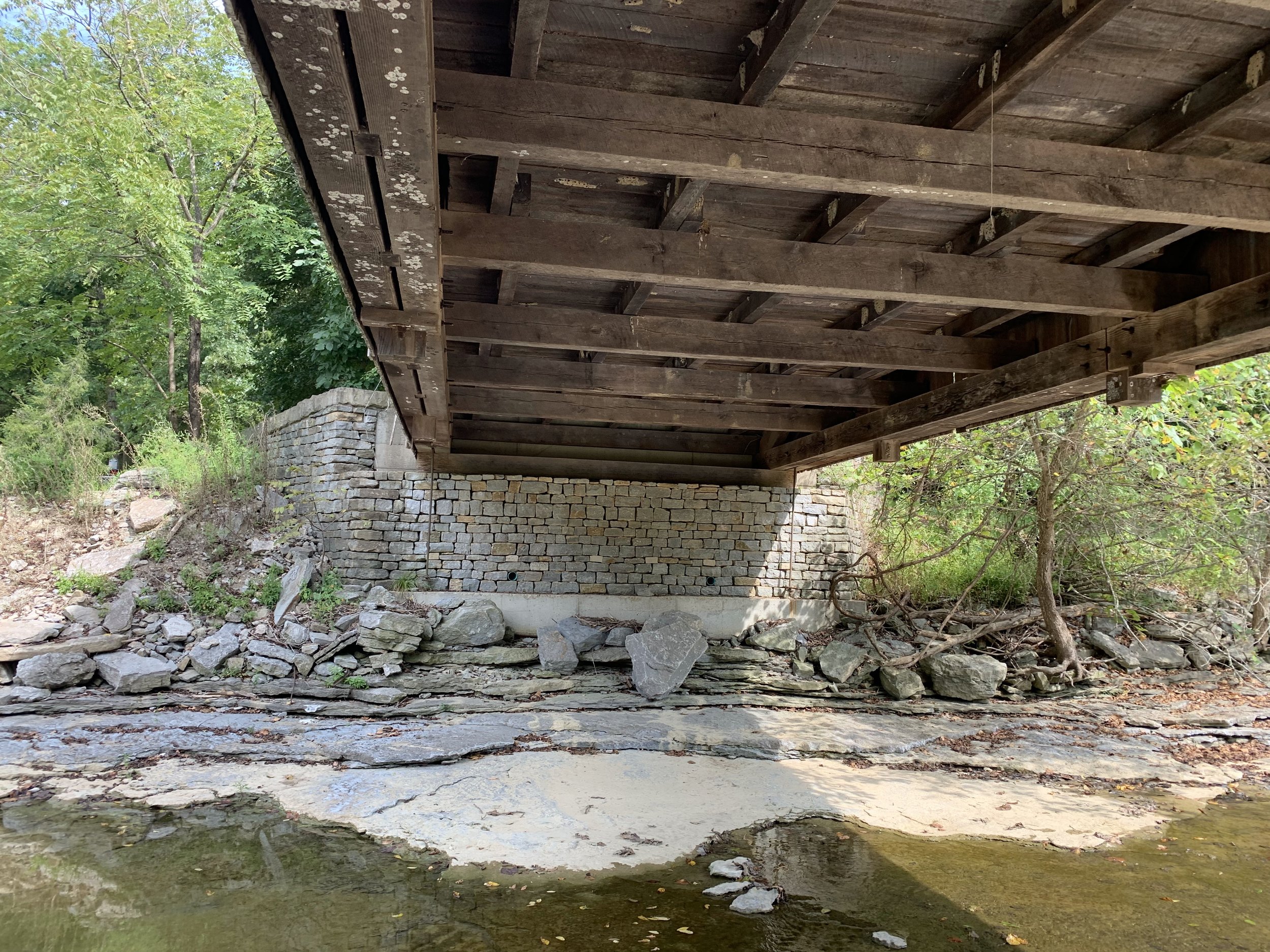
Just a few miles north of Brooksville, Kentucky where state highway 1159 meets Locust Creek sits a hidden gem of Kentucky history. Although the state was once home to hundreds of covered bridges, the Walcott Covered Bridge is one of only 11 that remain. At 75 feet in length she is not our longest or our grandest, but her perfect location makes her perhaps the most picturesque.
Originally built in 1824, the bridge is a hybrid of the Queen Post and King Post designs. Heavy flooding along Locust Creek caused massive damage to the bridge in both 1997 and 1998, ultimately leading engineers to have the bridge relocated 400 feet further east to an area of the creek better suited to ensure its long term survival. That decision not only helped ensure that the bridge can be enjoyed by future generations, but it honestly gives us everything that makes this bridge so great.
First off, it’s been torn apart and rebuilt at its new location. This means that the bridge is one of the most solidly constructed to be found in the state. The rebuild is old enough that it could use a fresh coat of paint, but otherwise it looks perfect. Meanwhile the new location not only ensures that the bridge won’t be impacted by flooding, but it also positions the bridge to be the perfect tourist attraction.
The new location is situated in an area where the creek is never more than knee deep. Meanwhile the creek bed is stair-stepped to the point that both sides of the bridge offer a dry section of bedrock allowing you to walk completely under the bridge. This affords the visitor a great look at the construction of the bridge, and perfect photo opportunities.
I’ve been to all 11 remaining covered bridges in Kentucky. All of them are beautiful, some of them are genuinely impressive feats of engineering, and all are worth the trip. Wolcott though is possibly the only one that you could really make a day of. Bring your boyfriend/girlfriend, bring the kids, bring a picnic. Enjoy the bridge, but more importantly enjoy the scenery. Get away from it all, and just enjoy the day. Of course if a day of relaxation fails to hold your interest, you are only about half an hour from Newport/Cincinnati, and all that they have to offer.
Want to Experience This Adventure for Yourself?:
The Walcott Covered Bridge can be found at https://goo.gl/maps/YL2m8WC8WoxyMuMv6
Chinn’s Cave House
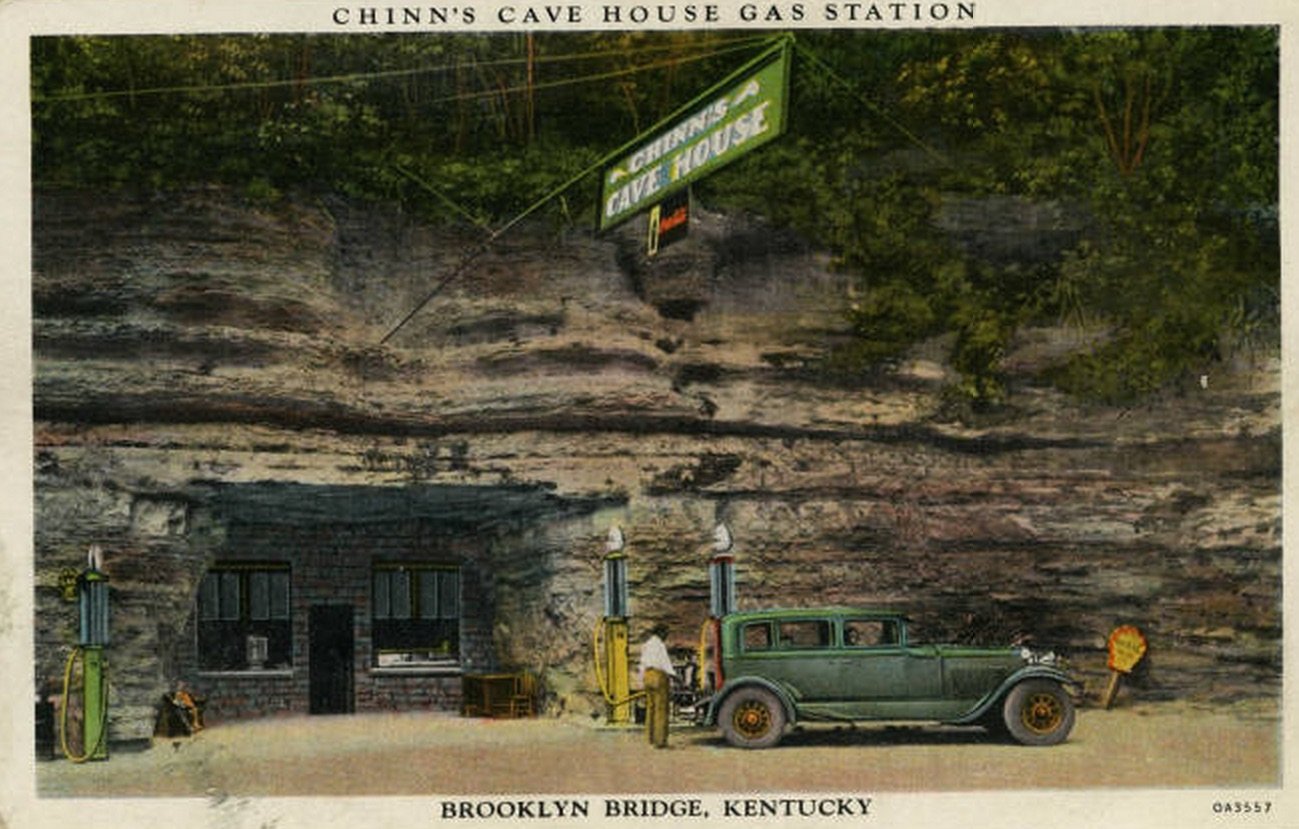
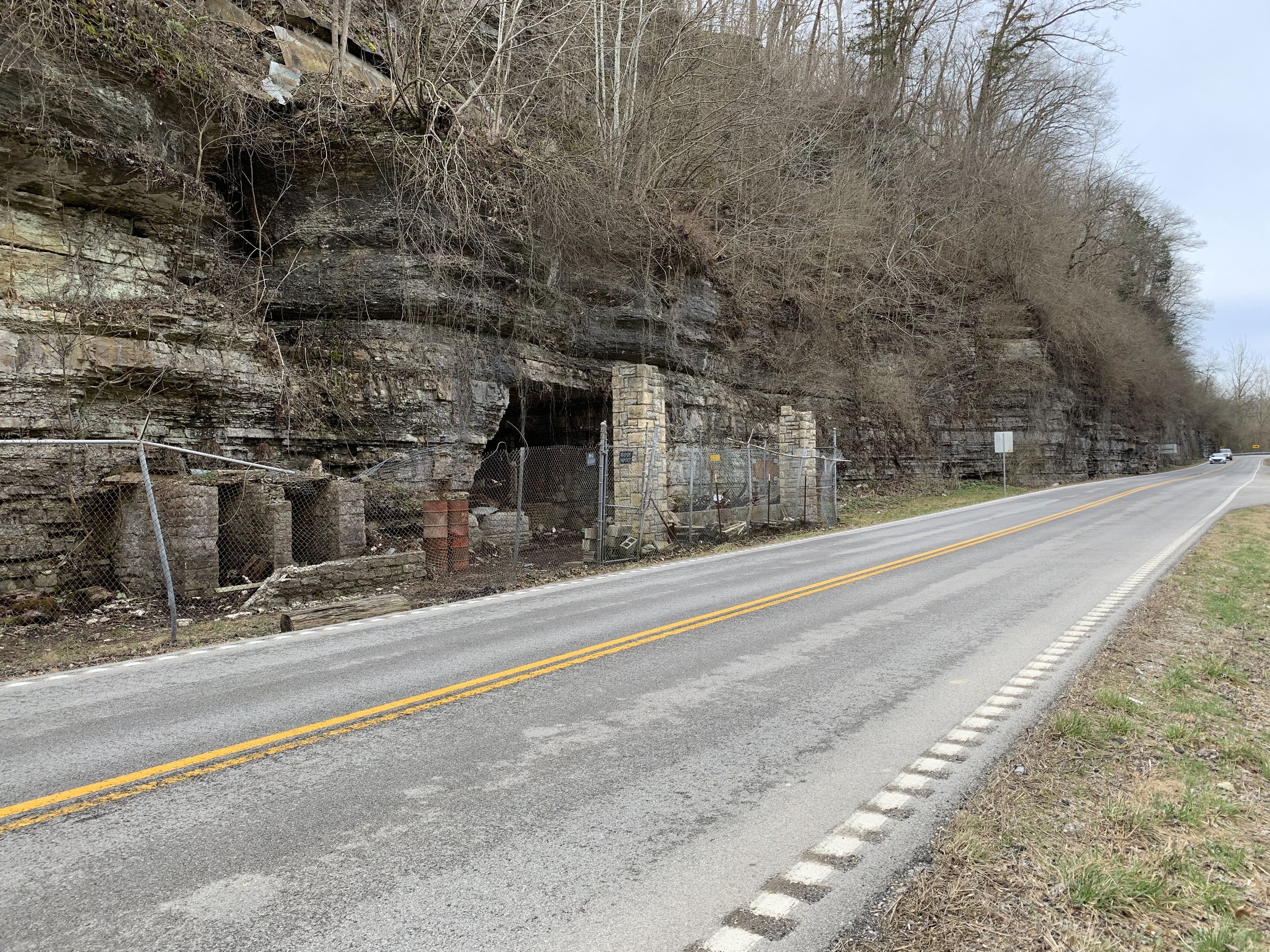
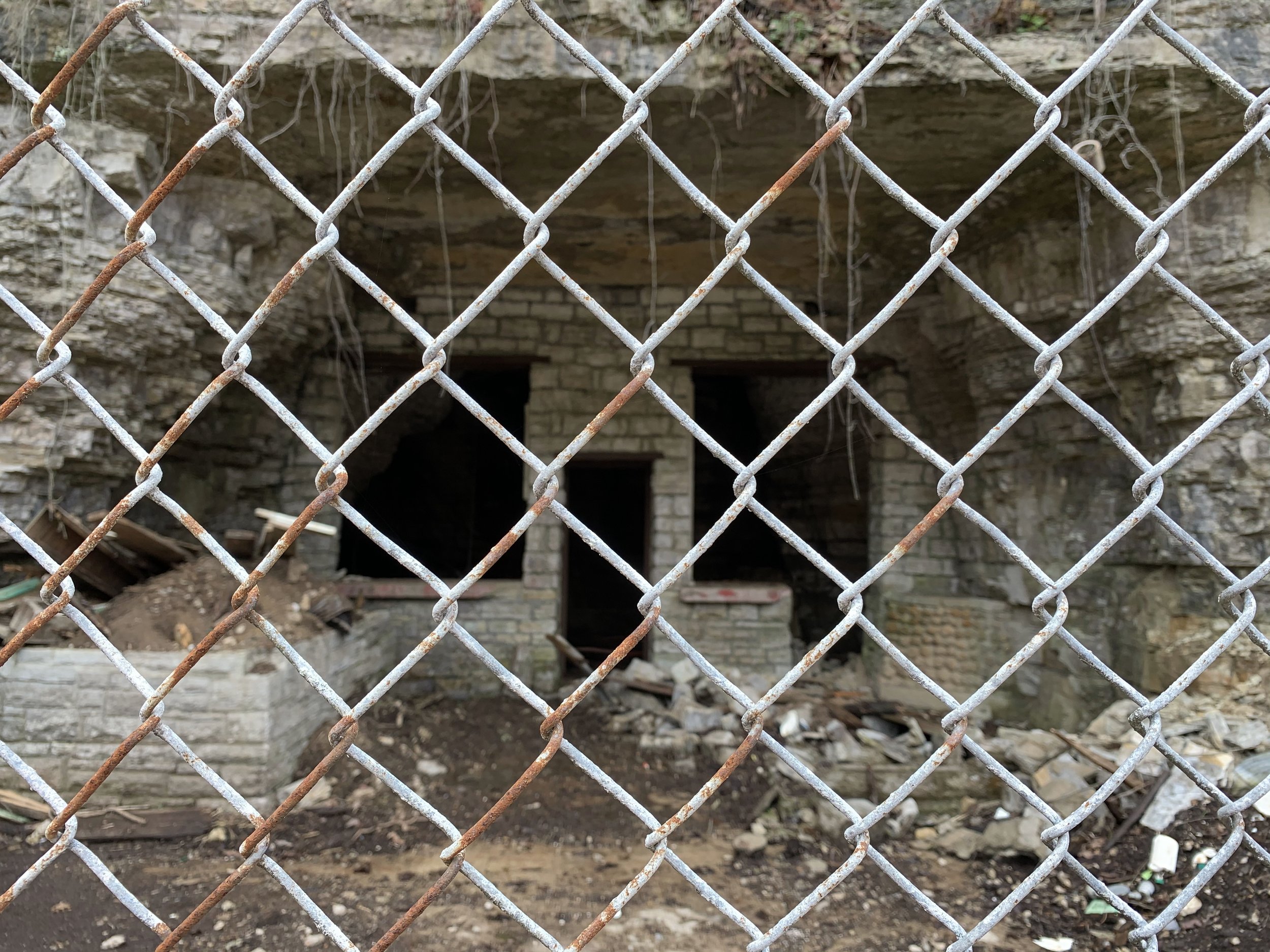
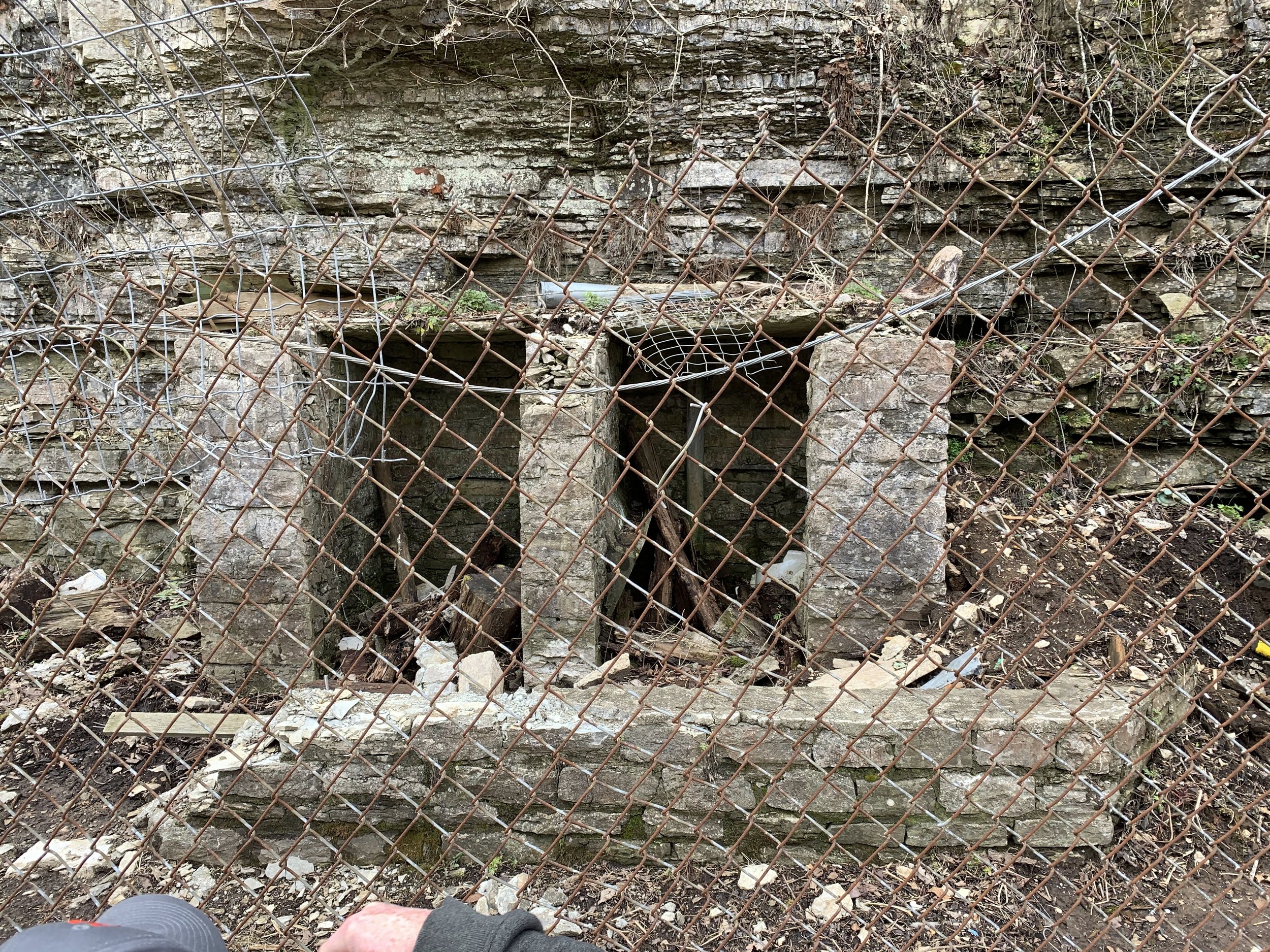
Traveling along Route 68 roughly halfway between Lexington and Harrodsburg you’ll pass what at first glance appears to be just another abandoned old mine shaft. In reality it’s a Kentucky curiosity like none other. It’s story involves a military genius, a restaurant with a very unique location, an illegal gambling din, and perhaps the most creative successful legal defense in history. This is the story of Chinn’s Cave House.
The area that would come to be known as Chinn’s Cave House began life as a simple calcite mine which was common for the area. After giving up all of the calcite it had to offer the abandoned mine was purchased by Colonel George M. Chinn. Mr. Chinn’s life story is something straight out of a movie. The inventor of the Mk 19 40mm grenade launcher (a weapon still used by the U.S. military to this day), he would later serve as Governor Happy Chandler’s personal bodyguard, and the Sergeant of Arms for the Kentucky State Legislature. In a life filled with such remarkable stories, it is his endeavor with our simple cave that offers the comic relief.
After purchasing the former calcite mine Colonel Chinn set about converting it into a combination gas station and restaurant. The novelty of having a meal in a cave proved very popular, and tourists flocked from all around to visit this unique establishment. Even given this surge in tourism, the restaurant seemed to be far more profitable than a simple eating establishment had any right to be. Eventually authorities would find that this unbelievable profit margin was indeed too good to be true, and that Colonel Chinn made the lion’s share of his income from an illegal gambling din hidden within the cave’s tunnels.
Seemingly dead to rights, Colonel Chinn would ultimately prove his innocence in court with a shockingly simple defense. No one had ever won a single game on his slot machines, because they were rigged. If a player had no chance of winning, then the act of playing the machines did not constitute gambling. Chinn was acquitted on all charges. Although Chinn had won his day in court, Chinn’s Cave House was not financially viable without the illegal gaming, and the establishment never reopened following the trial. Nature soon reclaimed the area, and the cave fell into a state of disrepair.
Today a visitor to the area will find the cave in a totally dilapidated state. The gas pumps are gone, and the awning over the entrance has collapsed. The doors and windows are long since lost to time, and even the chain-link fence meant to keep out intruders is falling down. About the most recognizably intact area is the restrooms of the former gas station which still contains shards of the former toilet. Even so, with a bit of imagination it’s easy to see cars pulling up to this establishment to fill up their tanks, and perhaps grab a quick bite to eat. This complete oddity of Kentucky history is well worth the trip to see. It’s also only a few miles down the road from the famous Shaker Village, and can be easily incorporated into a road trip.
Want to Experience This Adventure for Yourself?:
The site of the former Chinn’s Cave House can be found at the below coordinates. There is ample roadside parking to accommodate potential visitors. The cave is private property, and in its current state would be dangerous to enter. Please respect the fence, and enjoy this attraction from a distance.
https://goo.gl/maps/y4HAVvsHqs6WbcTX9
Mt. Pisgah Presbyterian Church
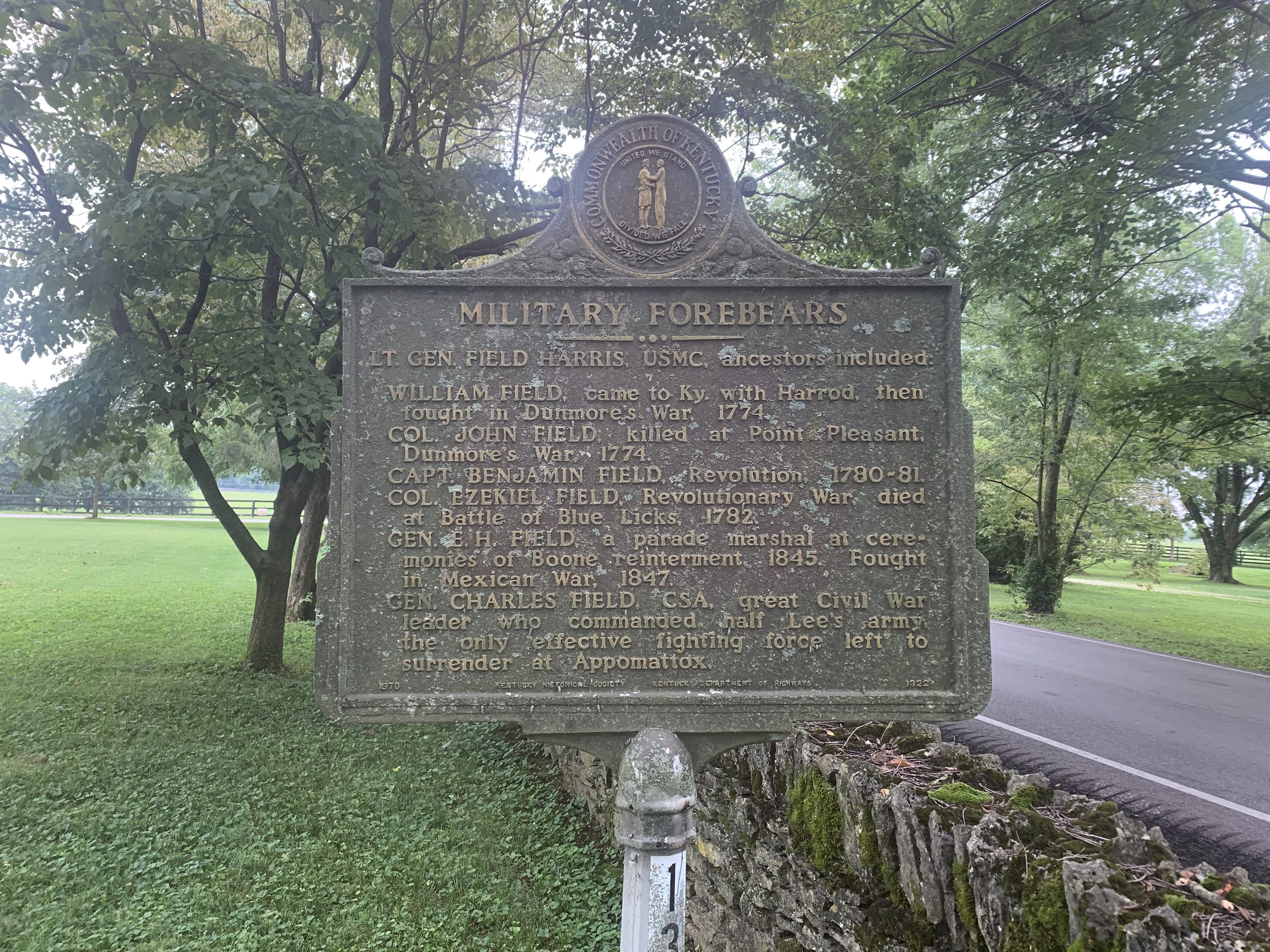
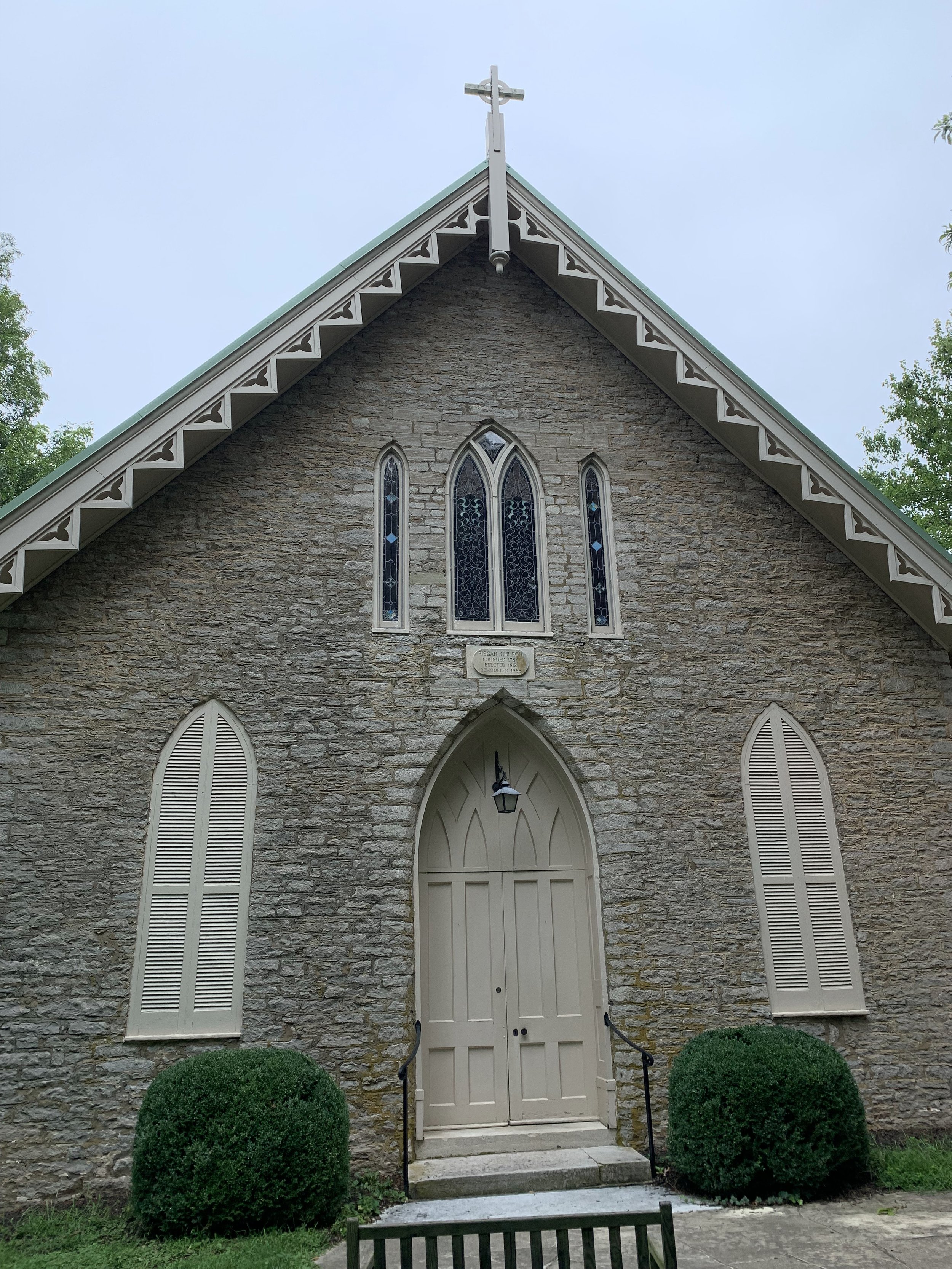
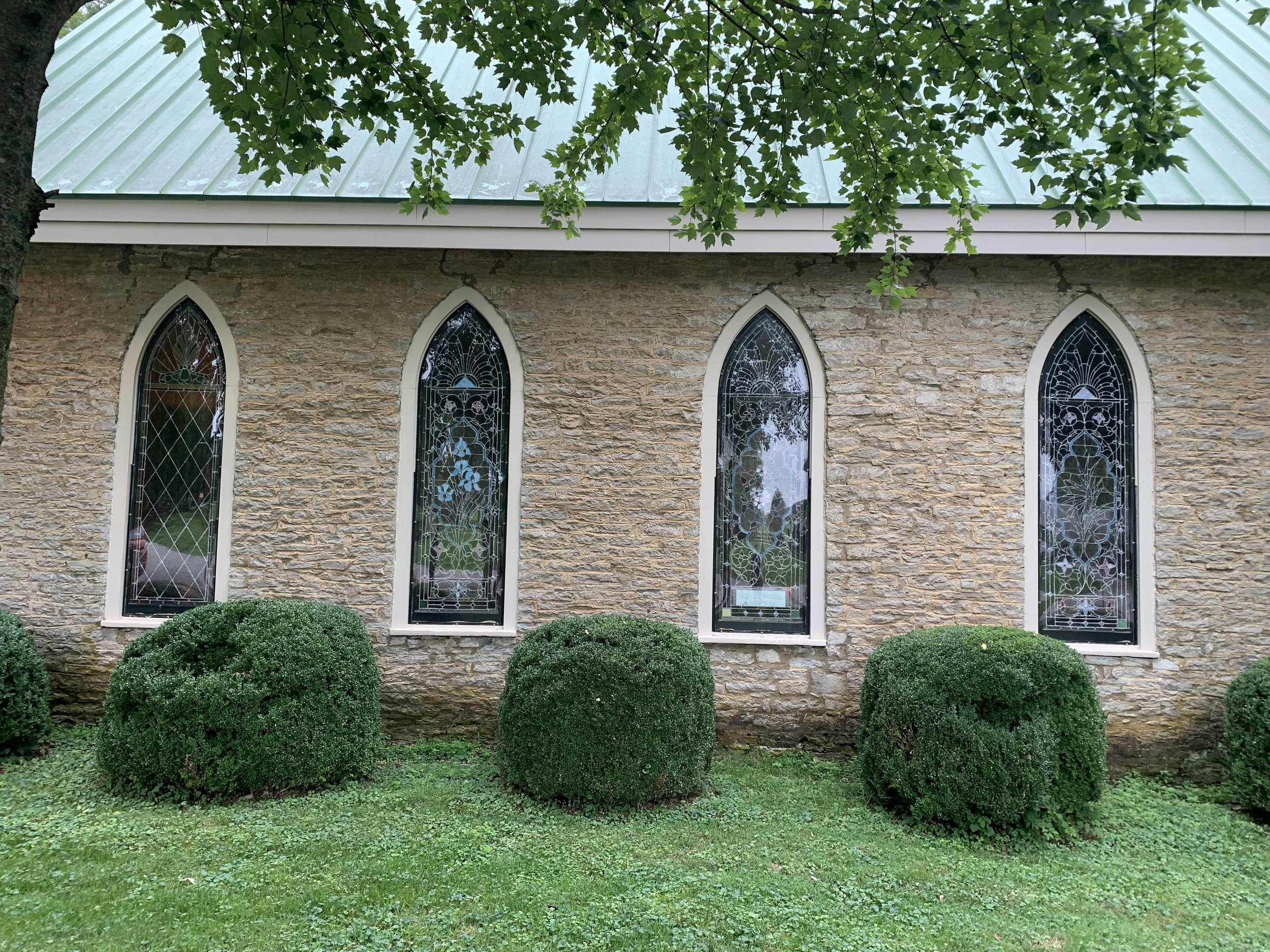
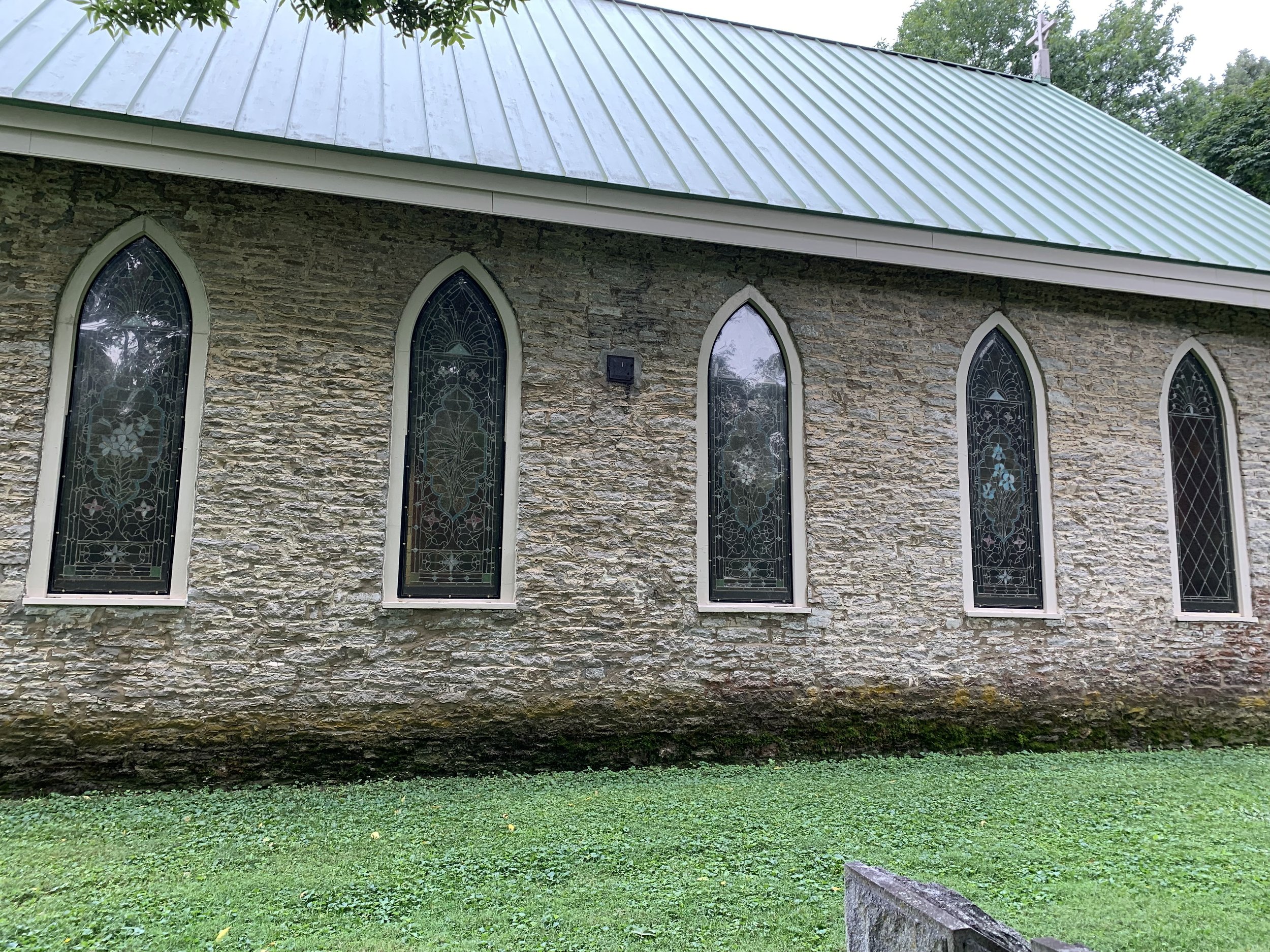
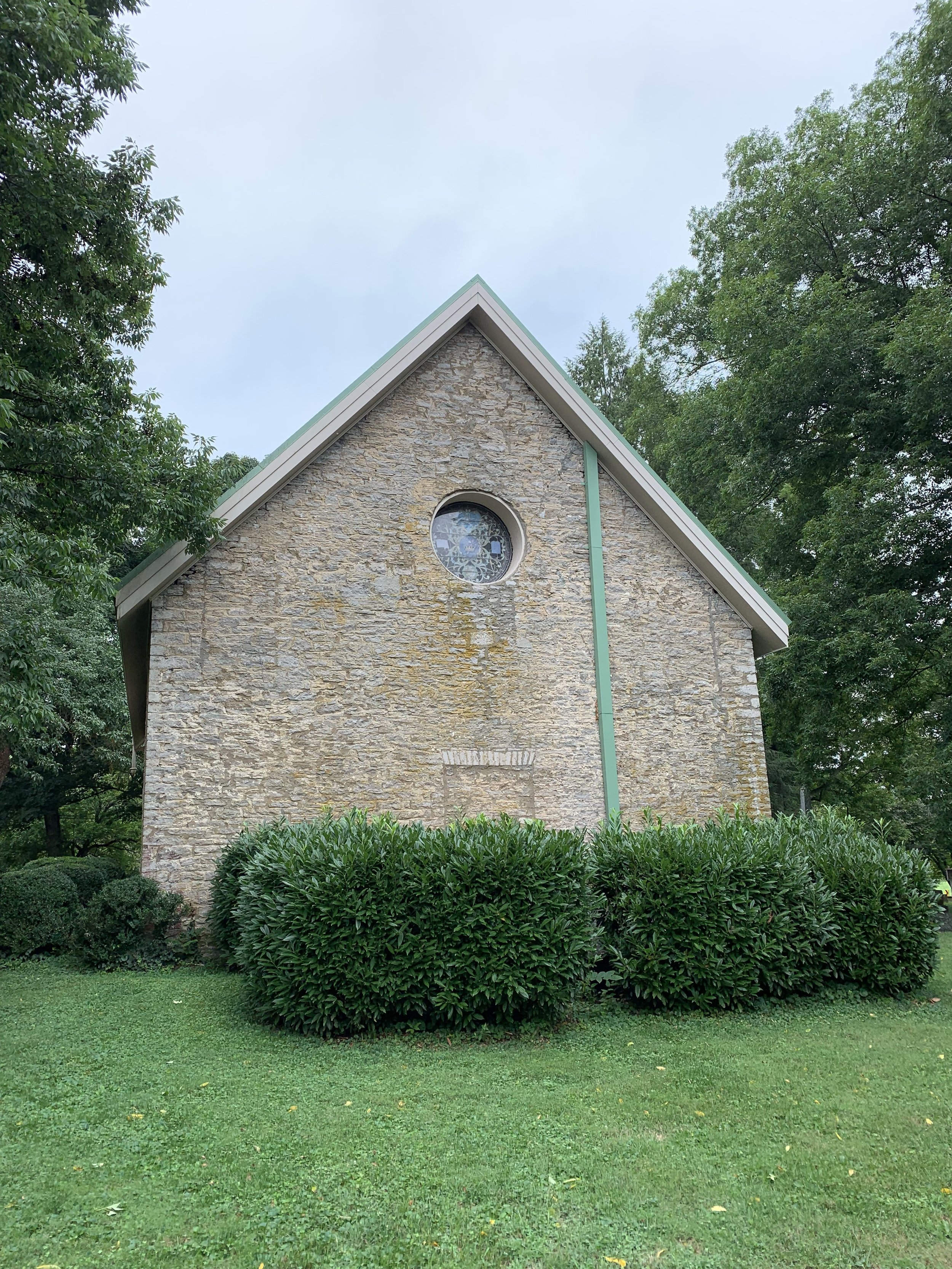
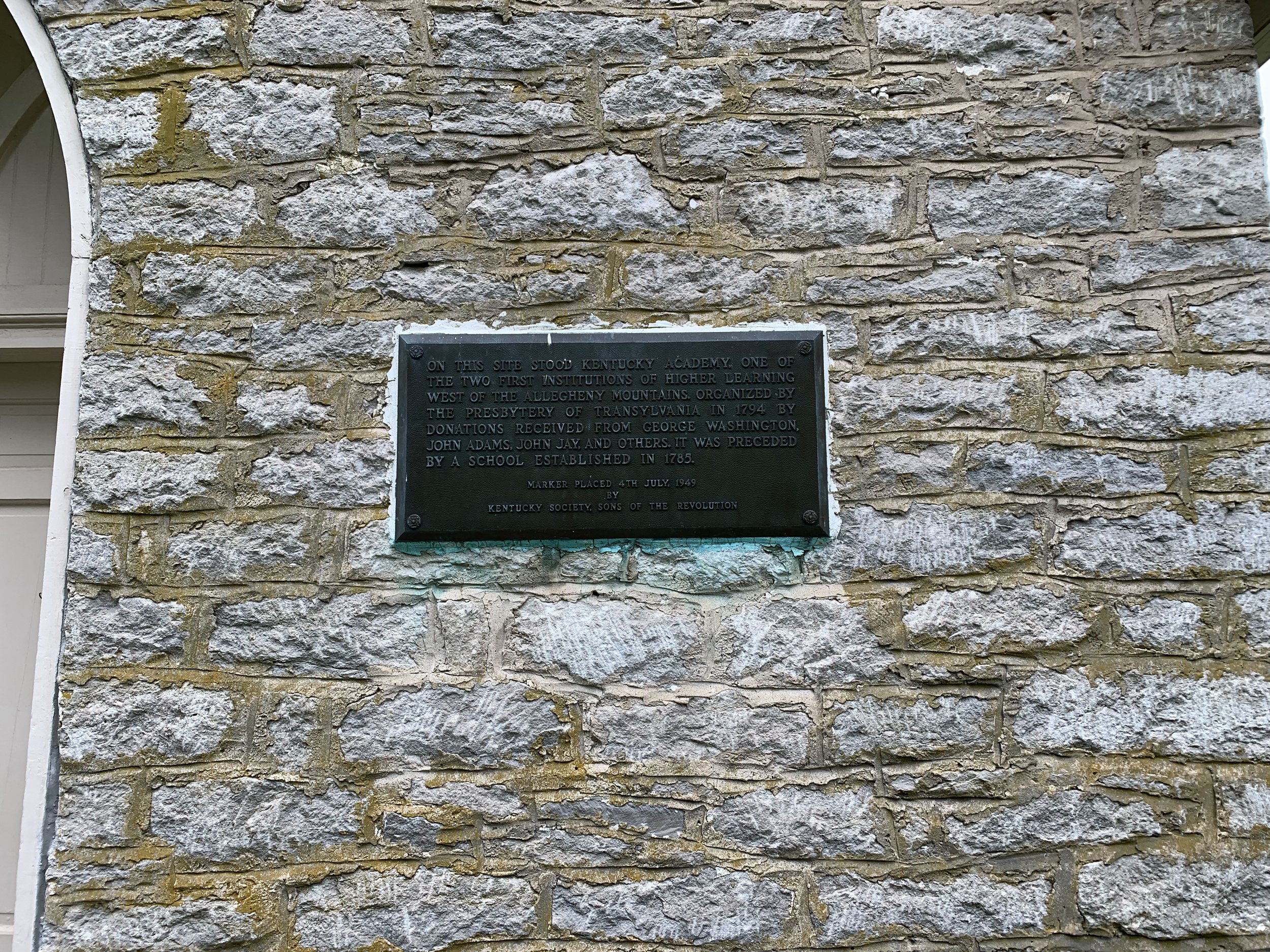
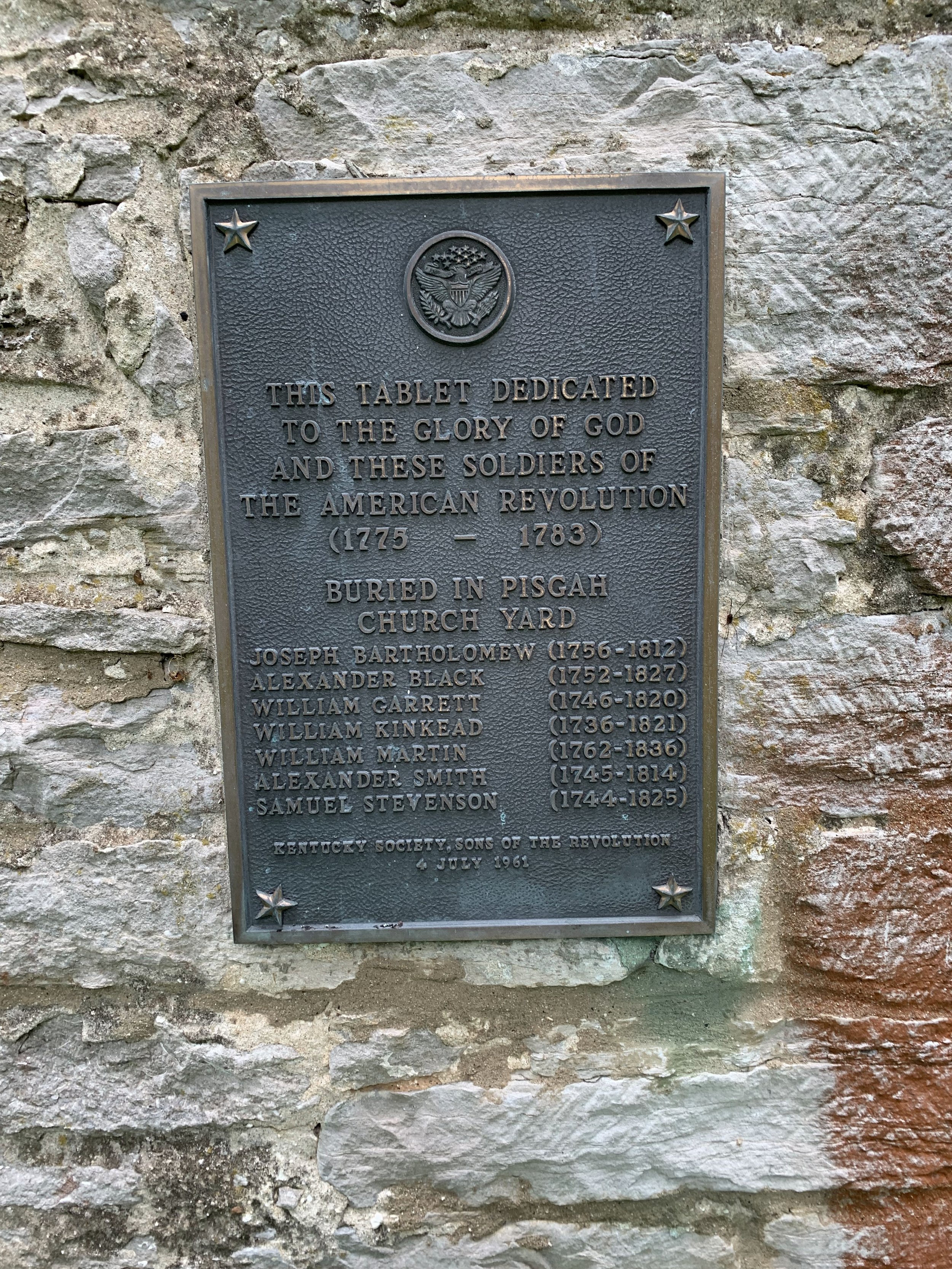
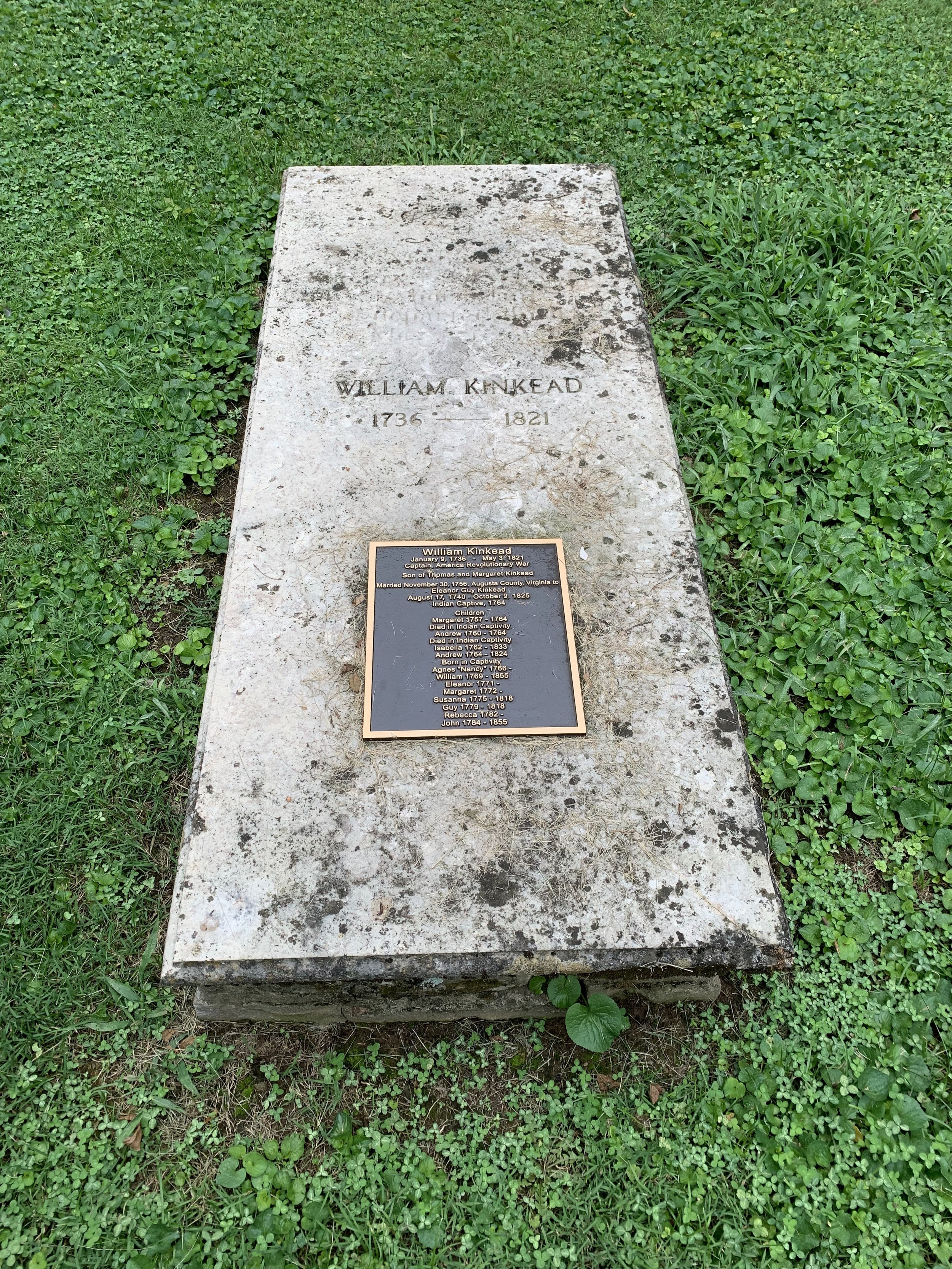
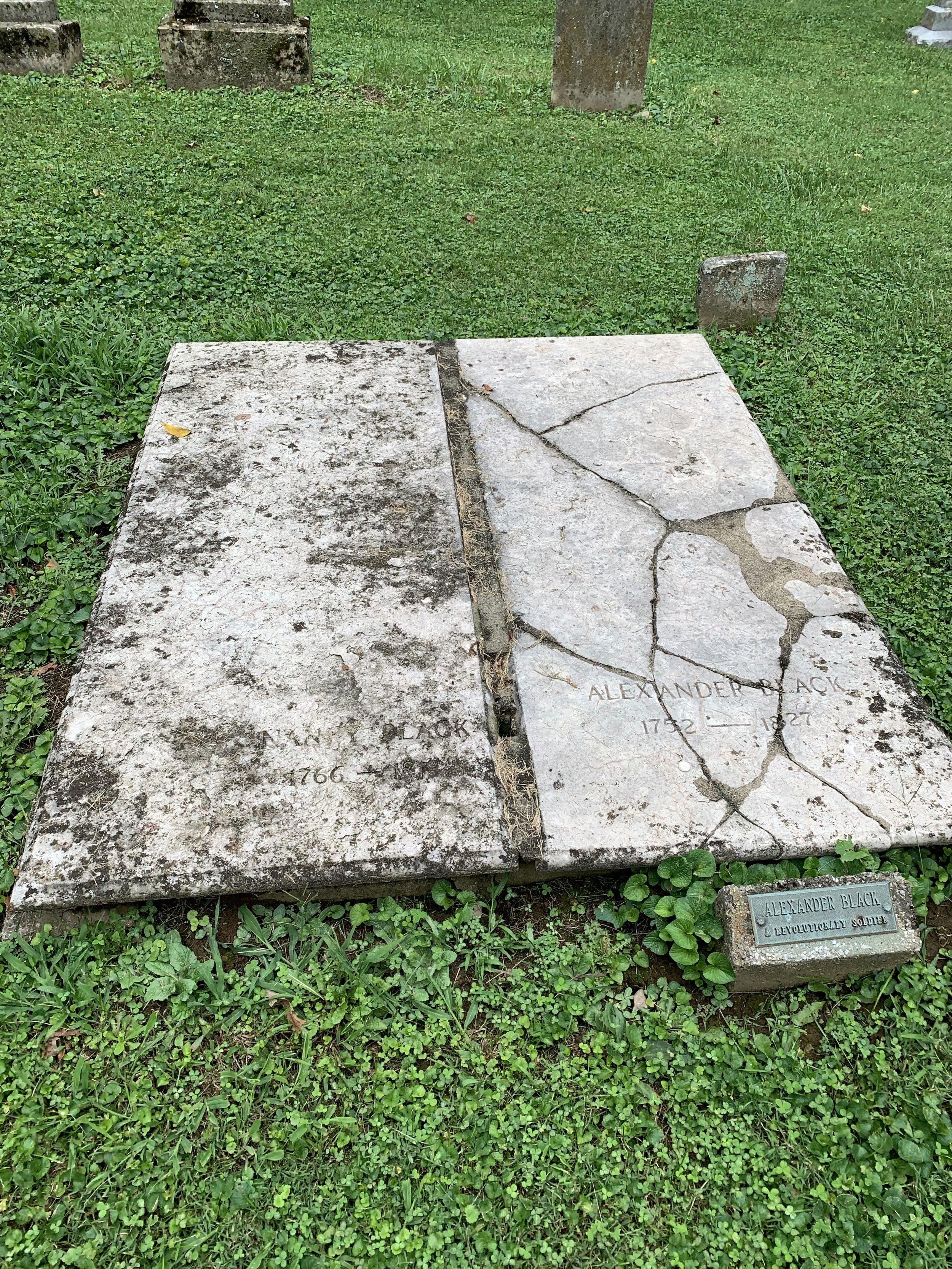
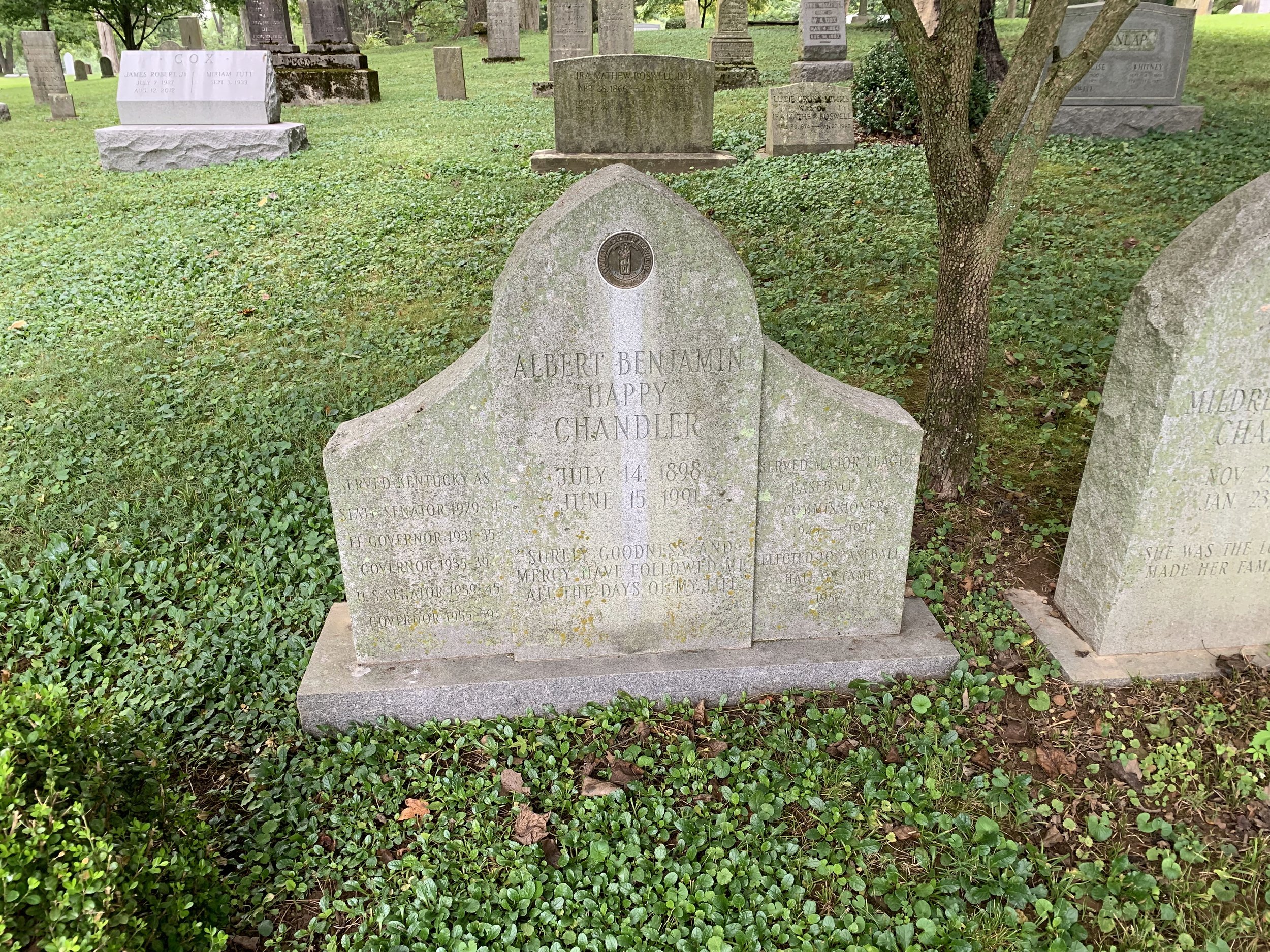
Just about everybody from central Kentucky has driven down US 60 in Woodford County to gaze upon the Kentucky Castle. What few realize though, is that sitting less than half a mile away down Pisgah Pike is a breathtaking piece of Kentucky history that outshines the castle.
The Mt. Pisgah Presbyterian Church and its associated graveyard were founded in 1784 to serve the small community of Pisgah (named for a mountain in the bible). The burial grounds feature several graves from that time period, although it’s most famous inhabitants are 7 of revolutionary war veterans, and former Kentucky governor and commissioner for Major League Baseball Happy Chandler. The real reason to make this trip to rural Woodford County though is the church building itself.
Built in 1812, the humble stone structure is listed on the National Register of Historic Places. A major remodel in1888 provided the church with a truly stunning feature. Each side of the building features 5 large stained-glass windows covered in floral patterns, including a faint blue that is almost otherworldly. The front of the building also has a smaller set of these windows with patterns that are just as intricate. They were commissioned by Dr. Robert C. James and created by artist George Barnes of Philadelphia in memory of Dr. James’s mother “Nannie”.
The church sits in a fairly secluded spot, and in a world full of vandals the church has had to take protective steps by installing a plexiglass window outside of each of these works of art. In-person this does nothing to diminish their beauty, but it does mean that they don’t photograph very well. This is definitely a case where my pictures fail to capture just how amazing they really are. To see these delicate masterpieces adorning such a simple structure really highlights the strength and passion found in so many of these rural communities. They didn’t have much, but they really put everything into making the best of what they had.
If you live anywhere near the Lexington area I highly recommend making this trip. Be mindful though that the building is still in use as a functional church, so please be respectful and plan your trip around their schedule.
Want to Experience This Adventure for Yourself?:
710 Pisgah Pike
Versailles, Ky United States
40383
Jim Varney’s Grave

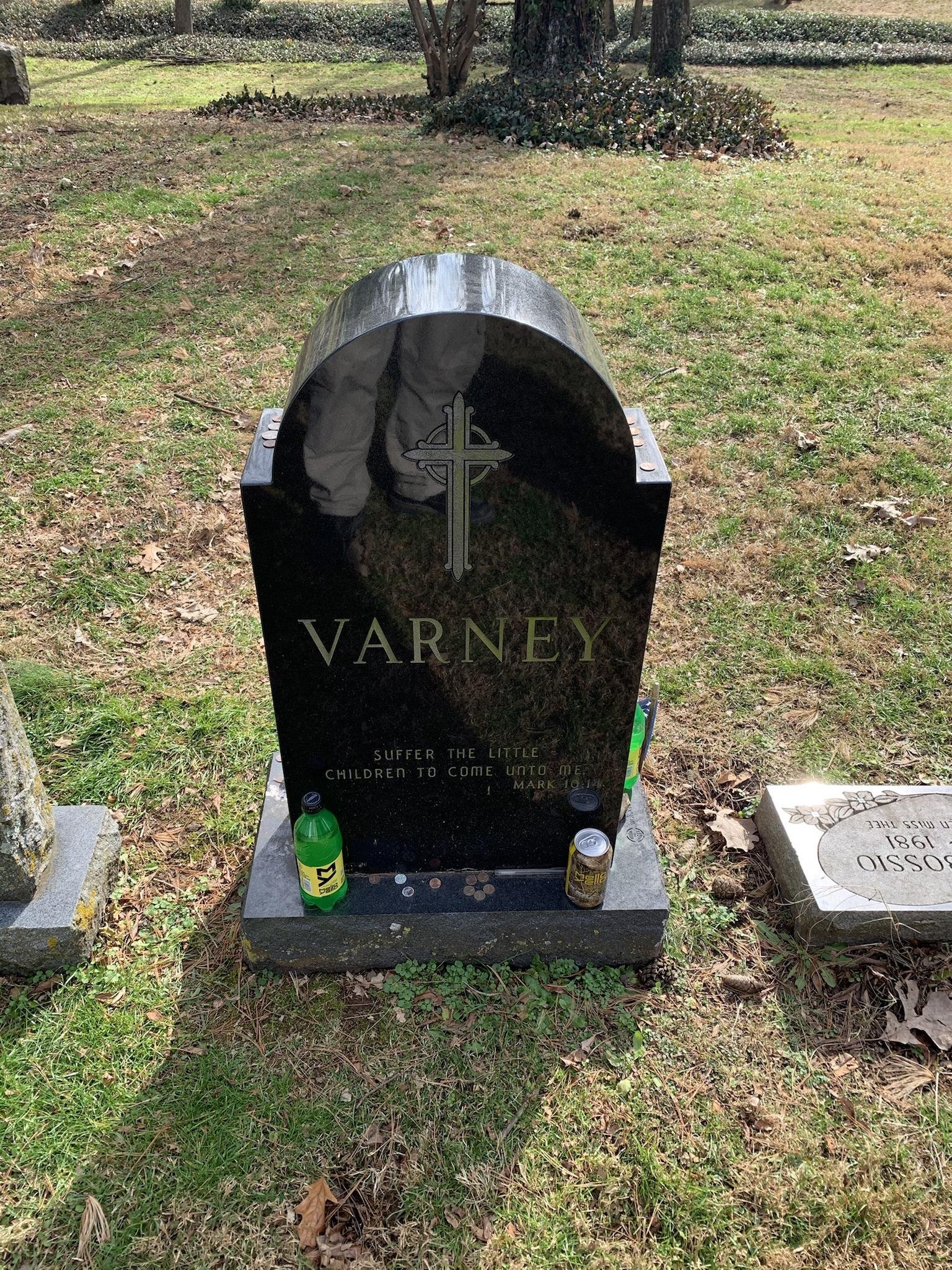
Jim Varney was a beloved actor, best known for his long-running comedic role as Earnest P. Worrell. A character that originated from low-budget TV ads in the Nashville area, that somehow managed to launch hit film series with 8 entries.
His other film roles included playing Jed Clampett in the 1993 film version of “The Beverly Hillbillies”, as well as voicing Slinky Dog in the Toy Story franchise.
A lifelong smoker, Varney was diagnosed with lung cancer in 1998, from which he would ultimately pass away in early 2000. His grave is located in the Lexington Cemetery, in his home town of Lexington Kentucky.
During my visit his grave was covered with mementos left by fans. These included several cans/bottles of Mello Yello(the Ernest character was a spokesman for the beverage at one point), a small baggie containing the Earnest films on DVD, and a cigarette.
Want to Experience this Adventure for Yourself?
Google Maps Coordinates for the Grave: - 38.05928691031714, -84.5127965915457
Primanti Bros (Part 2)
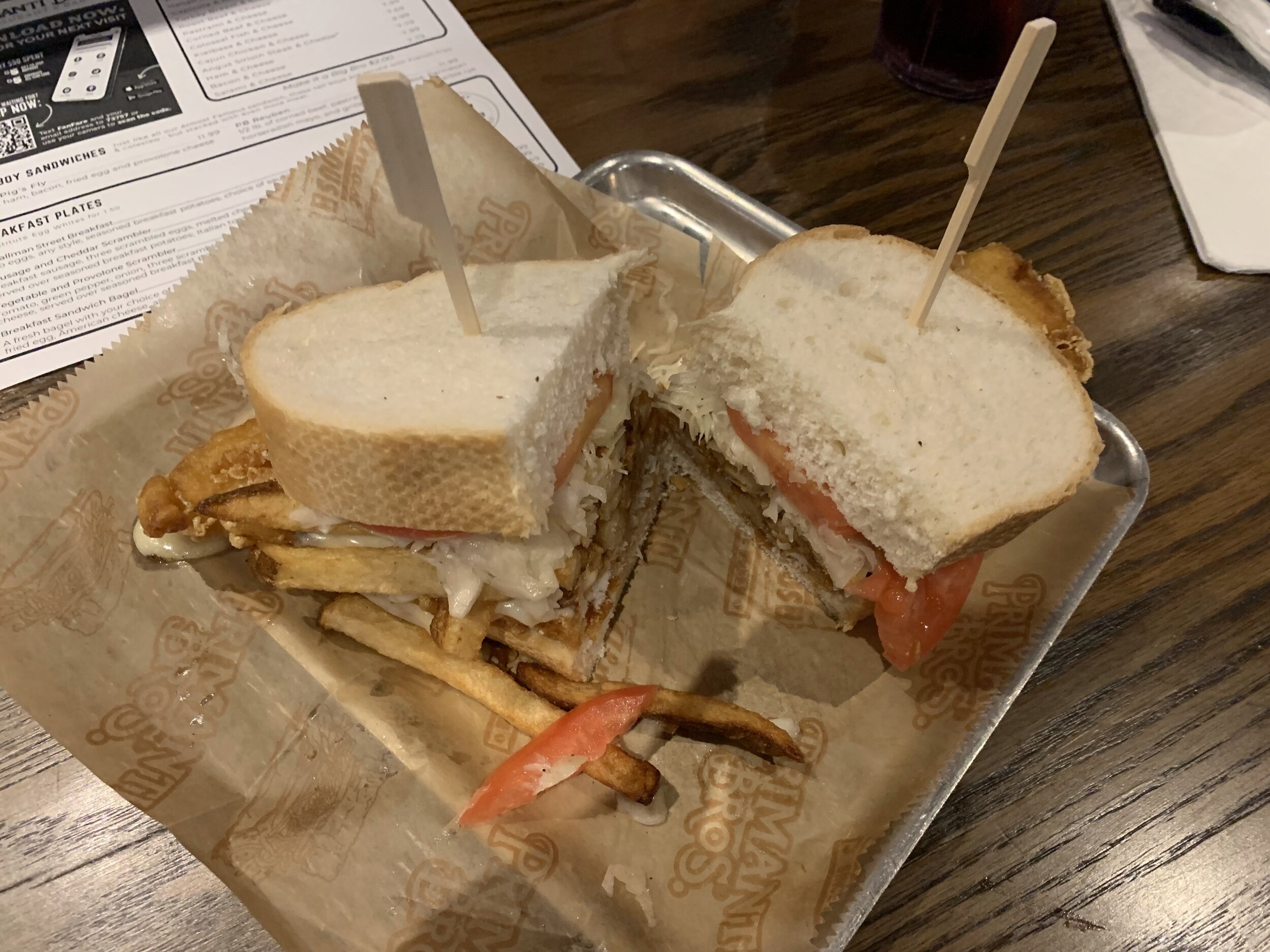

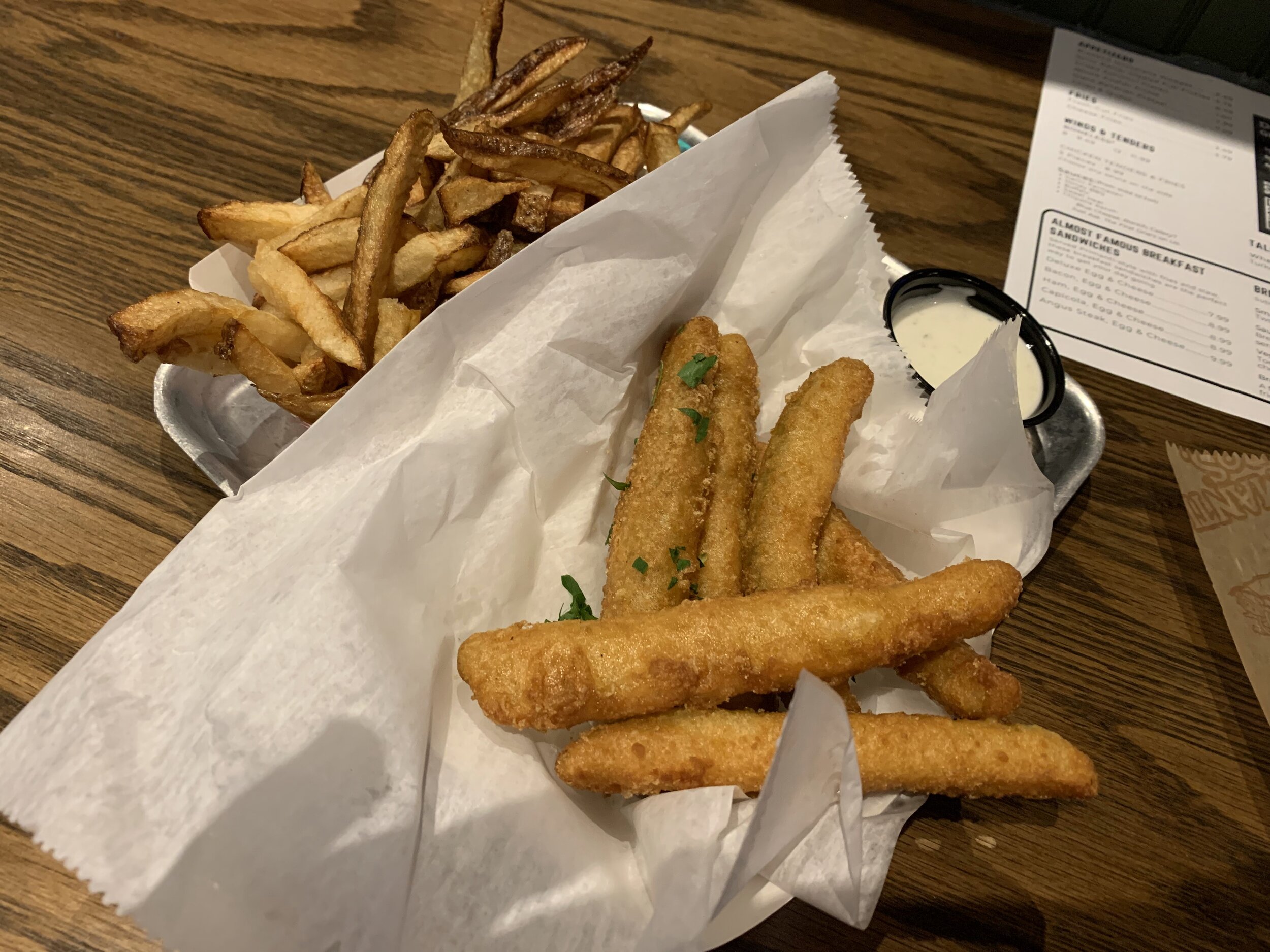
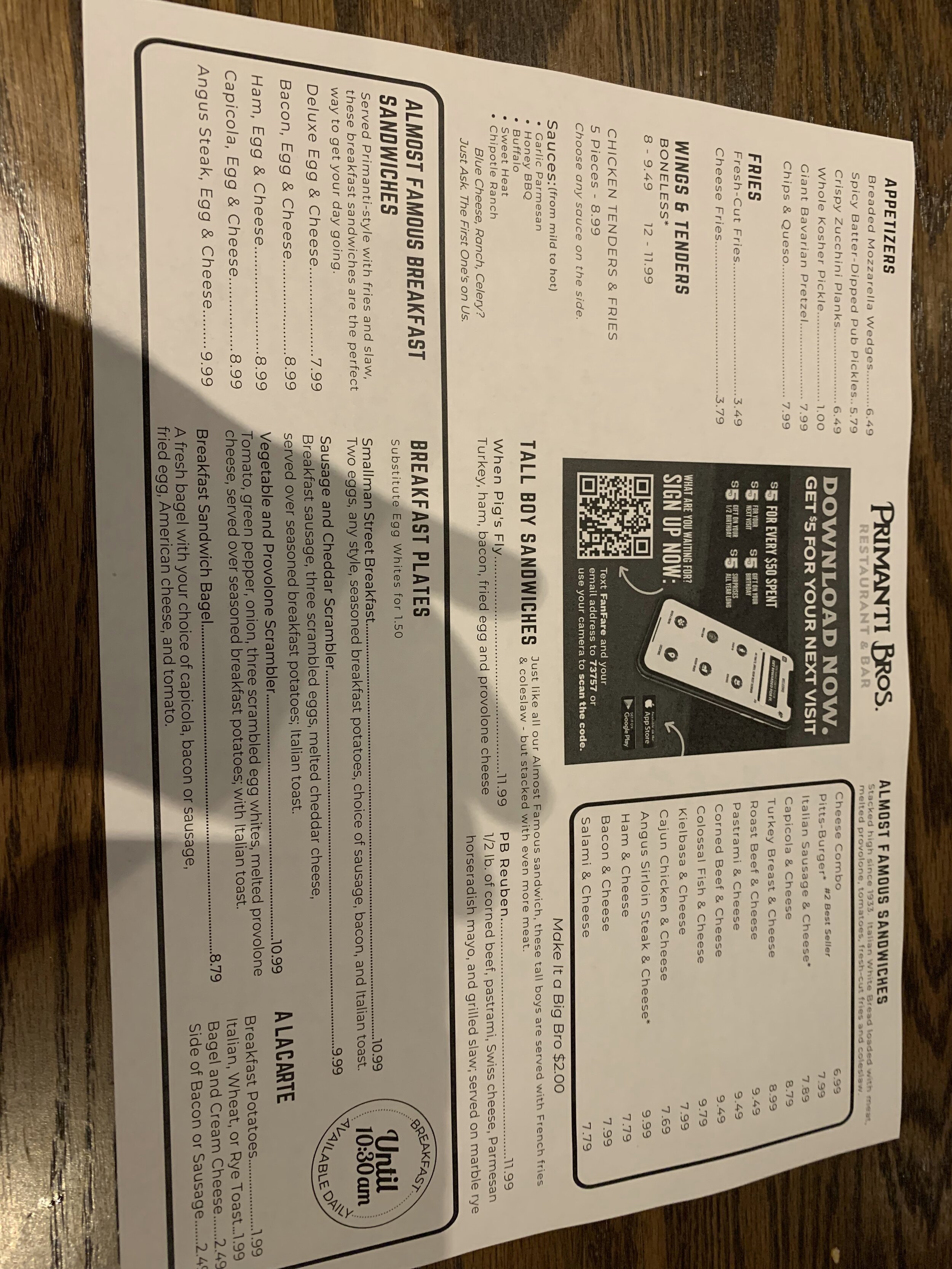
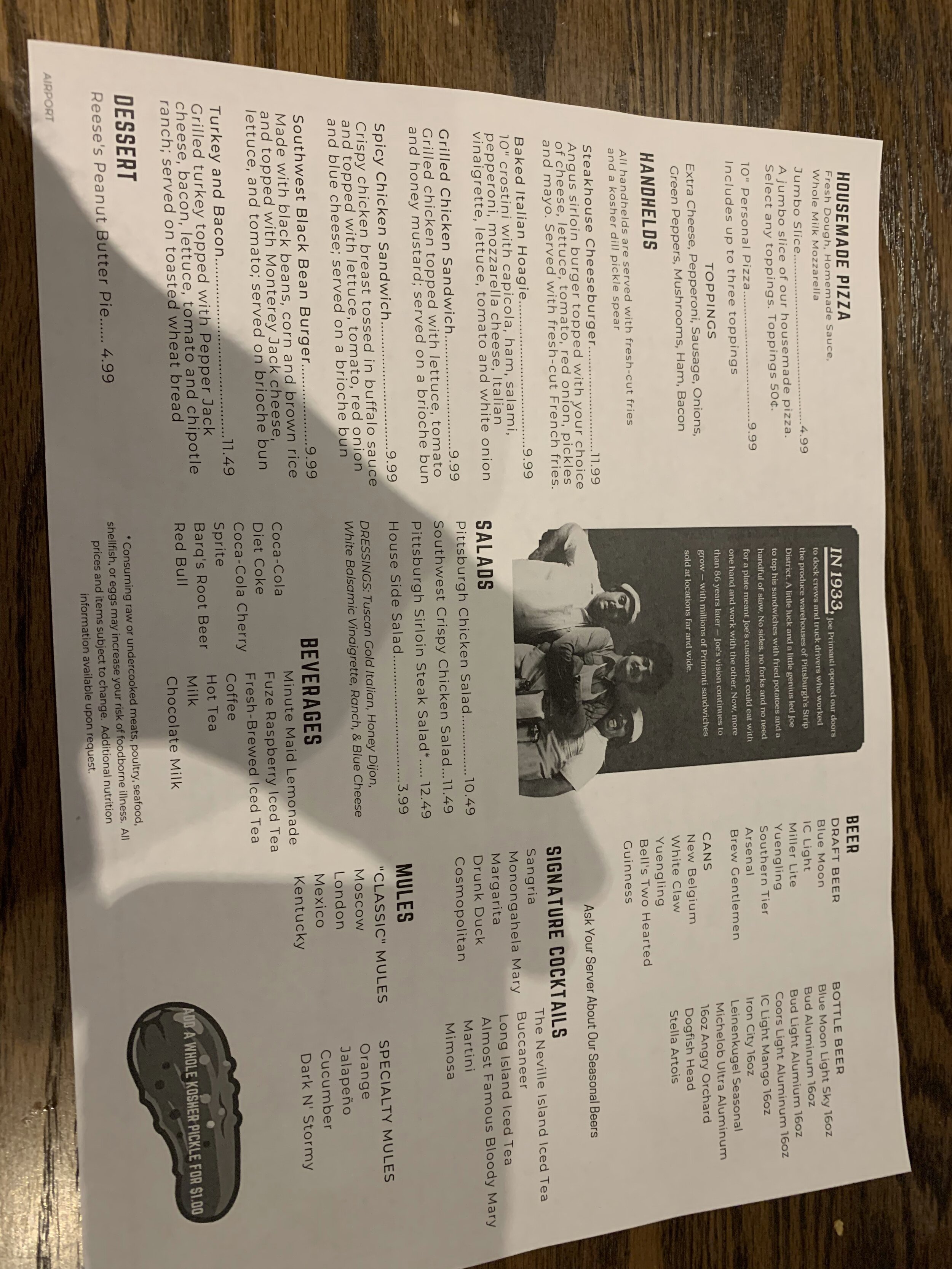
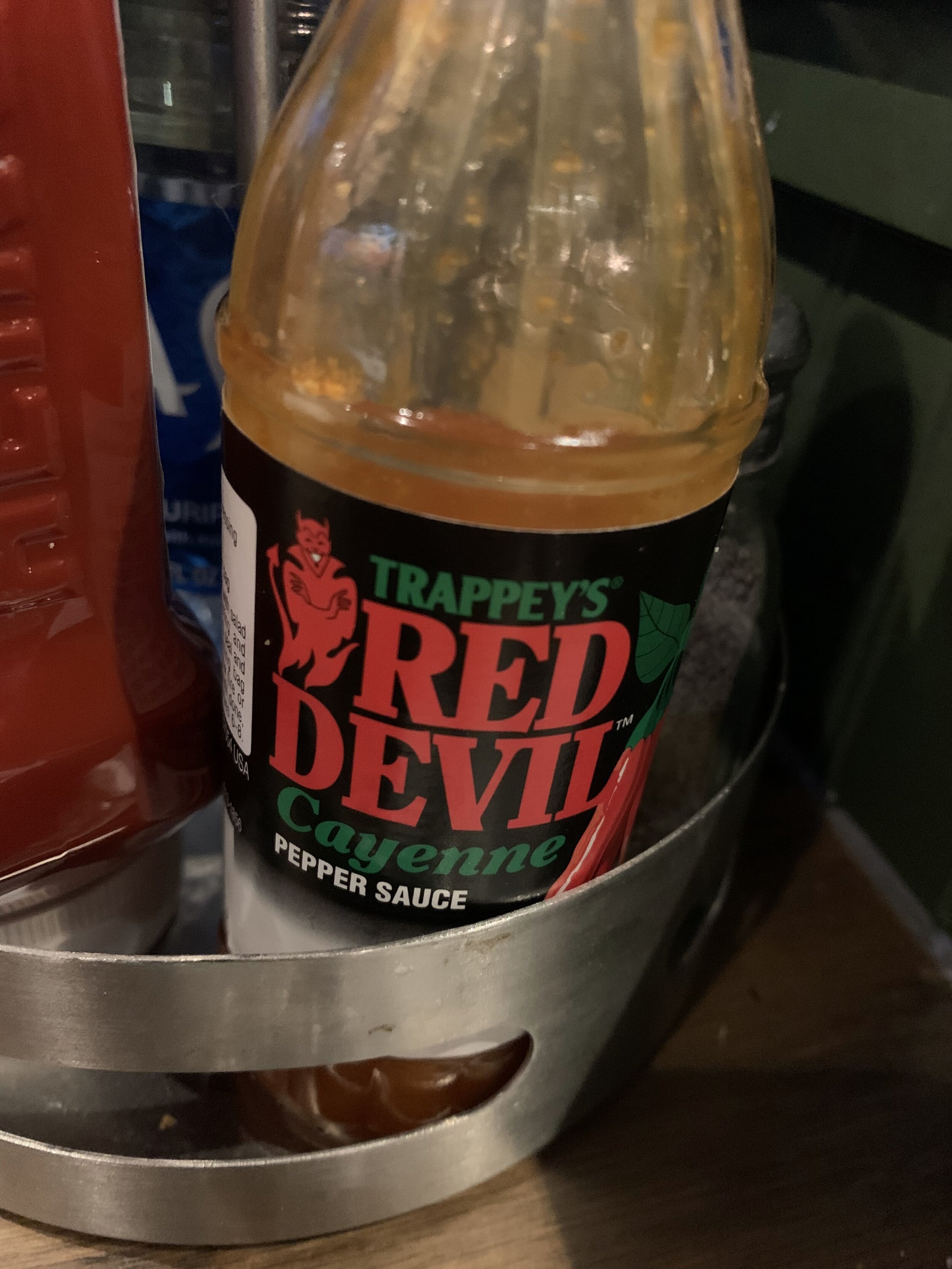
Flying out the day before the 20th anniversary of 9/11 means getting to the airport well in advance of your flight. Finding myself without 90 minutes to kill before boarding, I was very pleased to learn that Primanti Bros has a location at the airport terminal. After double-checking that they had the same/similar menu, I knew that I had to take the opportunity to try their fish sandwich.
The staff at the airport location were super friendly, and in keeping with airport regulation they were masked and very careful about sanitation. Within a minute of being seated I had a tall cold Pepsi and a menu. I knew from looking over the menu for a few days now that I had to try the “Colossal Fish Sandwich” and their “Deep Fried Pickles”.
The food arrived very in very short order, and was piping hot. If I’m being honest, half the reason for eating at the airport location was to see how it held up against the original downtown location. The Italian bread was fresh and thick cut. The fish fillet was HUGE, fried to perfection, and mouth-burning hot. The cheese was perfectly gooey, and the layer of fries provided a great buffer between the fish and the heaping mound of sweet and sour cole slaw, which also helped cool the overall heat of the sandwich. Meanwhile the tomato was fresh and far above your expected fast-food quality veggies.
The deep fried pickles were honestly the best I’ve ever had. Most places fry up slices of pickles, which get soggy almost instantly. At Primanti Bros they take a whole giant dill and slice it up into ⅛’s before frying. This provides real body to the pickles that prevent them from getting soggy. So instead you’ve got a firm, crisp pickle with a thin veneer of crispy fried batter. If any restaurants are reading this, THIS is how you do a deep fry a pickle.
Throughout the 45 minutes or so that I was seated, my waiter was constantly walking by to check in on me. Never annoying or intrusive, but just a quick nod to let me know that he was there and ready to help with anything I needed. My favorite surprise of the day though, was how warm the food stayed. Both my last bite of sandwich and pickle were still way warmer than you’d imagine.
So in the end, Primanti Bros passed my test with flying colors. If you find yourself in Pittsburgh and have the opportunity, please stop by the original location and enjoy it for the food as well as the history. But if you’re just here on a layover, or can’t make it downtown, please stop by the airport location and know that the food is just as good as the real deal.
Primanti Bros (Part 1)
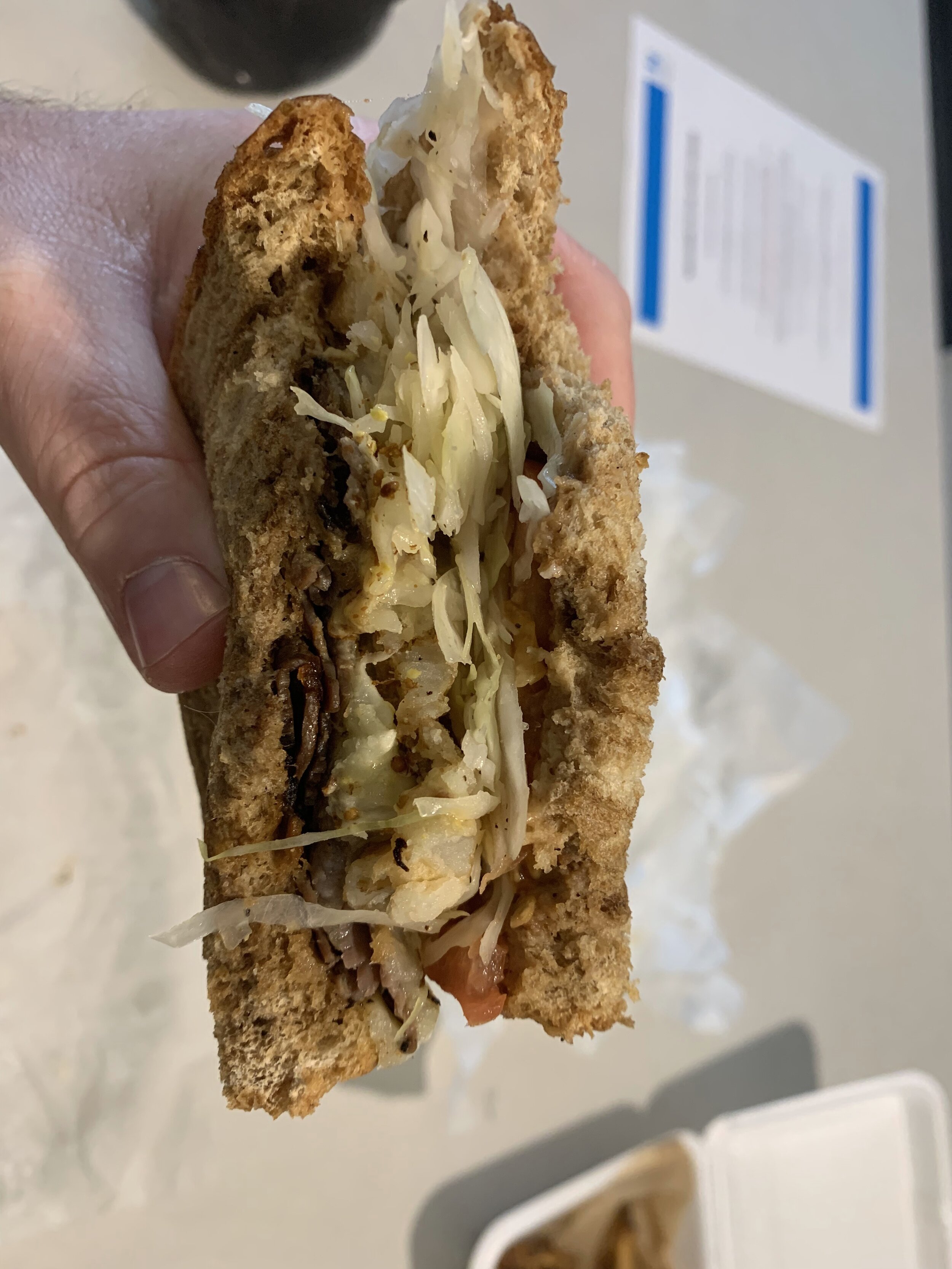
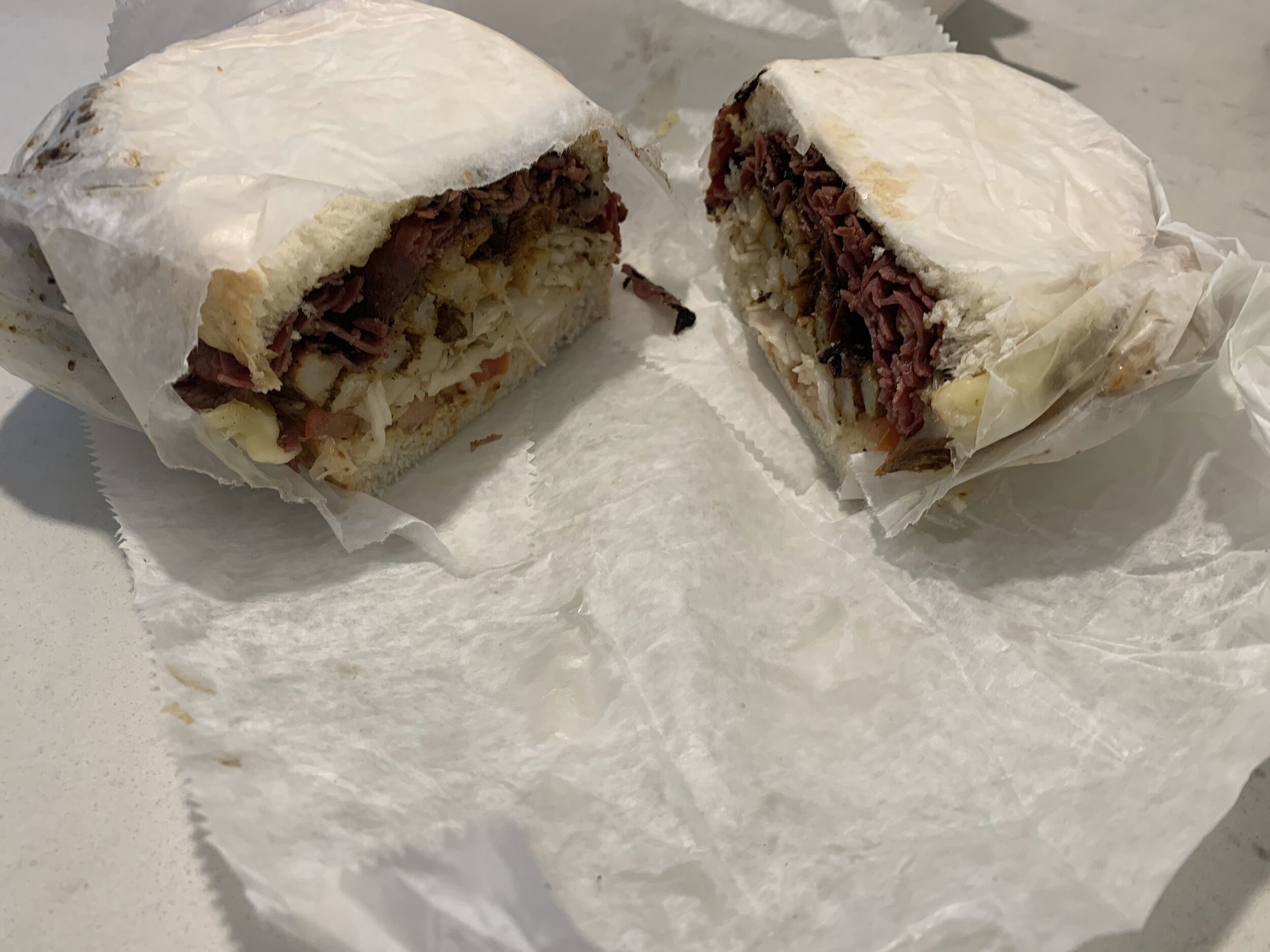
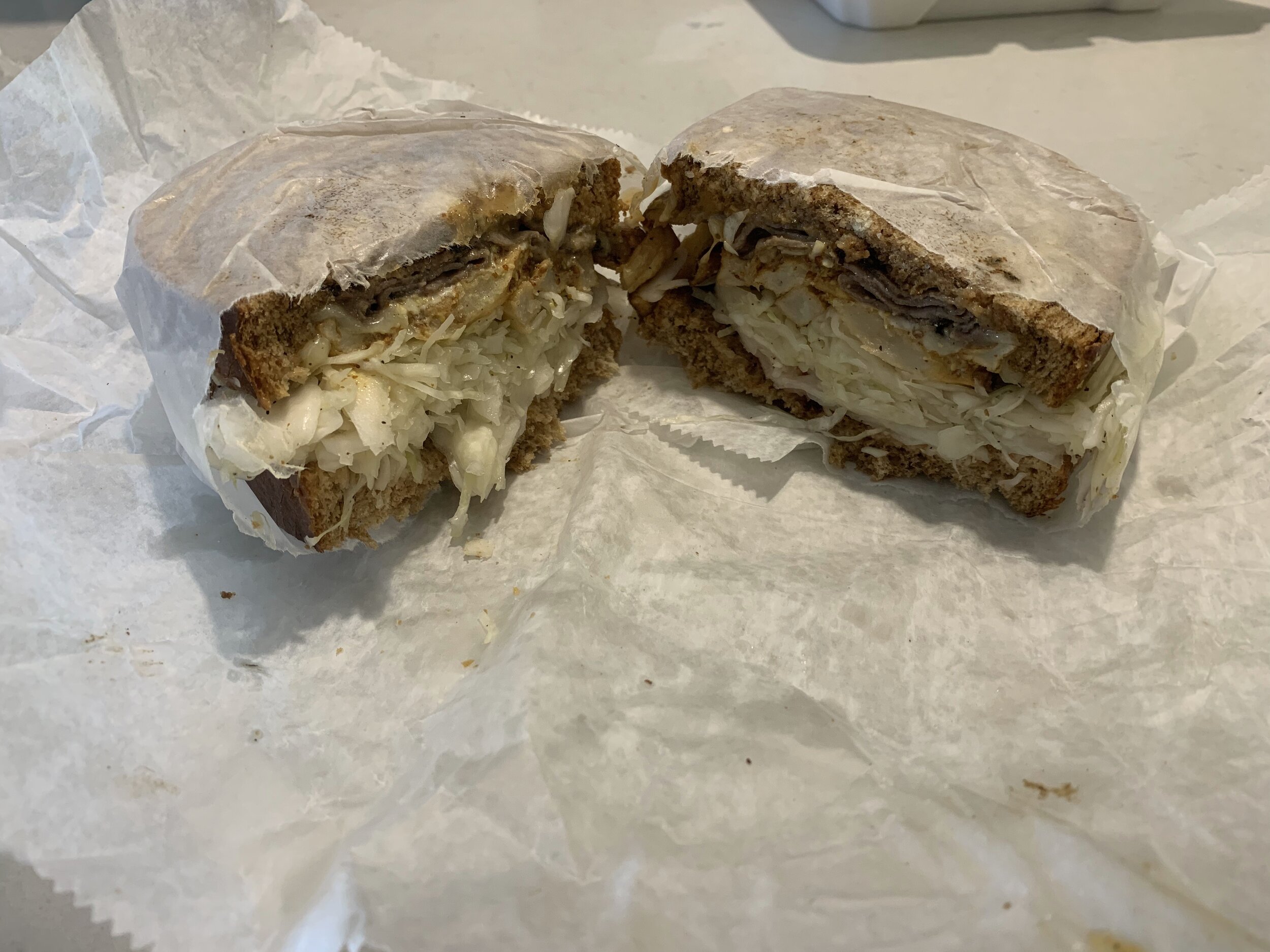
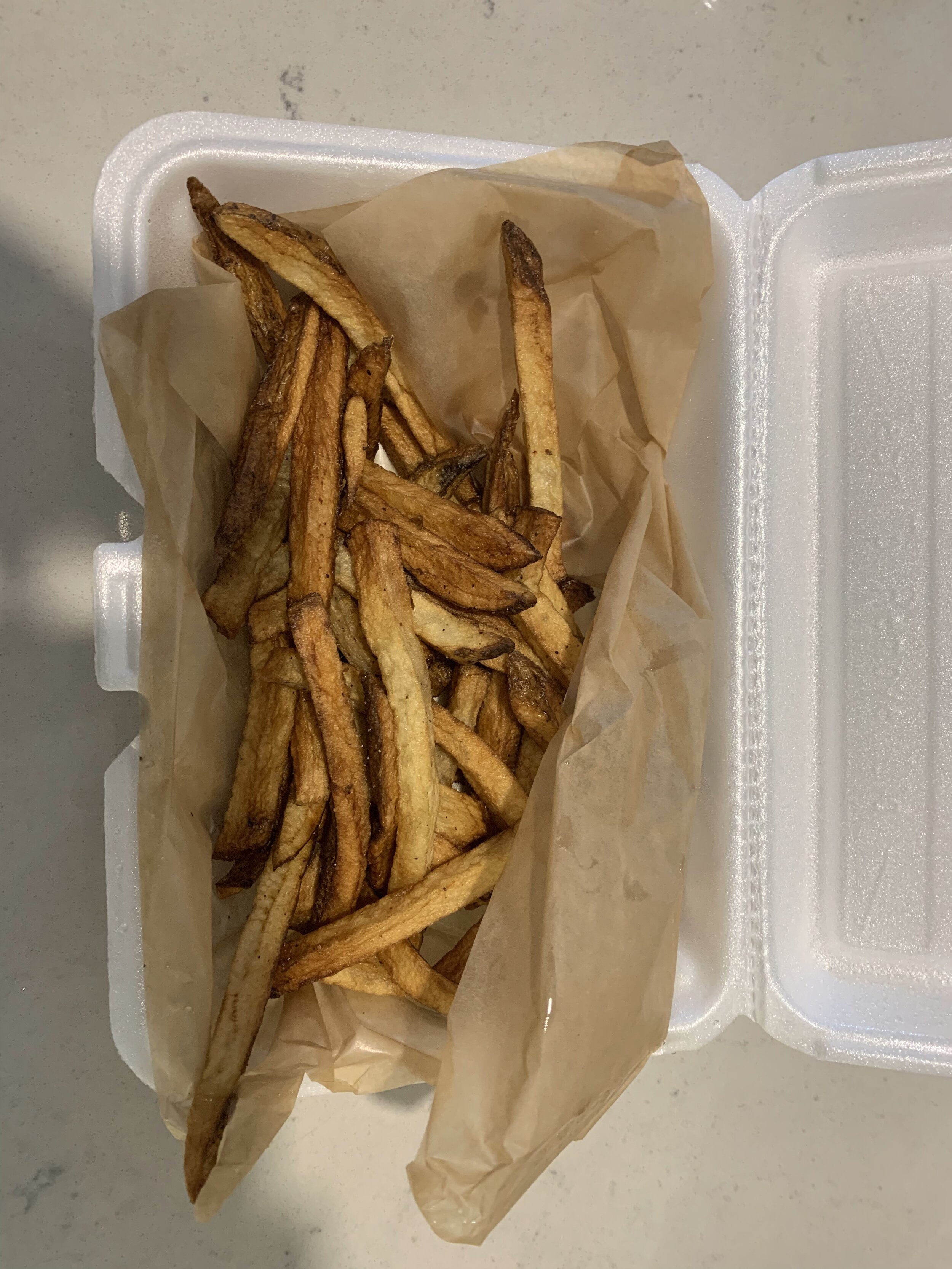
This legendary Pittsburgh sandwich shop has been on my culinary bucket list for a while, so when I learned it was less than a mile from my work’s local office it instantly went on my to-do list. Full disclosure, it was rainy on my arrival day and I was short on time to begin with, so I did not get to visit in person. Instead this review is from an Uber Eats order.
Looking through the menu there were 2 sandwiches that immediately appealed to me. They were admittedly pretty similar, but I still couldn’t decide, so I got them both.
“The New Yorker” - This beast of a sandwich consists of pastrami, corned beef, swiss cheese, spicy beer-mustard, sweet & sour coleslaw, fresh-cut fries, and ripe tomatoes on fresh Italian bread. The meat is clearly the star of any sandwich, and it’s obvious that Primani Bros uses only the best. Well cured, slightly smokey, and fall-apart tender to the last bite. The sweet & sour slaw on this one combines with the spicy beer-mustard to create a tang that feels almost like a sour kraut, to the point that this one actually tasted more like what I expect from a “Rueben”. The fresh-cut fries really help balance this out by providing a salty buffer. The swiss cheese really gets lost on this sandwich though. There’s just so much else going on, and so much tang, that the subtle creaminess of the cheese just doesn’t stand out. The italian bread was fresh, light, and had a great flavor. One note on it though. Between waiting on the delivery, and taking pictures and notes as I went along, it was upwards of an hour between the food being made, and me finishing it. The italian bread held up as well as it could, but the sandwich was starting to soak through/fall apart on the last few bites. Definitely not something the average diner will have to contend with, and I wouldn’t mention, except that the rye bread held together to the very end.
“Primanti Bros Rueben” - This local spin on a classic sandwich has 1/2 lbs of corned beef, pastrami, swiss cheese, parmesan horseradish mayo, and grilled coleslaw on marbled rye bread. The Reuben features the same meats as the New Yorker, and they’re just as good on this sandwich. It’s the dressings that really set these two apart, and although I loved them both, I think the Rueben manages to edge out a win. The coleslaw on this sandwich is more of the traditional type you’d expect at a family picnic. With a creamy mayonnaise base and just the slightest hint of a tang. Combined with the parmesan horseradish mayo (maybe the sexiest three words I’ve ever typed), this dressing highlights the richness of the meats rather than contrasting it like on The New Yorker. This also allows the creamy swiss to come through more (not sure if they put more cheese on this one, but it definitely stands out more). If there’s a low-point to this sandwich, it would be the fries. They’re crisp and perfectly seasoned, but they just don’t have as much to do here since the sandwich doesn’t have as much tart to balance out. That said, they don’t detract from the sandwich in any way, and they add some “filler” guaranteed to fill up even the hardiest of eaters. Finally, we have the bread. This marbled rye is everything you want it to be. Thick, great flavor, and even as this “wet” sandwich approached 1 hour old, it showed no signs of breaking down.
Side of Fries - Since Primanti Bros is known for putting fries on the sandwich they obviously had to be good, so I got a side of fries to sample as well. For a “side” the portion is huge. Like one sandwich plus the fries would have stuffed me, after 2 sandwiches I hardly got to touch them. They were clearly fresh cut, rinsed, and twice cooked as any proper fry should be. Simply put, they’re a French fry executed to perfection. One unique thing about them though, they’re less seasoned than you would normally expect. I suspect this is because they pull from the same pile of fries to put on your sandwich and don’t want to overly salt your entrée.
In the end, I would say this great local place lived up to the hype. The portions are large enough that no one is going away hungry. But for such a large sandwich, the flavors are varied, delicate, and perfectly balanced. I would say that eating here is the culinary equivalent of watching a body-builder dance ballet. It’s rough and hearty in appearance, but surprisingly light on it’s feet. If you’re anywhere near one of their locations (they’ve branched out into a few other states) this is a MUST TRY.
Slave Sales, and the Inspiration for Uncle Tom’s Cabin
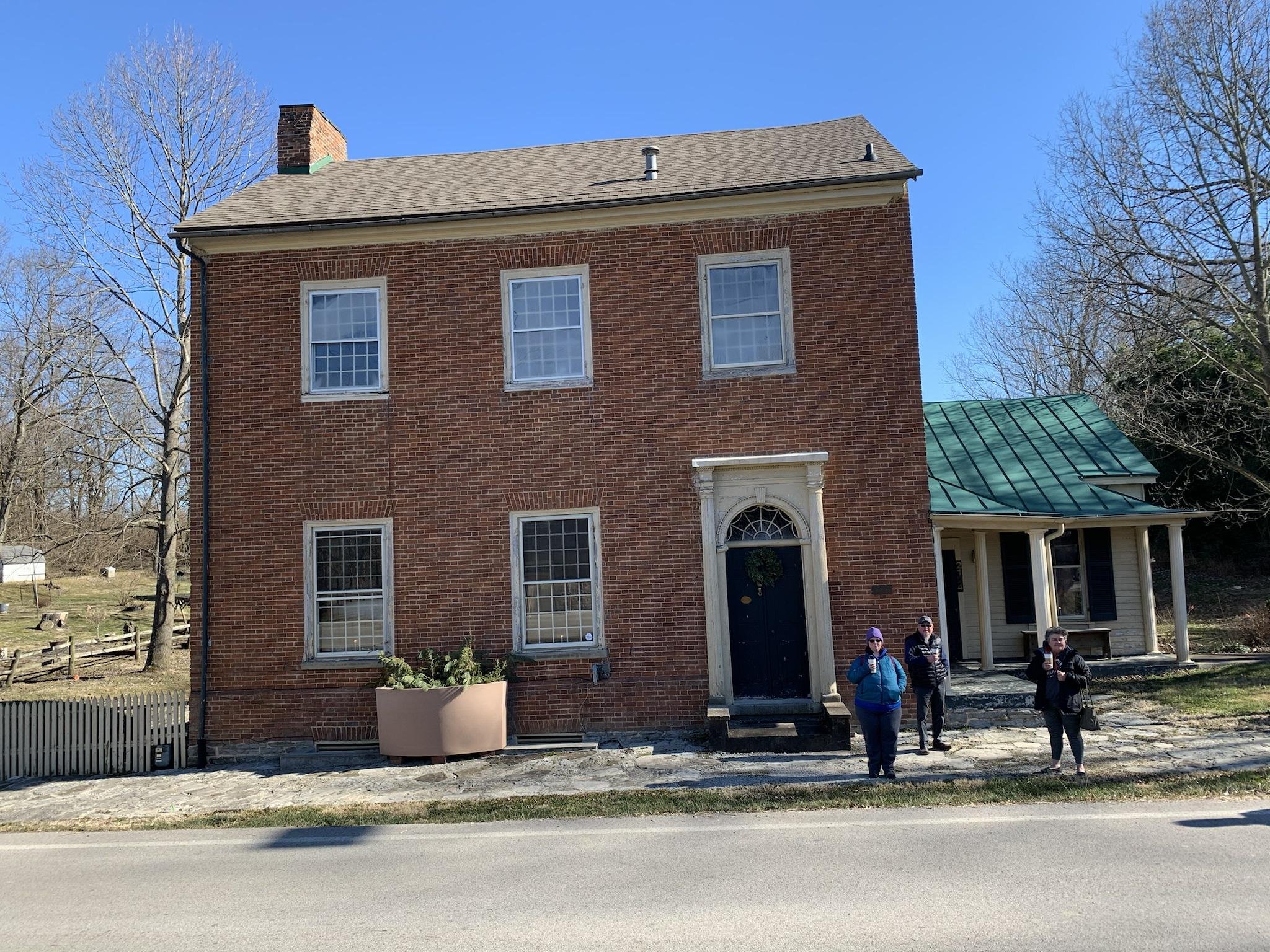
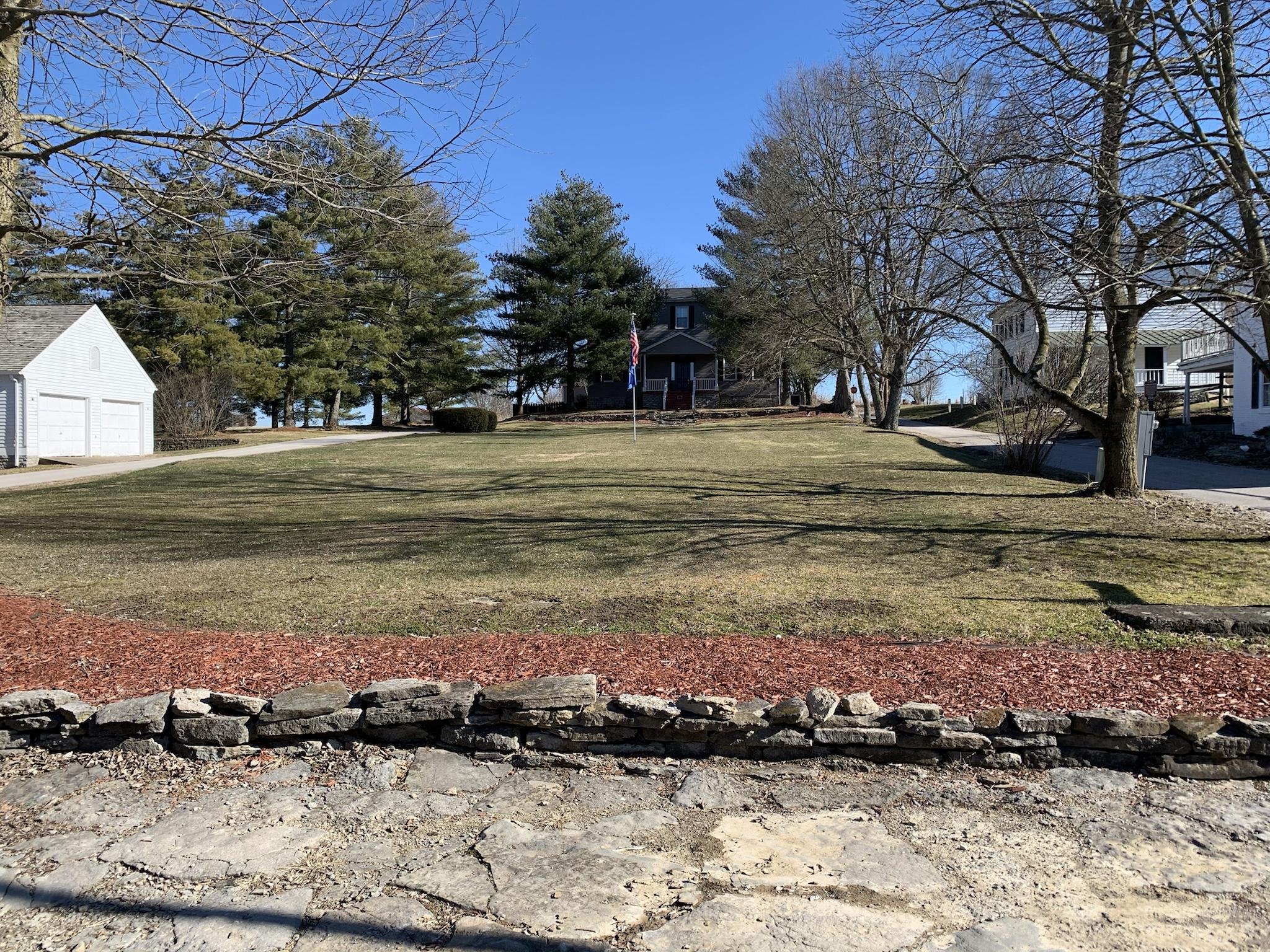
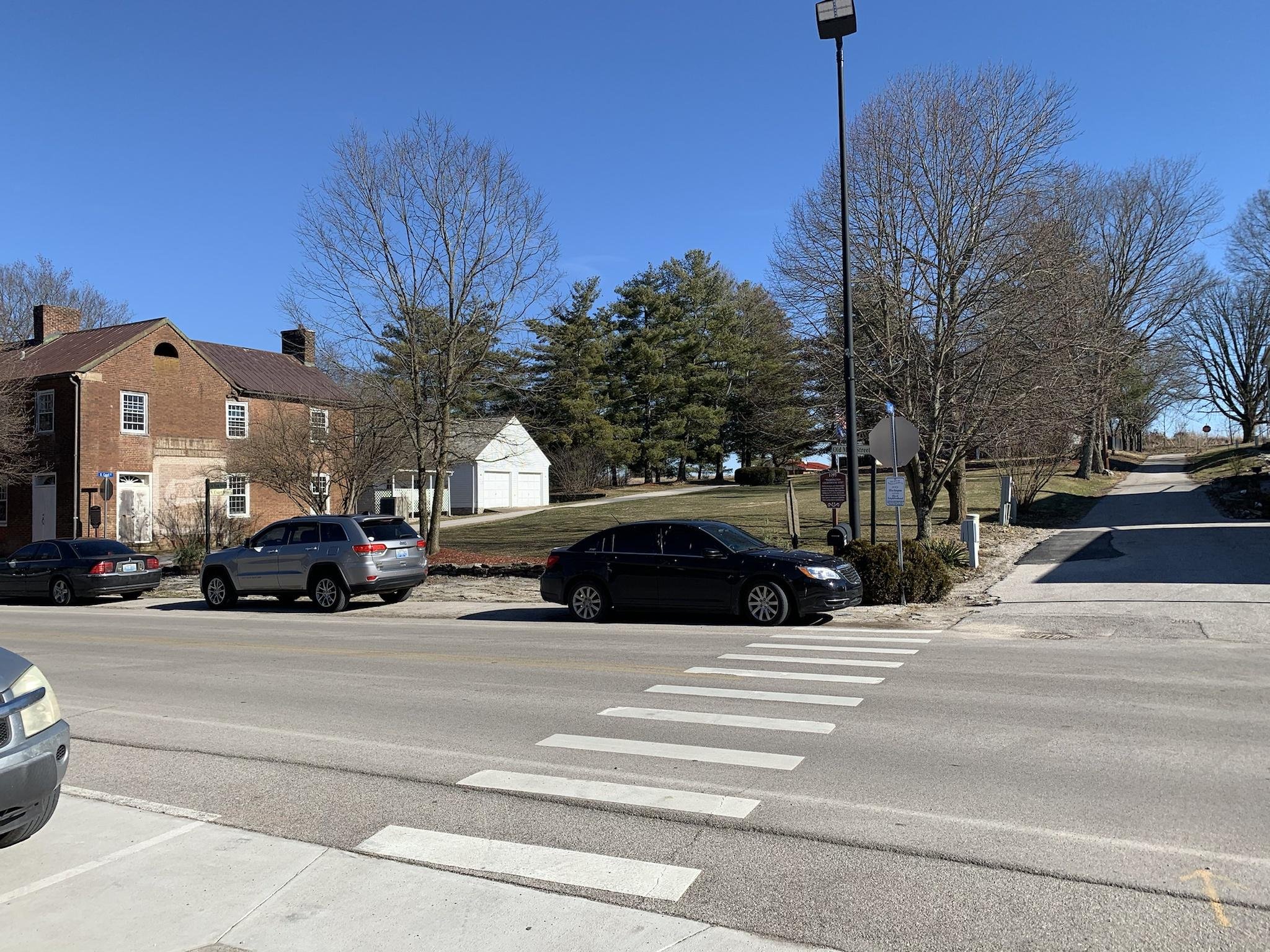
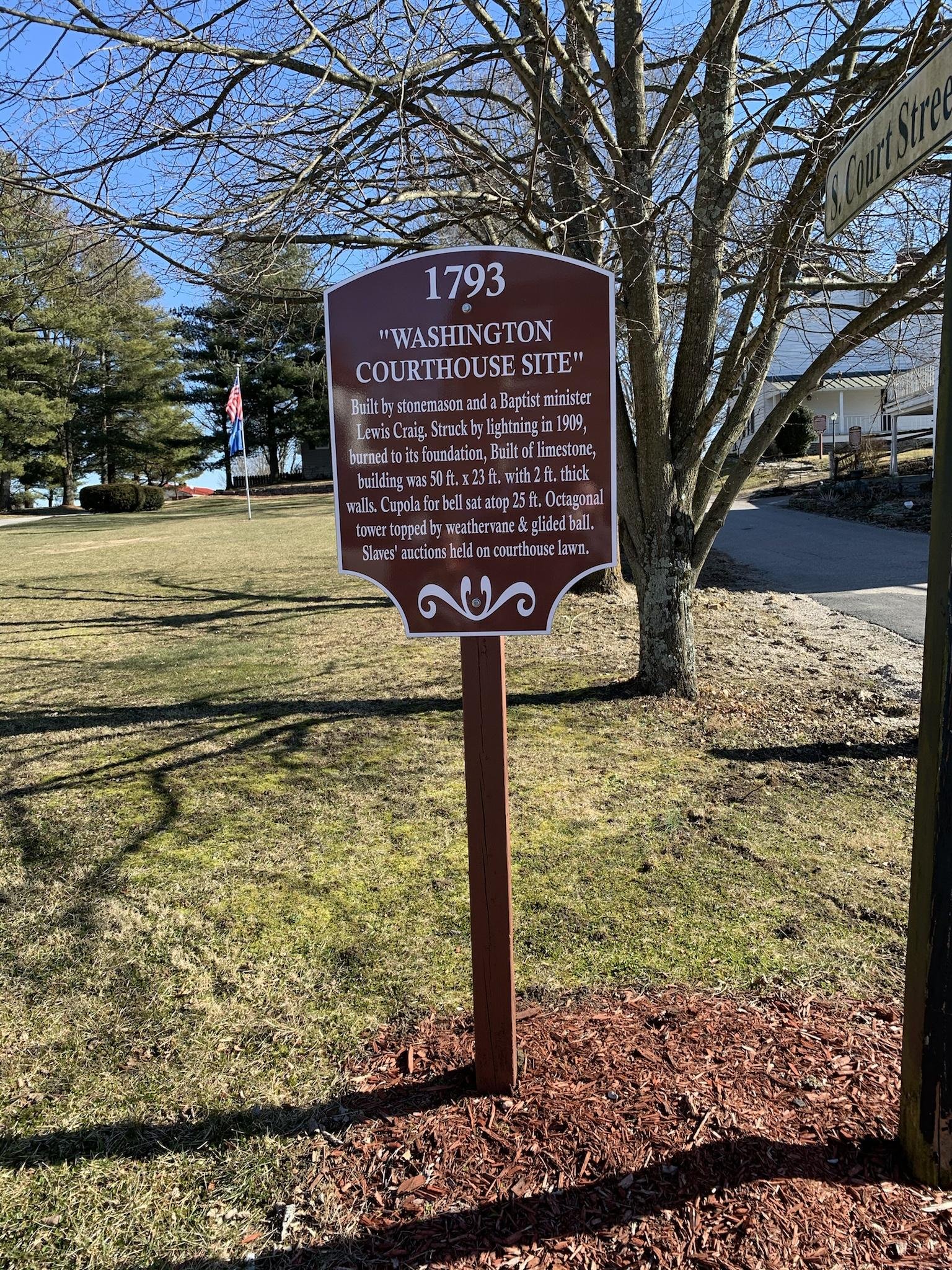
In 1852 Harriet Beecher Stowe’s novel “Uncle Tom’s Cabin” was published, offering the first glimpse of the horrors of slavery to much of the population of the northern states. This ultimately helped ignite abolitionist passions among many in the free states, and is arguably a key point in the build up to the U.S. Civil War.
Although many events influenced Mrs. Stowe to write her novel, including a claimed divine inspiration, many believe that it was a fateful 1833 trip to Maysville, Kentucky that first began the thoughts that lead to the novel. Living in Ohio Harriet lacked direct exposure to the evils of slavery. During her 1833 visit to Maysville however she happened to witness firsthand a slave auction at the Washington Court House (only a short walk from the house she was visiting). Seeing families split up as master’s sold their various slaves to different buyers provided a shocking first glimpse into what life much be like for enslaved people.
Looking at the grounds of the former courthouse, and knowing that men, women, and children were once traded here as common livestock, one can’t help but feel the enormous weight of that horrible history. Realizing though that the passionate distaste that was stirred in one young woman’s heart on this very ground would ultimately ignite the war that freed the slaves, you can’t help but feel as if you’re standing on holy ground. If you doubt the influence that this pivotal novel had upon calling our nation to war, you need only read the words spoken by Abraham Lincoln up meeting Harriet during the war. "so you are the little woman who wrote the book that started this great war."
Want to Experience this Adventure for Yourself?
The Harriet Beecher Stowe House: 2124 Old Main St, Old Washington, KY 41096
The Former Court House Site Coordinates: 38.615710848819816, -83.80848081199636
The Ohio Serpent Mound
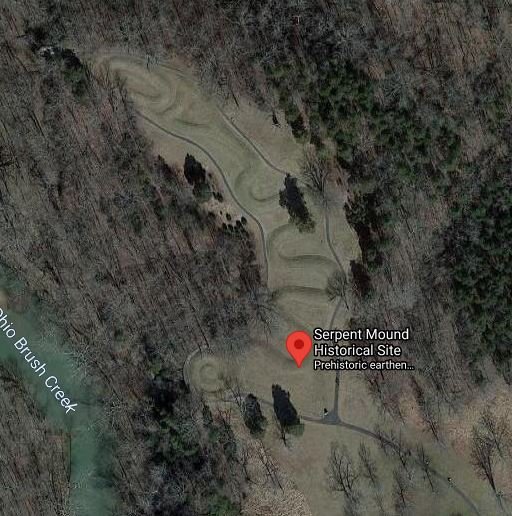
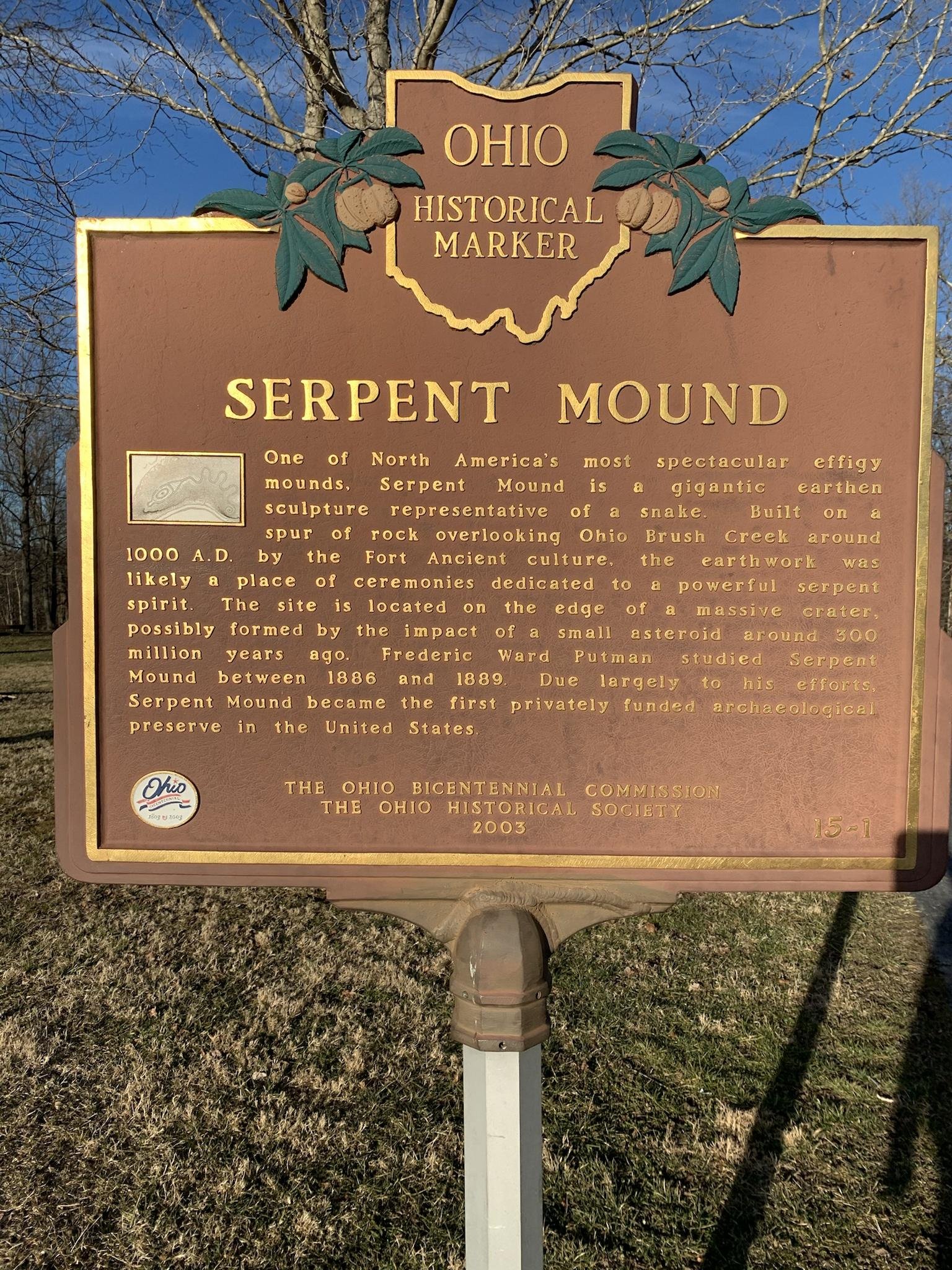
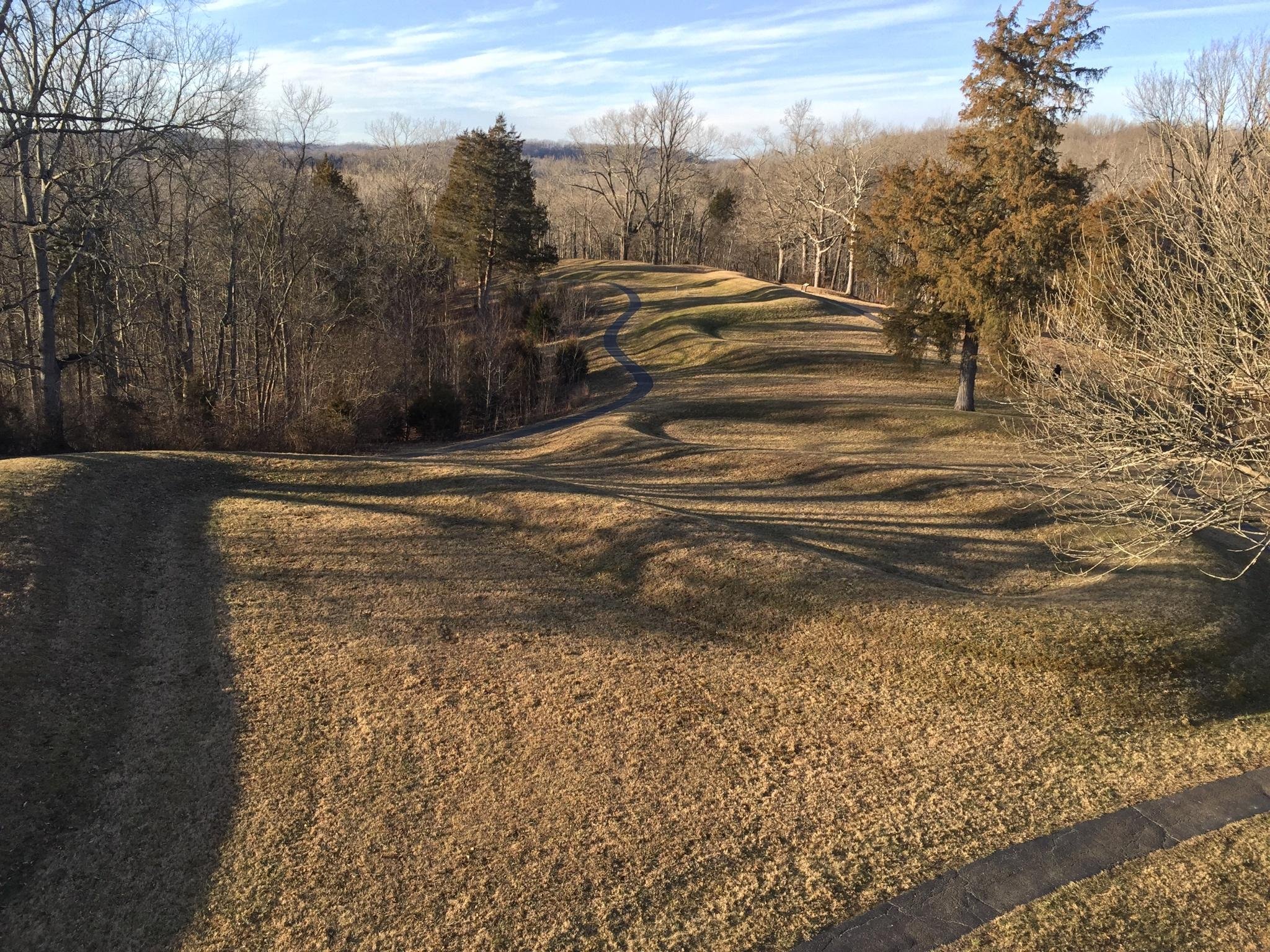
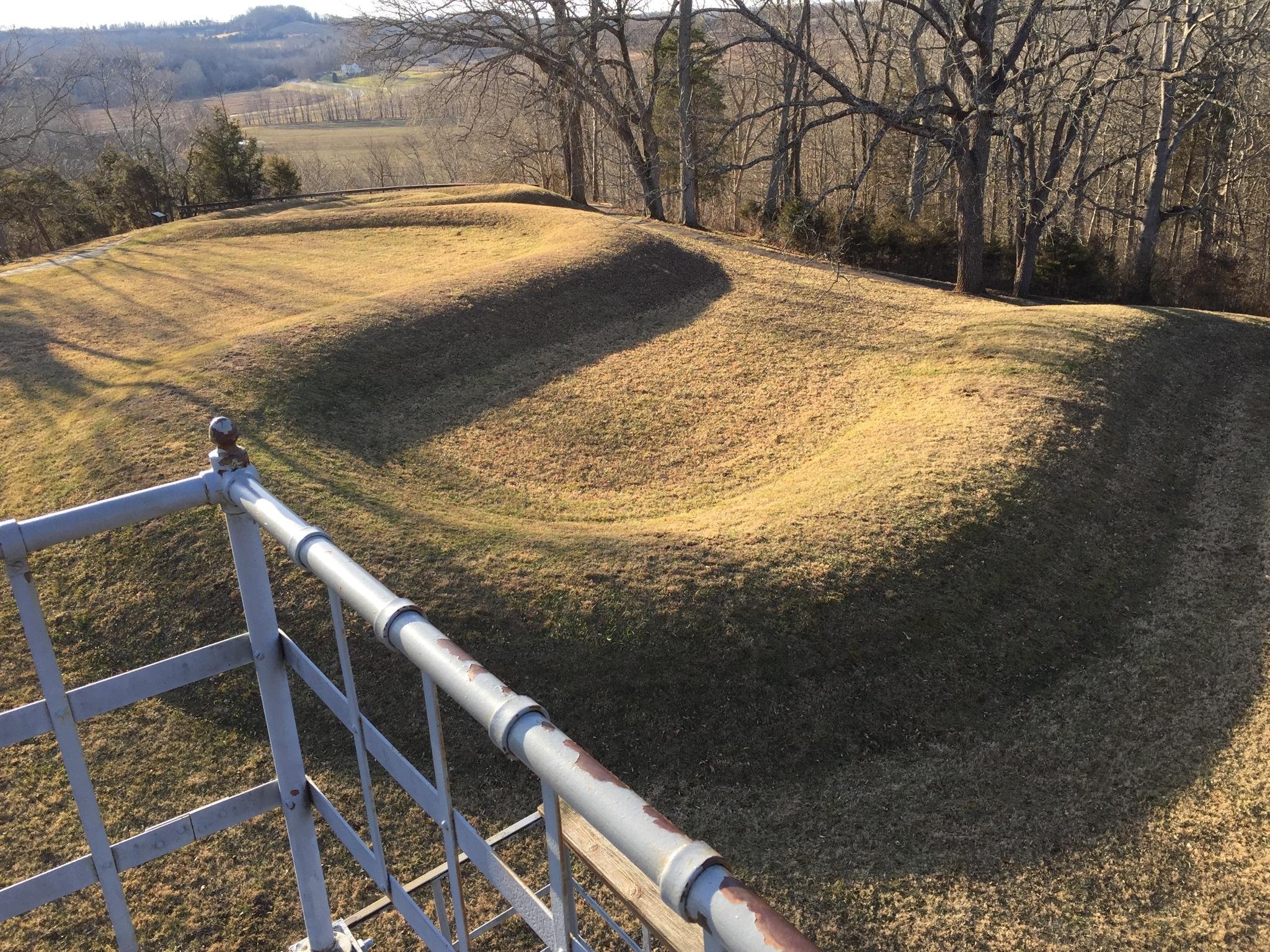
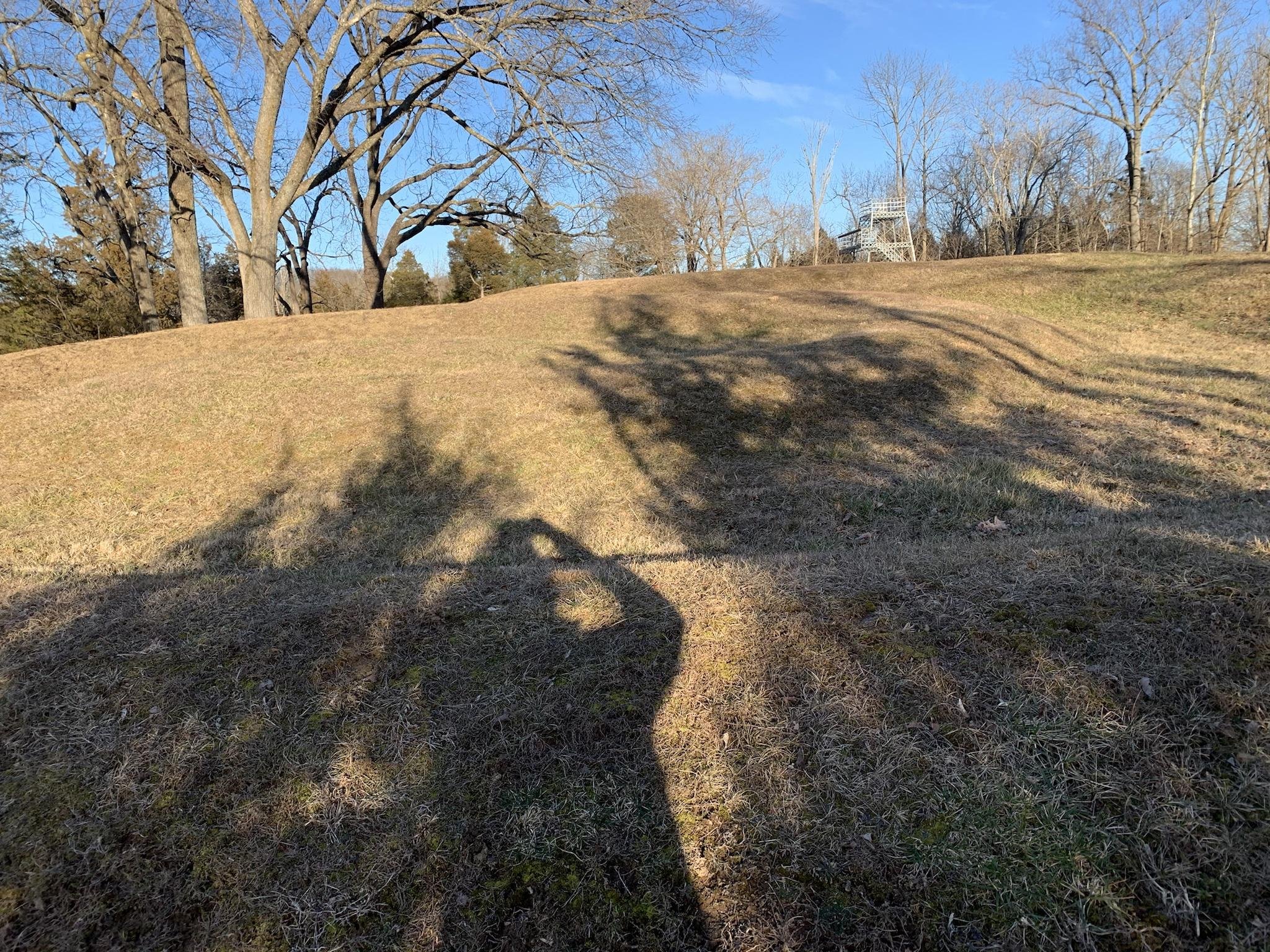
Measuring in at 1,346ft the Ohio Serpent Mound is the largest snake effigy in the world. Although the site was in use by Native Americans as early at 1200BC, the mound itself is estimated to have been constructed sometime between 320BC and 1070AD.
Although the mound likely served various ceremonial and religious purposes, it also acts as a cosmological calendar. The head of the serpent points towards the point of sunset on the summer solstice. Meanwhile each of the serpents hums align with the two solstice and equinox events. Meaning that this single mound could be used to track all of the important astronomical events of the time.
Equally interesting, the mound also happens to be built roughly in the center of a massive meteor impact crater. Meanwhile multiple native burial mounds set very nearby, adding to the holy significance of this place.
Typically there is an $8 parking fee at the mound, but with COVID the site is basically abandoned, and free to roam. Visiting this site can’t help but fuel your sense of wonder that this massive site was constructed with no tools, and so perfectly aligns with the key events of the cosmos.
Want to Experience this Adventure for Yourself?
3850 OH-73, Peebles, OH 45660
Cottage Furnace

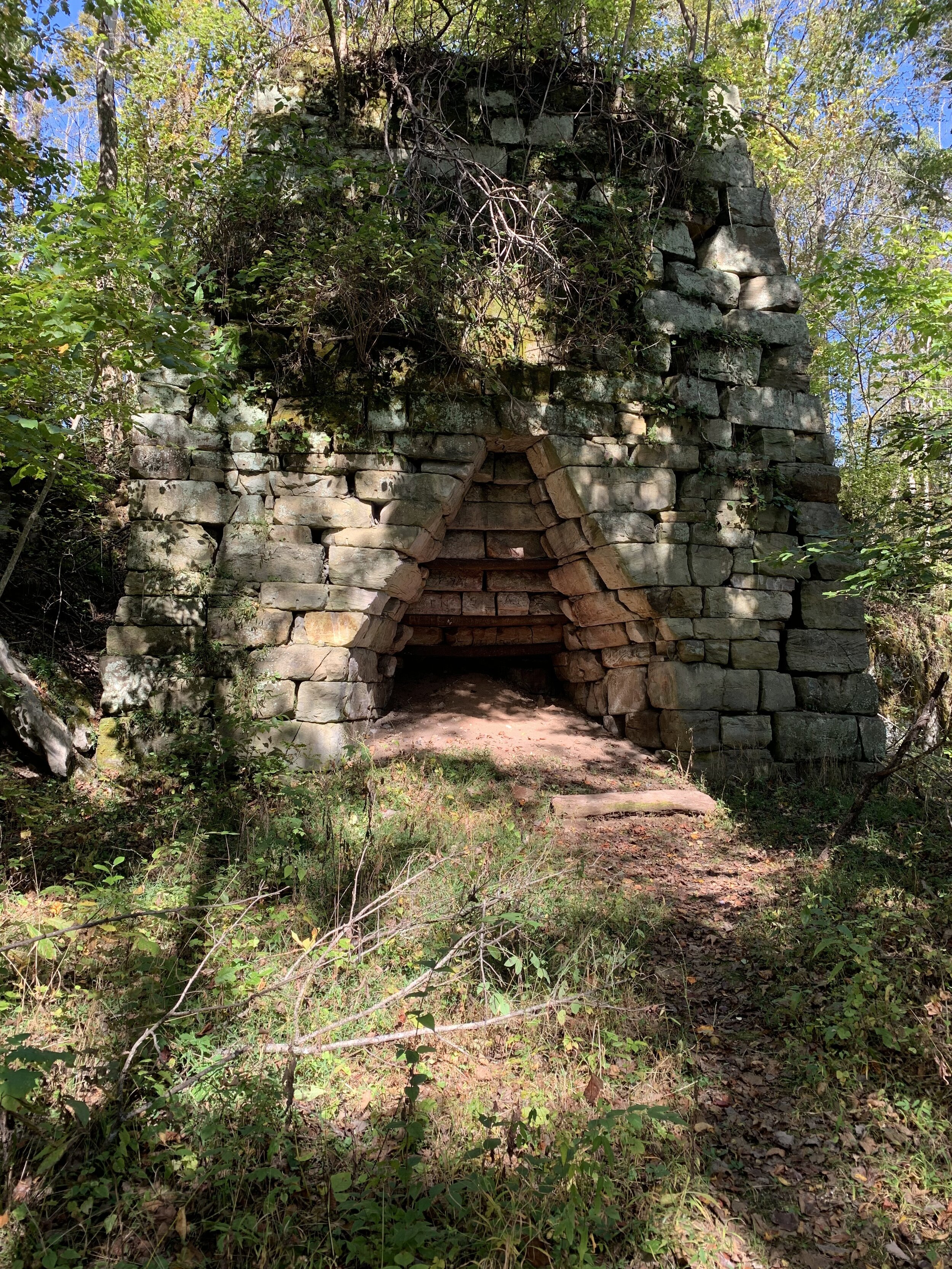
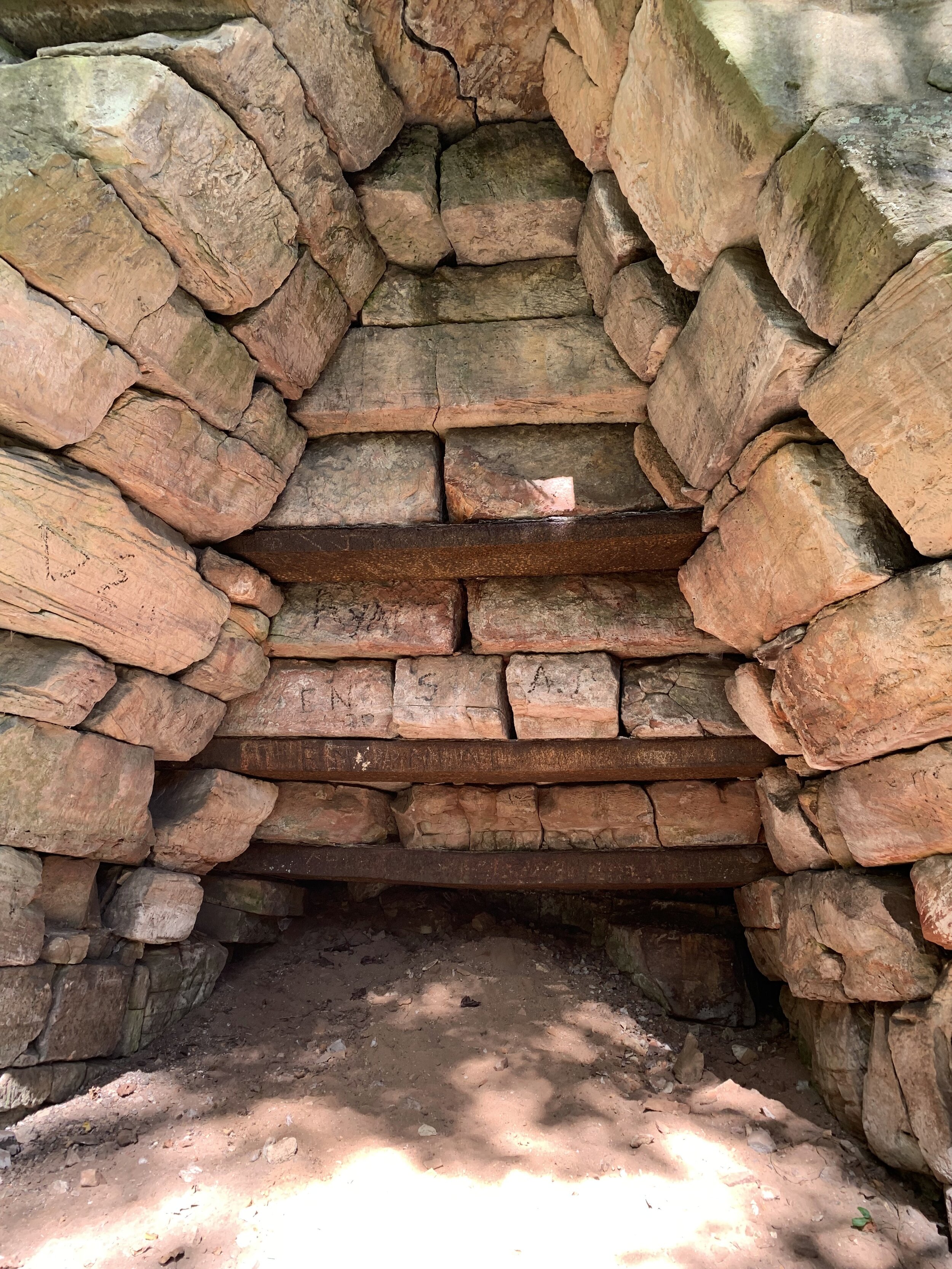
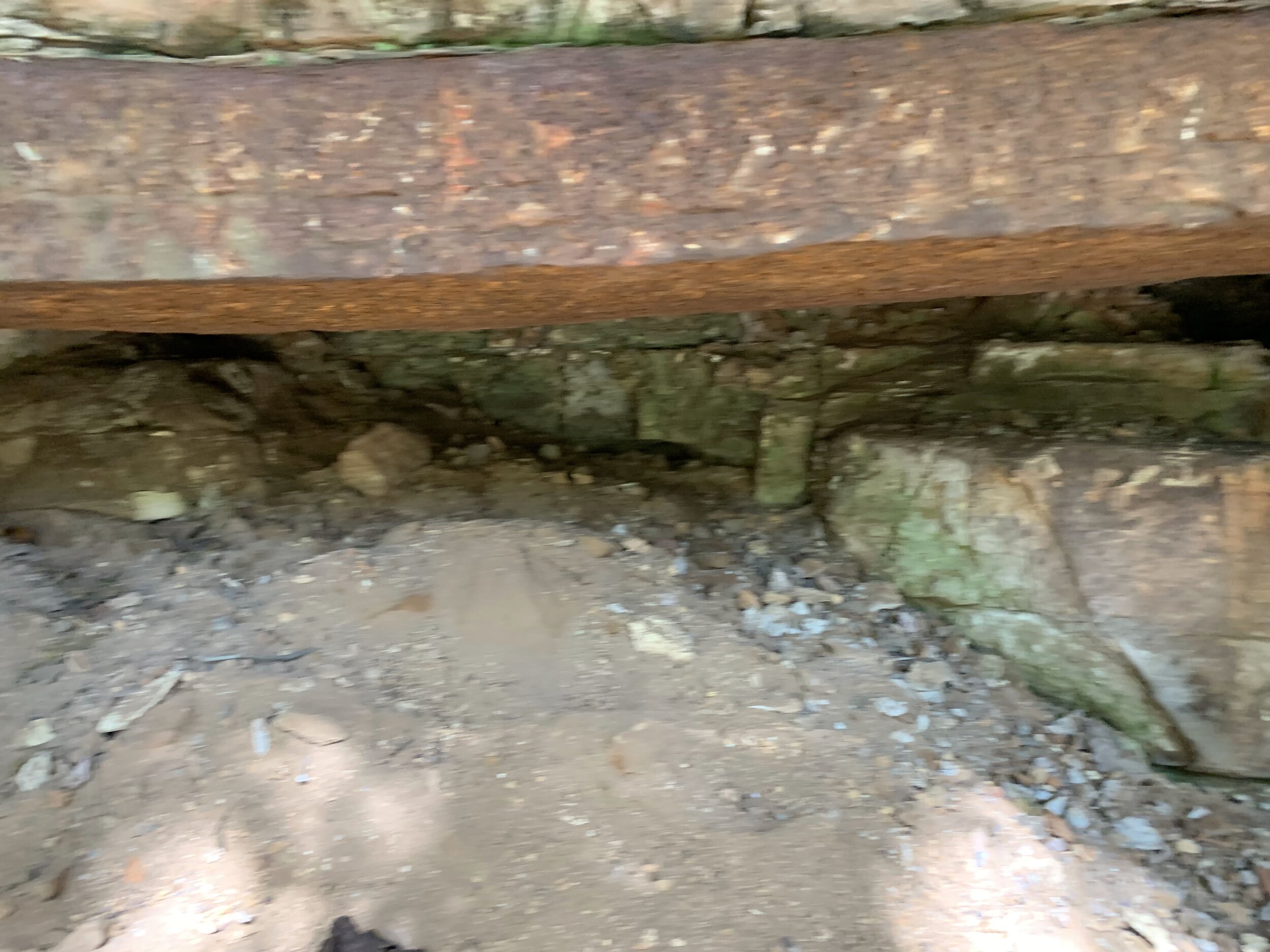
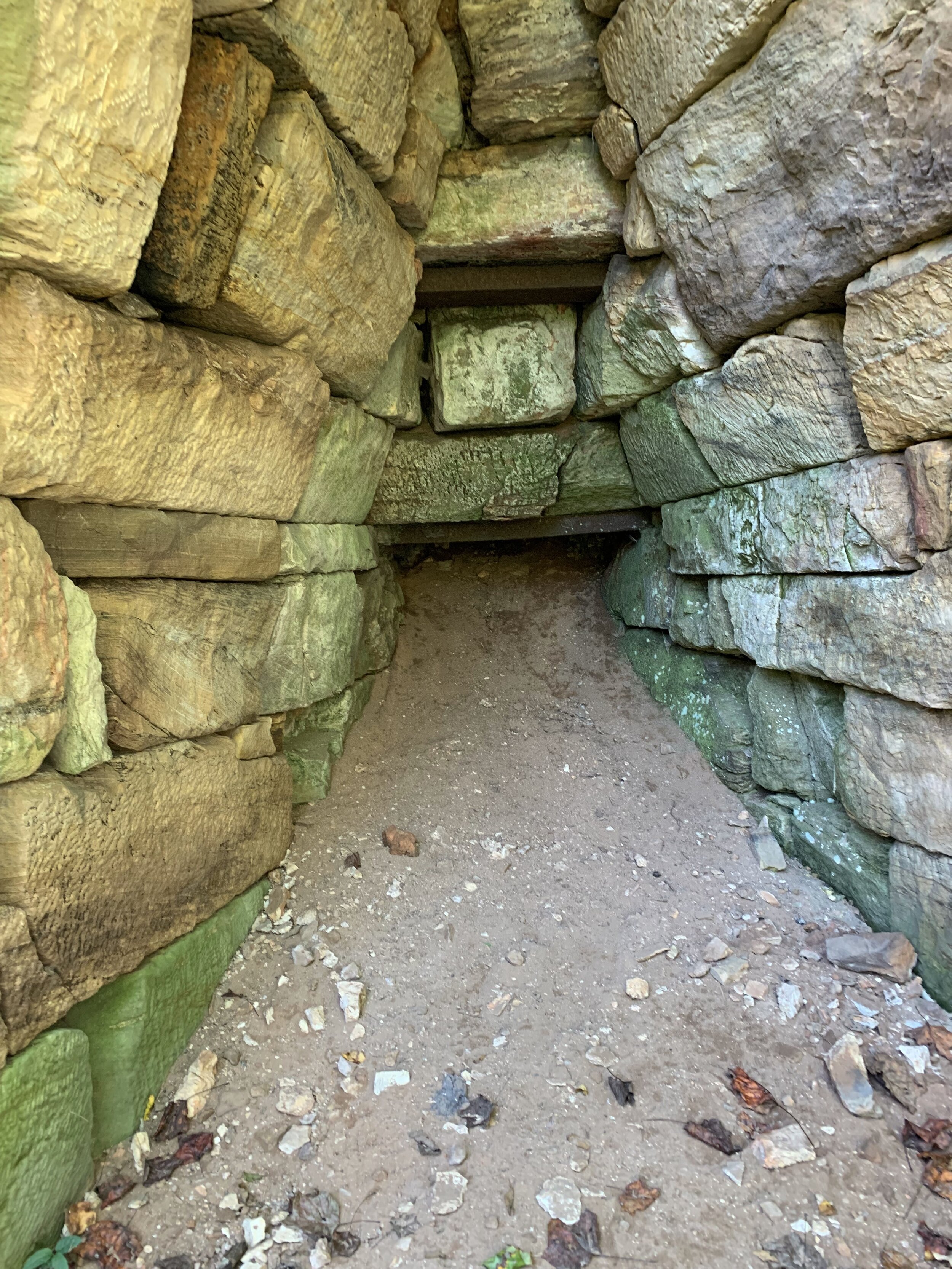

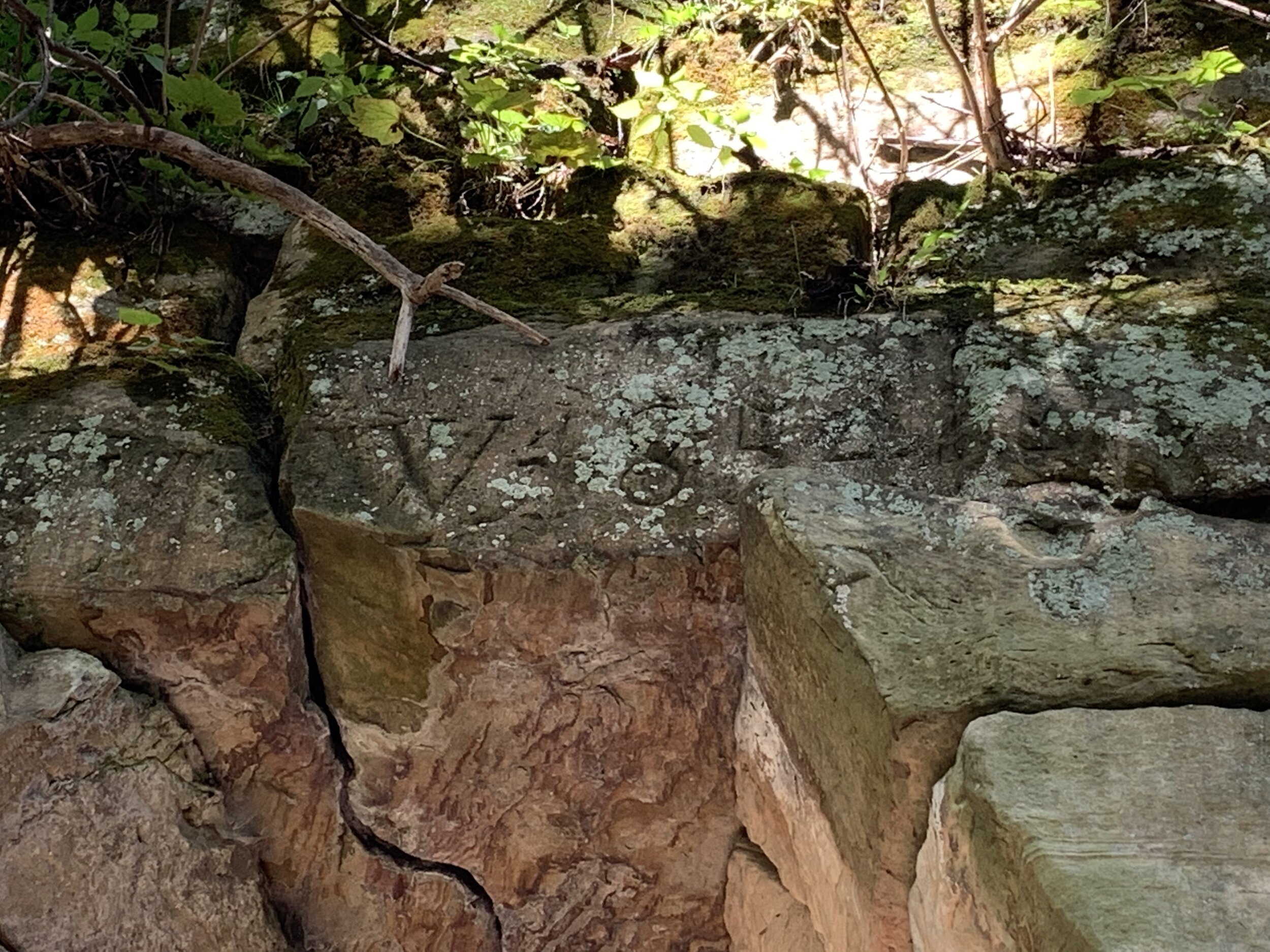
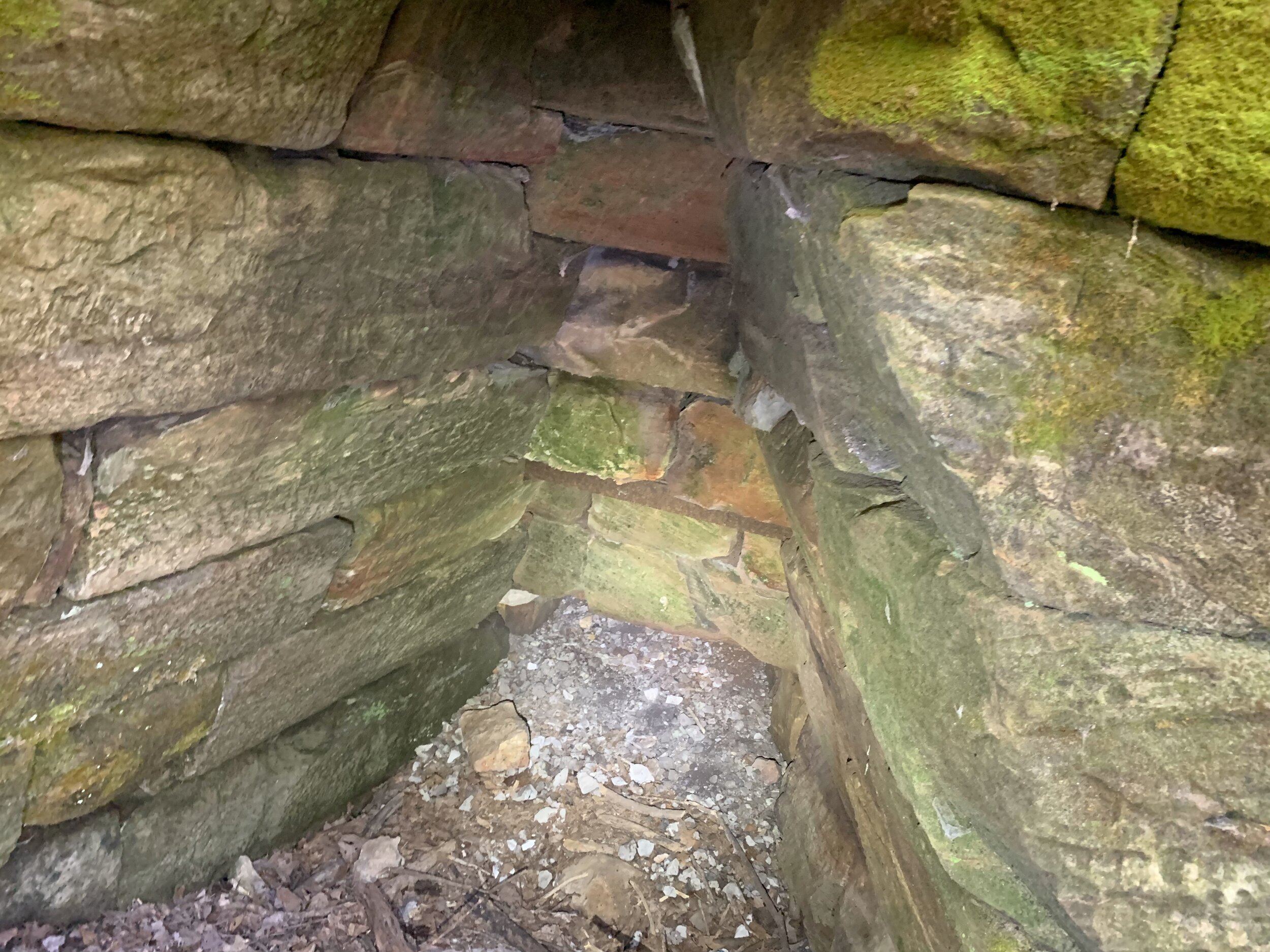
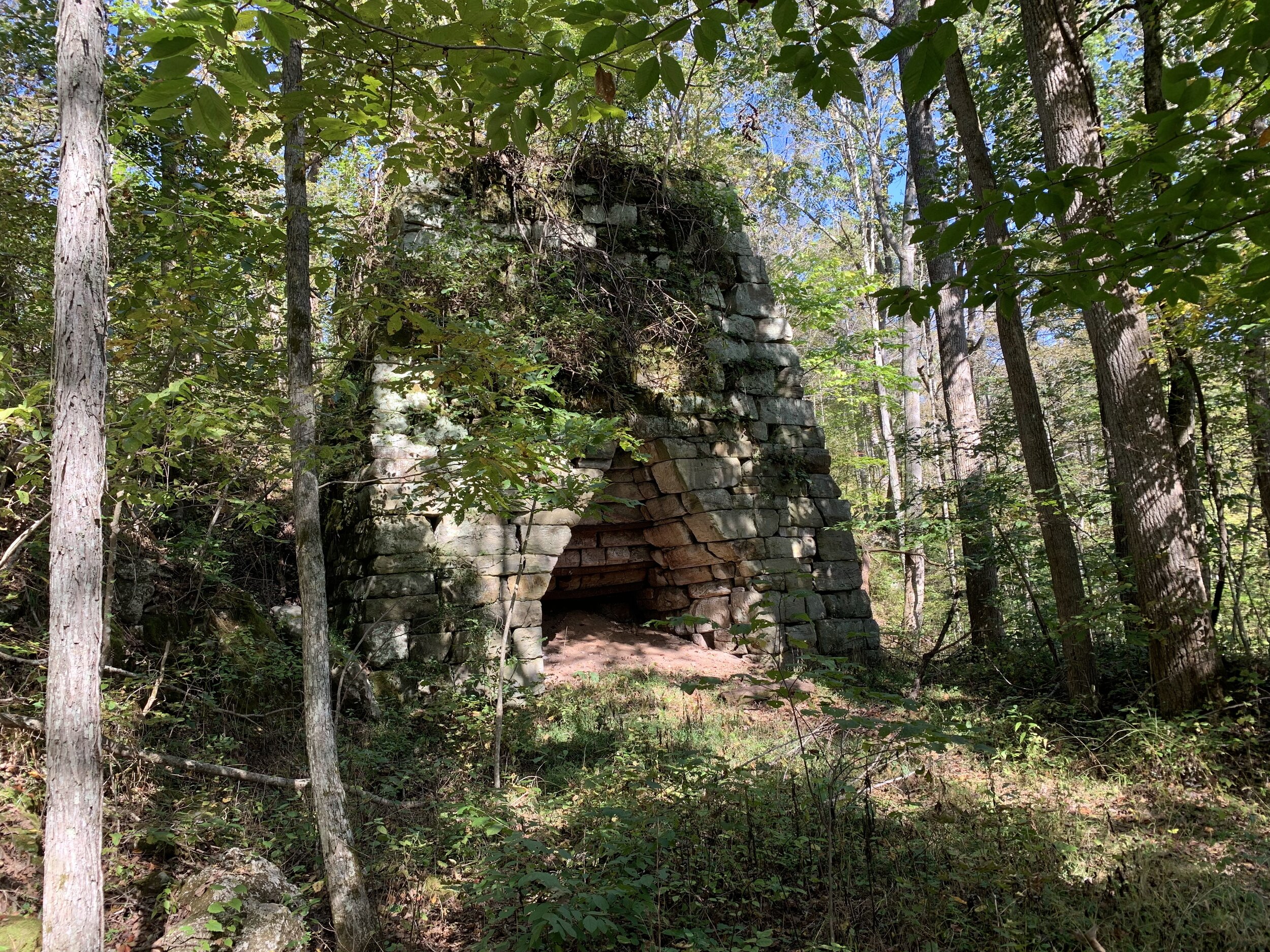
Throughout the 19th century the Bluegrass state was a major producer of the iron used to build an industrialized United States. Men worked brutal hours in local mines to extract the precious iron ore from the Earth, but like many ores the yield of usable iron was relatively small. To avoid having to transport massive quantities of ore across the region’s numerous hills and valleys, large stone furnaces were erected near the mines to process the ore into “pig iron”. These giant towers were built from stone blocks weighing hundreds of pounds each, and designed to hold up against the abuse of heavy industrial work. So when new refining techniques were developed and better quality ore found elsewhere in the country, the furnaces were simply abandoned to the elements rather than torn down. Today many of these monuments to a dead industry still litter hillsides in remote areas of the state.
Just off Route 213 along the border of Powell and Estill counties stands the remains of the “Cottage Furnace”. Erected in 1856 and operating until 1879, it was the first “hot blast” furnace in the area. At its peak the furnace is said to have produced 725 tons of iron in a mere 18 weeks. It stands as the namesake for the region, as the are is known to this day as “Furnace Mountain”. Although most furnaces in the area were abandoned as the local industry died and “pig iron” proved less profitable, this particular furnace owes its end to a much more tragic event. The owner of the furnace received news of his beloved son’s death during a production run, and ordered the immediate ceasing of all activity. As the hot batch of molten iron was allowed to cool the inner workings of the furnace became a solid core that could not be melted down again.
To reach the furnace you can take the Bert T. Combs Mountain Parkway to the Stanton exit, and then head south along Route 213 before turning right onto Marbleyard Road. You will eventually come to a small turnoff with a locked gate. From here you’ll have to park and walk a little shy of a mile down a well maintained gravel drive. At the end of this drive is a beautiful little picnic area, with no sign of the furnace. The picnic area is a loop, and to find the furnace simply check the far-left side of the loop coming from the driveway. You’ll find an obvious little trail head, and the furnace is maybe 75 feet down this trail. You’ll see the backside of the furnace first, and because it sits on a hill it will look fairly short. The train then loops around and down, dropping you off in front of this long forgotten giant.
As you approach the furnace you’ll be facing its front. At some point iron bars have been added to help shore up the entrance, but owing to its solid iron core you will not be able to see much or get very far into it. You can head to the left and scramble up the left side of the furnace to see an additional entrance, or go right and gain access to a tight little trail that will take you to the backside where there is a small opening where additional parts of the furnace would have once stood. The most remarkable feature of this furnace though is the smell. That long solidified iron core has spent almost 150 years exposed to the elements, and the smell of rust is very strong, particularly along the back side.
The Cottage Furnace is a neat little slice of forgotten history, but the additional tragic backstory definitely makes it a must see. “As the crow flies” its also very near the Fithchburg Furnace which is a the largest left in the state. The hilly terrain of the area means will be a bit of a drive, but these 2 can easily be combined into a nice little day trip to see a unique piece of Kentucky’s industrial past.
Want to Experience This Adventure for Yourself?:
https://goo.gl/maps/Jp3dzAfK24zg49ed8
The John Rankin House
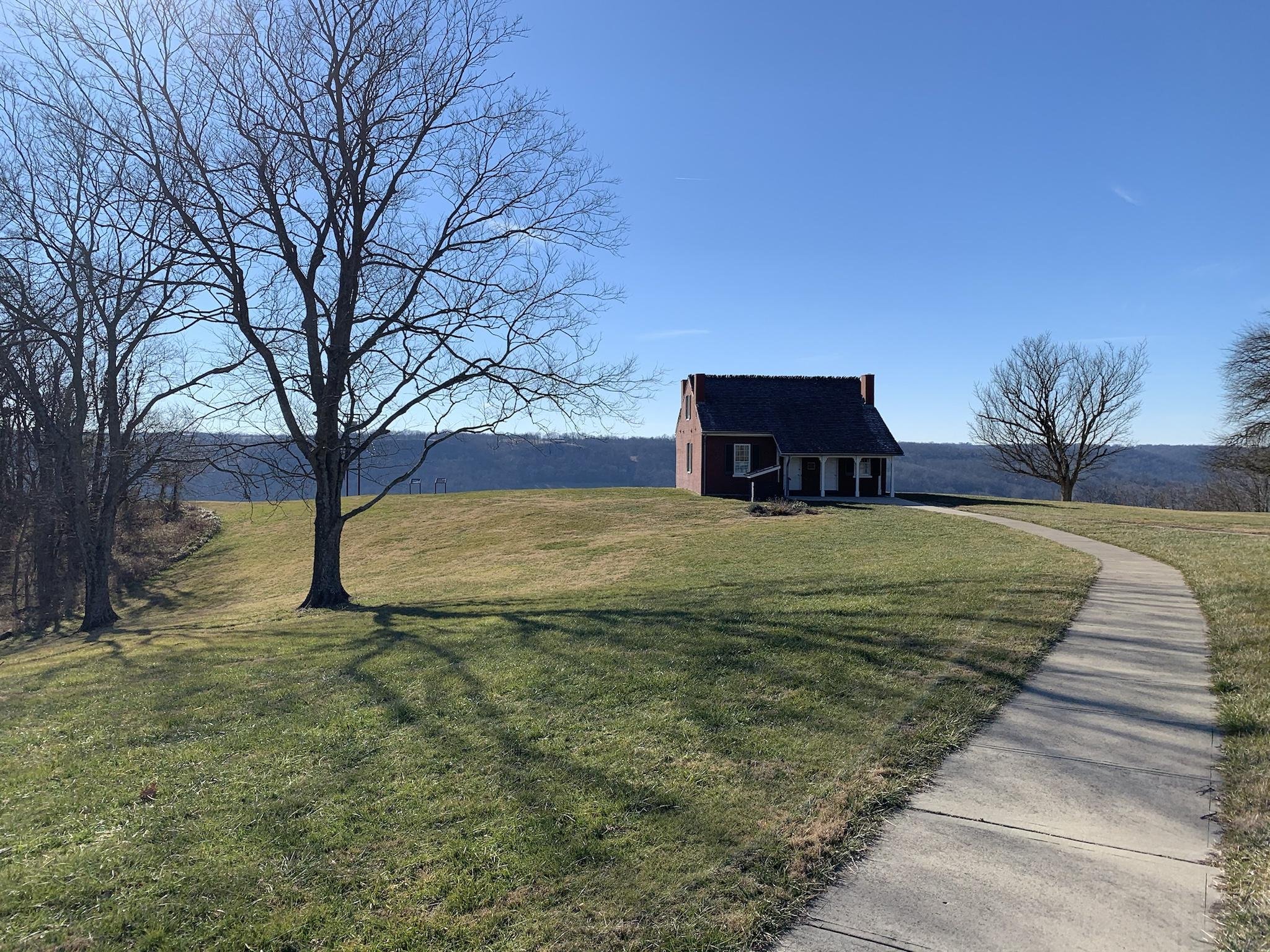
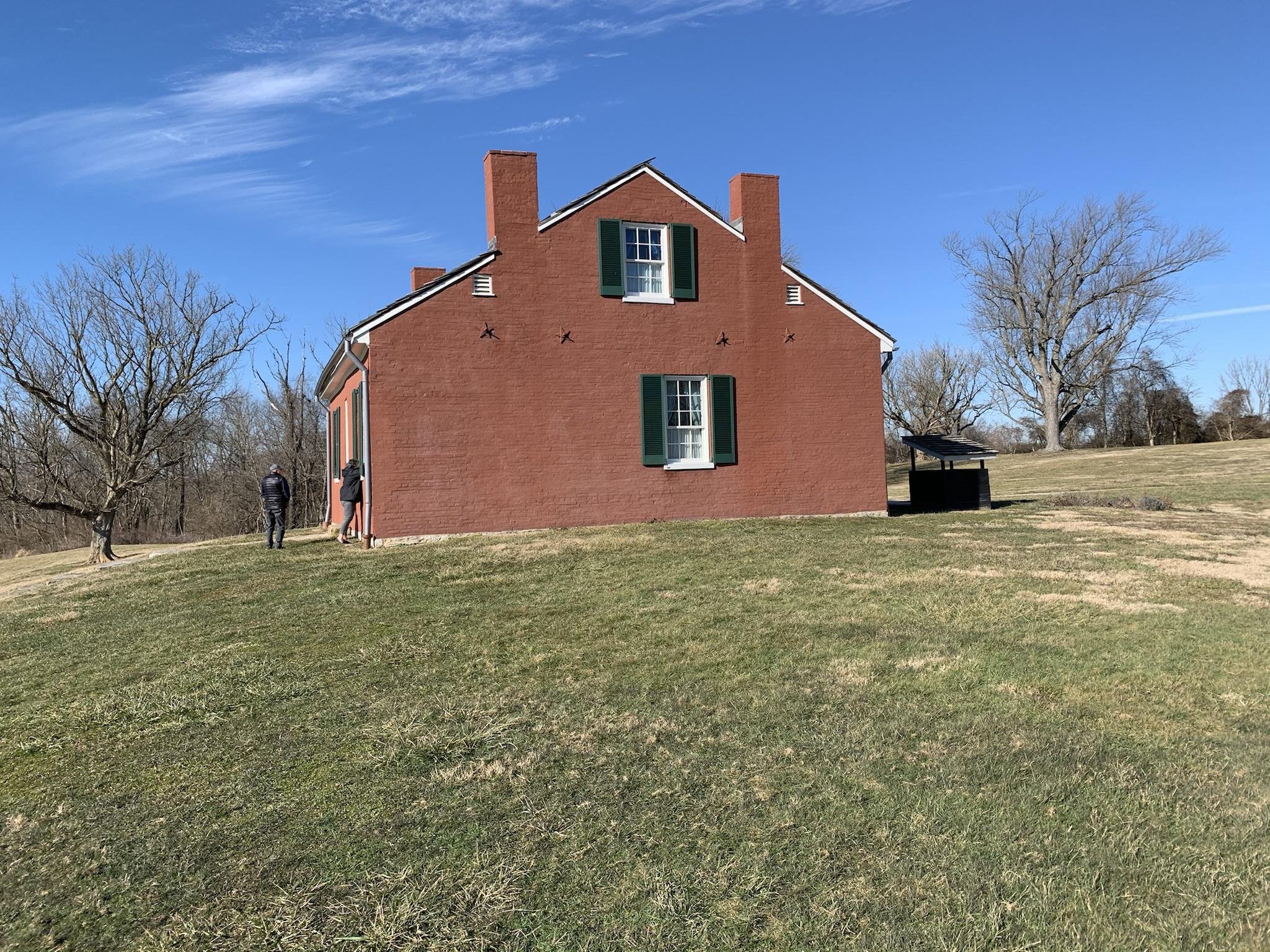
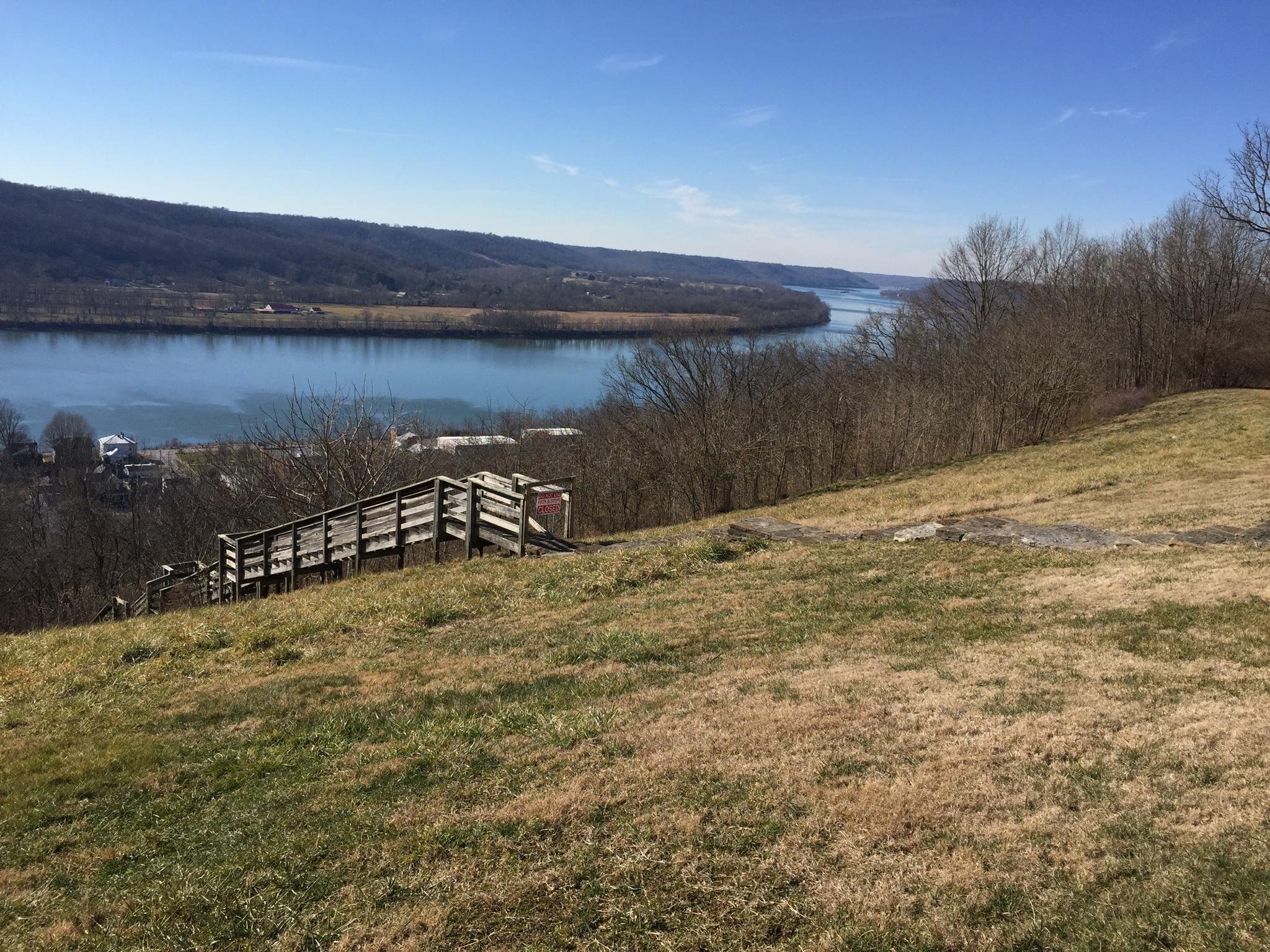

John Rankin was a minister and prominent abolitionist during the 1800’s. Born in Tennessee, he worked extensively in central Kentucky, and ultimately built a home that would serve as one of the most important stops on the Underground Railroad in southern Ohio.
The John Rankin House was specifically built on a prominent hill overlooking the Ohio River. From this towering perch the house could be easily seen for miles in both directions along the river. At night Rankin would hang a lantern from a post on the hill, acting as a lighthouse to guide escaped slaves as they crossed the river into the free-state. He even built a path and staircase to help the slaves climb the steep hill to the relative safety of his home.
Upon reaching his house the escaped slaves could get food, rest, and advice for continuing on their journey through Ohio and ultimately to Canada where they could finally be safe from fear of recapture.
Mr. Rankin also just happened to be friends with the parents of Harriet Beecher Stowe, and ultimately shared a few of his personal experiences from working the railroad with the family. One of these stories would ultimately be directly used in her famous novel “Uncle Tom’s Cabin”, which helped stir up anti-slavery passions in the north and arguably helped spark the Civil War.
Rankin may have built the house on “Liberty Hill” purely for logistical reasons, but an added benefit of this towering perch is the absolutely gorgeous view of the Ohio River valley below. Standing on that hill you can’t help but appreciate the natural beauty, as you feel the enormity of the weight of history all around you. If you were a slave that happened to escape through Kentucky, there is a very good chance that you stayed at this house.
Want to Experience This Adventure for Yourself?
6152 Rankin Hill Rd, Ripley, OH 45167
The Colville Covered Bridge
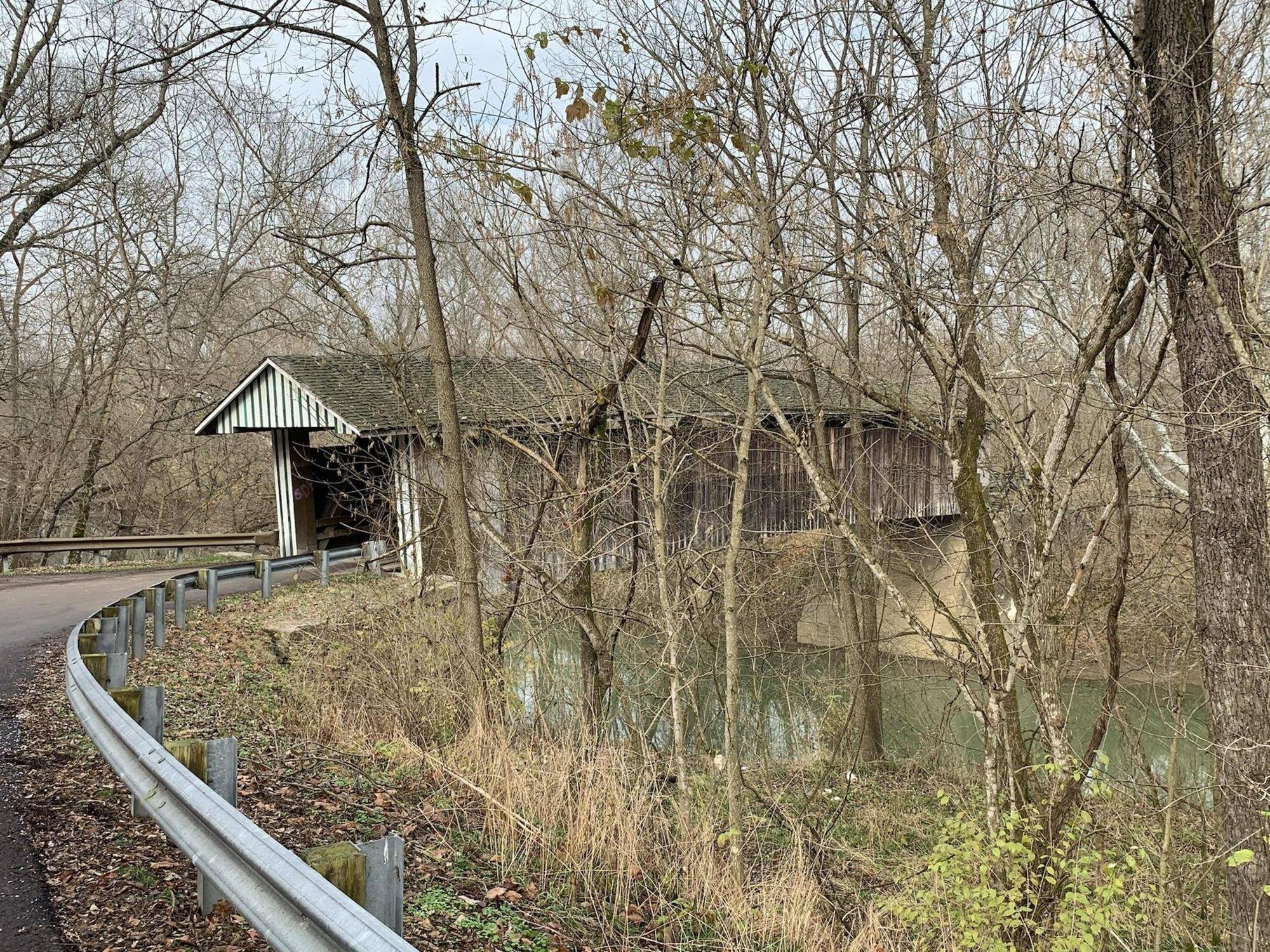
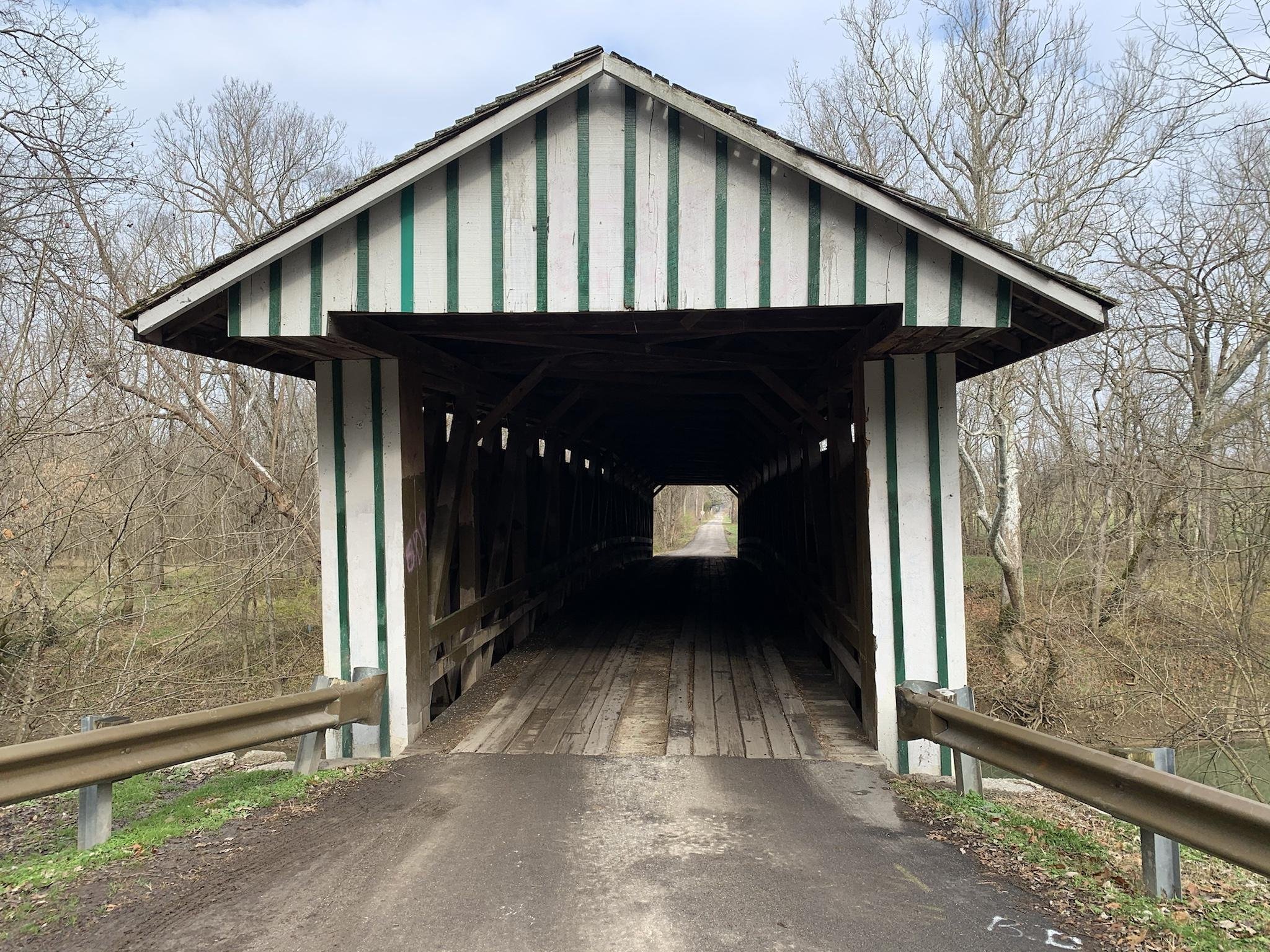


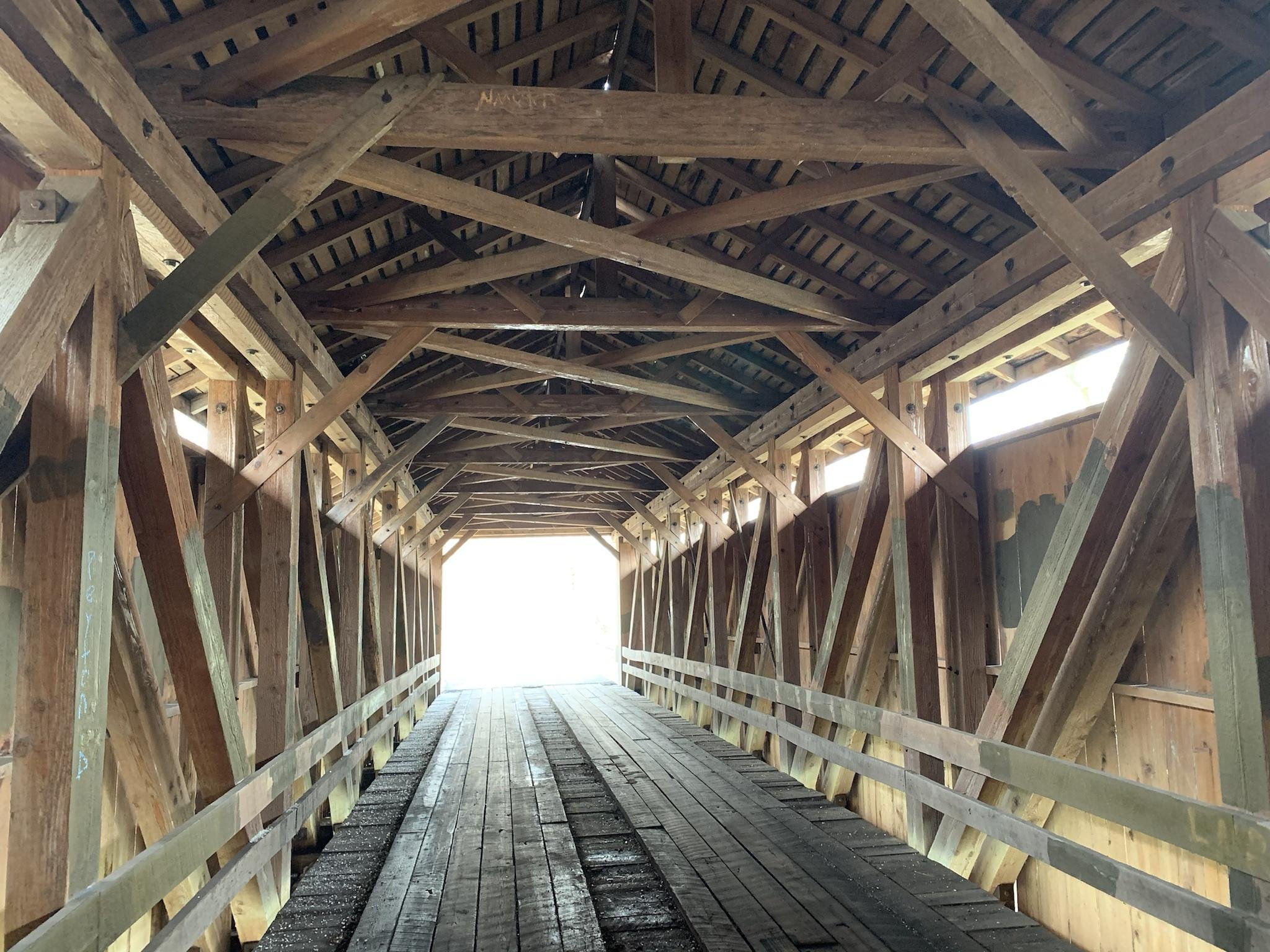

Throughout the 19th century the covered bridge was a popular design for water crossings in America. Builders found that by putting a roof and side-walls on their bridges they could shelter the critical structure from the elements, helping prevent rot and decay from causing damage. Kentucky alone was home to over 400 such structures.
As steel and concrete replaced wood and nail, the vast majority of these bridges were destroyed and replaced with modern structures. Today the Bluegrass State is down to only 11 remaining bridges (we lost our largest remaining one to arson in early 2021), of which only 3 are still drive-able.
Over the course of the past year I was able to visit all of them (including the remains of the Beechfork Bridge), but my first one was the Colville Covered Bridge in Bourbon County Kentucky.
Built in 1877, the bridge spans Hinkston Creek, and is a Burr Truss design. It measures 124 feet long, and 18 feet wide. It has undergone restoration work in 1931, 1937, and again in 1976. It is one of the 3 remaining bridges that you can drive across, and happens to be located in Amish country, so we were lucky enough to see a horse and buggy drive across it during our visit. According to legend, it might also be the only haunted covered bridge in Kentucky, owing to a man hanging himself from one of its rafters.
Each of Kentucky’s historic bridges has their own unique beauty. Some are in various states of disrepair, but Colville remains in pretty nice shape. She could use a fresh coat of paint, but holds up well enough that you shouldn’t feel the least bit nervous driving across her. I highly recommend seeing each of these grand structures if at all possible, before they disappear forever. If you happen to be located in the Bluegrass region like me, Colville is definitely a great starting point.
Want to Experience This Adventure for Yourself?
https://goo.gl/maps/EUGjoAGLHSs6xHj3A
The Valley View Ferry
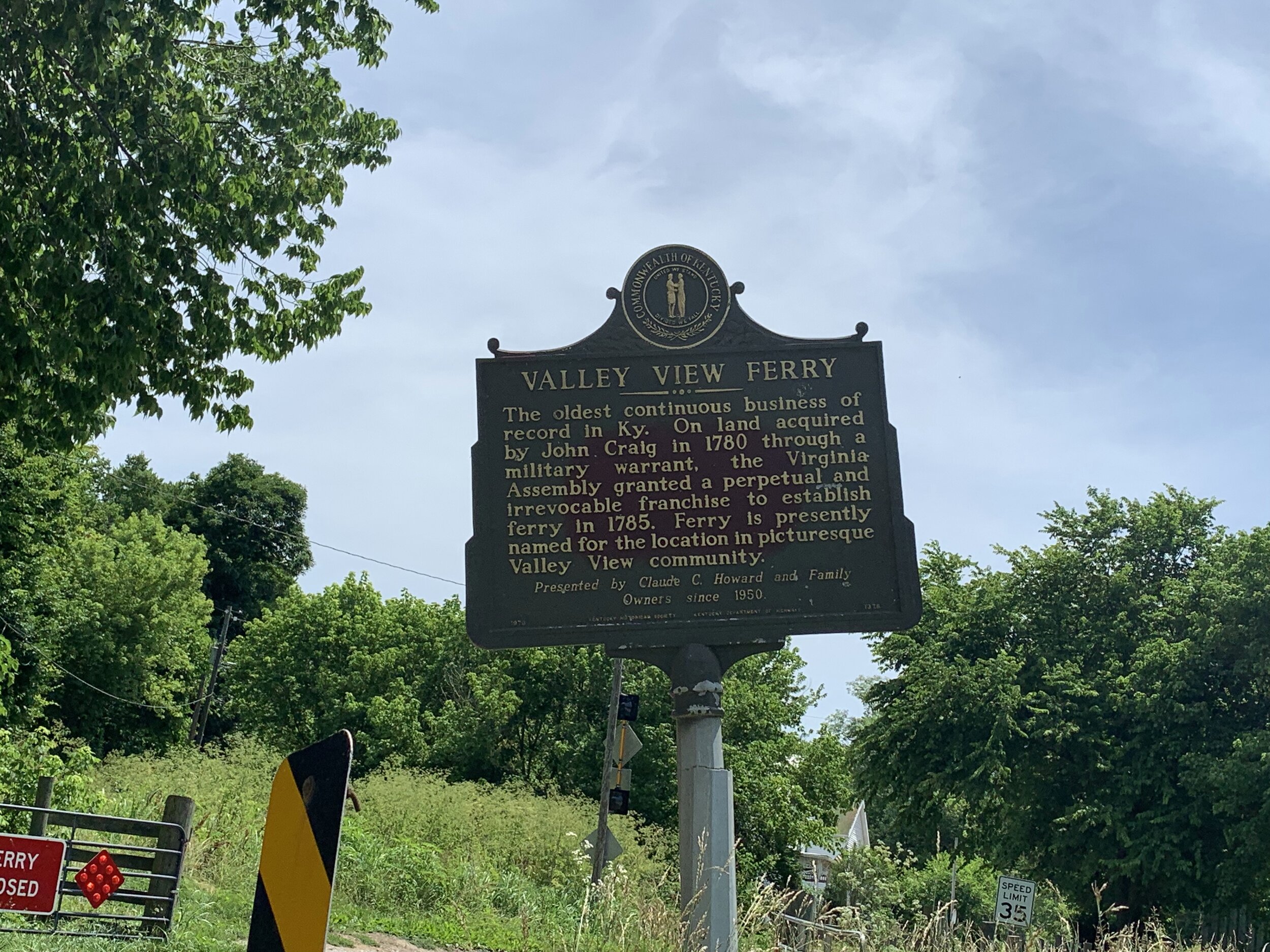
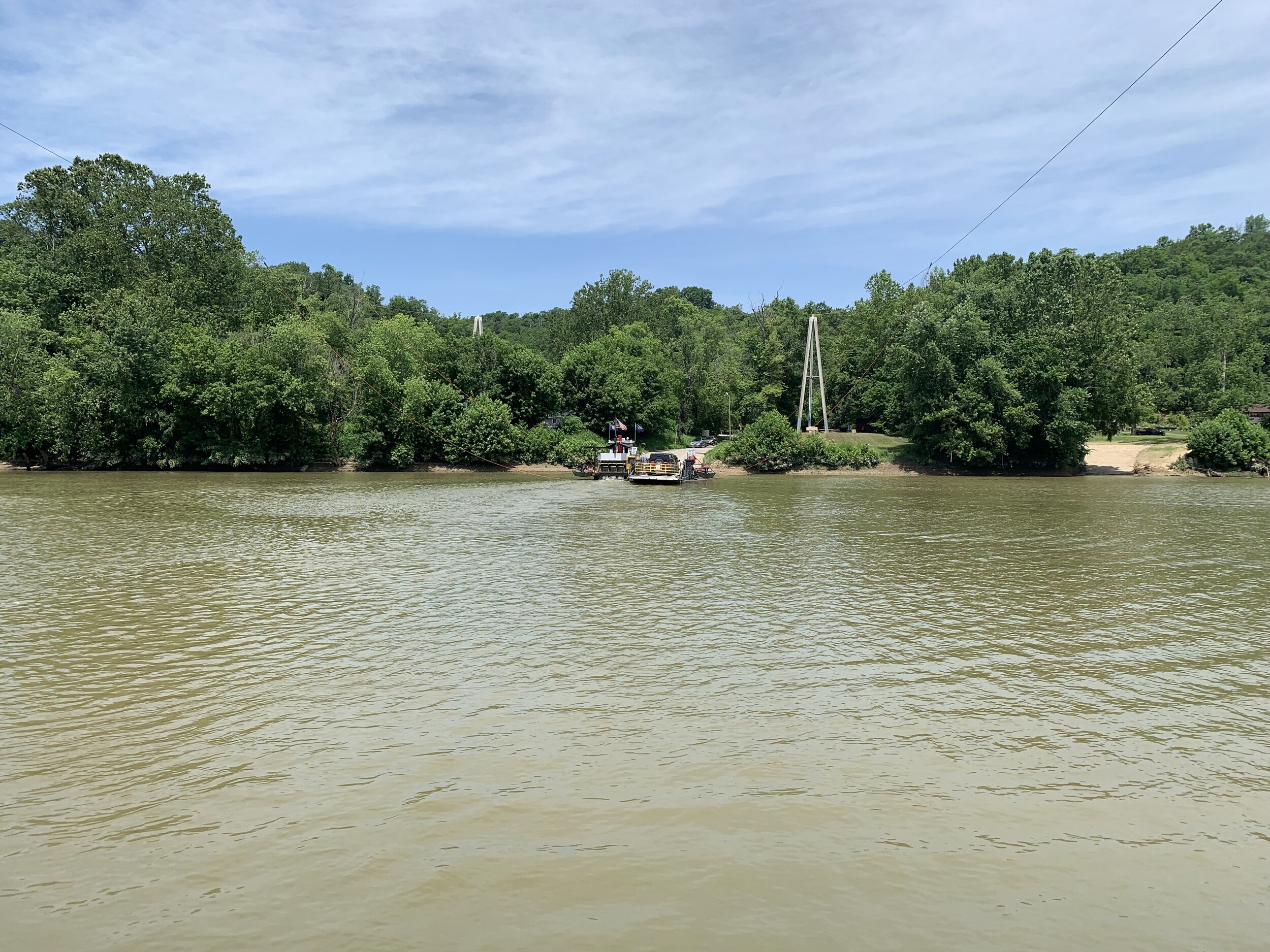
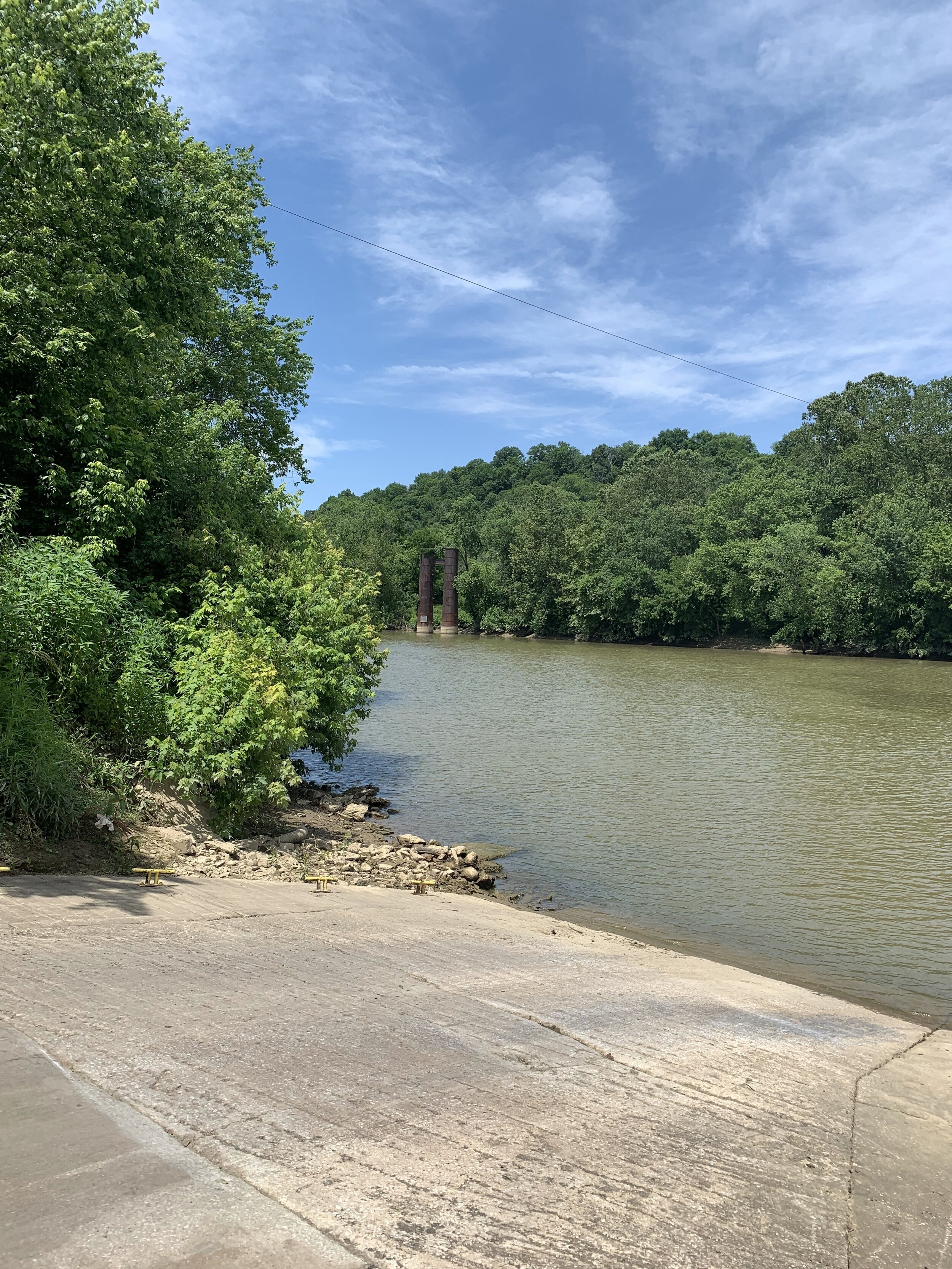

If you follow Kentucky’s state route 169 as it winds through rural Madison and Jessamine counties you will come across an interesting little piece of Bluegrass history. Ferrying cars between the shores of the Kentucky river is the state’s oldest continuously operating business, the Valley View Ferry.
Beginning in 1780, a full 12 years before Kentucky became a state, John Craig established his business carrying passengers across the river. 5 years later the state granted him a perpetual and irrevocable franchise for the business. It was operated for over 200 years as a private business, being sold throughout the years 5 times, until being acquired by the state in 1991.
Today you can ride the modern ferry for free, and retrace the path taken by such notable figures as Daniel Boone, Henry Clay, and even Ulysses S. Grant. Although it may seem a novelty, the ferry provides a valuable service for local residents who would otherwise have to drive miles out of their way to reach the nearest bridge crossing. This means that if you’re planning a visit, you should account for “busy hours”, such as the morning and afternoon commutes for travelers on their way to work. The ferry can hold 3-4 cars at a time at most, and so things can get a bit backed up. The boat is able to make it’s crossing in roughly 5-7 minutes, not including loading and unloading times. The large boat and slow speeds means that you’re not really aware of the motion, and shouldn’t be concerned with “sea sickness”. There are also adequate life vests on board to provide for all passengers during any emergency that might arise. The state does ask that you remain in your vehicle during the journey, but you are welcome to roll down windows and hang phones/cameras out the window. Be warned though, the ferry does close in the event of high water, so it’s worth checking before planning a trip.
Outside of coastal areas a ferry is a somewhat unique sight. Therefore Valley View offers a peculiar opportunity to experience an outdated form of travel, in a historic setting. Although the boat may be modern, knowing that you’re crossing in the same path and means as so many historical figures cannot help but transport you back to another time. While this short trip across the river may not merit a long journey just for its sake, it can easily be paired with visits to the numerous history sites in nearby Madison, Jessamine, Clark, and Fayette counties.
Want to Experience This Adventure for Yourself?
The Fitchburg Furnace

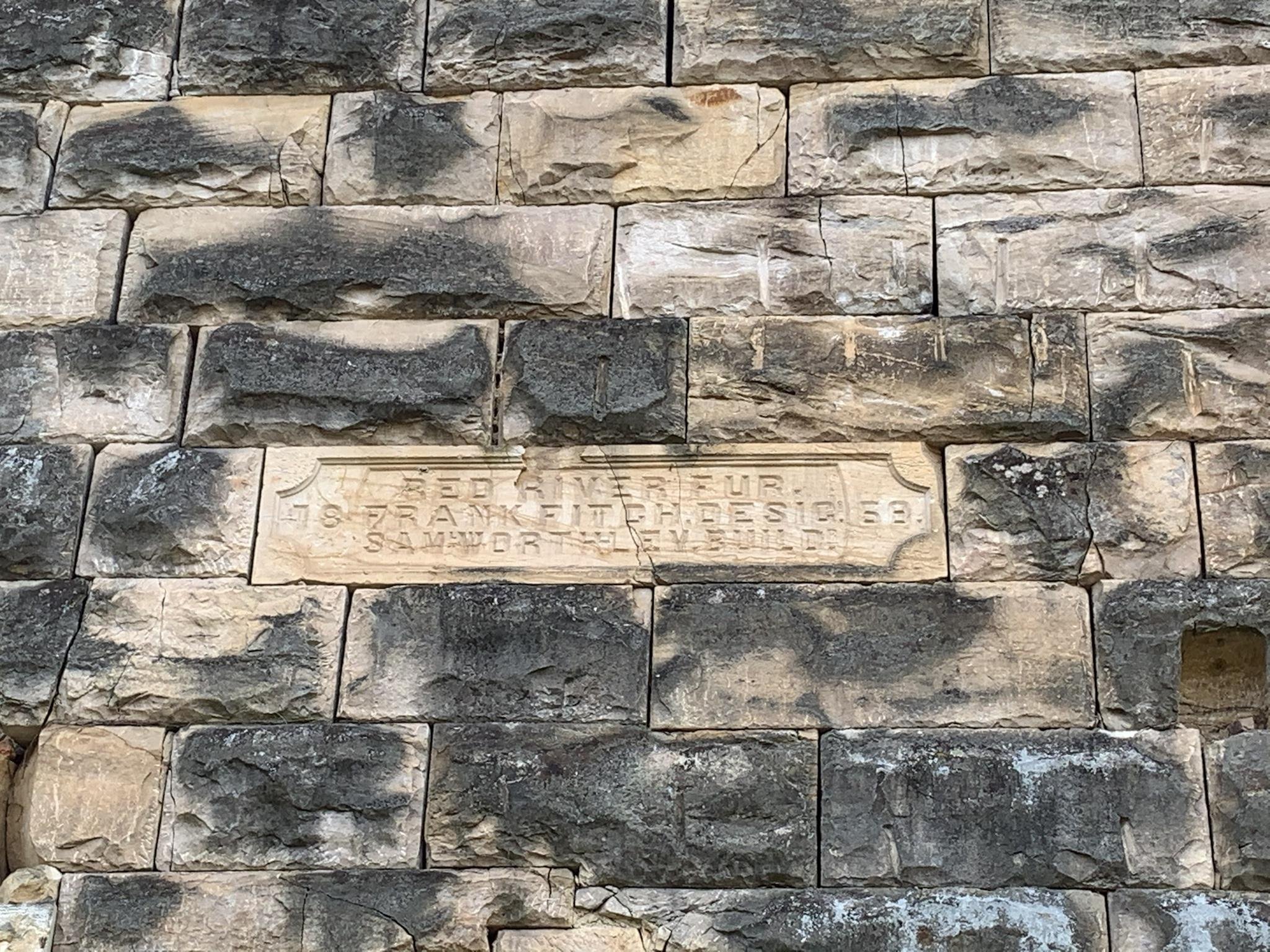
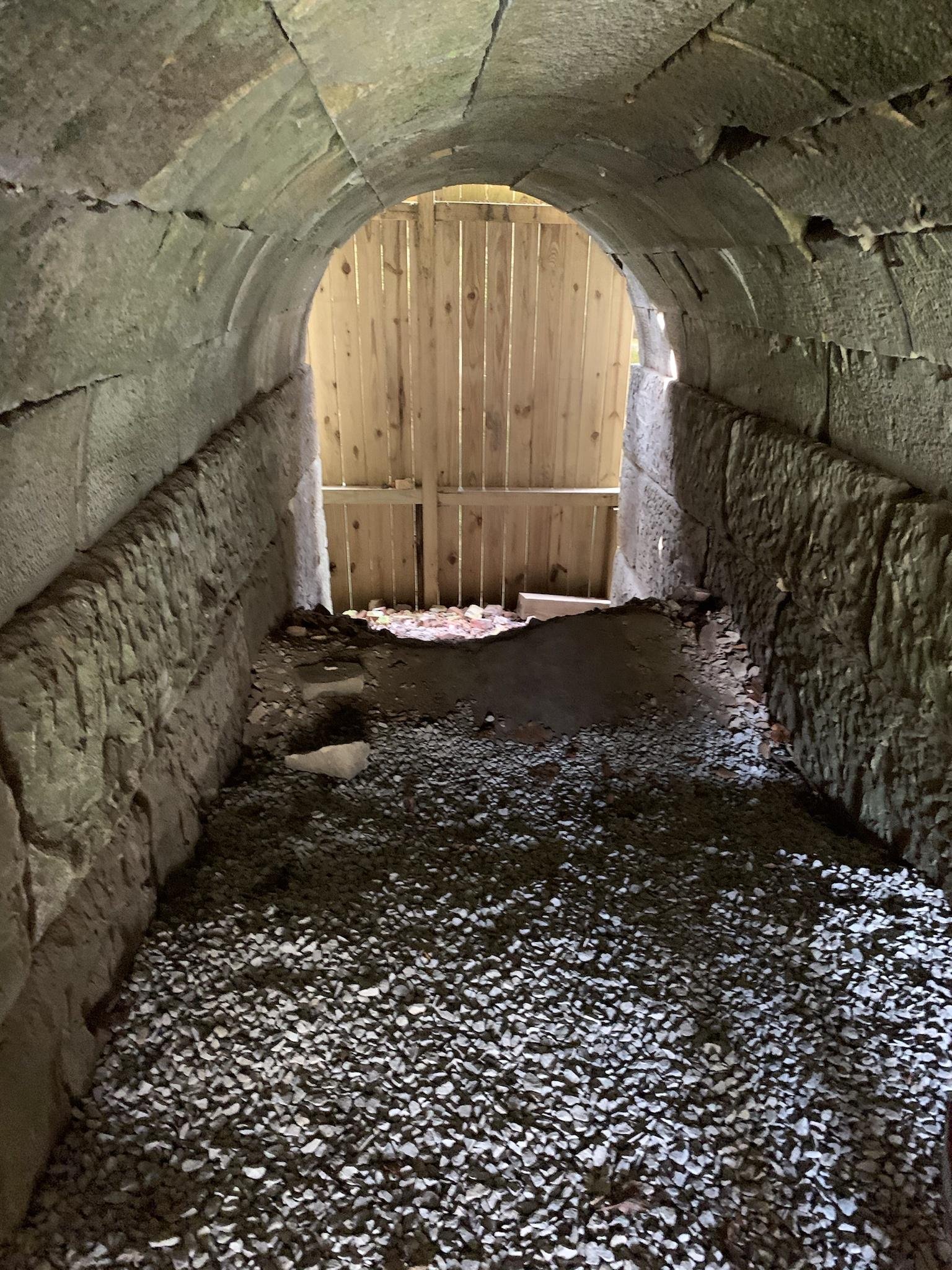

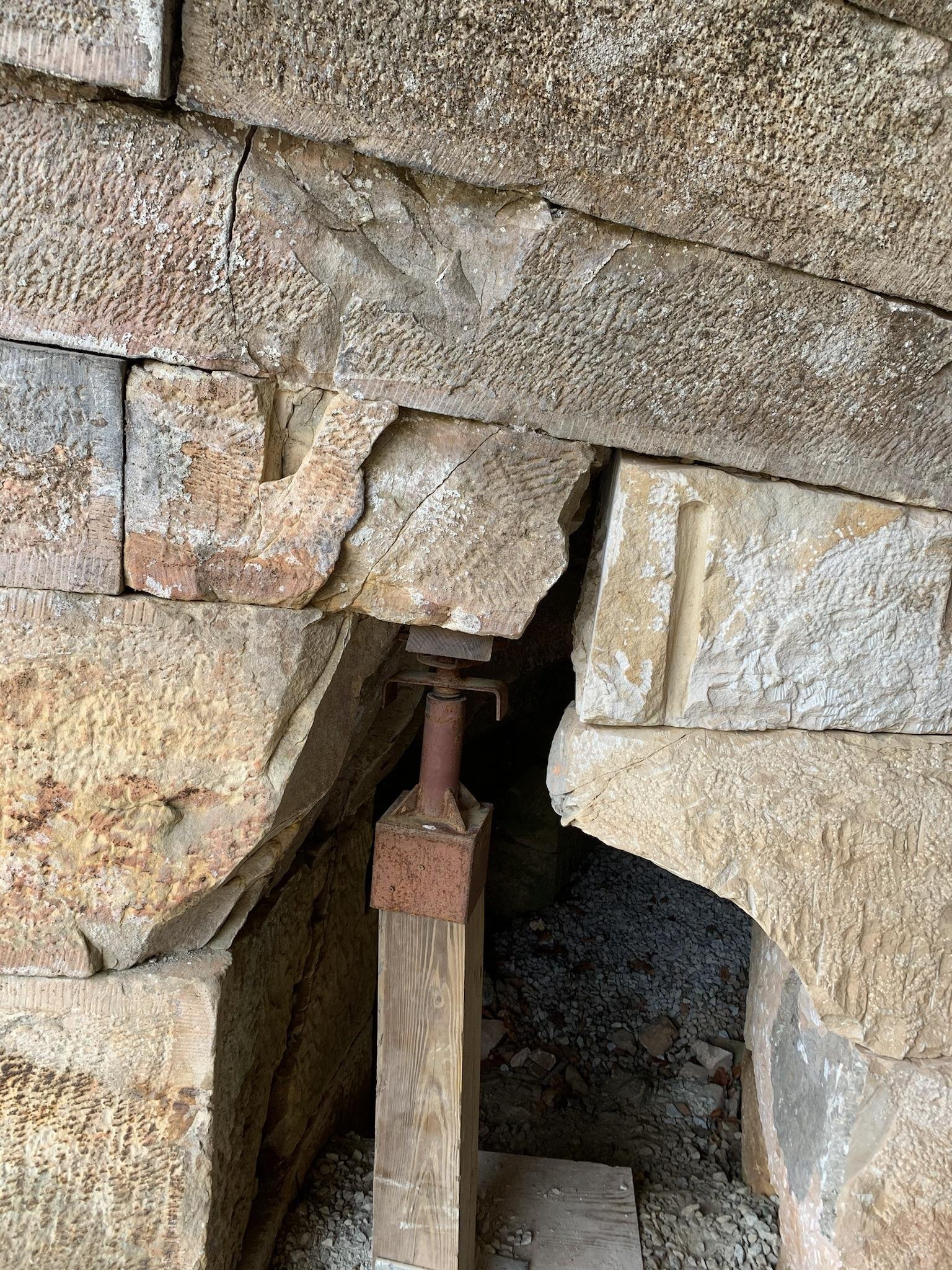
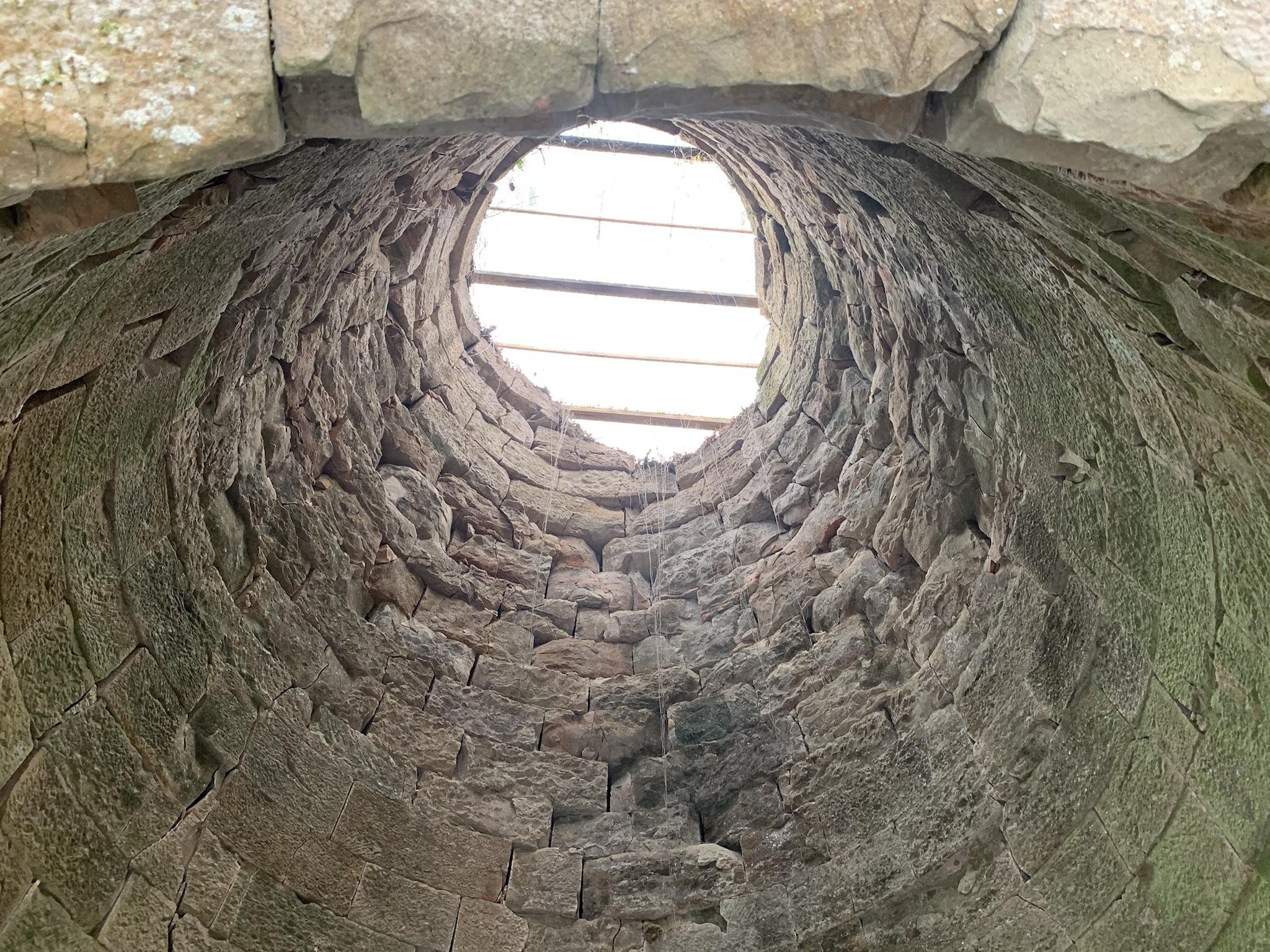
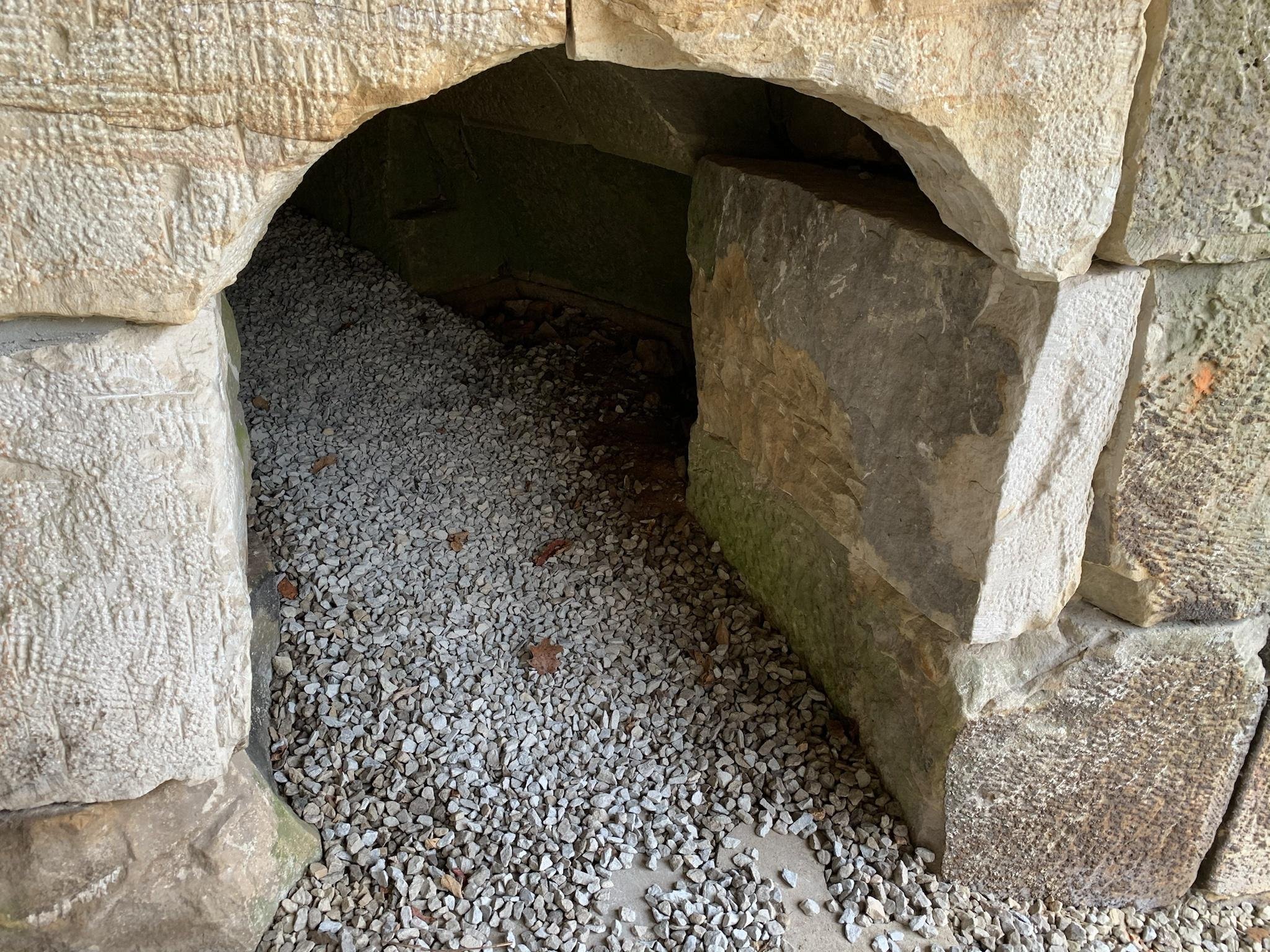
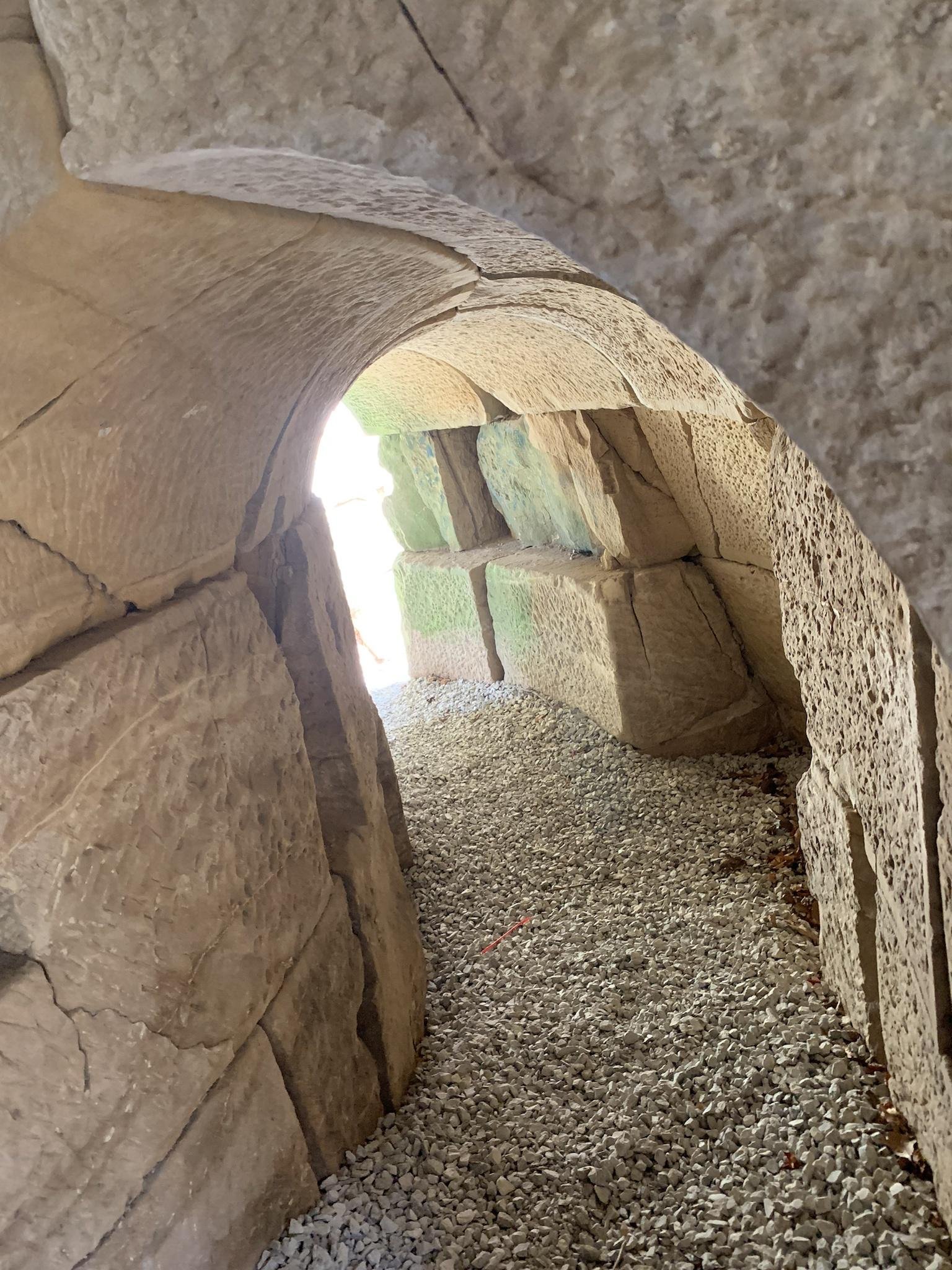
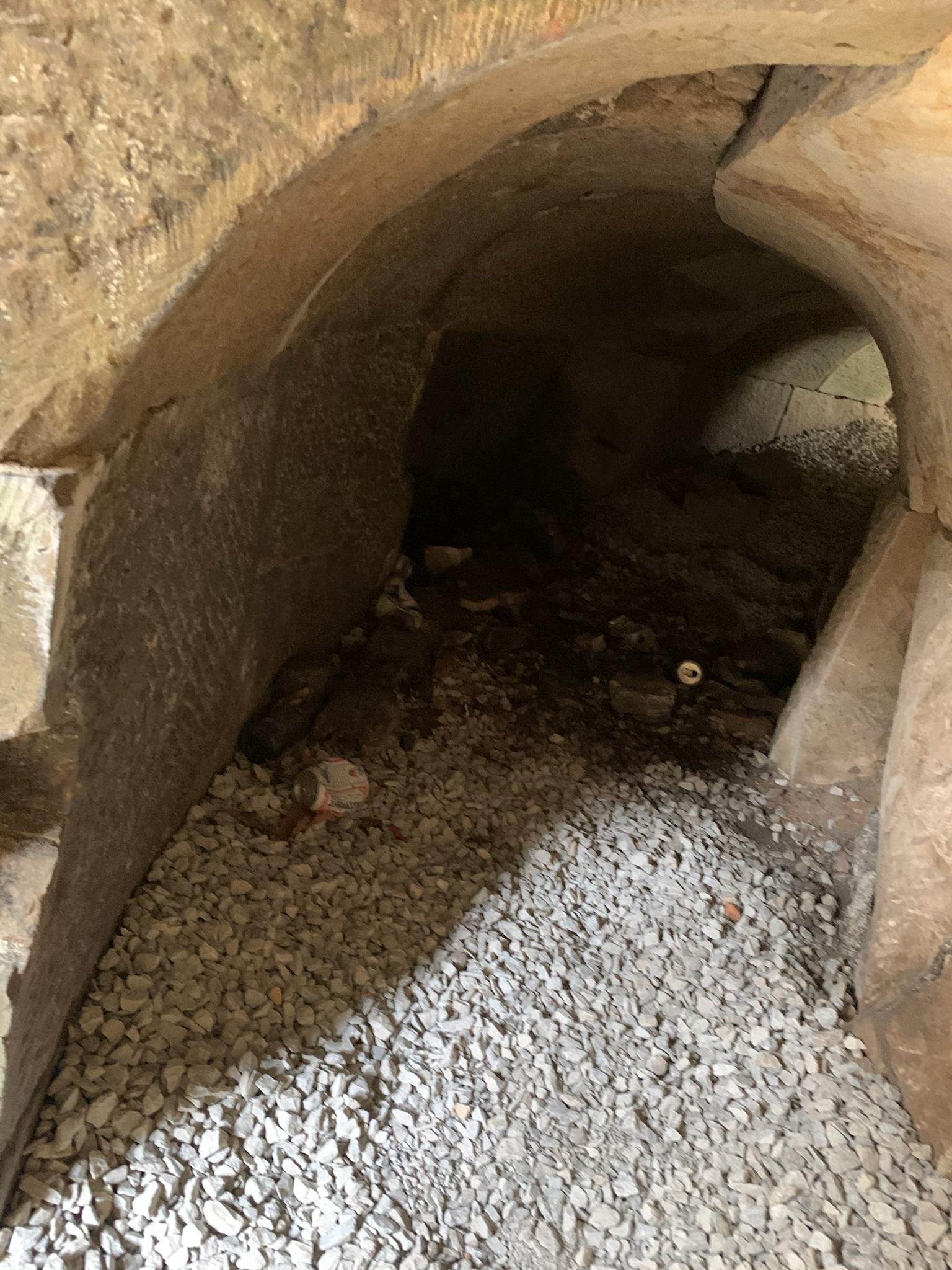
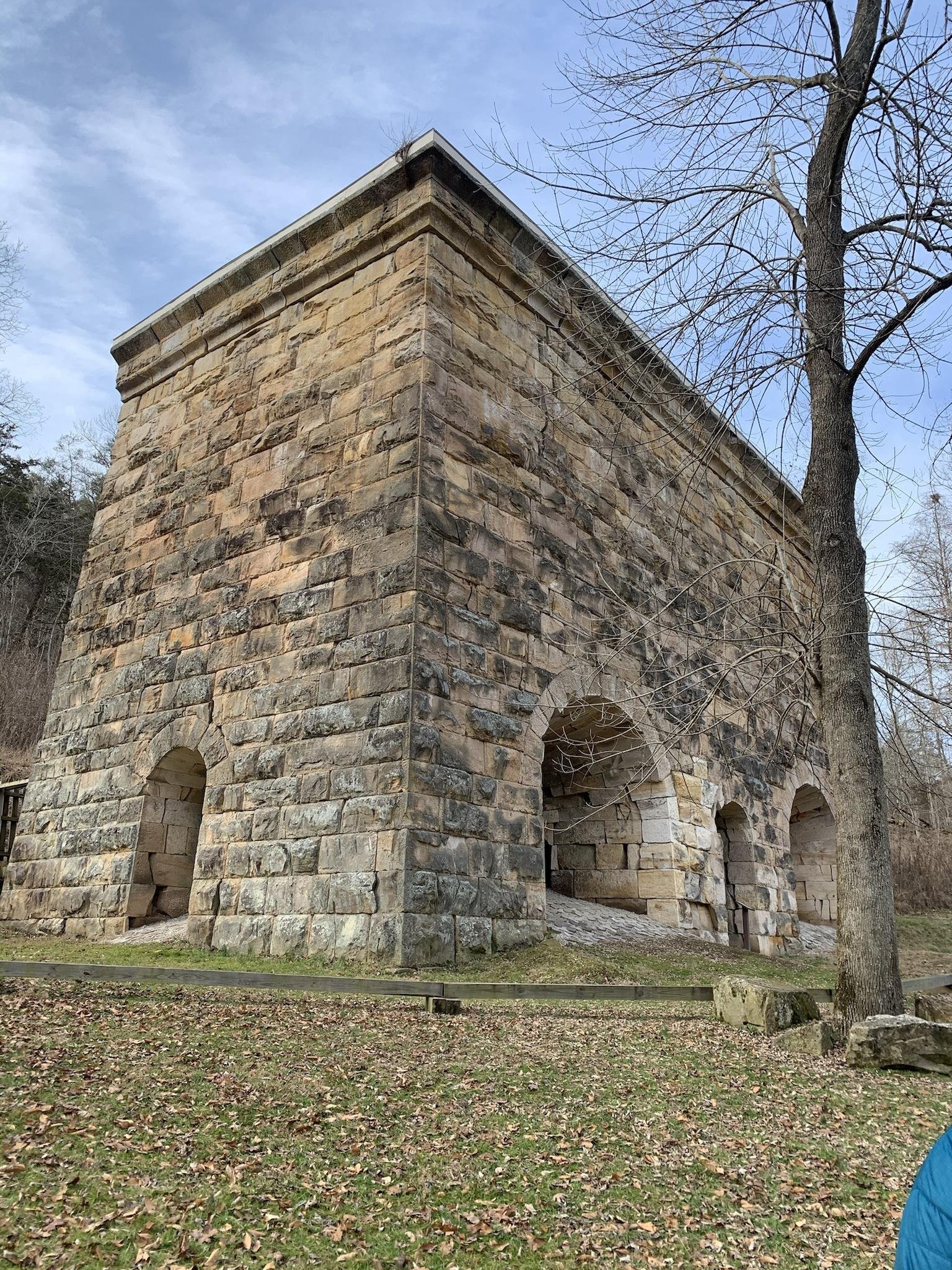
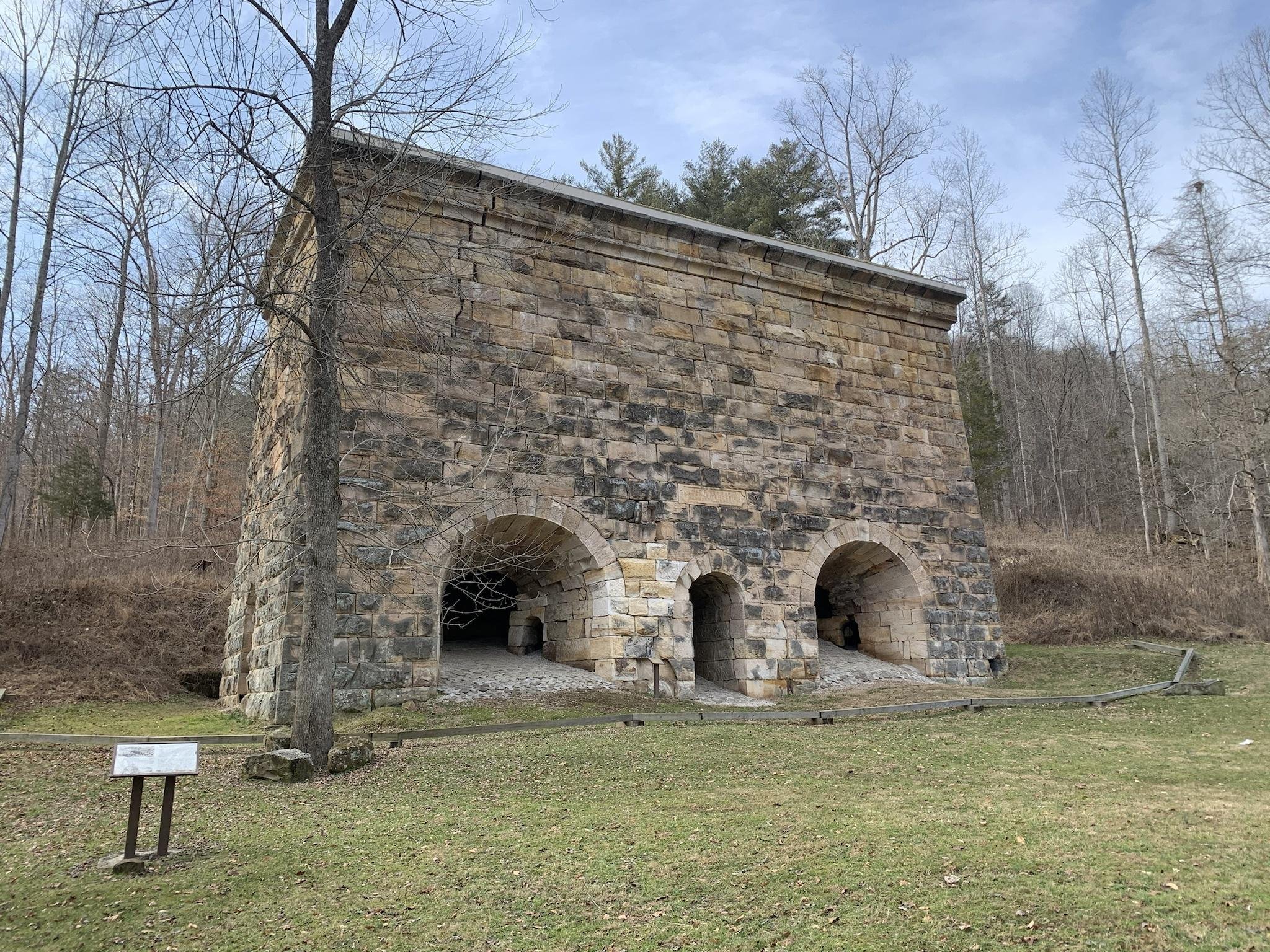
For much of the 19th century iron production was a major industry in Kentucky. The region offered rich deposits of iron ore, and ample forests to help fire the furnaces used to convert the ore into a finished product.
In the late 1870’s new developments in the iron making process, combined with the discovery of much higher quality ore in other states killed the industry in the Bluegrass state. Although the communities that sprung up around these iron works quickly dried up, the furnaces themselves were a little harder to get rid of. These large collections of rocks, often built in very rural areas, were simply abandoned where they stood.
Today, just north of the town of Ravenna in Estill county Kentucky stands the remains of the “Fitchburg Furnace”. It is the largest coal-fired iron furnace and the last one to be built in Kentucky. The furnace set for years totally abandoned, and ultimately fell into disrepair.
Oddly enough though, most of the "damage" visible in the structure is the result of an explosion of dynamite within the structure in the early 20th century. One story alleges that locals were attempting to blast residual iron from the lining of the furnace to sell for scrap, while others say that a local moonshiner had a still nearby and attempted to destroy the structure that frequently brought curious onlookers to the area.
Thankfully the parks service has done extensive work to repair & restore the structure, as well as stabilize it to prevent further decay. Modern visitors to the site can walk through the cavernous tunnels of the furnace, and lay hands upon the massive stone blocks that comprise this castle of industry. The size of this ruin is truly mind boggling considering the technology of the time. It may be a bit off the beaten path, but is well worth a trip to witness this testament to men who performed back-breaking laboring to extract a living from the earth.
Want to Experience This Adventure for Yourself?
The Fitchburg Furnace is located at 1875 Fitchburg Rd, Ravenna, KY 40472, United States
The Russellville Girl
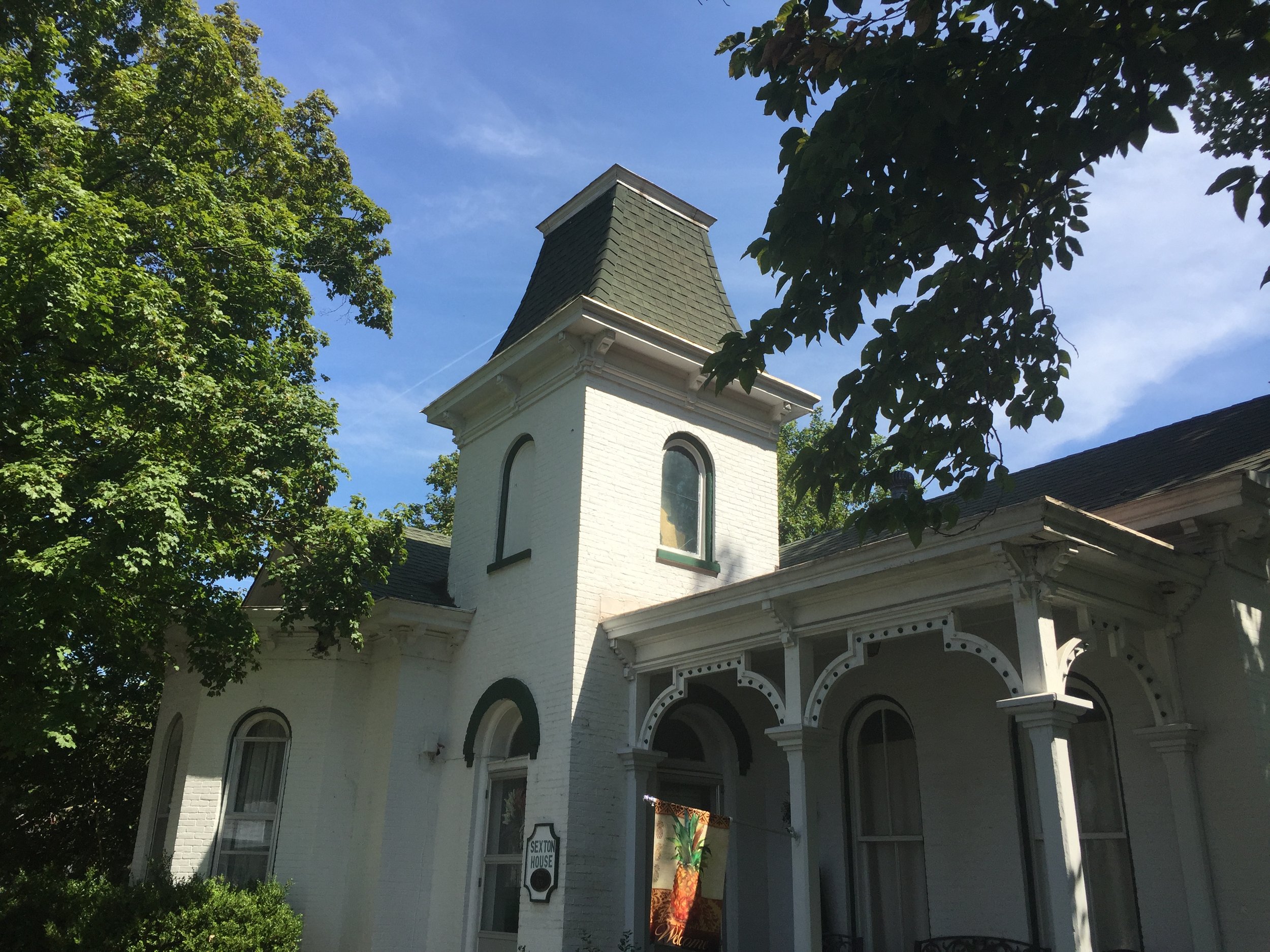
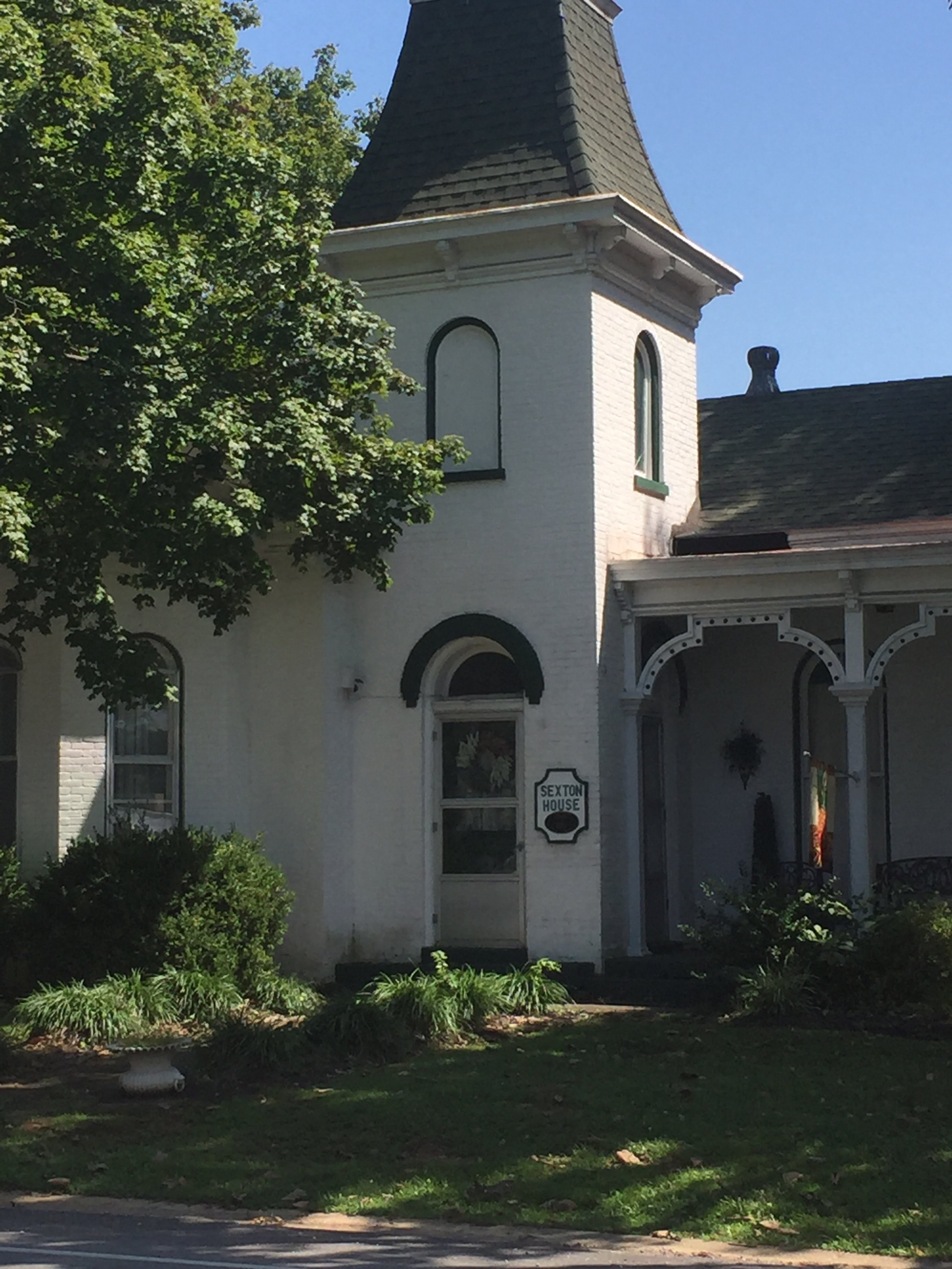
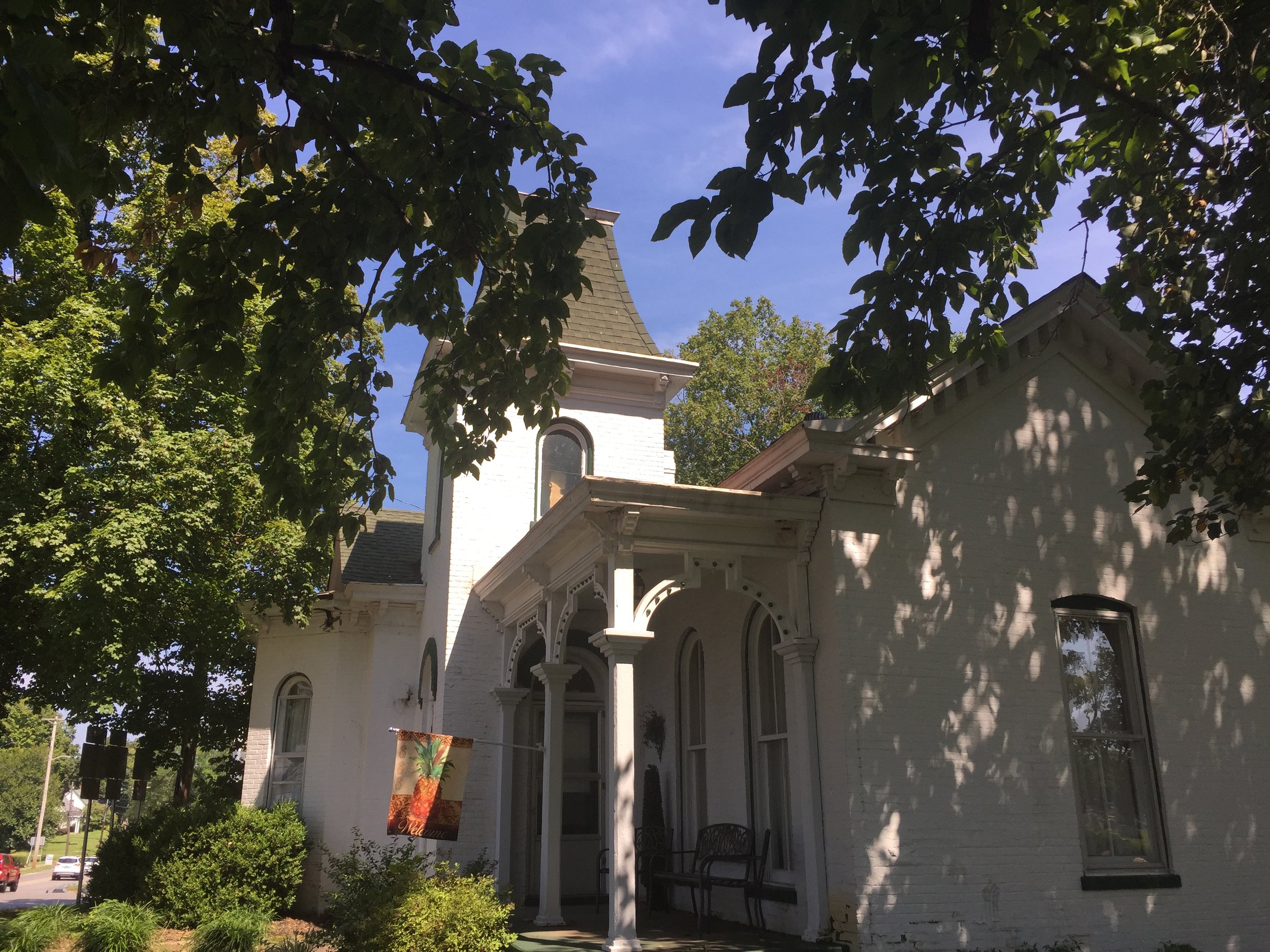
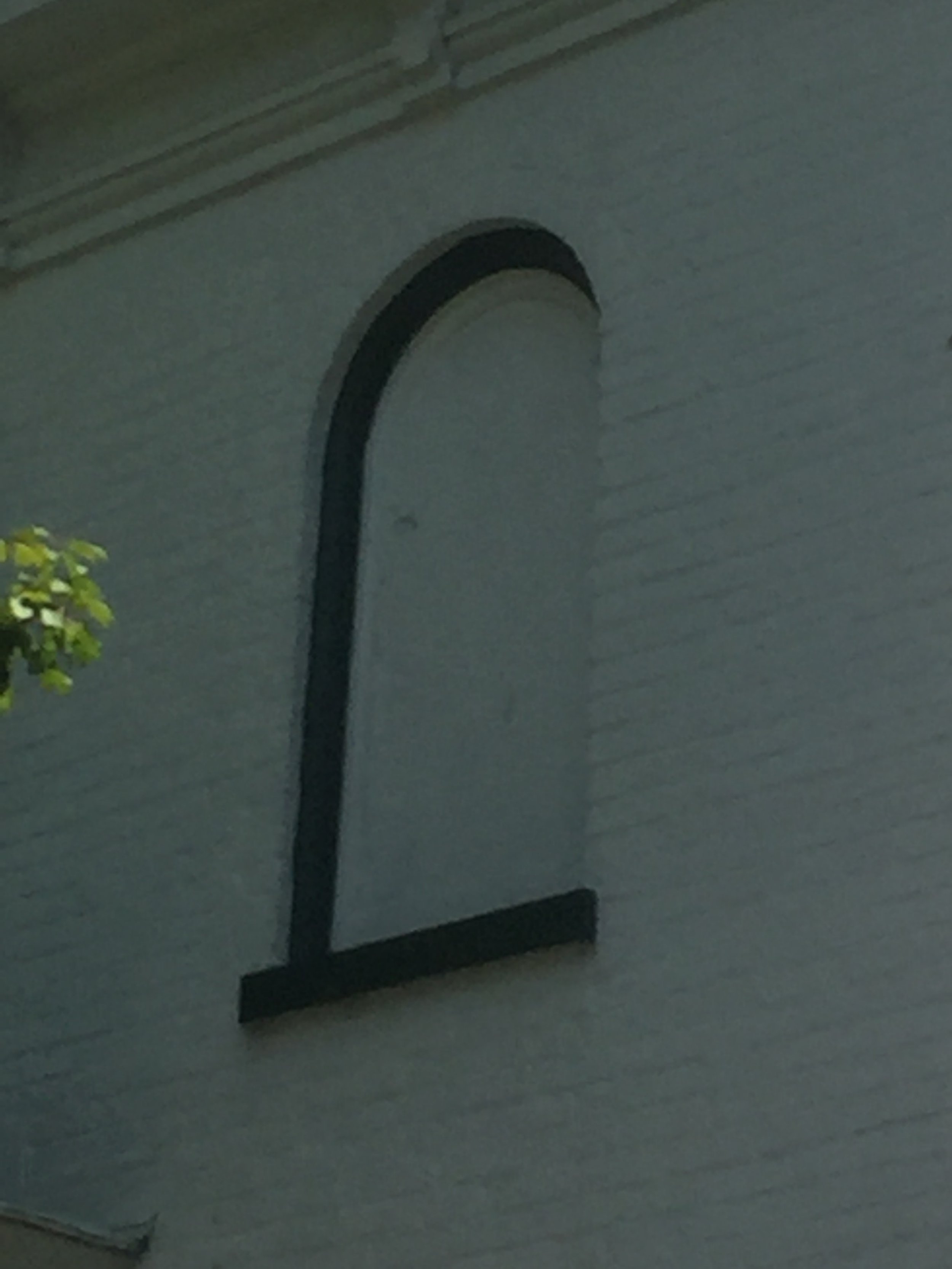
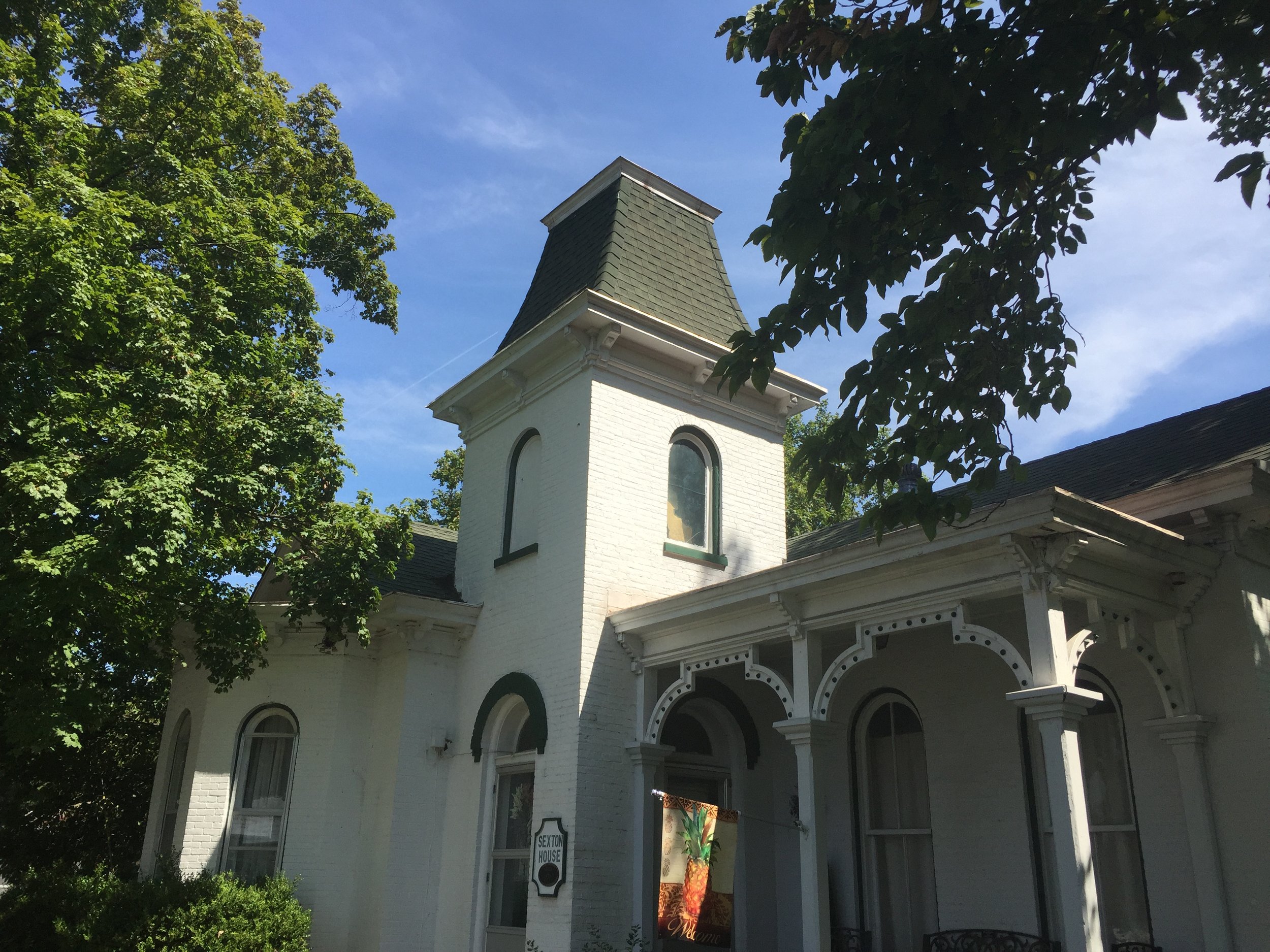
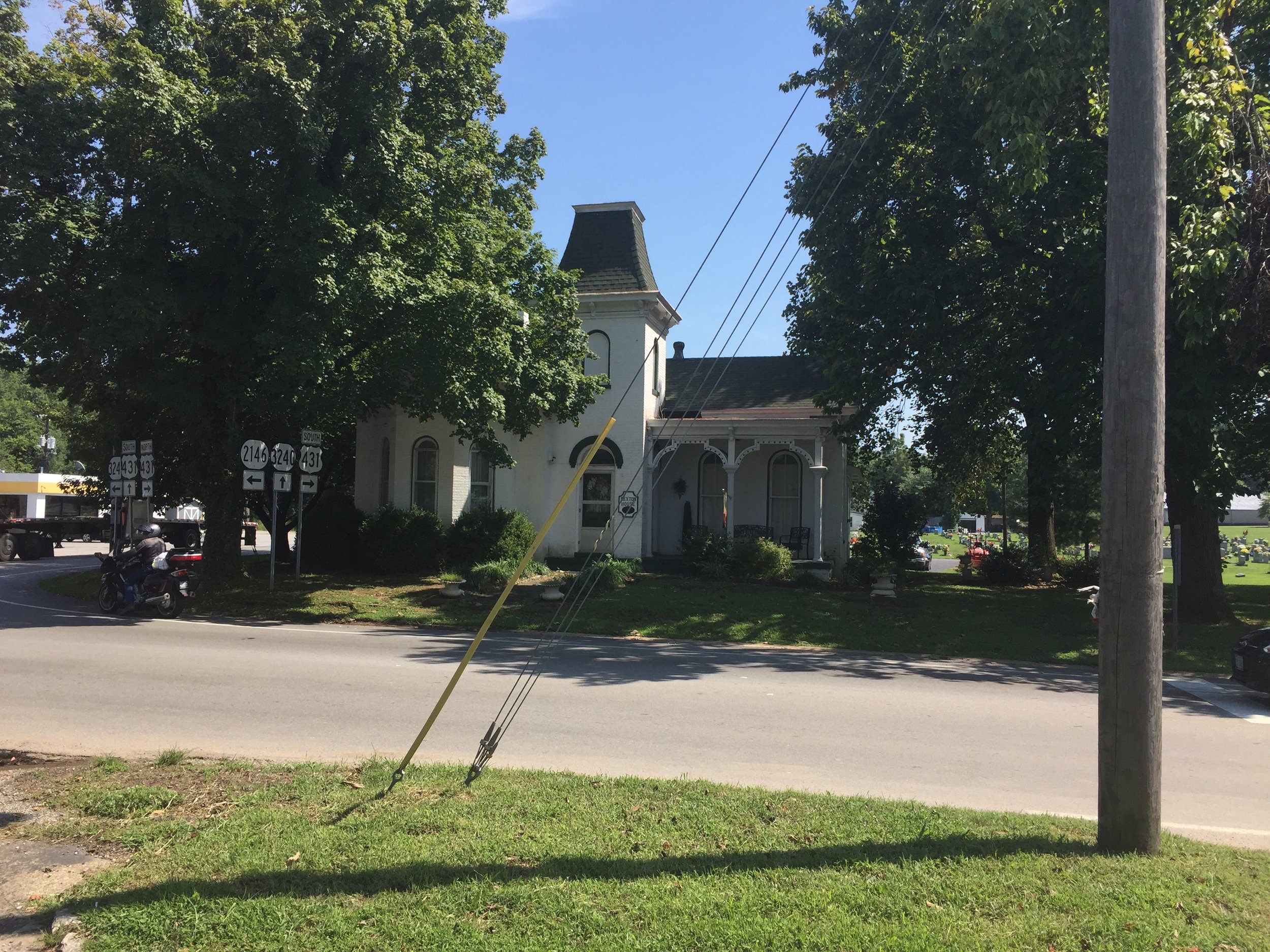
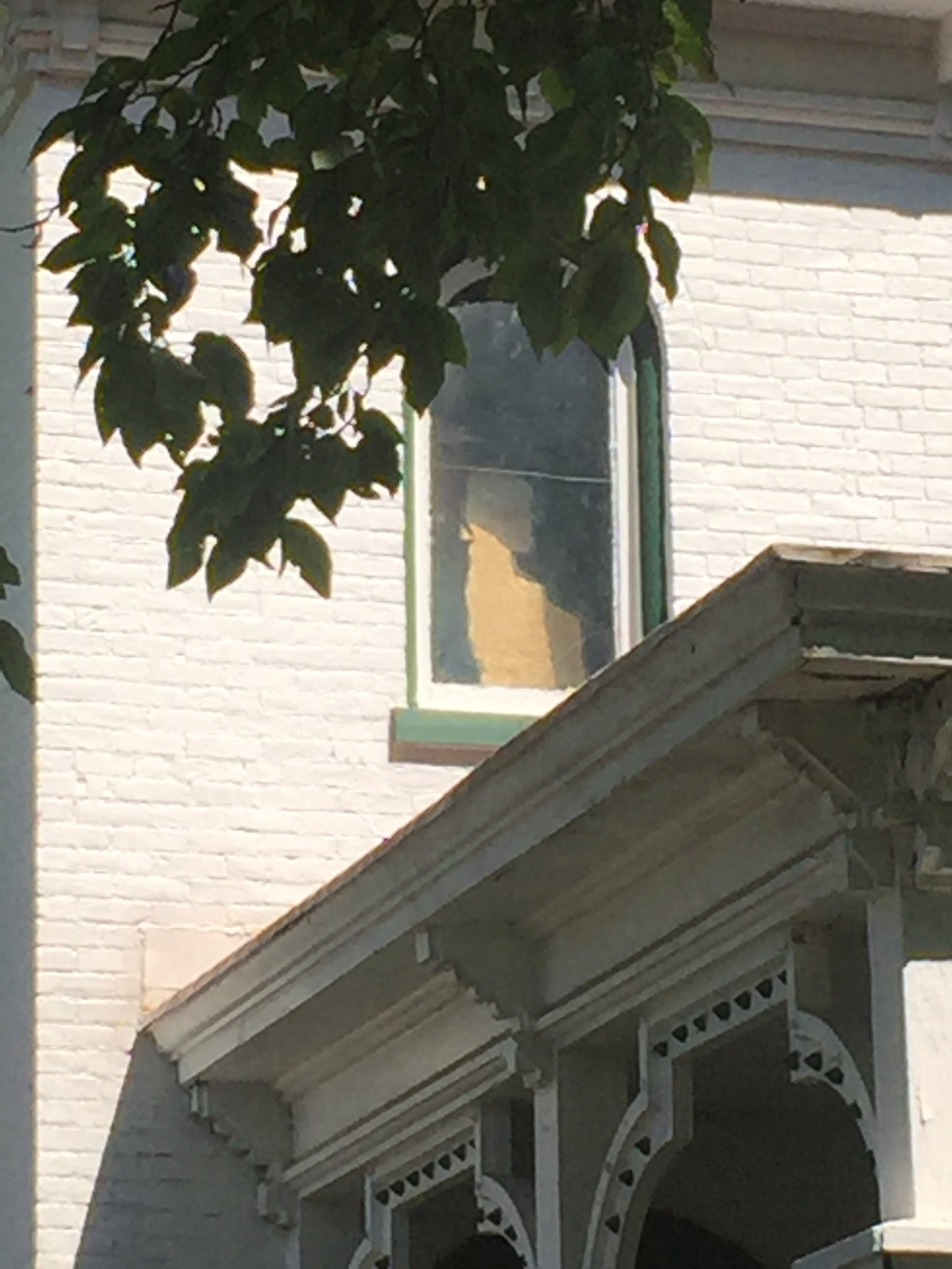
Located at the corner of South Cherry Street and West 9th Street in Russellville Kentucky sets the “Sexton House”. This former caretaker’s house for the nearby Maple Grove Cemetery is the focus of an urban legend concerning a ghostly girl who learned a deadly lesson about blasphemy.
According to local legend in the late 1800’s or early 1900’s a spoiled young girl lived in this house with her family. This young lady was delighted to have scored a date with a very eligible young bachelor and spent a fateful Saturday preparing her hair and attire for the event. Shortly before the young man was due to arrive a terrible thunderstorm rolled and began dumping a torrent of rain on the town of Russellville.
Devastated, the young lady fled to a small second-story room to cry over her hair and dress which would undoubtedly be ruined by the weather. Finally, in a fit of rage she cried out and cursed God for having allowed this sudden storm to ruin her date. In that moment God showed his displeasure with a bolt of lightning that struck that part of the house and instantly killed her.
Obviously the family was beyond grief to find their beloved young daughter dead, but they were equally traumatized to find a ghostly image of the girl etched into the glass either by the lightning or perhaps by supernatural forces. In the coming weeks the family tried many solutions to be rid of this ghostly image. Some sources say they broke out the glass and replaced, but within a matter of weeks the image had formed on the new glass as well. After various other attempts the family finally gave up, and simply painted over the affected glass.
Today that single painted window still hangs on the Sexton house, an eternal reminder of that fateful night.
Want to Experience This Adventure For Yourself?:
The Sexton House can be found here https://goo.gl/maps/jnyXTmZG5gksePi79
Fuyjia Ramen
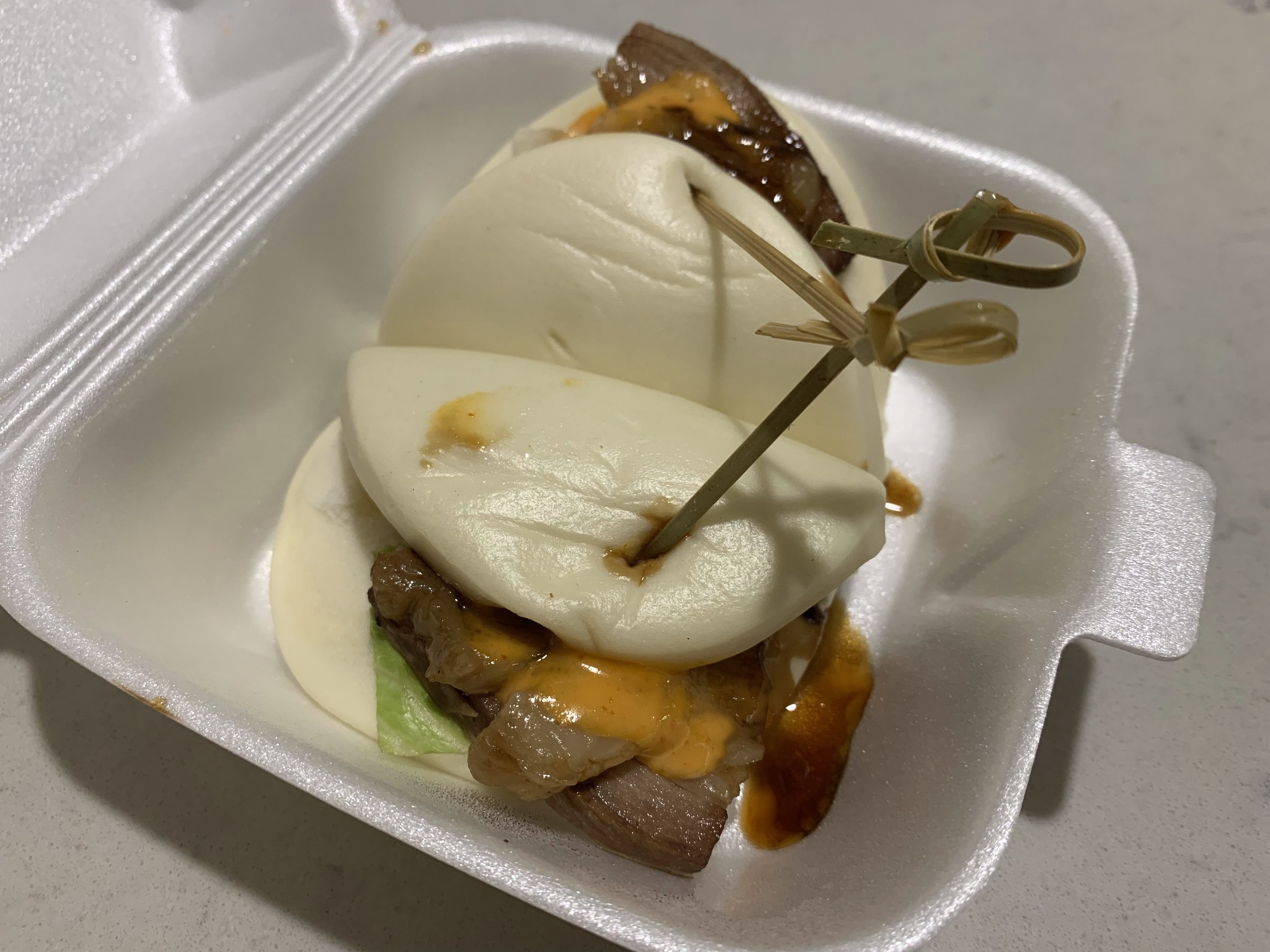
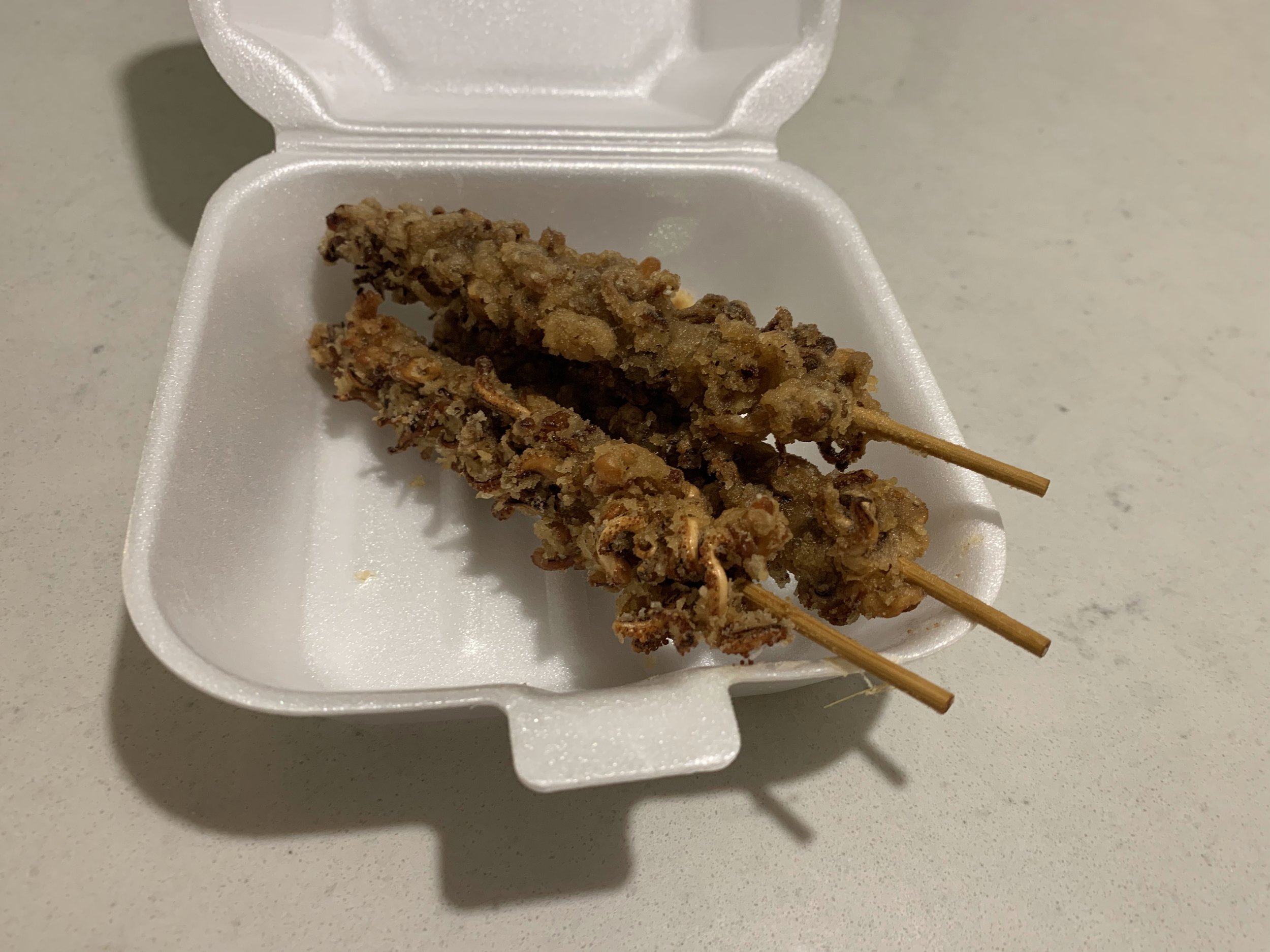
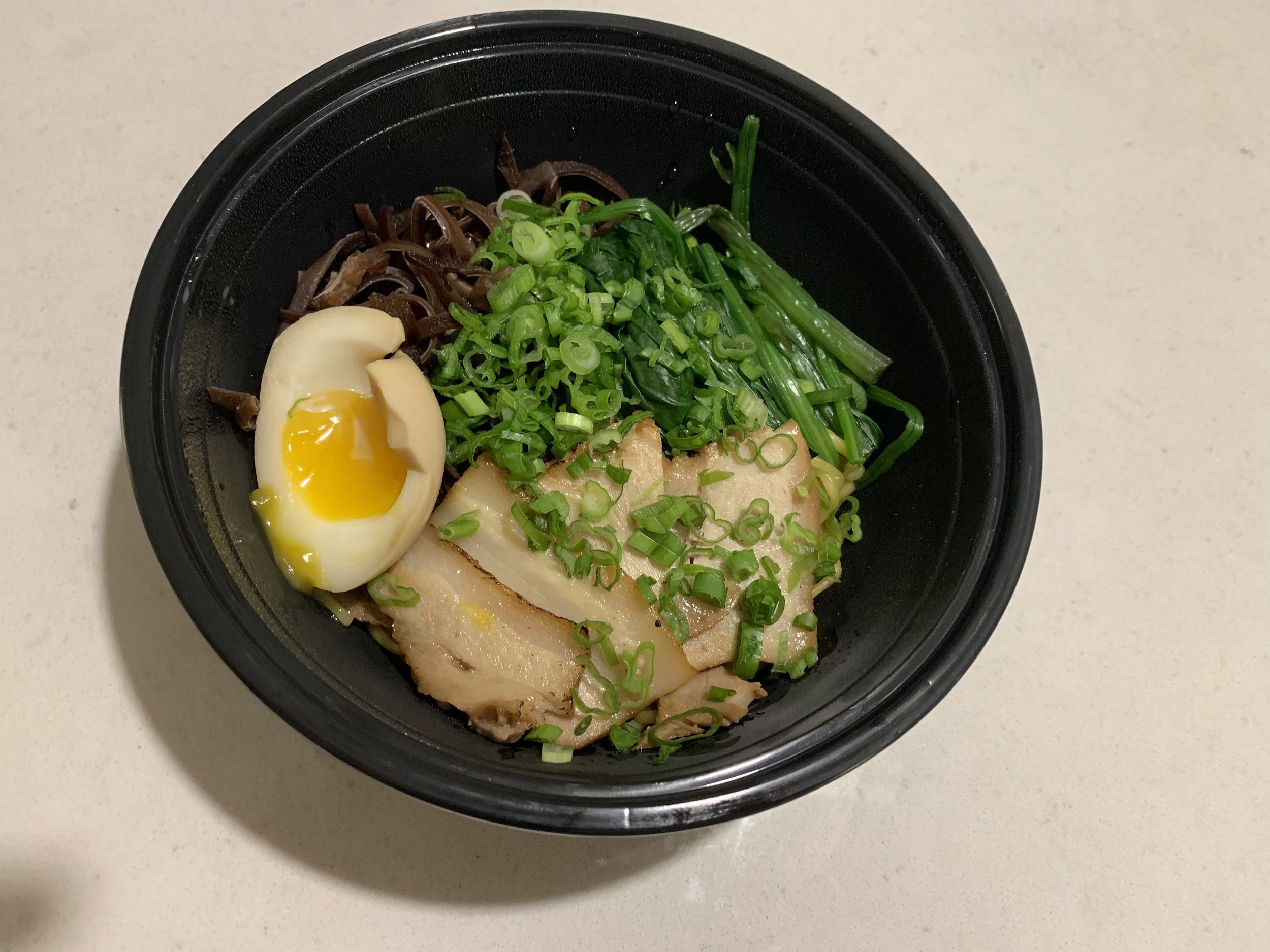
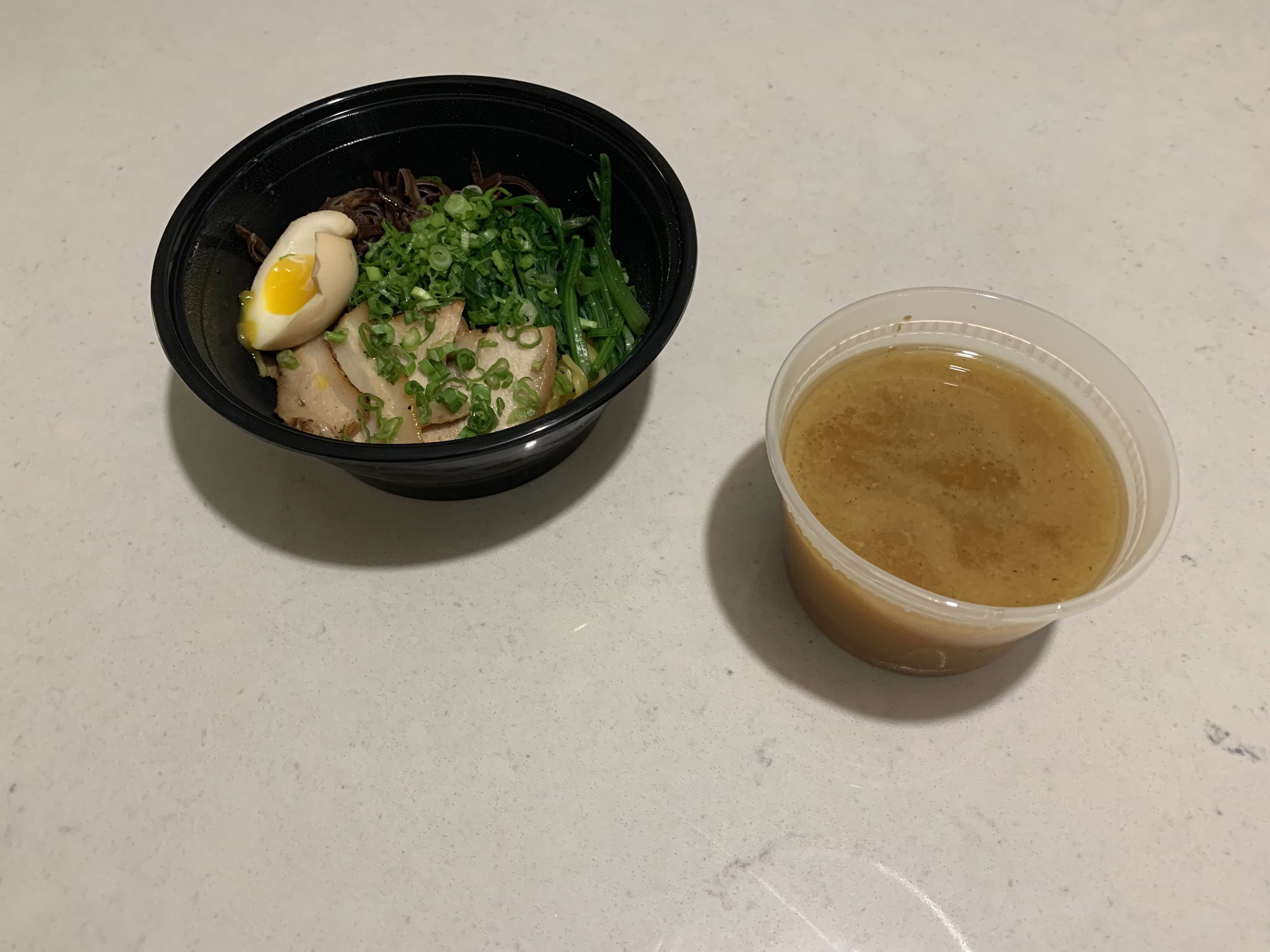
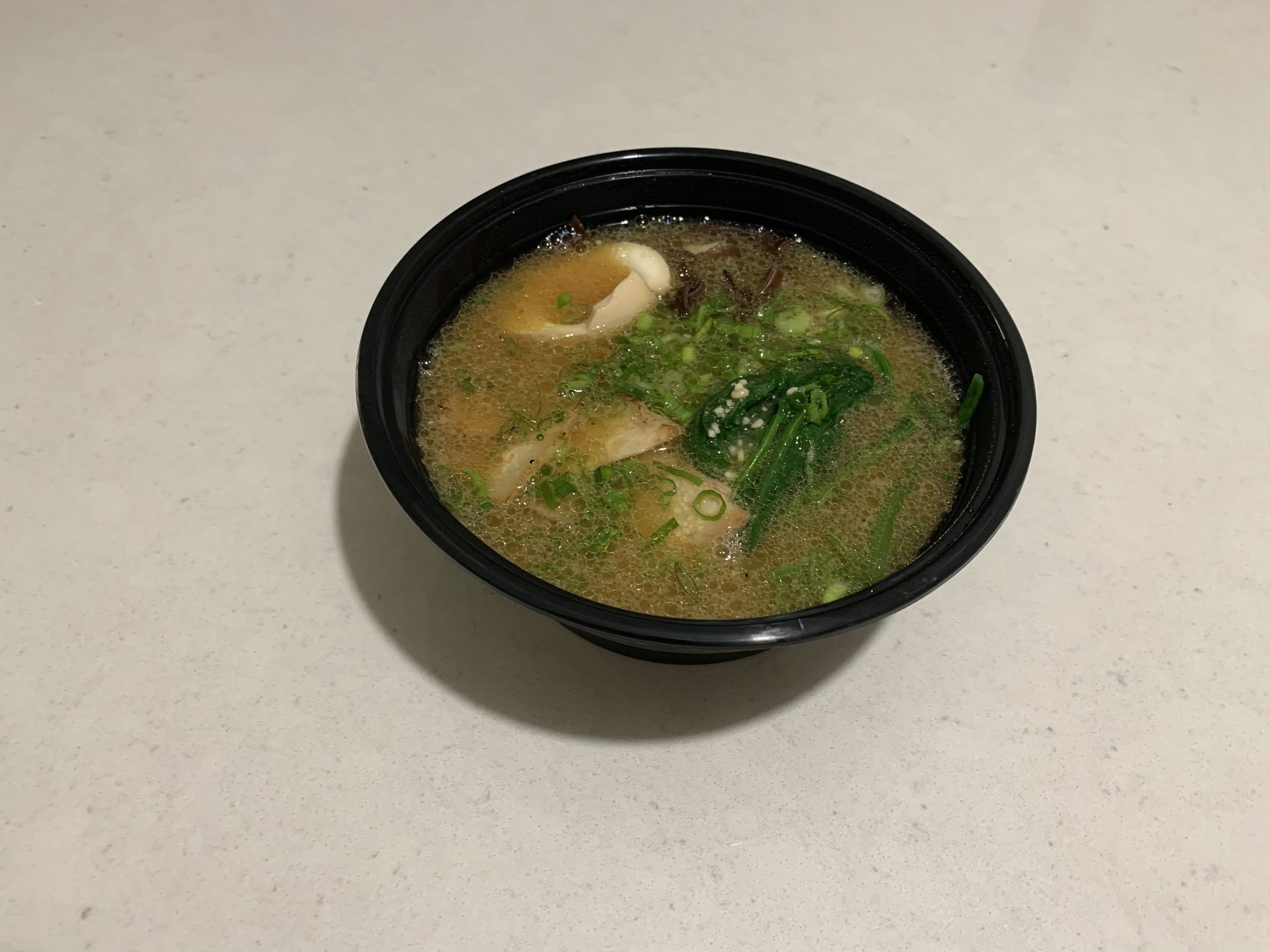


My final night in Pittsburgh after another long day at work. I initially had my mind set on another round of Primanti’s, but after three attempts to order (and 3 cancellations because they were too busy), I finally went looking for alternatives around 9pm. The late hour meant that a lot of places had closed, leaving Uber Eats to give me the perfect recommendation. Enter Fuyjia Ramen.
Japanese food is hands down my favorite cuisine, and ramen is second only to sushi. With my work picking up the tab, I decided to try a wide variety of dishes.
Pork Buns - My first pork bun, and my favorite dish of the night. A slightly slightly sweet bun, filled with delicately seasoned pork belly. Backed by a thin piece of lettuce, and topped with a sweet & tangy Asian barbeque sauce plus Japanese mayo. They come in a pair, and each one is a perfect two-bite dish. The slightly salty pork balances against the sweetness of the bbq and creaminess of the mayo. Meanwhile the bun itself breaks up the whole affair with its own dessert like sweetness. By themselves, I’d wager I could get at least 30.
Squid Karaage (deep-fried squid on a skewer) - This one was a fairly simple dish, but a good example of taking a quality ingredient, treating it simply, and just highlighting what was already great. The batter is a little thicker than tempura, but cooked to crunchy golden brown perfectly. The quick had the slightest bit of chew, but retained enough flavor to hold its own against the batter. It was obviously seasoned just right, straight from the fryer. You get three skewers per order, and my only regret is that it didn’t come with some kind of dipping sauce. I would have loved something bright, like soy and mirin mixed, maybe with a bit of ginger. A missed opportunity to contrast against the heaviness of the fried food, but still a solid dish.
Tonkatsu Ramen - The star dish of the night. I ordered via Uber Eats, so it came in an “assemble your own” style. A large bowl containing a very generous portion of cooked noodles, sliced pork, scallions, greens, and a soft-cooked soy-marinated egg. Then a smaller container filled to the brim with a very succulent broth. Strongly developed flavors, and so much collagen that it formed a layer of oil on top of the container. Lesson learned here, stir up the ingredients before you add the broth. The pre-cooked noodles solidified a bit, and required enough stirring to break up that I slung broth EVERYWHERE. The noodles were fine, providing the substance of the meal, but didn’t bring a ton of flavor to the dish. That said, they were perfectly coated in the broth, and so each bite was a lip smacking pleasure. The bowl also featured a considerable quantity of the sliced pork which was tender but still held up well in the broth. With so much richness in the bowl, the greens provided a welcome earthiness. The large greens had a spinach like quality, with the scallions backing this up with a sharp bite. My favorite part of good ramen bowl though is always the egg. This place not only achieved a perfect “soft cooked” texture with runny yolk, but they actually brined it properly in soy sauce. Each component of this dish was delicious, and yet it still managed to be greater than the sum of its parts.
Oyakodon - This was my first time trying Oyakodon, and I really enjoyed it. Be warned though, if you’re not familiar with the dish, it can be a textural challenge to the American pallet. It starts with a base of slightly sweet rice, that was my honestly my favorite part. It’s then topped with chunks of pork that are seasoned but otherwise left alone to let their natural flavor stand out. There’s a general portion of soft-cooked onions, a small pile of pickled ginger that isn’t quite as tart as your usual gari, and then finally it’s all topped with a very runny egg. If this sounds like a lot, it definitely is, but this weird mish-mash of flavors manages to work somehow. The pork and onions are about as savory as it gets, but the sweetened rice contrasts well. Then every couple of bites you’ll get that punch of ginger that just completely resets your pallet. Meanwhile that runny egg serves as both a source of flavor, and manages to make the rice succulent, almost like the broth slurping off of the noodles in the ramen. If you’re looking to step outside of your comfort zone and try a wild ride of flavors and textures, this is definitely a good dish to try.
Like a lot of ramen places the majority of Fuyija’s dishes are variations of these two main courses I tried tonight. Each one offers a enough variety though, that I really wish that I was in town a couple of more nights to try them all.
Want to Experience This Adventure for Yourself:
815 S Aiken Ave, Pittsburgh, PA 15232, United States
Tent Girl
Barbara’s gravestone. The color difference signifies the original donated headstone on top reflecting the unknown victim, and the newer bottom stone honoring Barbara’s life and legacy.
In May of 1968 the body of a young unidentified woman was found crudely wrapped in a piece of canvas tent material along U.S. Route 25 near Georgetown Kentucky. In spite of extensive public coverage of the case police were unable to determine the identity of the victim, or locate any suspects in the case. The remains would ultimately be buried in the Georgetown Cemetery in 1971 with a donated headstone, under the moniker of “Tent Girl”. Almost 30 years later, in 1998 due to the obsessive efforts of one man, and the availability of DNA testing, the identity of this nameless victim was finally revealed. This is the story of Barbara Ann Hackman.
On May 17th 1968 local man Wilbur Riddle was walking the roadside along Route 25 in search of electrical glass insulators (valued as scrap). Although his role in this story was small, the experience left a profound impact on Mr. Riddle. His emotional burden was so great that he managed to pass it on to his son-in-law Todd Matthews. Although Mr. Matthews lived in almost 200 miles away in Livingston, TN, his growing obsession was fueled by the wealth of information provided by the newly popularized internet.
During his extensive search he happened to stumble across a missing person’s notice for a young woman reported missing in nearby Lexington, Kentucky around the same time as “Tent Girl’s” discovery. The young woman in question had been living in the area with only her husband and young daughter (other family lived out of state), so her report had gone largely unnoticed at the time.
Mr. Matthews reached out to the listed family member of the young woman (now living in Arkansas), and the Georgetown police felt this evidence merited an exhumation of the woman’s remains. After genetic testing against Mrs. Hackman’s now-adult daughter who had moved to Ohio to live with her family, Barbara’s remains were finally identified.
Owing to her long and loving history with the community of Georgetown, the family chose to have her remains reinterred where they had lain for the better part of 3 decades. An additional base-stone was added to the original anonymous tombstone to include her true name. The family did however opt to NOT include her married name. Based on the available evidence including a history of domestic violence, police are all but certain that Barbara’s husband George Earl Taylor was her killer. Unfortunately he passed away from cancer in 1987, escaping all earthly retribution for his heinous crime.
This case has been covered extensively in the “true-crime” circuit of television shows, blogs, and podcasts. This is probably the one adventure we’ve gone on where my wife knew more than me going into. If you are also a true-crime junky, or perhaps just looking to pay your respects to a young woman taken far too early from her young daughter, this gravesite is well worth the trip.
Want to Experience This Adventure for Yourself?
Barbara Ann “Tent Girl” Hackman’s remains are interred in the George Town Cemetery. They are in the south-east section along the fence row, underneath a large tree. The following coordinates should put you almost on top of it.
https://goo.gl/maps/VzkcToEEHQweAJ9P6
